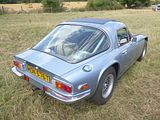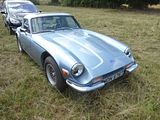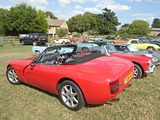For lovers of pre-war cars, this is probably the best event of the year. The VSCC have an extensive program of events that take place at many notable venues around the UK during the course of a year, with this meeting, usually held on the first weekend of August, being the largest of the lot. It is not just the fact that the entire paddock of cars competing for honours on the hill comprises pre-war cars, though even that would yield a display of around 300 historic machines, but many of the spectators choose to come in a car from the period as well. On the Sunday the entirety of the Orchard is reserved for pre-war cars and every year, it is full, with several hundred fabulous cars there to be enjoyed in their own right. You always spot many cars which come year after year but there’s usually some surprises, and more than a few cars from marques that you’ve probably never heard of. Couple this will all the attractions of the Prescott site and there are all the ingredients for something very special indeed. For the past few years I’ve been able to attend on both days and that was the case once again in 2018. Here is what I saw.
THE VSCC CAR PARK
VSCC cars are allocated around half of the Orchard on the Saturday and the entirety of it on the Sunday and the space is always filled with the most amazing array of cars almost all of which have driven to the event, some of them starting out from quite a distance away. Although some people clearly meet up outside the circuit and convoy in, and others do their level best to try keep an area for other cars of the same marque, so you get a mix of car types randomly sequenced and some that are a little more thematic. The field across the road is used as a camp site for the weekend, and I wandered over to see if there were interesting cars that had been left by the tents. There were, so this provided added interest. I spent a large proportion of the weekend meandering amongst these fabulous machines, taking in the splendours of the pre-war motor car.
AC
This is a 1924 Royal 12 HP. It had a disc clutch three speed gearbox in unit and worm axle, and quarter elliptic suspension Originally powered by British Anzani engines but Cubbit were able to build later ones more cheaply. Early models still had two wheel braking, with four wheel brakes becoming available from the mid-1920’s but were still an extra in 1927. The chassis cost was £ 475 in 1921, falling to £ 255 by 1928.
Financial difficulties saw AC taken over by the Hurlock brothers in 1930 and from then on the firm concentrated on sporting cars aimed at the discerning enthusiast. Successful motor dealers, the Hurlocks had bought AC as a means of expanding their existing business and only restarted the manufacturing side in response to customer demand. Existing stocks of spares were used at first but when these began to run out the brothers had no option but to make a fresh start. This they did using a bought-in chassis from Standard, into which went Weller’s six and a conventional ENV gearbox, replacing AC’s traditional three-speed transaxle. The marque’s reputation for producing well engineered and equally well finished cars continued under the Hurlocks’ ownership, enabling AC to prosper despite the higher asking prices that these exemplary standards necessitated. An improved, under-slung chassis of 9′ 7″ wheelbase was adopted for AC’s 1934 range, which was first displayed at the London Motor Show in October 1933. By 1935 a flat radiator with mesh grille had replaced the previous rounded type, only to be superseded for the following season by the classic slatted version. A synchromesh gearbox was standard by this time, while other noteworthy features included automatic chassis lubrication, built-in jacks and Telecontrol shock absorbers, all of which were incorporated in the 16/60hp and 16/70hp models launched in 1936. The combination of a generous wheelbase and low-slung chassis made it possible for the six-cylinder AC to accommodate sports-touring coachwork that was both stylish and comfortable. Among the most elegant was the four-seater sports tourer designed by Freddy March, heir to the Duke of Richmond and Gordon, whose design team was responsible for some of the finest sporting coachwork of the period. Its is believed that fewer than 600 of these standard 16hp cars were built before production ended in 1939, of which only 23 featured ‘Earl of March’ coachwork.
Somewhat similar is this 16/66 2 Litre Ace Sports Four seat tourer from 1933. This car, on chassis L56, is one of a short series of four seat sports cars AC built in 1932 and 1933. Cars were produced for customers on a bespoke basis. It is thought that just 70 of them were built, making it one of the rarest of all AC models. It had a 6 cylinder 66 bhp engine.
ALCYON
Alcyon originated from about 1890 when Edmond Gentil started the manufacture of bicycles in Neuilly, Seine. In 1902, this was complemented by motorcycle production and in 1906, the first cars were shown at the fair “Mondial de l’Automobile” in Paris, France. Also in 1906 it founded the professional Alcyon cycling team which was active until 1955, including winning the Tour de France 6 times. In 1912 Alcyon competed at the Isle of Man TT races with a 348cc single-cylinder engine featuring two inlet valves and two exhaust valves. Both bikes failed to finish the Junior TT race. Alcyon had local success in France during the 1920s, with riders such as Marc Jolly, Marcel Mourrier, Jean Durand and Lucien Lemasson winning races. During this time too, this bicycle brand got its nickname “l’intrépide Alcyon”. Two models were shown in 1906, one a two-seat light car with single-cylinder 950 cc engine and a larger four seat model with 1.4-litre four-cylinder engine. Both engines were bought in from Gentil. The cars were advanced models with 3-speed gearboxes and shaft drive. However, the single-cylinder models were dropped in 1912 and larger models of up to 2120 cc were added to the range. By then, most of the engines were obtained from Zurcher. The company moved to Courbevoie, Seine in 1912. In 1914, the company’s name was changed to Automobiles Alcyon. After the war, the first model was a 1914 cc four-cylinder model, some examples of which were tuned and sold by the Lyons agent as Alycon-GLs and performed quite well in competition. However, the car was not a success and did not sell well, so in 1923, Alcyon moved into the production of cyclecars, using 500 cc two-stroke flat-twin engines in a design bought from SIMA-Violet. Later the company manufactured another cyclecar of similar design, thought this one featured a single-cylinder engine. This proved a complete flop, and the company failed in 1928. Alcyon never sold cars again. In 1954 Peugeot absorbed Alcyon.
ALFA ROMEO
My love of pre-war Alfa Romeo is well documented on this site so I always hope to find examples here, and it is rare that I am disappointed. Sure enough there were a number of these splendid cars with engines that are a work of art in their own right, as well as a competition history that set the marque up for the popularity it still enjoys.
There were a couple of the 6C 1750 cars here. In the mid-1920s, Alfa’s RL was considered too large and heavy, so a new development began. The 2-litre formula that had led to Alfa Romeo winning the Automobile World Championship in 1925, changed to 1.5-litre for the 1926 season. The 6C 1500 was introduced in 1925 at the Milan Motor Show and production started in 1927, with the P2 Grand Prix car as starting point. Engine capacity was now 1487 cc, against the P2’s 1987 cc, while supercharging was dropped. The first versions were bodied by James Young and Touring. In 1928, a 6C Sport was released, with a dual overhead camshafts engine. Its sport version won many races, including the 1928 Mille Miglia. Total production was 3000 (200 with DOHC engine). Ten copies of a supercharged (compressore, compressor) Super Sport variant were also made. The more powerful 6C 1750 was introduced in 1929 in Rome. The car had a top speed of 95 mph, a chassis designed to flex and undulate over wavy surfaces, as well as sensitive geared-up steering. It was produced in six series between 1929 and 1933. The base model had a single overhead cam; Super Sport and Gran Sport versions had double overhead cam engines. Again, a supercharger was available. Most of the cars were sold as rolling chassis and bodied by coachbuilders such as Zagato, and Touring. Additionally, there were 3 examples built with James Young bodywork. In 1929, the 6C 1750 won every major racing event it was entered, including the Grands Prix of Belgium, Spain, Tunis and Monza, as well as the Mille Miglia was won with Giuseppe Campari and Giulio Ramponi, the Brooklands Double Twelve and the Ulster TT was won also, in 1930 it won again the Mille Miglia and Spa 24 Hours. Total production was 2635.
Also here was an example of the more potent 8C 2300, this one a 1933 8C 2300 Corto Touring Spider, belonging to Paul Gregory. Heart of this car, which followed the 6 cylinder 6C 1750 cars, was its 8 cylinder engine, hence the 8C name. designed by Vittorio Jano, this straight 8 unit was Alfa Romeo’s primary racing engine from its introduction in 1931 to its retirement in 1939. In addition to the two-seater sports cars it was used in the world’s first genuine single-seat Grand Prix racing car, the Monoposto ‘Tipo B’ – P3 from 1932 onwards. In its later development it powered such vehicles as the twin-engined 1935 6.3-litre Bimotore, the 1935 3.8-litre Monoposto 8C 35 Type C, and the Alfa Romeo 8C 2900B Mille Miglia Roadster. It also powered top-of-the-range coach-built production models, including a Touring Spider and Touring Berlinetta. The 8C 2300 was the first model to use it, appearing in 1931. It enjoyed huge success racing. The 8C 2300 Spider, driven by Tazio Nuvolari won the 1931 and 1932 Targa Florio race in Sicily, the 1931 Italian Grand Prix victory at Monza gave the “Monza” name to the twin seater GP car, a shortened version of the Spider. The Alfa Romeo factory often added the name of events won to the name of a car. So, the 8C 2300 tipo Le Mans’ was the sport version of the ‘8C 2300’, with a super-charged engine. It had a successful debut in the 1931 Eireann Cup driven by Henry Birkin. It won the 24 Hours of Le Mans in 1931 (Howe-Birkin); 1932 (Chinetti-Sommer); 1933 (Nuvolari-Sommer) and 1934 (Chinetti-Etancelin). Initially, Alfa Romeo announced that the 8C was not to be sold to private owners, but by autumn 1931 Alfa sold it as a rolling chassis in Lungo (long) or Corto (short) form with prices starting at over £1000. The chassis were fitted with bodies from a selection of Italian coach-builders (Carrozzeria) such as Zagato, Carrozzeria Touring, Carrozzeria Castagna, Pininfarina and Brianza, even though Alfa Romeo did make bodies. Some chassis were clothed by coach-builders such as Graber, Worblaufen and Tuscher of Switzerland and Figoni of France. Alfa Romeo also had a practice of rebodying cars for clients, and some racing vehicles were sold rebodied as road vehicles. Some of the famous first owners include Baroness Maud Thyssen of the Thyssen family, the owner of the aircraft and now scooter company Piaggio Andrea Piaggio, Raymond Sommer, and Tazio Nuvolari. This car has quite some history as it has been a Diplomat’s super car and a playboy’s racer in it’s life and has been brought back to it’s former glory from an Arizona barn find box of bits. It was finished just ahead of and shown at the GRRC in September 2014. Born as a long-chassis cabriolet with body by Castagna it was powered by a supercharged 2.3-litre straight eight. It was owned by an Italian diplomat who took it to America with him, where it was sold to the playboy racer Tommy Lee. Subsequent owners weren’t respectful of its Italian power-plant, which was replaced with a Cadillac V8, generally destroying the car! It also had 400 holes drilled in the chassis to lighten it. The beautiful Alfa became a hybrid hot rod, not an uncommon fate in the US at the time. It was subsequently hidden away in shed in Tucson, Arizona, until a chance “˜barn find” by an American enthusiast who stripped out all the original Alfa parts. He was just about to pass them over to renowned Alfa specialist Jim Stokes in Waterlooville for restoration when the American owner was shot dead by his janitor! Paul bought the parts and had them shipped over to Jim, who commenced rebuilding and restoring it in 2011. According to the GRRC website, Paul had had Alfas for years but had always hankered after an 8C, all that held him back was the cost. This project was the only affordable way according to Paul. The car has been recreated as a replica of a Touring of Milan-bodied open tourer 8C“ not how chassis 229 began it’s life, but period correct. Paul ensured its accuracy by photographing and carefully measuring an original Touring-bodied 8C in Italy. It is not a matching numbers car. as it has a Jim Stokes engine (the original is in an 8C in Australia), the body has been made in Britain and the chassis holes are now filled, but with the weld marks showing, to preserve the history of this car. As a Jim Stokes car (a world leading 8C engineer) the car has a fascinating story, great quality with a great exhaust note. It is indeed a very special thing. And the best thing is that Paul uses it wherever possible, and had taken it to numerous events since completion of the rebuild. Fabulous!
ALVIS
There were probably more Alvis models here than any marque other than Riley. A lot of them were versions of the 12/50 and 12/60 models.
This elegant car is a Speed 25 from 1938. The Alvis 4.3-litre and Alvis Speed 25 were luxury touring cars announced in August 1936 and made until 1940 by Alvis Car and Engineering Company in Coventry. They replaced the Alvis Speed 20 2.8-litre and 3½-litre. They were widely considered one of the finest cars produced in the 1930s. The Speed Twenty’s 2½-litre, 2.8-litre or 3½-litre engines with four main bearings were replaced in the 4.3-litre and 3½-litre Speed Twenty-Five with a strengthened new designed six-cylinder in-line unit now with seven main bearings. For the 3½-litre version an output of 110 PS at 3,800 rpm was claimed (and proven) along with a top speed of almost 160 km/h (100 mph). It propelled the occupants at high speed in exceptional luxury accompanied by the attractive sound of a powerful deep and throaty exhaust. Its beauty is also confirmed as it is the only car to win the prestigious Ladies Choice VSCC Oxford Concourse prize two years in a row. The clutch, flywheel and crankshaft were balanced together, which minimised vibration. The cylinder head was of cast iron but the pistons were of aluminium. Two electric petrol pumps fed the three SU carburettors, which were protected by a substantial air filter. A new induction system incorporated an efficient silencing device. Rear springs were 15 inches longer than in the previous model. The brakes had servo assistance. Alvis did not make any of the bodies for the Speed 25. The cars were supplied in chassis form and firms such as Cross & Ellis (standard tourer) Charlesworth (standard saloon and Drop Head Coupé) as well as Vanden Plas, Lancefield, Offord and others would fit suitably elegant open touring or saloon car bodies. The car was built on a heavy steel chassis with a substantial cross brace. With its sporty low slung aspect, all-synchro gearbox, independent front suspension and servo-assisted brakes, this was a fast, reliable and beautifully made car, although at almost £1000 it was not cheap. The survival rate for what was after all a hand-built car is surprisingly good. Later models featured increased chassis boxing, and to reduce the car’s weight Alvis cut numerous holes in the chassis box sections, which was also a solution tried less successfully earlier in the decade by Mercedes-Benz when confronting the same challenge with their enormously heavy Mercedes-Benz SSKL. Minor improvements to both cars announced at the October 1938 Motor Show included a dual exhaust system said to quieten the engine and improve power output. From the show the press reported the 4.3-litre four-door sports saloon to have “a most imposing front with very large headlamps, fog and pass lights, and post horns.” A chassis for bespoke bodywork was still listed but a range of standard coachwork was made available. On the standard four-door saloon there were no running boards and the wings were streamlined. The luggage locker was lined in white rubber. Dunlopillo upholstery eased muscular fatigue. The rake of both the driver’s seat and its squab were now easily adjustable. There was a system of no-draught ventilation. The double sliding roof might be opened from either back or front seat. There were twin tuned electric horns and twin electric windscreen wipers. The instrument panel included a revolution counter and there were ashtrays and a smoker’s companion. There were to be only detail changes for 1940.
AMILCAR
From 1921 to 1937, Amilcar was a successful French sports-racing car manufacturer. These diminutive cars dominated the 1,100-cc racing class into 1927; this one placed second overall in the Brooklands J.C.C. 200-mile race, trumping numerous 1.5-litre Bugattis. It even won its first competition event, the 24-hour test of endurance held on a 3-mile circuit in the Forest of St. Germain. Weighing just 850 lb, the CGSS has an 1,100-cc supercharged four yielding about 35 hp.
ASTON MARTIN
Every year there is a great collection of Aston Martin models from the 1930s, and the owners of many of these clearly do arrange to meet up outside the venue and convoy in together, as the majority of these fabulous cars do end up parked next to each other. Most numerous among them were the 1.5 litre and International cars of the early 1930s.
This is known as the Headlam Coupe. Back in 1930, it was much easier to have your own special body made as when you bought a quality car, you were in fact just buying a rolling chassis and engine. With the coachbuilding workshops of E. Bertelli conveniently situated next door to the Aston Martin factory, most cars went straight there to receive a standard body. But as if to prove that E. Bertelli weren’t just knocking out multiple copies of the same body, they constructed this achingly beautiful fixed head coupe on a short chassis for the wealthy Whitby ship owner, W.S.Headlam. Following an extensive restoration, the car was first seen at the head of the St. Georges Day Aston Martin parade in April 2005. The coachwork is finished in the correct original colour of black and still has the polished waist level strip all along the bonnet, doors and above the rear wing.
This looks like an Ulster, but is in fact a replica, one of 7 made in 1987 by Fergus Engineering.
There were plenty of the 15/98 model here. This was Aston Martin’s standard model from 1936 onward. It was built in both short chassis and LWB form. Both models were named after their RAC power rating of 15 and an actual output of 98 bhp. Initially launched as a four-seat tourer Aston Martin’s prepared a shorter 15/98 short chassis to spur on sales. Some were fitted with occasional back seats and others were strictly 2-seat roadsters. The car retained Aston’s 2-litre engine which was capable of nearly 100 bhp. This was the same unit developed for the 1936 Le Mans team cars, but converted to wet-sump lubrication. Most of the roadsters were bodied by Abbey Coachworks in London while the sedans and coupes were handled by E. Bertelli Ltd. In either configuration the complete car was £575 and £475 in 1938 to sell unsold examples. Around 100 were made.
AUSTIN
There were numerous examples of the popular Seven here, reflecting the model’s popularity and its good survival rate. Herbert Austin’s masterpiece which did much to put Britain on wheels in the 1920s was first seen in 1922, as a four seat open tourer. Nicknamed Chummy, the first 100 featured a 696cc four cylinder engine, which was quickly upgraded to the 747cc unit that remained until the end of production some 17 years later. The first cars had an upright edge to the doors and a sloping windscreen, but from 1924, the screen became upright and there was a sloping edge to the doors, as well as a slightly longer body. Stronger brakes came along in 1926, along with a slightly taller nickel-plated radiator grille, conventional coil ignition, a more spacious body and wider doors. An even longer and wider body arrived in 1930, as well as a stronger crankshaft and improvements to the brakes which coupled front and rear systems together so they both worked by the footbrake. In 1931 the body was restyled , with a thin ribbon-style radiator and by 1932 there was a four speed gearbox to replace the earlier three-speeder. 1933 saw the introduction of the Ruby, a car that looked more modern with its cowled radiator. There were also Pearl and Opal versions. Development continued, so in 1937 there was a move to crankshaft shell bearings in place of the white metal previously used, and the Big Seven appeared. The last Seven was made in 1939, by which time 290,000 had been produced. Aside from saloons and tourers, there had been vans and sports derivatives like the Le Mans, the supercharged Ulster and the rather cheaper Nippy. Around 11,000 Sevens survive today.
Sitting above it in the range was the Ten, a model which Austin had launched in 1932, to plug the gap between the diminutive Seven and the larger Twelve models in their range which had been updated in early 1931. The Ten became the marque’s best seller and was produced, in a number of different versions through to 1947. A number of improvements were made to the car in the months following launch, but it was for 1937 when the first really big change came about with the launch of the almost streamlined Cambridge saloon and Conway cabriolet. Compared with the preceding cars, the passengers and engine were positioned much further forward, the back seat now being rather forward of the back axle. There were six side windows like the Sherborne and the quarter lights were fixed. Again like the Sherborne the forward doors opened rearwards. At the back there was now a compartment large enough to take a trunk as well as more luggage on the open compartment door when it was let down. A new smoother single plate spring-drive clutch was now fitted, the two friction rings carried by the centre plate were held apart by leaf springs. Other changes included Girling brakes with wedge and roller shoe expansion and balance lever compensation using operating rods in tension with automatic compensation between front and rear brakes all four of which might be applied by hand or foot. Drums were now 9 inches diameter. 16-inch steel disc wheels replaced the 18-inch wires. Top speed from the 1141cc engine rose to 60 mph.
This a 1926 Clifton Tourer, part of the Austin Twelve range introduced by Austin in 1921. It was the second of Herbert Austin’s post World War I models and was in many ways a scaled-down version of his Austin Twenty, introduced in 1919. The slower than expected sales of the Twenty brought about this divergence from his intended one-model policy. The Twelve was announced at the beginning of November 1921 after Austin’s company had been in receivership for six months. The number twelve refers to its fiscal horse power (12.8) rather than its bhp which was 20 and later 27. The long-stroke engines encouraged by the tax regime, 72 x 102 later 72 x 114.5, had much greater low-speed torque than the bhp rating suggests. Initially available as a tourer, by 1922 three body styles were offered: the four-seat tourer, the two/four-seater (both at 550 GBP) and the coupé at 675 GBP. The car enjoyed success throughout the vintage era with annual sales peaking at 14,000 in 1927. While the mechanical specification changed little (the engine increased from 1661 cc to 1861 cc in 1926), many body styles were offered with saloons becoming more popular as the twenties drew to a close. The car continued in the Austin catalogue and as a taxi option until 1939. The last cars were produced for the War Department in 1940. After the early thirties the car was referred to by the public as the Heavy Twelve to distinguish it from the other, newer, 12HP cars in the Austin catalogue Light Twelve-Four, Light Twelve-Six etc. and received some updating. The artillery style wheels were replaced by wire wheels in 1933 and coil ignition replaced the magneto in 1935. The gearbox was provided with synchromesh between its top two ratios in 1934. The factory catalogued body range was steadily updated with the last of the no longer fashionable Weymann style fabric-covered cars in 1931 and no open tourers after 1934.
BENTLEY
Oldest of the models present were a number of the 3 and 4.5 litre cars that were produced in the 1920s and which epitomise the classic Bentley to many people. The 3 Litre was the company’s first model, first shown in 1919 and made available to customers’ coachbuilders from 1921 to 1929. It was conceived for racing. The Bentley was very much larger than the 1368 cc Bugattis that dominated racing at the time, but double the size of engine and strength compensated for the extra weight. The 4000 lb (1800 kg) car won the 24 Hours of Le Mans in 1924, with drivers John Duff and Frank Clement, and again in 1927, this time in Super Sports form, with drivers S. C. H. “Sammy” Davis and Dudley Benjafield. Its weight, size, and speed prompted Ettore Bugatti to call it “the fastest lorry in the world.” The 3 Litre was delivered as a running chassis to the coachbuilder of the buyer’s choice. Bentley referred many customers to their near neighbour Vanden Plas for bodies. Dealers might order a short cost-saving run of identical bodies to their own distinctive design. Most bodies took the simplest and cheapest form, tourers, but as it was all “custom” coachwork there was plenty of variation. The 2,996 cc straight-4 engine was designed by ex-Royal Flying Corps engineer Clive Gallop and was technically very advanced for its time. It was one of the first production car engines with 4 valves per cylinder, dry-sump lubrication and an overhead camshaft. The four valve SOHC Hemi design, with a bevel-geared shaft drive for the camshaft, was based on the pre-war 1914 Mercedes Daimler M93654 racing engine. Just before the outbreak of the war Mercedes had placed one of the winning Grand Prix cars in their London showroom in Long Acre. At the suggestion of W.O. Bentley, then being commissioned in the Royal Naval Air Service, the vehicle was confiscated in 1915 by the British army, dismantled at Rolls-Royce and subjected to scrutiny. A notable difference to both the Mercedes and the aero engines was the cast-iron monobloc design, and the fully Aluminium enclosed camshaft, which greatly contributed to its durability. But having the valve-head and block in one-piece made for a complicated and labour intensive casting and machining. This was a feature shared during that time by the Bugattis which the car was later to compete with. The engine was also among the first with two spark plugs per cylinder, pent-roof combustion chambers, and twin carburettors. It was extremely undersquare, optimised for low-end torque, with a bore of 80 mm and a stroke of 149 mm. Untuned power output was around 70 hp, allowing the 3 Litre to reach 80 mph. he Speed Model could reach 90 mph; the Super Sports could exceed 100 mph. A four-speed gearbox was fitted. Only the rear wheels had brakes until 1924, when four-wheel brakes were introduced. There were three main variants of the 3 litre and they became known by the colours commonly used on the radiator badge. There was a definite rule controlling badge colours but astonishingly it has since been established that given “special circumstances” the factory would indeed supply a “wrong” colour. Blue label was the standard model with 117.5 in wheelbase from 1921 to 1929 or long 130.0 in wheelbase from 1923 to 1929. The Red label used a 5.3:1 high compression engine in the 117.5 in wheelbase chassis and was made from 1924 to 1929. The Green label was made between 1924 and 1929 and was the high performance model with 6.3:1 compression ratio and short 108 in wheelbase chassis. 100 mph performance was guaranteed. As well as 3 Experimental cars, Bentley produced 1088 examples of the 3 litre, and the Speed Model numbered 513 and there were 18 Super Sports.
There were a number of examples of what are known as the “Derby” models. These were produced after the acquisition of Bentley by Rolls-Royce, in 1934, at which point the focus of the brand shifted to the production of large and elegant tourers. The cars retained the famous curved radiator shape based on earlier Bentley models, but in all meaningful respects they were clearly Rolls-Royces. Although disappointing some traditional customers, they were well received by many others and even W.O. Bentley himself was reported as saying that he would “rather own this Bentley than any other car produced under that name.” The Rolls-Royce Engineer in charge of the development project, Ernest Hives (later Lord Hives), underlined the Rolls-Royce modus operandi in a memo addressed to company staff “our recommendation is that we should make the car as good as we know how and then charge accordingly.” At a time when the Ford 8 could be purchased new for £100, an early Bentley 3½ Litre cost around £1,500 (equivalent to £6400 vs. £96,000 today), putting it beyond the reach of all but the wealthiest consumers. Despite not being a car of remarkable outright performance, the car’s unique blend of style and grace proved popular with the inter-war elite and it was advertised under the legend the silent sports car. Over 70% of the cars built between 1933 and 1939 were said to have still been in existence 70 years later. Although chassis production ceased in 1939, a number of cars were still being bodied and delivered during 1940. The last few were delivered and first registered in 1941. The 3.5 litre came first. Based on an experimental Rolls-Royce project “Peregrine” which was to have had a supercharged 2¾ litre engine, the 3½ Litre was finally fitted with a less adventurous engine developed from Rolls’ straight-6 fitted to the Rolls-Royce 20/25. The Bentley variant featured a higher compression ratio, sportier camshaft profile and two SU carburettors on a crossflow cylinder head. Actual power output was roughly 110 bhp at 4500 rpm, allowing the car to reach 90 mph. The engine displaced 3669 cc with a 3¼ in (82.5 mm) bore and 4½ in (114.3 mm) stroke. A 4-speed manual transmission with synchromesh on 3rd and 4th, 4-wheel leaf spring suspension, and 4-wheel servo-assisted mechanical brakes were all common with other Rolls-Royce models. The chassis was manufactured from nickel steel, and featured a “double-dropped” layout to gain vertical space for the axles and thus keep the profiles of the cars low. The strong chassis needed no diagonal cross-bracing, and was very light in comparison to the chassis built by its contemporary competitors, weighing in at 2,510 pounds (1,140 kg) in driveable form ready for delivery to the customer’s chosen coachbuilder. 1177 of the 3½ Litre cars were built, with about half of them being bodied by Park Ward, with the remainder “dressed” by other coachbuilders like Barker, Carlton, Freestone & Webb, Gurney Nutting, Hooper, Mann Egerton, Mulliner (both Arthur and H J), Rippon, Thrupp & Maberly, James Young, Vanden Plas and Windovers in England; Figoni et Falaschi, Kellner, Saoutchik and Vanvooren in Paris; and smaller concerns elsewhere in UK and Europe. Beginning in March, 1936, a 4¼ Litre version of the car was offered as replacement for the 3½ Litre, in order to offset the increasing weight of coachwork and maintain the car’s sporting image in the face of stiff competition. The engine was bored to 3½ in (88.9 mm) for a total of 4257cc. From 1938 the MR and MX series cars featured Marles steering and an overdrive gearbox. The model was replaced in 1939 by the MkV, but some cars were still finished and delivered during 1940-1941. 1234 4¼ Litre cars were built, with Park Ward remaining the most popular coachbuilder. Many cars were bodied in steel rather than the previous, more expensive, aluminium over ash frame construction.
BMW
The Historic BMW Car Club are staunch supporters of this venue and event have mounted very impressive displays of early BMW models in previous years. There were fewer here, but they were still representative of the sort of models that were available in the 1930s. There is a linkage here to the British marque Frazer Nash, of course. Frazer Nash was, of course, a marque in its own right, making small chain driven sports cars, with proprietary engines which enjoyed much sporting success, including the prestigious Coupe des Alpes. By the mid 1930s, though, their design with beam axles and a channel section chassis was limiting their performance. Things came to a head in 1934, when immediately after their cars were beaten in the 1934 Coupe des Alpes by a trio of BMW 315 2 seaters, the then Company owner, manager and works driver, HJ Aldington, went straight to the BMW factory in Munich to negotiate the importation of right hand drive versions of the cars which had defeated his own. An agreement was struck and announced in December 1934 for the cars to be called Frazer Nash BMWs. Aldington brought back a 315 two seater sports cars to the UK, still in left hand drive form. Registered BMP844, this was one of the actual Alpine Trial Team cars. Many more 315s and the outwardly similar 319s would follow, and several of these were on show.
Although it was the 2 seater sports 315 that had piqued HJ Aldington’s interest, there were plenty of other models in the range, which, ironically, had grown largely as a result of the Bavarian company making British cars under licence, with the Austin Seven based Dixi some years earlier. The first right hand drive cars that came in were the 315 and 319 saloon models, These looked the same and were supplied with a mix of 1.5 and 2.0 litre engines, some with two and some with three carburettors, all with iron heads and vertical valves. By this time production of the chain driven Frazer Nash cars had ceased as the advantages of BMW’s design were indisputable, with outstanding ride and road holding for their day. This was thanks to a stiff tubular chassis, independent front suspension and rack and pinion steering. The early cars – 315, 319 and 329 – had cable brakes and a 6 volt electrical system. Later models had a box chassis with semi-elliptic rear springs. Many of the early cars had aluminium panels over ash frames, but later cars would have all steel bodies. All had the benefit of a foot operated one-shot chassis oil lubrication system. The cars were very advanced compared to what else was on the market at the time, but they were expensive. Even so, more than 700 cars were brought into the UK before the Second World War.
During the 1930s, new models continued to be added to the range, with the 326 Saloon and the 327/80 drophead coupe being particularly stylish. Around 60 cars came to the UK in chassis form and were bodied by various English coachbuilders, in particular Abbots of Farnham, Whittingham & Webb with a 326 Saloon by Freestone & Webb and a 320 Saloon by Midland Motor Bodies. These English bodies came in both open and closed versions.
Also here was the 328, a sports car made between 1936 and 1940, with the body design credited to Peter Szymanowski, who became BMW chief of design after World War II (although technically the car was designed by Fritz Fiedler). It had a 1971cc straight 6 OHV engine and 3 solec carburettors which gave it an output of 79 bhp at 5000 rpm, and a top speed of 150 km/h, making this relatively light car ideal for motorsport. The 328 was introduced at the Eifelrennen race at the Nürburgring in 1936, where Ernst Henne drove it to win the 2.0 litre class. The 328 had more than 100 class wins in 1937, including the RAC Tourist Trophy, the Österreichische Alpenfahrt, and the La Turbie hillclimb. In 1938, the 328 won its class at Le Mans, the RAC Tourist Trophy, the Alpine Rally, and the Mille Miglia. The 328 won the RAC Rally in 1939 and came in fifth overall and first in class in the 1939 24 Hours of Le Mans. The car continued its competition career after the war, with Frank Pratt winning the 1948 Australian Grand Prix driving a 328.
BUGATTI
Prescott is the home of the Bugatti Owners Club, so it was no surprise to find the marque so well represented with a great variety of different models present.
The Type 13 was the first real Bugatti car. The Bugatti automobile had been prototyped as the Type 10 in Ettore Bugatti’s basement in 1908 and 1909 while he was chief engineer at Deutz Gasmotoren Fabrik in Cologne, Germany. The Type 10 used a monobloc straight-four engine of Ettore’s own design. it was an overhead cam unit with 2 valves per cylinder, highly advanced for the time. A very-undersquare design, it had a 60 mm bore and 100 mm stroke for a total of 1131 cc. This was attached to an open roadster body with solid axles front and rear. Leaf springs suspended the front with no suspension at all in the rear. Cables operated rear drum brakes. On ending his contract with Deutz, Ettore loaded his family into the Type 10 and headed to the Alsace region, then still part of the German Empire looking for a factory to begin producing cars of his own. After World War I, Alsace became a part of France again, of course. The prototype car was preserved and nicknamed “la baignoire” (“the bathtub”) by the staff at Molsheim in later years due to its shape. Ettore restored it in 1939 and repainted it an orange-red color, earning it a new nickname, “le homard” (“the lobster”). It was moved to Bordeaux for the duration of World War II and remained there for decades before falling into private ownership. Today, the car is in California in the hands of a private collector. Upon starting operations at his new factory in Molsheim, Bugatti refined his light shaft-driven car into the Type 13 racer. This included boring the engine out to 65 mm for a total of 1368 cc. A major advance was the 4-valve head Bugatti designed — one of the first of its type ever conceived. Power output with dual Zenith Carburettors reached 30 hp at 4500 rpm, more than adequate for the 660 lb (300 kg) car. Leaf springs were now fitted all around, and the car rode on a roughly 79 in wheelbase. The new company produced five examples in 1910, and entered the French Grand Prix at Le Mans in 1911. The tiny Bugatti looked out of place at the race, but calmly took second place after seven hours of racing. World War I caused production to halt in the disputed region. Ettore took two completed Type 13 cars with him to Milan for the duration of the war, leaving the parts for three more buried near the factory. After the war, Bugatti returned, unearthed the parts, and prepared five Type 13s for racing. By the time production of the model ceased in 1920, 435 examples had been produced and the model had also formed the basis of the later Types 15, 17, 22, and 23. Most of the road cars used an 8-valve engine, though five Type 13 racers had 16-valve heads, one of the first ever produced. The road cars became known as “pur-sang” (“thoroughbred”) in keeping with Ettore Bugatti’s feelings for his designs. The car was brought back after World War I with multi-valve engines to bring fame to the marque at Brescia, which is why the model is often referred to as a Brescia Bugatti. The production “Brescia Tourer” also brought in much-needed cash.
Bugatti capitalised on the racing success of the Type 13 “Brescia” with the full-production postwar Brescia Tourer. It used the multivalve Brescia engine, and 2,000 examples were built from 1920 through 1926, making it the first full-production multivalve car ever made.
The Type 18 was produced from 1912 through 1914, shortly after the start of the business. The design was something of a relic, as it had much in common with the cars Ettore Bugatti had designed for Deutz Gasmotoren Fabrik but with the radiator of the Type 13. Only 6 or 7 examples were built. Power came from a large 5027 cc straight-4 engine with 3 valves per cylinder and a single overhead camshaft. This large engine had a 100 mm bore and very long 160 mm stroke, so it could only rev to about 2400 rpm. The rear wheels were chain driven. The most famous example is known as “Black Bess”. Roland Garros (1888-1918) aviator, sportsman, close friend of Ettore Bugatti was the first owner of Black Bess in 1913. It was the fourth car built and was to be the only Bugatti with chain drive. A keen tennis player the French Open was named after Garros in 1927. Named Black Bess, after Dick Turpin’s mare, by 1920s owner Ivy Cummings, this car had a considerable career at Brooklands soon after the first World War. The only other surviving examples are in the Schlumpf Collection, Musée National de l’Automobile de Mulhouse, France and this one.
Very well known as a model, indeed many would tell you that this is THE classic Bugatti, is the Type 35 and there were a number of these here. The Type 35 was phenomenally successful, winning over 1,000 races in its time. It took the Grand Prix World Championship in 1926 after winning 351 races and setting 47 records in the two prior years. At its height, Type 35s averaged 14 race wins per week. Bugatti won the Targa Florio for five consecutive years, from 1925 through 1929, with the Type 35. The original model, introduced at the Grand Prix of Lyon on August 3, 1924, used an evolution of the 3-valve 1991 cc overhead cam straight-8 engine first seen on the Type 29. Bore was 60 mm and stroke was 88 mm as on many previous Bugatti models. 96 examples were produced. This new powerplant featured five main bearings with an unusual ball bearing system. This allowed the engine to rev to 6000 rpm, and 90 hp was reliably produced. Solid axles with leaf springs were used front and rear, and drum brakes at back, operated by cables, were specified. Alloy wheels were a novelty, as was the hollow front axle for reduced unsprung weight. A second feature of the Type 35 that was to become a Bugatti trademark was passing the springs through the front axle rather than simply U-bolting them together as was done on their earlier cars. A less expensive version of the Type 35 appeared in May, 1925. The factory’s Type 35A name was ignored by the public, who nicknamed it “Tecla” after a famous maker of imitation jewellery. The Tecla’s engine used three plain bearings, smaller valves, and coil ignition like the Type 30. While this decreased maintenance requirements, it also reduced output. 139 of the Type 35As were sold. The Type 35C featured a Roots supercharger, despite Ettore Bugatti’s disdain for forced induction. Output was nearly 128 hp with a single Zenith carburettor. Type 35Cs won the French Grand Prix at Saint-Gaudens in 1928, and at Pau in 1930. Fifty examples left the factory. The final version of the Type 35 series was the Type 35B of 1927. Originally named Type 35TC, it shared the 2.3 litre engine of the Type 35T but added a large supercharger like the Type 35C. Output was 138 hp, and 45 examples were made. A British Racing Green Type 35B driven by William Grover-Williams won the 1929 French Grand Prix at Le Mans.
Also here was a Type 37. Sharing the same body as was used on the Type 35, The Type 35 chassis and body were reused for the Type 37, which was fitted with a new 1496 cc straight-4 engine, This engine was an SOHC 3-valve design and produced 60 hp The same engine went on to be used in the Type 40. A total of 290 Type 37s were built.
The Bugatti Type 51 series succeeded the famous Type 35 as Bugatti’s premier racing car for the 1930s. Unlike the dominant Type 35s of the prior decade, the Type 51 (and later Type 53, Type 54, and Type 59) were unable to compete with the government-supported German and Italian offerings. The original Type 51 emerged in 1931. Its engine was a 160 hp (119 kW) twin overhead cam evolution of the supercharged 2262 cc single overhead cam straight-8 found in the Type 35B. A victory in the 1931 French Grand Prix was a rare case of success for the line. About 40 examples of the Type 51 and 51A were produced. The Type 51 is visually very similar to the Type 35. The obvious external differences of a Type 51 are: the supercharger blow-off outlet is lower the bonnet in the louvered section; one piece cast wheels instead of bolted on rims; twin fuel caps behind the driver and finally the magneto being off-set to the left on the dash. However many Type 35 cars have been fitted with later wheels, so that is not a reliable signal.
A car that is often seen here is what is known as Lydia’s car, a 1928 Type 40 with a one-off Fiacre body built in secret by the 19 year old Jean Bugatti for his sister, Lydia, and retained in the family until the 1970s. The Fiacre body style had been a favourite of Ettore Bugatti for some time, but this car was a more modern reinterpretation with rakish proportions and a lower roof line, the epitome of chic 1920s French design. The design includes a fully folding leather top, retractable side windows, and features a large trunk and a pair of spare wheels. The interior was very luxurious, with lots of leather and mahogany. There are two small rear seats for occasional use. When Ettore found out about the project, which had in fact been going on in the Molsheim coachworks, he said that the car would be too heavy a problem he addressed by fitting the superchargers and drive train from the Type 37 and the brakes were upgraded to the spec of those used in the Type 46.
This one is also a Type 40. a model introduced in 1926 and produced through 1930, used the 3-valve 1496 cc engine first used in some Type 37s. It was an enclosed tourer or (as the Type 40A) small roadster. About 830 were built. The Type 40A shared its block with the Type 40 and displaced 1627 cc. All 40 Type 40As were built in 1930.
Another evolution of the basic 8 platform, the Type 43 borrowed the supercharged 2.3 litre engine from the Type 35B and combined it with the basic chassis of the Type 38. The engine produced about 120 bhp bringing the little car to 60 mph in less than 12 seconds. The Type 43 was noted at the time as the world’s first 100 mph production car — in fact, it could hit 110 mph when most fast cars could only reach 70 mph. 160 of these “Grand Sport” cars were made from 1927 through 1931, with a Type 43A roadster appearing that year and lasting through 1932.
The 1930 to 1933 Bugatti Type 50 is in essence a scaled-down sporting coupe version of the Type 46 Royale. The gearbox is in unit with the rear axle and the car has the large twin cam 5-liter eight-cylinder engine, which was perhaps based on the Miller racing engine. The Type 50 was a direct replacement for the Type 46, and very luxurious by any standard. There was a choice of two wheelbases and several different body styles. It sold in small numbers because of its high price. Aimed at the sporting motorist, it was designed as a high performance ‘daily-driver.’ A team of Bugatti Type 50s first ran at Le Mans in 1931 and continued for the next three years, when a Type 50 led the race for some time before retiring. Depending on the body style, a Type 50 could reach around 105 mph and had a zero-to-sixty time of under 8 seconds, an impressive figure for a 1930s sports car.
This Type 54 belongs to American collector Peter Mullin, and it was making its first appearance at Prescott. Bugatti developed the Type 54 prototype in 1931 as an alternate approach to competition with Germany’s and Italy’s high-powered racecars. Whereas previous Bugatti racecars had focused on finesse, this model focused on power and it was created in something of a hurry. Rumour has it that the first two Bugatti Type 54s were put together in just 13 days, using Type 45 chassis frames and Type 50 motors, prior to the 1931 Italian Grand Prix at Monza. The Type 50 straight 8 engine has a capacity of 4.972cc and is fitted with twin carburetors and a supercharger to produce around 300hp, but this also made it the largest and heaviest of the Bugatti racecars, so much so that it proved difficult to handle. At times the vehicle’s weight and power caused the tyres to detach from the rims, resulting in a large number of crashes. Archille Varzi drove chassis #54201 to a third place finish in that 1931 Monza event and it was later sold to Czech Republic Prince Jiri Lobcowicz. The Prince was killed racing #54201 at Avus Germany in 1932 and the remains of #54201 were acquired by his friend and fellow competitor Zdenek Pohl. Zdenek had Prague coach builder O Uhlik fit the Roadster ‘Praha’ body seen here, to the repaired chassis #54201. In the 1970’s the ‘Praha’ body was removed from #54201 in favour of a body better suited to competition on the track. Skip Berg, a California car dealer, later still found the Uhlik ‘Praha’ roadster body, and had it fitted to a chassis built up by Uwe Hucke and given the chassis number BC-70 by the Bugatti Owners Club.
The Bugatti Type 57 and later variants (including the famous Atlantic and Atalante) was an entirely new design created by Jean Bugatti, son of founder Ettore. Type 57s were built from 1934 through 1940, with a total of 710 examples produced. Type 57s used a twin-cam 3,257 cc engine based on that of the Type 49 but heavily modified by Jean Bugatti, unlike the single cam engines of the Type 49 and earlier models. The engines of the Type 50, 51 used bevel gears at the front of the engine to transmit power from the crankshaft, whereas the Type 57 used a train of spur gears at the rear of the engine, with fibre gear wheels on the camshafts to achieve more silence in operation. There were two basic variants of the Type 57 car: the original Type 57 and the lowered Type 57S/SC. The original Type 57 was a touring car model produced from 1934 through 1940. It used the 3,257 cc engine from the Type 59 Grand Prix cars, producing 135 bhp. Top speed was 153 km/h (95 mph). It rode on a 3,302 mm (130 in) wheelbase and had a 1,349 mm (53 in) wide track. Road-going versions weighed about 950 kg (2,090 lb). Hydraulic brakes replaced the cable-operated units in 1938, a modification Ettore Bugatti hotly contested. 630 examples were produced. The original road-going Type 57 included a smaller version of the Royale’s square-bottom horseshoe grille. The sides of the engine compartment were covered with thermostatically-controlled shutters. It was a tall car, contrary to the tastes of the time. There were a number of different bodystyles offered, some of them to be seen here.
BUICK
This is a 1936 Buick McLaughlin Series 40. McLaughin started as a carriage building business in 1869. They founded the McLaughlin Motor Car Company in 1907 in Oshawa, Ontario. Then, they formed a partnership with Buick (to use their engines) and eventually were bought out entirely by General Motors. In 1918, they officially became General Motors of Canada Ltd. Beginning in 1923, the Canadian-built cars were branded as McLaughlin-Buick and were sold that way through 1942. So this is essentially a Canadian-market Buick that was built in Canada. And at some point, it made its way to the U.K. The Series 40 Special was the entry-level Buick for 1936. It’s powered by a 93 horsepower, 3.8-liter straight-eight. Six different body styles were offered in ’36 with the sedan being far and away the most popular.
CHEVROLET
This is a 1926 Chevrolet Superior. The Superior was launched in 1923, manufactured by Chevrolet for four years with a different series per year. The 1923 model was known as the Series B, the 1924 model was the Series F, for 1925 it was known as the Series K and the 1926 Superior was known as the Series V. It was replaced in 1927 by the Series AA Capitol. All Superior models were powered by a 2.8 litre 4-cylinder engine generating 26 hp @ 2000 rpm, and shared the 103 in wheelbase. The cheapest complete model, which was the Superior Roadster, cost $510 in 1926, while the range-topping model, the Superior Sedan, sold for $825. It was also possible to buy a chassis; the Commercial chassis cost $425, while the Express Truck chassis cost $525. This chassis was shared with other GM products at the time, including Cadillac, Buick, Oldsmobile, Oakland and GMC products, introducing the “A-body”, “B-body” and “C-body”. This policy of sharing mechanicals across multiple brand led to the General Motors Companion Make Program in the 1920s. Starting with leadership under Mr. Sloan, GM instituted visual styling changes for each yearly series.
CHRYSLER
Dating from 1931 is this elegant machine.
CITROEN
This is a different example of the 5CV from the one which appears here quite frequently, as it is classic Citron Yellow, whereas this one is black. Citroën made around 81,000 of these light cars between 1922 and 1926. Originally called the Type C, it was updated to the C2 in 1924 which was in turn superseded by the slightly longer C3 in 1925. The Type C was, and still is, also well known as the 5CV due to its French fiscal rating of its engine for taxation purposes. More colloquial sobriquets, referring to the tapered rear of the little car’s body, were ‘cul-de-poule’ (hen’s bottom) and ‘boat deck Citroën’. Only open bodies were made with the original Type C, often nicknamed the “Petit Citron” (little lemon), due to it only being available in yellow at first, as one of the more popular variants. The C2 tourer was a two-seat version but the C3 was a three-seat “Trefle” (Cloverleaf) model with room for a single passenger in the rear. There were also C2 and C3 Cabriolets made. This particular car is a three seater model. were also C2 and C3 Cabriolets made.
1934 saw the introduction of the Rosalie’s mould-shattering successor, the front-wheel-drive semi-monocoque Citroën Traction Avant. The Traction endured a troubled and prolonged birth process, however, and was part of an ambitious investment programme which involved, also in 1934, the bankruptcy of the business, and its acquisition by Citroën’s principal creditor. The patron himself died in 1935. In this troubled situation, availability of the larger Rosalies (although re-engined with a turned-around version of the new Traction’s OHV four-cylinder engines) continued till 1938: it is only through the distorting prism of subsequent events that its reputation has been diminished when set against the technical brilliance of its successor. There were three examples of the Traction Avant here. Produced for over 20 years, many different versions were made during that time, all with the same styling outline, but with power outputs ranging from 7 to 15CV, and different wheelbases, as well as some with Coupe and Convertible body styles. There was even one model with a large opening tailgate, the Commerciale.
CROSSLEY
The Crossley 25/30 was manufactured between 1919 and 1925. Approximately 600 cars were made, with a mixture of those using factory bodies such as the London and the Manchester, as well as those which were sent to the coachbuilders. Chassis numbers range from 10000 to 15xxx. Numbers up to 12000 were shared with the 20/25 and 13000 onwards shared with the military 30 cwt light tenders. On some cars the chassis number is prefixed by a letter X but the significance of this is uncertain. The engines were numbered and date stamped and engine numbers and chassis numbers were close but not usually identical. For example, engine number 15273 is stamped February 1925. Many, probably most, of the cars had the V-shaped radiator but a flat type was available as an option.
This is a Ten Torquay, a saloon model made between 1931 and 1934.
DAIMLER
The Daimler Fifteen, was a saloon car at the low end of this manufacturer’s range, announced in September 1932. It was the first Daimler product for more than two decades with an engine that breathed conventionally through poppet valves. Conventional valve gear had improved, superseding the former advantages of the Daimler-Knight sleeve-valve technology. The car’s name derived from its tax rating of 15 hp. The design of its 6-cylinder 1.8-litre engine was developed from the 4-cylinder 1.2-litre Lanchester Ten which was installed in Lanchester’s shorter versions of the same chassis and bodies and using the same Daimler semi-automatic transmissions. The Fifteen was the first Daimler to be offered at less than £500 since World War I. The Great Depression of the 1930s was well established and Daimler, responsible for economical BSA three-wheelers and, from 1931, the mid-price Lanchester range, went downmarket to assist sales in the austere times. Perhaps it took twenty years but this risky strategy with the Daimler name may have lost Daimler its super-luxury reputation and eventually brought about its demise. In August 1934, in anticipation of the reduction in annual tax charge, the Fifteen was given a larger 2-litre engine. Again in August 1936 the engine was increased to 2.2-litres then another two years later to a full 2½-litres. The August 1935 announcement from Daimler was that the coachwork of the standard saloons was redesigned. The swept tail of the new six-light saloon now covered the spare wheel. The new bodies were appreciably wider. The special independent assembly of the radiator and front wings was applied to the Fifteen as previously applied to the new Daimler Light Twenty announced on 12 July 1935. A number of important improvements were made to the front part of the chassis though it retained the same dimensions. Suspension and steering were changed. To reduce fore and aft movement as much as possible the front springs were lengthened and made more supple in order to bring their periodicity nearer that of the rear springs. Steering was changed to the worm and nut system. The steering column was made adjustable for reach. Centralised automatic chassis lubrication and easy jacking facilities were now installed. Various enhancements were announced in August 1936. The principal feature was the increase in engine size from 2.003 to 2.166-litres. The rear track was widened by 1½ inches but the wheel base remained the same. Fully chromium-plated bumpers were provided instead of the previous black and chromium edged type and the standardization of Magna type wheels with large section tyres helped the appearance of the car. The instrument board and other interior woodwork were redesigned. The windscreen was centrally controlled and was given dual wipers working from the bottom. The rear quarter windows were hinged to open. The upholstery was redesigned and could be had in all leather or in a combination of cloth and leather. The spare wheel was covered and there was a wide range of new colour schemes. The new range of coachwork included: Six-window saloons with either fully panelled or leather-cloth roofs and quarters as preferred; £465; Four-window sports saloon with distinctive lines; £475; A two-door four-window four-seater coupé; £465; Chassis alone; £350
DELAGE
There were a couple of examples of the DR70 here, dating from 1928. Chassis number ‘26290’, with engine number ‘922’, was imported by J Smith & Co, Delage’s main UK agents, who added the six-light Weymann saloon body. This reduced import duty and the DR70 retailed at around £600. The car was purchased new by R S (Reg) Dixon, of Brandon, Suffolk, managing director of Fox Umbrellas. It was first licensed on 27th April 1928 and taxed up to 1955. The amazing grille mascot one of them is not actually an original (which would be extremely valuable in its own right), but a high quality replica.
This elegant cara is a Delage D6 3 litre Olympic. By the end of the war Delage was firmly in the hands of Delahaye, Delage’s British born chief, Walter Watney, having found himself obliged to leave France in 1942. Louis Delâge himself had not been welcome at the company that bore his name since 1935, and would die at the end of 1947. 1946 found Delage production resuming with a single model, the D6 3-litre, slotting in below the larger and (even) more powerful models for which Delahaye used their own name. Many things had changed in the intervening years, but post-war Delages, like the Delahayes, still had their steering wheels on the right, something which would have been mainstream in France thirty years earlier, but which now very firmly set the high-luxury end cars apart from the Peugeots, Renaults, Citroens, Panhards and Simcas that many French citizens would have seen daily on the roads, and which the more fortunate among them might have aspired to drive or purchase. The D6 3-litre now came with a 2984 cc straight-6 engine. Quoted power of 90 hp at 3,800 rpm was slightly down on the figure quoted for the pre-war D6-70, possibly reflecting a lower compression ratio enforced by the lower octanes of the fuel available to car buyers at this time. Performance would have varied according to the weight and shape of the body fitted, but a top speed of “approximately” 135 km/h (84 mph) was quoted by the manufacturer. The bespoke body builders had less work now than in the 1930s, but their craft based methods enabled them to respond more immediately to new styling trends than the volume automakers, and many of the Delages from the late 1940s and early 1950s look strangely modern when compared to the early post war products from Renault, Peugeot and Citroen. The coach builders were willing and able more immediately to copy and build on the developments in car design that during the early 1940s had been more apparent in North America than in Europe. Nevertheless, the Delage D6-3-litre of 1948 – 1954 came with exactly the same 3,150 mm (124 in) that had been standard on successive D6s since 1935. A longer 3,330 mm (131 in) was also available for longer bodies such as those for Limousine style cars. The D6 3-litre came in its standard form with only one carburettor, In 1946 a performance version, the Delage D6 Olympic, was presented, using the same engine block, but here supporting it with a triple carburettor fuel feed system. This gave rise to an output of 100 hp now with the engine spinning up to 4,500 rpm, and corresponding with a top speed of “approximately” 140 km/h (87 mph). This may have been in connection with the 3-litre Delage racing cars which were much in evidence during the 1948 racing season. However, in 1949 this performance version of the D6 was withdrawn. The Delage D6 3-litre was listed as part of the Delahaye-Delage range till 1954: it is thought that the last of the cars, in bare chassis form, were constructed during the closing months of 1953, but the final batch were still available for purchase during 1954, most of them bodied by Chapron. 1954 marked the exit from auto-production of both brands. The political context and the state of the post-war French economy were hostile to large cars in France. In 1954 even Henry Ford gave up on French auto-production, selling his business to Simca. By 1955 Delahaye had been taken over by Hotchkiss whose own business now survived, at least for the time being, not from producing luxury cars but on the basis of rebuilding and, by now increasingly building from scratch, Jeep based vehicles.
DONNET
I’ve seen this car, a Donnet G2 at Prescott before, but did not really know anything about it. Writing this article prompted me to do a little more research on this long extinct marque. In 1919, five years after founding the successful flying boat manufacturer Donnet-Denhaut at Neuilly-sur-Seine, designer François Denhaut parted ways with co founder Jérôme Donnet who then switched from aircraft manufacturing to become an automobile manufacturer with the acquisition of Automobiles Zedel of Pontarlier in the Doubs area of France from whence he marketed the Donnet-Zedel CI-6 a Zedel design originating from 1912. In August 1924 the production of a chassis for the all new four cylinder 1098 cc Donnet Zedel Type G commenced in a new factory at Gennevilliers, Seine with final assembly of the new model taking place at the former and Donnet flying boat factory on the Ile de la Jatte. The 16 hp side valve engine featured magneto ignition and a two bearing crankshaft and it drove the rear wheels through a four speed gearbox. A foot brake operated on the drive shaft and the hand brake operated the drums on the rear axle. The Donnet G2; with a revised chassis, standard 2 blade engine cooling fan, four wheel drum brakes, relocated hand brake lever, and more substantial rear axle, was launched in May 1926 when Zedel was dropped from the brand name. The car seen here is believed to have originally been resident near Avignion. It came to the UK in 1981, and was rescued from a field in 1989 and then underwent a restoration which resulted in it being first registered in the UK in October 1992. A total of 13,400 Donnet G2s are believed to have been built between May 1926 and October 1928 and this example is one of only two G2s and three Donnets known to exist in the UK.
FORD
The Ford Model A was the Ford Motor Company’s second market success after its predecessor, the Model T. First produced on October 20, 1927, but not introduced until December 2, it replaced the venerable Model T, which had been produced for 18 years. This new Model A (a previous model had used the name in 1903–04) was designated a 1928 model and was available in four standard colours. By February 4, 1929, one million Model As had been sold, and by July 24, two million. The range of body styles ran from the Tudor at US$500 (in grey, green, or black) to the Town Car with a dual cowl at US$1200. In March 1930, Model A sales hit three million, and there were nine body styles available. Prices for the Model A ranged from US$385 for a roadster to US$1400 for the top-of-the-line Town Car. The engine was a water-cooled L-head inline four with a displacement of 3.3 litre. This engine provided 40 bhp. Top speed was around 65 mph (105 km/h). The Model A had a 103.5 in (2,630 mm) wheelbase with a final drive ratio of 3.77:1. The transmission was a conventional unsynchronized three-speed sliding gear manual with a single speed reverse. The Model A had four-wheel mechanical drum brakes. The 1930 and 1931 models were available with stainless steel radiator cowling and headlamp housings. The Model A came in a wide variety of styles including a Coupe (Standard and Deluxe), Business Coupe, Sport Coupe, Roadster Coupe (Standard and Deluxe), Convertible Cabriolet, Convertible Sedan, Phaeton (Standard and Deluxe), Tudor Sedan (Standard and Deluxe), Town Car, Fordor (five-window standard, three-window deluxe), Victoria, Town Sedan, Station Wagon, Taxicab, Truck, and Commercial. The very rare Special Coupe started production around March 1928 and ended mid-1929. The Model A was the first Ford to use the standard set of driver controls with conventional clutch and brake pedals, throttle, and gearshift. Previous Fords used controls that had become uncommon to drivers of other makes. The Model A’s fuel tank was situated in the cowl, between the engine compartment’s fire wall and the dash panel. It had a visual fuel gauge, and the fuel flowed to the carburettor by gravity. A rear-view mirror was optional. In cooler climates, owners could purchase an aftermarket cast iron unit to place over the exhaust manifold to provide heat to the cab. A small door provided adjustment of the amount of hot air entering the cab. The Model A was the first car to have safety glass in the windshield. Model A production ended in March 1932, after 4,858,644 had been made in all body styles. Its successor was the Model B, which featured an updated inline four-cylinder engine, as well as the Model 18, which introduced Ford’s new flathead (sidevalve) V8 engine.
Ford produced three cars between 1932 and 1934: the Model B, the Model 18, and the Model 46. These succeeded the Model A. The Model B had an updated four cylinder and was available from 1932 to 1934. The V8 was available in the Model 18 in 1932, and in the Model 46 in 1933 & 1934. The 18 was the first Ford fitted with the flathead V‑8. The company also replaced the Model AA truck with the Model BB, available with either the four- or eight-cylinder engine. Rather than just updating the Model A, Ford launched a completely new vehicle for 1932. The V8 was marketed as the Model 18 in its initial year, but was commonly known as the Ford V‑8. It had the new flathead V8 engine. The Model 18 was the first low-priced, mass-marketed car to have a V8 engine, an important milestone in the American automotive industry. The 221 cu in (3.6 l) V8 was rated at 65 hp but power increased significantly with improvements to the carburettor and ignition in succeeding years. The V8 was more popular than the four-cylinder, which was essentially a variant of the Model A engine with improvements to balancing and lubrication. Model B was derived with as few technical changes as possible to keep cost low. Other than the engine, and badging on headlamp support bar (later: grille) and hub caps, it was virtually indistinguishable from the V-8. Its intention was to be a price leader, and as it offered more than the popular Model A, this should have been a winning formula. In fact, the new and only slightly more expensive V-8 stole the show, and finally made it obsolete. The V8 engine was previously exclusive to Lincoln products, which in 1932 switched to V12 engines only. Although there is a certain visual similarity with the predecessor Model A, the car was new. While the Model A has a simple frame with two straight longitudinal members, the new car got a longer wheelbase, and an outward curved, double-dropped chassis. In both models the fuel tank is relocated from the cowl as in Model A and late Model T, where its back formed the dash, to the lower rear of the car, as is typical in modern vehicles; thus requiring Ford to include an engine-driven fuel pump rather than rely on gravity feed. While the V8 was developed from scratch, the B just had an improved four-cylinder Model A engine of 201 cu in (3.29 L) displacement producing 50 bhp. When Ford introduced the Model A in late 1927, there were several competitors also offering four-cylinder cars, among them Chevrolet, Dodge, Durant, or Willys. That changed within a few years, soon leaving the new Plymouth the sole major make in the Ford’s price class with a four. Although sharing a common platform, Model Bs and Model 18s came not only in Standard and Deluxe trim, they were available in a large variety of body styles. Some of them, such as the commercial cars described below, were only available as Standards, and a few other came only in Deluxe trim. There were two-door roadster, two-door cabriolet, four-door phaeton, two and four-door sedans, four-door “woodie” station wagon, two-door convertible sedan, panel and sedan deliveries, five-window coupe, a sport coupe (stationary softtop), the three-window Deluxe Coupe, and pickup. The wooden panels were manufactured at the Ford Iron Mountain Plant in the Michigan Upper Peninsula from Ford owned lumber. One of the more well known and popular models was the two-door Victoria, which was largely designed by Edsel Ford. It was a smaller version of the Lincoln Victoria coupe, built on the Lincoln K-series chassis with a V8 engine; by 1933 Lincoln no longer used a V8 and only offered the V12, with the V8 now exclusive to Ford branded vehicles. Prices ranged from US$495 for the roadster, $490 for the coupes, and $650 for the convertible sedan. Production totals numbered from 12,597 for the roadster to 124,101 for the two-door sedan. Ford sold 298,647 V8-powered 18s in 1932, and except for the fact Ford could not keep up with V8 demand, the essentially identical four-cylinder B would have been a sales disaster: dealers switched customers to them from the V8, and even then sold only 133,539, in part because the V8 cost just US$10 more. The B was discontinued because buyers disliked four-cylinder models in general, and because of the huge success of the V8, not for being an inferior car. In fact, it persisted a little longer in Europe, where in many countries the tax system heavily favoured smaller-displacement engines. Today, the 1932 Model B, although always a little bit in the shadow of the V8, is a highly collectible car and people will pay thousands of dollars to restore one to original specification, which is ironic, as they were once cheap “throwaway” cars popular with hot rodders who would tear them apart and use them as the basis for a “build”, which is partly why it is so hard to find an unaltered specimen today.
FRAZER NASH
This company was founded in 1922 by Archibald Frazer-Nash who had, with Henry Ronald Godfrey founded and run the GN cyclecar company. The company was established in Kingston upon Thames, Surrey, moving to Isleworth, Middlesex in 1929. The company entered receivership in 1927 and re-emerged as AFN Limited. The majority of AFN was acquired by H. J. (“Aldy”) Aldington in 1929 and run by the three Aldington brothers, H.J., Donald A. and William H. Aldy’s son, John Taylor (“JT”) Aldington was the last of the family owners/directors until AFN Ltd was sold to Porsche GB. The company produced around 400 of the famous chain drive models between 1924 and 1939. They were all built to order, with a surprisingly long list of different models offered during this time. Most had 1.5 litre 4 cylinder engines, and many of the models were built only in single digits, but the Fast Tourer/Super Sports and the TT Replica models were made in significant quantity. Seen here were examples of the Super Sports and the Shelsley as well as a couple of Specials.
HILLMAN
The original Minx was announced to the forewarned (in August) public on 1 October 1931. It was straightforward and conventional with a pressed-steel body on separate chassis and 30 bhp 1185 cc engine producing cushioned power. It was upgraded with a four-speed transmission in 1934 and a styling upgrade, most noticeably a slightly V-shaped grille. For 1935 the range was similar except that synchromesh was added to all forward gears and this Minx became the first mass-produced car with an all synchromesh gearbox. it was designed by Rootes’ technical director Captain John Samuel Irving (1880-1953) designer of Sunbeam aero engines and Sunbeam’s Golden Arrow in conjunction with Alfred Herbert Wilde, (1891-1930) recently chief engineer of Standard and designer of the Standard Nine. The 1936 model had a new name, the Minx Magnificent, and a restyle with a much more rounded body. The chassis was stiffened and the engine moved forwards to give more passenger room. The rear panel, previously vertical, was now set at a sloping angle, and the manufacturers offered the option of a folding luggage grid attached to the rear panel for “two pounds, seven shillings and sixpence” (slightly under £2.40) painted. A Commer-badged estate car was added to the range. A variety of saloon, tourer, drophead and coupe bodies were offered.
HOTCHKISS
This is is a 1934 Hotchkiss Cabourg 413, a quality French car of two and a half litres, with an OHV four cylinder engine. 13CV French rating. With a four gear crash gearbox Hotchkiss were noted for success in the Monte Carlo rally in the 1930s. Hotchkiss are always right hand drive, even the last cars made in 1950s. This example spent many years in a museum until imported to the UK in 1992. Only 52,000 km seems to have been covered from new and two previous owners since import.
Dating from 1938 is this 680 GS Coupe. These cars were built from 1936 to 1952 and were an evolution of the earlier AM80, whose 3485cc 6 cylinder engine they retained. The car had a successful competition career, doing well in the Monte Carlo Rally.
HRG
HRG Engineering Company also known as HRG, was a British car manufacturer based in Tolworth, Surrey. Founded in 1936 by Major Edward Halford, Guy Robins and Henry Ronald Godfrey, it took its name from the first letter of their surnames. Having raced together at Brooklands, Ron Godfrey approached Major Edward Halford in 1935 as regards the development of a new sports car. Having shown the prototype in late 1935, the company was formed in 1936 with Guy Robins formerly of Trojan joining as the third partner. Taking space at the premises of the Mid-Surrey Gear Company in Hampden Road, Norbiton, the cars were heavily influenced in their design by Godfrey’s previous long involvement — from 1909 — with both the GN company and subsequently Frazer Nash. The first Meadows-engined HRG cost £395, about half the cost of the 1.5-litre Aston Martin, and weighed almost 1000 pounds (450 kg) less. In 1938 the Company announced the 1100cc model using an OHC engine from Singer’s Bantam Nine. and then in 1939 they also started using the OHC 1500cc Singer Twelve later Singer Roadster engine in place of the old OHV Meadows unit. Post-war, the 1100 and 1500 2-seaters continued being made to the same pre-war design. HRG also commenced manufacturing the Aerodynamic model on basically the same vintage chassis. In 1950 Guy Robins left the company and S. R. Proctor joined as technical director, having been associated with Godfrey on the ill-fated Godfrey-Proctor in the 1920s. Sports car production ended in 1956 after 241 cars had been made, although the company remained in business as an engineering concern and as a development organisation for others, including Volvo. In 1965, they made a prototype Vauxhall VX 4/90-powered sports car. The company ceased trading in 1966, making a profit until the end. The factory’s racing team, Ecurie Lapin Blanc, achieved several notable successes. In the 1938 Le Mans 24-hour race. the works entry driven by Peter Clark and Marcus Chambers was the highest-placed British car (10th out of 15 finishers from 42 starters). The following year Clark and Chambers returned to win the 1.5 litre class. In 1947 Chambers took 3rd place in the Grand Prix des Frontières at Chimay, and HRG won the team prize in the Isle of Man Empire Trophy race. In 1948 Chambers was 4th at Chimay, and HRG won the team prize in the Spa 24 hour race, where team leader Peter Clark had the cars equipped with two-way radios for communication between the drivers and the pits. Innovative at the time, radio communication is common in racing today. The team prize again went to HRG at Spa the following year. Also in 1949, the 1.5 litre class at Le Mans was won for the second time by an HRG, driven on this occasion by Eric Thompson and Jack Fairman. Proving that HRGs were still competitive 59 years later, a three-car team won the 2006 Vintage Sports Car Club 2-hour team relay race at Donington Park. They raced as “Ecurie Lapin Blanc”. Of the 241 cars made, it is estimated that 225 survive.
HUMBER
This imposing machine dates from 1930.
JAGUAR
Oldest Jaguar model type here was an SS100. The first of William Lyons’ open two-seater sports cars came in March 1935 with the SS 90, so called because of its claimed 90 mph top speed. This car used the 2½-litre side-valve, six-cylinder engine in a short-chassis “cut and shut” SS 1 brought down to an SS 2’s wheelbase. Just 23 were made. It was the precursor to one of the finest pre-war sports car ever made, the SS100. That car benefitted from some significant engine development work that was led by Harry Westlake, who was asked to redesign the 2½-litre 70 bhp side-valve engine to achieve 90 bhp. His answer was an overhead-valve design that produced 102 bhp and it was this engine that launched the new SS Jaguar sports and saloon cars in 1936. Shown first in the SS Jaguar 2½-litre saloon, the new car caused a sensation when it was launched at a trade luncheon for dealers and press at London’s Mayfair Hotel on 21 September 1935. The show car was in fact a prototype. Luncheon guests were asked to write down the UK price for which they thought the car would be sold and the average of their answers was £765. Even in that deflationary period, the actual price at just £395 would have been a pleasant surprise for many customers, something which characterised Jaguars for many decades to come. Whilst the new Jaguar saloon could now compete with the brand new MG SA, it was the next application of the engine that stunned everyone even more, with the launch of the legendary SS100. Named because it was a genuine 100 mph car, this open topped sports car looked as good as it was to drive. Only 198 of the 2½-litre and 116 of the 3½-litre models were made and survivors are highly prized and priced on the rare occasions when they come on the market. Such is their desirability that a number of replica models have been made over the years, with those made by Suffolk Engineering being perhaps the best known, and which are indeed hard to tell apart from an original 1930s car at a glance.
The C-Type was built specifically for the race track . It used the running gear of the contemporary road-proven XK120 clothed in a lightweight tubular frame, devised by William Heynes, and clothed in an aerodynamic aluminium body designed by Malcolm Sayer. The road-going XK120’s 3.4-litre twin-cam, straight-6 engine produced between 160 and 180 bhp, but when installed in the C-Type, it was originally tuned to around 205 bhp. Early C-Types were fitted with SU carburettors and drum brakes. Later C-Types, from mid 1953, were more powerful, using triple twin-choke Weber carburettors and high-lift camshafts. They were also lighter, and braking performance was improved with disc brakes on all four wheels, which were something of a novelty at the time, though their adoption started to spread quite quickly after Jaguar had used them. The lightweight, multi-tubular, triangulated frame was designed by William Heynes. Malcolm Sayer designed the aerodynamic body. Made of aluminium in the barchetta style, it is devoid of road-going items such as carpets, weather equipment and exterior door handles. The C-Type was successful in racing, most notably at the Le Mans 24 hours race, which it won twice. In 1951 the car won at its first attempt. The factory entered three, whose driver pairings were Stirling Moss and Jack Fairman, Leslie Johnson and triple Mille Miglia winner Clemente Biondetti, and the eventual winners, Peter Walker and Peter Whitehead. The Walker-Whitehead car was the only factory entry to finish, the other two retiring with lack of oil pressure. A privately entered XK120, owned by Robert Lawrie, co-driven by Ivan Waller, also completed the race, finishing 11th. In 1952 Jaguar, worried by a report about the speed of the Mercedes-Benz 300SLs that would run at Le Mans, modified the C-Type’s aerodynamics to increase the top speed. However, the consequent rearrangement of the cooling system made the cars vulnerable to overheating, and all three retired from the race. The Peter Whitehead-Ian Stewart and Tony Rolt/Duncan Hamilton cars blew head gaskets, and the Stirling Moss-Peter Walker car, the only one not overheating having had a full-sized radiator hurriedly fitted, lost oil pressure after a mechanical breakage. Testing by Norman Dewis at MIRA after the race proved that the overheating was caused more by the revisions to the cooling system than by the altered aerodynamics: the water pump pulley was undersized, so it was spinning too fast and causing cavitation; also the header tank was in front of the passenger-side bulkhead, far from the radiator, and the tubing diameter was too small at 7/8 inch. With the pump pulley enlarged, and the tubing increased to 1 1/4 inch, the problem was eliminated. The main drawback of the new body shape was that it reduced downforce on the tail to the extent that it caused lift and directional instability at speeds over 120 mph on the Mulsanne Straight. These cars had chassis numbers XKC 001, 002 and 011. The first two were dismantled at the factory, and the third survives in normal C-type form. In 1953 C-Types won again, and also placed second and fourth. This time the body was in thinner, lighter aluminium and the original twin H8 sand cast SU carburettors were replaced by three DCO3 40mm Webers, which helped boost power to 220 bhp. Further weight was saved by using a rubber bag fuel tank, lighter electrical equipment and thinner gauge steel for some of the chassis tubes . Duncan Hamilton and Tony Rolt won the race at 105.85 mph (170.35 km/h) – the first time Le Mans had been won at an average of over 100 miles per hour (161 km/h). 1954, the C-Type’s final year at Le Mans, saw a fourth place by the Ecurie Francorchamps entry driven by Roger Laurent and Jacques Swaters. Between 19951 and 1953, a total of 53 C-Types were built, 43 of which were sold to private owners mainly in the US. When new, the car sold for about $6,000, approximately twice the price of an XK120. Genuine cars have increased in value massively in recent years, however buyers do need to be aware that replicas have been produced by a number of companies, though even these are far from cheap to buy thesedays. Cars with true racing provenance are well into the millions now. A C-Type once owned and raced by Phil Hill sold at an American adding stainless steel headers. Dual 1.75-inch SU carbs feed the intake manifold. With forged pistons, Iskenderian racing cam and a competition valve grind, Millstein estimates output at 275 hp for the 2100-pound car. The car is still used competitively.
LAGONDA
The Lagonda Owners were among the most organised of all, and they managed to get most of the examples of this marque parked up in a long line. There were a variety of these 2 and 3 litre sports machines here as well as the later M35R.
The LG6 was announced at the 1937 London Motor Show and would be produced up to 1940. The LG6 chassis is based on the one used on the V12 model lengthened by 3.5 in to cater for the longer engine fitted. Suspension is independent torsion bar front suspension and live rear axle with Spiral bevel gear final drive. The braking system is Lockheed hydraulic. The 4453 cc straight-six engine with pushrod operated overhead valves was bought in from Henry Meadows of Wolverhampton and previously used in the LG45 model. Drive is to the rear wheels through a single dry plate clutch and four-speed gearbox. Standard coachwork included saloon, tourer, coupé and sedanca styles. The tourer was also available in a Rapide version and this had a higher compression ratio engine but only two were sold. The car can be distinguished from the V12 by the twin long trumpet horns on either side of the radiator grille. 67 of the short chassis and 18 long chassis were made.
In an effort to try to increase sales, the struggling Lagonda company introduced a much cheaper model with the Rapier which was launched in 1934. It was only produced for a couple of years, though a few more were subsequently produced by the independent Rapier Car Company. At the heart of the car was an all new 1104 cc twin overhead camshaft four-cylinder engine. The design of this was done by a consultant Thomas Ashcroft (known as Tim) with the brief of producing “Britain’s finest 1100 cc engine”. The engine was originally intended to be cast in light alloy but to save cost it was eventually made in cast iron using the original patterns making it rather heavy. It did, however, produce 50 bhp at 5400 rpm, a very good output for the time. Production of the engine was sub-contracted to Coventry Climax. The chassis was designed by Charles King and consisted of steel sections bolted together. The engine was connected to a four-speed preselector gearbox with right-hand change lever and the Girling system rod operated brakes had large 13 in drums. Half-elliptic springs provided the suspension controlled by friction dampers. Although the original car as shown at the 1933 London Motor Show had a wheelbase of 90.75 in, in order to cater for a wider range of bodies, production cars from 1934 had this extended by 8 in to 98.75 in. The factory supplied the running chassis for £270 to customers who could then select their own coachwork. Most cars had bodies by E. D. Abbott Ltd of Farnham, Surrey. A complete car with Abbott four-seat tourer body sold for £368. Other suppliers of coachwork included John Charles, Maltby and E J Newns who made around 12, subsequently known as Eagles. The engine was just too large for use in the popular 1100 cc class so a few cars were made with 1084 cc engines. In 1935 the Lagonda company failed and was bought by Alan Good who reformed it as LG Motors (Staines) Ltd. As part of the general upheaval the rights to make the Rapier were sold to a new company Rapier Cars Ltd of Hammersmith Road, London, a premises previously used by Lagonda as their London service centre. The intention was now to sell the car complete with body and a design was produced by Ranalah. A four-seat tourer was priced at £375. Production continued until 1938 but only 46 cars were made.
LANCIA
One of the best-known of pre-war Lancia is the Lambda, an innovative car which was first shown in 1922. A number of these were present. Built in 9 series over a 10 year period, the Lambda pioneered a number of technologies that soon became commonplace in our cars. For example, it was the first car to feature a load-bearing monocoque-type body, (but without a stressed roof) and it also pioneered the use of an independent suspension (the front sliding pillar with coil springs).Vincenzo Lancia even invented a shock absorber for the car and it had excellent four wheel brakes. The narrow angle V4 engine which powered is not something which was widely copied. Approximately 11,200 Lambdas were produced. Most of them had the open Torpedo style body, but some of the last Series 8 and 9 cars had Weyman saloon bodies.
This is a 1931 Artena Berlina, and is apparently the 1931 Geneva Show car. It has only had three owners and stayed in Switzerland until the current owner bought it in 2000. He understands that the car was refurbished around 1978, when it acquired the rather nice two tone paint scheme. The Artena was produced between 1931 and 1936, powered by a 2 litre Lancia V4 engine. There were four successive versions of the car. Lancia built approximately 1500 of the first series between autumn of 1931 through summer of 1932. During the next year the second series was produced, and the third series from Autumn 1933 till the start of 1936. The third series was available in two lengths. The 54 bhp engine was sufficient to provide a claimed maximum speed of 72 mph for each of the first three versions. Between 1940 and 1942 a further 507 Artenas were built. These modified Artenas were larger and slower than the prewar versions: they were used by senior military and political personnel, and in modified form as ambulances.
Launched in 1937, the Aprilia was one of the first cars to be designed using a wind tunnel. This was in collaboration with Battista Farina and Politecnico di Torino and allowed the car to achieve a record low drag coefficient of 0.47. This was the last of Vincenzo Lancia’s designs, with the car entering production in the very month in which he died. The first series (model. 238) of which 10,354 units were built between 1937–39 featured a 1,352 cc V4 motor providing 47 bhp. The second series (model. 438) of which 9,728 were made, was first seen in 1939 and production of which continued after the war, had its engine capacity increased to 1,486 cc which provided 48 bhp. A Lusso model of this second series was also offered as well as a lungo (lengthened) version. 706 of these were made between 1946 and 1949, making a grand total of 20,082 cars, with 7,554 additional chassis for coach built bodies, produced in Turin along with about 700 in France. With the Aprilia, Lancia followed their tradition of offering cars with the steering wheel on the right even in markets seen by other manufacturers as left hand drive markets. Outside the UK and Sweden customers increasingly picked the optional left hand drive versions, however. The regular Berlina is the best known version, though the car was available with a number of coachbuilt bodies and these are just as often seen these days.
LEA FRANCIS
There were a couple of examples of the P Type here. During 1927 Charles Van Eugen convinced the directors of Lea-Francis to allow him to design a completely new chassis assembly. Incorporating semi-elliptic springs front and rear the new chassis was longer and with a wider track than previous models. The trailing end of the springs was mounted in such a way that it slid in bronze trunnions, which were themselves able to rotate in their mounting. When well maintained this arrangement gave the new chassis a good ride quality and comparatively good road-holding for the period. The spur gear differential was gone in favour of a bevel gear version and torque reaction was now taken by the rear springs. The hand brake no longer operated on the transmission but instead through a second set of shoes in each of the rear brake drums. The radiator, while retaining the distinctive shape was taller and higher. A new plate clutch was designed which was eventually fitted to all cars on the new chassis when fitted with a Meadows 4ED engine. This new chassis fitted with the 1.5 litre Meadows 4EC engine was designated the U Type. Fitted with a standard single port Meadows 4ED engine it was designated the P Type and with the twin-port Brooklands version of the Meadows 4ED engine the O Type. This chassis frame would also form the basis for that used on famous Hyper or S Type, the V Type and W Type. Made 3” longer the frame was also used as the basis for the T Type. While the basic specification of theP Type remained more or less the same over the years, many detail changes were made to the design. 38 of the early P Types were fitted with a cone clutch, but after that all but the last few cars were fitted with the Lea-Francis plate clutch – a reliable and effective unit that would prove quite capable of handling the power of a supercharged engine when used in the S Type. The first 500 or so cars were fitted with a scuttle mounted petrol tank feeding a Solex carburettor by gravity. On later cars the petrol tank was moved to the rear, slung between the rear dumb-irons of the chassis and petrol was now fed to the carburettor by way of an Autovac. With the petrol tank now at the rear, the spare wheel had to be relocated and, with a redesign of the front wings, was now mounted on the side of the scuttle. The majority of P Types were fitted with the standard wide-ratio gearbox, although customers could specify the close-ratio variant, as they could the Lea-Francis patent free-wheel. The latter being a unit secured to the rear of the gearbox, operated through a second gear-lever, and which, when engaged, worked with the same principle as the free-wheel on a bicycle. The last few P Types were fitted with a Borg & Beck clutch and the duo-gearbox, which had been designed for use in the Ace of Spades. A wide range of bodies were fitted to the P type. The most common being four seaters by Avon and Cross & Ellis and two seater and dickey bodies by the same builders. Cross & Ellis fitted many of the chassis with saloon bodies with a few also being built by Vulcan. While perhaps the most advertised optional extra on this model was the aforementioned Lea-Francis patented free-wheel, customers could have a car built with all manner of variations from the standard specification. Some P types, for example, left the factory fitted with the twin carburettor 12/50 Brooklands specification engines. This made them more of less identical to an O Type and may explain why so few of the latter were built. The P type, with the standard single-port engine, became deservedly popular, selling almost as well as the J type and surviving in far greater numbers. Approximately 1093 were built of which at least 97 have survived so it has become the most familiar pre-war Lea-Francis.
MG
The MG 18/80 was produced from 1928 to 1931 as a successor to the types 14/28 and 14/40. While its predecessors were very closely based on the “Bullnose” Morris Oxford, the MG 18/80 was the first model in which the factory had designed the chassis itself, and was the first car to have the typical MG grille with vertical standing slats and vertical centre bar and higher set headlights. It was initially known as the ‘MG Six’. The MG 18/80 derived from the Morris Light Six/ Morris Six, for which Cecil Kimber had MG build a stronger chassis. The Mark I and Mark II were available in a variety of body styles, two- and four-door, two- and four-seater and both closed and touring cars. The Mark I was built from 1928 to 1931, to a total of 501 examples. From 1929 onwards, the Mark II was offered in parallel, with 236 built. The cars were equipped with six-cylinder inline engines with chain-driven overhead camshafts. They were of 2468 cc displacement and had a double carburettor with only one float chamber. The power was about 60 bhp, giving a top speed of 80 mph (128 km/h), as indicated by the ’80’ in the product designation 18/80. The Mark III was referred to variously as ’18/80 Tigress’ and the ’18/100′ and was a racing version launched in 1930. Only five vehicles were produced. This version had dry sump lubrication and its engine was rated at 80 hp. There was no direct successor. Only in 1936 would the MG VA, the next large MG, come on the market.
The diminutive M Type Midget is a tiny sports car produced from April 1929 to 1932. It was sometimes referred to as the 8/33. Launched at the 1928 London Motor Show when the sales of the larger MG saloons was faltering because of the economic climate, the small car brought MG ownership to a new sector of the market and probably saved the company. Early cars were made in the Cowley factory, but from 1930 production had transferred to Abingdon. The M-Type was one of the first genuinely affordable sports cars to be offered by an established manufacturer, as opposed to modified versions of factory-built saloon cars and tourers. By offering a car with excellent road manners and an entertaining driving experience at a low price (the new MG cost less than double the cheapest version of the Morris Minor on which it was based) despite relatively low overall performance the M-type set the template for many of the MG products that were to follow, as well as many of the other famous British sports cars of the 20th century. The M-type was also the first MG to wear the Midget name that would be used on a succession of small sports cars until 1980. This 2-door sports car used an updated version of the four-cylinder bevel-gear driven overhead camshaft engine used in the 1928 Morris Minor and Wolseley 10 with a single SU carburettor giving 20 bhp at 4000 rpm. Drive was to the rear wheels through a three-speed non-synchromesh gearbox. The chassis was based on the one used in the 1928 Morris Minor with lowered suspension using half-elliptic springs and Hartford friction disk shock absorbers with rigid front and rear axles and bolt on wire wheels. The car had a wheelbase of 78 inches and a track of 42 inches. 1930 brought a series of improvements to the car. The Morris rod brake system, with the handbrake working on the transmission, was replaced a cable system with cross shaft coupled to the handbrake and the transmission brake deleted. Engine output was increased to 27 bhp by improving the camshaft and a four-speed gearbox was offered as an option. The doors became front-hinged. A supercharged version could be ordered from 1932, raising the top speed to 80 mph. Early bodies were fabric-covered using a wood frame; this changed to all-metal in 1931. Most cars had bodies made by Carbodies of Coventry and fitted by MG in either open two-seat or closed two-door “Sportsmans” coupé versions, but some chassis were supplied to external coachbuilders such as Jarvis. The factory even made a van version as a service vehicle. The car could reach 65 mph and return 40 miles per gallon. The open version cost £175 at launch, soon rising to £185, and the coupé cost £245. The 1932 supercharged car cost £250. The M-type had considerable sporting success, both privately and with official teams winning gold medals in the 1929 Land’s End Trial and class wins in the 1930 “Double Twelve” race at Brooklands. An entry was also made in the 1930 Le Mans 24 hour, but neither of the two cars finished. It was replaced by the J Type, and then the P Series in 1934.
Slightly larger than these was the F Type Magna, a six-cylinder-engined car produced from October 1931 to 1932. It was also known as the 12/70. Looking for a car to fill the gap between the M-Type Midget and the 18/80, MG turned to another of the engines that had become available from William Morris’s acquisition of Wolseley. This was the 1271 cc 6-cylinder version of the overhead camshaft engine used in the 1929 MG M type Midget and previously seen in the 1930 Wolseley Hornet and had dummy side covers to disguise its origins. Fitted with 1 in twin SU carburettors it produced 37.2 bhp at 4100 rpm at first, later increased to 47 bhp by revising the valve timing. Drive was to the rear wheels through a four-speed non-synchromesh gearbox of ENV manufacture. The chassis was a 10-inch (250 mm) longer version of the one from the MG D-type with suspension by half-elliptic springs and Hartford friction shock absorbers all round with rigid front and rear axles. Wire wheels with 4.00 x 19 tyres and centre lock fixing were used. The car had a wheelbase of 94 in and a track of 42 in. With its sloping radiator and long bonnet the F-Type is an attractive car capable of reaching 70 mph. 188 of the cars were supplied in chassis form to outside coachbuilders such as Abbey, Jarvis, Stiles and Windover. The original F was restricted by only having 8-inch brake drums, which, with its 4-seat bodies, was not really adequate. Many F1 cars have subsequently been fitted with the larger F2 brakes. The four-seat tourer cost £250 and the Foursome coupé cost £289. Introduced in late 1932 the F2 was the open 2-seater car in the range. It also got much needed enhanced braking by fitting larger 12-inch drums all round. The body with straight-topped doors came from the J-Type Midget. The F3, also introduced in 1932, used the same brakes as the F2 but had the 4-seater tourer and Foursome Coupé bodies fitted. The engine cooling was improved by changing the cooling water flow.
Next up was this J2 from 1934. The J-type was produced from 1932 to 1934. This 2-door sports car used an updated version of the overhead camshaft, crossflow engine, used in the 1928 Morris Minor and Wolseley 10 and previously fitted in the MG M-type Midget of 1929 to 1932, driving the rear wheels through a four-speed non-synchromesh gearbox. The chassis was from the D-Type with suspension by half-elliptic springs and Hartford friction shock absorbers all round with rigid front and rear axles. The car had a wheelbase of 86″ and a track of 42″. Most cars were open two-seaters, but a closed salonette version of the J1 was also made, and some chassis were supplied to external coachbuilders. The open cars can be distinguished from the M type by having cut-away tops to the doors. Small numbers of J3 and J4 models, designed for racing, were made and the J1 was the four seater model in the range, but by far the most common were the J2 models, such as this one. The 847cc engine gave the car a top speed of 65 mph, although The Autocar maanged to get nearly 20 mph more than that from a specially prepared one that they tested in 1933. The most serious of the J2’s technical failings is that has only a two-bearing crankshaft, which could break if over-revved. The overhead camshaft is driven by a vertical shaft through bevel gears, which also forms the armature of the dynamo. Thus any oil leak from the cambox seal goes into the dynamo brushgear, presenting a fire hazard. Rather than hydraulic brakes the car has Bowden cables to each drum. Although requiring no more pedal force than any other non-power-assisted drum brake if they are well maintained, the drums themselves are small, and even in period it was a common modification to replace them with larger drums from later models. Nonetheless, the car was quite popular, and at £199, was relatively affordable.
Replacing the J series cars was the 1934 PA. The PA and later PB replaced the J Type Midget. These 2-door sports cars used an updated version of the overhead camshaft, crossflow engine that was also used in the 1928 Morris Minor and Wolseley 10 as well as the J-type Midget of 1932 to 1934. It drove the rear wheels through a four-speed non-synchromesh gearbox. The chassis was a strengthened and slightly longer version of that used in the J-type with suspension by half-elliptic springs all round with rigid front and rear axles. Steering was initially by a Marles Weller and later a Bishop Cam system. The two-seat car had a wheelbase of 87″ and a track of 42″. Most cars were open two seaters, but streamlined Airline coupé bodies were also made. The P-type was also available as a four-seater, a car that suffered from a lack of power and poor rear ground clearance. Whereas J, K and L-type MGs differentiated between versions with the use of numbers, with 1 indicating a four-seater (the J1) and 2 a two-seater (the J2), this was not the case with the P-type (or its six-cylinder sister, the N-type Magnette), and there is no clue to the type in the name. The first version, the PA used an 847 cc engine similar to the one on the J-Type, but now with a 3-bearing crankshaft, larger camshaft and twin SU carburettors. It produced 36 bhp at 5,500 rpm. In 1935, a PA open two-seater cost £222. Around 2,000 PAs were made. In late 1936 the PA was replaced by the PB, which had a larger 939cc 43bhp engine and which is distinguished by a grille of vertical slats as opposed to the honeycomb pattern of the PA. 526 examples of the PB were made.
Although pre-war MG is best known for its sports cars, the Abingdon marque did head up market in the late 1930s, producing a range of cars which were aimed at competing with the emerging Jaguar saloons, and there were examples of each of the three series that resulted, an SA, the smaller VA and the later WA. All three were splendid. Seen here was an SA Saloon that I have admired on a number of occasions here in the past The SA Saloon was launched as the 2 litre, and only later became known as the SA. The car had been originally planned as an advanced performance saloon to rival the likes of SS Cars (later to be known as Jaguar) and even Bentley with all independent suspension and was given the factory code of EX150 and designated the S-type. A prototype was made but with the amalgamation of MG with Morris Motors in 1935, development stopped. The Cowley drawing office picked up the project again but a much more conservative car appeared with conventional live rear and beam front axles. The SA used a tuned version of the six cylinder 2062cc Morris QPHG engine which it shared with the Wolseley Super Six but enlarged to 2288cc. The capacity was increased again to 2322cc in 1937 bringing it into line with the Wolseley 18. This was a tall engine and to allow the bonnet line to be as low as possible the twin SU carburettors had their dashpots mounted horizontally. Drive was to the live rear axle via a four speed manual gearbox with synchromesh on the top two ratios (on all but a few early models). Wire wheels were fitted and the drum brakes were hydraulically operated using a Lockheed system. A built in Jackall jacking system was fitted to the chassis. The saloon body, the only option available at the time of the car’s launch, was made in-house by Morris and was a spacious four door with traditional MG grille flanked by two large chrome plated headlights. The spare wheel was carried on the boot lid. Inside there were individual seats in front and a bench seat at the rear, all with leather covering. Much use was made of walnut for the dashboard and other trim items. A Philco radio was offered as an optional extra for 18 Guineas (£18.90). From April 1936 a Tickford drophead coupé by Salmons joined the range priced at £398, the saloon was £375, and in July coachbuilders Charlesworth offered a four door tourer at £375. The tourer originally had straight topped doors but these were replaced with front ones with cutaway tops from 1938 and at the same time the spare wheel moved to the front wing. Of the 2739 cars made, 350 were exported with Germany proving the best market. Quite a few have survived, though many are in need of restoration, and that is a costly business, as this was a complex car, and values of the car do not (yet) make this financially justifiable, which is a pity, as this is a supremely elegant car. This was one of my favourite cars of the whole event.
There were a couple of TA models, the first of a long line of T series sports cars produced by MG from 1936 to 1955. The TA Midget replaced the PB in 1936. It was an evolution of the previous car and was 3 inches (76 mm) wider in its track at 45 inches (1,100 mm) and 7 inches (180 mm) longer in its wheelbase at 94 inches (2,400 mm). The previous advanced overhead-cam inline-four engine was by then not in use by any other production car so it was replaced by the MPJG OHV unit from the Wolseley 10, but with twin SU carburettors, modified camshaft and manifolding. The engine displaced just 1292 cc, with a stroke of 102 mm and a bore of 63.5 mm and power output was 50 hp at 4,500 rpm. The four-speed manual gearbox now had synchromesh on the two top ratios and was connected to the engine by a cork-faced clutch running in oil. Unlike the PB, hydraulic brakes were fitted with 9-inch drums. Like the PB, most were two-seat open cars with a steel body on an ash frame. A bench-type seat was fitted with storage space behind. The T-type was capable of reaching almost 80 mph (130 km/h) in standard tune with a 0–60 mph time of 23.1 seconds. Allan Tomlinson won the 1939 Australian Grand Prix handicap driving an MG TA. 3,003 were made and in 1936 it cost £222 on the home market, the same as the PB.When first introduced the model was known as the T Type and only after the advent of the TB did the TA designation come into use.
Production resumed in 1945 with the TC and this car proved particularly popular with Americans who took the majority of production. Whilst the TC, the first postwar MG and launched in 1945, was quite similar to the pre-war TB, sharing the same 1,250 cc pushrod-OHV engine, it had a slightly higher compression ratio of 7.4:1 giving 54.5 bhp at 5200 rpm. The makers also provided several alternative stages of tuning for “specific purposes”. It was exported to the United States, even though only ever built in right-hand drive. The export version had slightly smaller US specification sealed-beam headlights and larger twin rear lights, as well as turn signals and chrome-plated front and rear bumpers. The body of the TC was approximately 4 inches wider than the TB measured at the rear of the doors to give more cockpit space. The overall car width remained the same resulting in narrower running boards with two tread strips as opposed to the previous three. The tachometer was directly in front of the driver, while the speedometer was on the other side of the dash in front of the passenger. 10,001 TCs were produced, from September 1945 to Nov. 1949, more than any previous MG model. It cost £527 on the home market.
MISC
MORGAN
H.F.S. Morgan’s first car design was a single-seat three-wheeled runabout, which was fabricated for his personal use in 1908, with help from William Stephenson-Peach, the father of friends, and the engineering master at Malvern College. Powered by a 7 hp Peugeot twin cylinder engine (from an abandoned motorcycle project), the car had a backbone chassis, an idea retained for all following Morgan three-wheelers, and used as little material and labour as Morgan could manage. A single-seat three-wheeler with coil-spring independent front suspension, unusual at the time, the driveshaft ran through the backbone tube to a two-speed transmission (with no reverse), and chain drive to each of the rear wheels. The steering was by tiller, and it had band brakes. It also had no body. With financial help from his father and his wife, the car was put into production at premises in Pickersleigh Road, Malvern Link. Three single-seater cars were exhibited at the 1910 Motor Show at Olympia in London. This is a replica of that car.
In spite of great interest being shown, only a few orders were taken, and Morgan decided a two-seater was needed to meet market demand. This was built in 1911, adding a bonnet, windscreen, wheel steering, and crank starting; it was displayed at the 1911 Motor Cycle Show. An agency was taken up by the Harrod’s department store in London, with a selling price of £65. The Morgan became the only car ever to appear in a shop window at Harrods. Interest in his runabout led him to patent his design and begin production. While he initially showed single-seat and two-seat versions of his runabout at the 1911 Olympia Motor Exhibition, he was convinced at the exhibition that there would be greater demand for a two-seat model. The Morgan Motor Company was registered as a limited private company only in 1912 with H.F.S. Morgan as managing director and his father, who had invested in his son’s business, as its first chairman.
In 1912, Morgan set out to win the trophy offered by The Light Car & Cyclecar for greatest distance covered in an hour, at Brooklands. The single-seater covered 55 mi (89 km), only to be narrowly beaten by a GWK; Morgan returned later the same year, reaching nearly 60 miles. Morgan established its reputation via competition such as winning the 1913 Cyclecar Grand Prix at Amiens in France, driven by W. G. McMinnies, with an average speed of 42 mph (68 km/h) for the 163 miles. This became the basis for the ‘Grand Prix’ model of 1913 to 1926, from which evolved the ‘Aero’, and ‘Sports’ models. Morgan himself won the “very tough” ACU Six Days’ Trial in 1913, in the sidecar class. The same year, the company entered the MCC reliability trial, which it continued to do until 1975. Racing success led to demand the company proved unable to meet. These models used air-cooled or liquid-cooled variations of motorcycle engines. The engine was placed ahead of the axis of the front wheels in a chassis made of steel tubes brazed into cast lugs. After the First World War, the company introduced an easily changed rear wheel, which customers had been seeking for several years. The 1921 Popular, powered by an 8 hp JAP and bodied in poplar, sold for £150. It was a sales success, the price dropping to £128, and the name changing to Standard, by 1923, when a Blackburne engine was also available.The Grand Prix was priced £155, and the Family (with two notional child seats behind the front bench, setting a standard 2+2s would follow for generations) was £148 with air-cooled engine, or £158 with water-cooled engine. The Anzani-powered Aero was also available, for £148. MAG engines were also optional. Morgan’s racing efforts suffered a blow in 1924, when E. B. Ware’s JAP-engined car rolled at the JCC 200 miles at Brooklands; Ware was seriously hurt, leading to a ban on three-wheelers competing as cars.Electric headlamps were made available in 1924, at an £8 cost. The Popular, powered by a 976 cc engine, sold for £110, the 1,098 cc (67 cu in) Aero for £148, and the one-seater £160. Like motorcycles, Morgans had hand throttles, Bowden-wire control mechanisms, and drip lubrication. Racing Morgans included Harold Beart’s 1,096 cc Blackburne-engined special, with 3.33:1 top gear and a 43 lb (20 kg) streamlined body, which covered 91.48 miles in a one-hour trial at Brooklands, with a peak speed of over 100 mph. In 1925, the Standard’s price had dropped to £95, and the Aero £130, compared to £149 for an Austin Chummy. Electric lighting by dynamo became standard that year. Front-wheel brakes and electric start (a £10 option) became available in 1927, while the Standard’s price fell to £89, complete with a double-thickness windscreen and “electric hooter”. By year’s end, the Standard was even cheaper, £85, while the new Super Sports debuted, with an overhead valve JAP 10/40 water-cooled vee-twin, priced £155. The 10/40 engine was also available in the Aero, at £132, while a more sedate air-cooled JAP-powered Aero went for £119. The Family was priced at £102 (air-cooled) or £112 (water-cooled). These new, lower prices persisted through 1928. They would be lower still in 1929: the Standard and Family at £87 10s, the Aero £110, and the Super Sports £145. In 1933, the Family was priced at only £80. Morgan’s racing programme in 1927 earned the marque eleven gold medals and three silvers from fourteen entrants at MCC’s London-Edinburgh Trials alone. The team was joined by Clive Lones and C. T. Jay, who won the 1929 Cyclecar Grand Prix at Brooklands, driving a 750 cc (46 cu in) Morgan-JAP, with an average speed of 64.7 mph. And in 1930, Gwenda Stewart turned in a speed of 113 mph in a race-tuned Super Sports. Morgan three-wheelers benefitted from an annual tax of just £4, half the tax on the Austin 7, provided they remained under 8 cwt. Morgans were also licence-built in France by Darmont. By 1930, however, inexpensive four-wheeled cars were proliferating, led by the £100 Ford Popular. Morgan, and partner George Goodall, countered by putting the 8 hp 933 cc and 10 hp 1,172 cc Ford engine in their own cars. Morgan’s last vee-twins were powered by Matchless engines displacing 990 cc; they were delivered to Australia after the Second World War. The vee-twin models were not returned to production after World War II. The Three Wheeler returned in 2012 in a modern re-interpretation and it has proved a huge success. There was one of these here along with the classic originals.
MORRIS
This is an early Cowley model with the distinctive curved radiator grille which led to the nickname the “Bullnosed Morris”.
There were a number of the smaller Morris Eight cars here. This was produced from 1935 to 1948, inspired by the sales popularity of the similarly shaped Ford Model Y. The success of the car enabled Morris to regain its position as Britain’s largest motor manufacturer. The Eight was powered by a Morris UB series 918 cc four-cylinder side-valve engine with three bearing crankshaft and single SU carburettor with maximum power of 23.5 bhp. The gearbox was a three-speed unit with synchromesh on the top two speeds and Lockheed hydraulic brakes were fitted. Coil ignition was used in a Lucas electrical system powered by a 6 volt battery and third brush dynamo. The body which was either a saloon or open tourer was mounted on a separate channel section chassis with a 7 feet 6 inches wheelbase. The tourer could reach 58 mph and return 45 mpg; the saloons were a little slower. The chrome-plated radiator shell and honeycomb grille were dummies disguising the real one hidden behind. In September 1934 the bare chassis was offered for £95. For buyers of complete cars prices ranged from £118 for the basic two-seater to £142 for the four door saloon with “sunshine” roof and leather seats. Bumpers and indicators were £2 10 shillings (£2.50) extra. Compared with the similarly priced, but much lighter and longer established Austin 7, the 1934/35 Morris Eight was well equipped. The driver was provided with a full set of instruments including a speedometer with a built in odometer, oil pressure and fuel level gauges and an ammeter. The more modern design of the Morris was reflected in the superior performance of its hydraulically operated 8 inch drum brakes. The Morris also scored over its Ford rival by incorporating an electric windscreen wiper rather than the more old-fashioned vacuum powered equivalent, while its relatively wide 45 inch track aided directional stability on corners. The series I designation was used from June 1935 in line with other Morris models, cars made before this are known as pre-series although the official Morris Motors designation was by the model year even though they were introduced in October 1934. Of the 164,102 cars produced approximately 24,000 were tourers.
This is also a Morris Eight. It was purchased as a ‘garage find’ in rolling chassis form. An extensive restoration followed, including rear chassis repair, due to corrosion. A brand new engine was fitted and the gearbox was changed to four-speed. The axles, brakes and steering box have all been overhauled. A ‘Special’ stainless steel body was constructed, new seats were made and a new hood and tonneau. The result is a unique and highly useable lightweight car.
NAPIER
Dating from 1920 is this Napier T75 TT.
PONTIAC
General Motors had introduced the Pontiac brand to their portfolio in 1926, and it quickly became popular, completely taking over from Oakland which it had initially complemented by 1933. the first cars had straight six engines and these became the best seller in the US of their type. A larger straight 8 model was the next addition to the range, and that is what this car is powered by, a 1929 Model 8.
RAILTON
Railton was a British marque, made by Fairmile Engineering Company in Cobham, Surrey between 1933 and 1940. There was an attempt to revive it by a new company between 1989 and 1994 in Alcester, Warwickshire. The company was started by Noel Macklin who was looking for a new car making venture after he sold his Invicta company in 1933. The name came from Reid Railton, the world speed record car designer, but his input was probably small although he did receive a royalty on each car sold. The first car was made by fitting a British body made by coachbuilder John Charles Ranalah to a 4010 cc, 100 bhp, 8-cylinder Hudson Terraplane chassis. The car seen here is a 1937 Cobham Saloon, a smaller six-cylinder car, also known as the 16.9 which was added to the range in 1937 using a 2723 cc Hudson 6-cylinder engine and chassis. Only 81 were made in saloon or drophead coupé form and priced at £399.
RILEY
Riley Specialist “Blue Diamond” had a nice display of cars that were parked up on the grass between the Club House and the track. The focus was on the sports cars of the 30s, with the Imp and Sprite both displayed. The Imp was made between 1933 and 1935 and gained quite a reputation especially after its success in the Ulster Rally. It was based on the Nine, but had a much lighter two seater open body.
Also in their display was the prototype MPH and another example. These were built between 1934 and 1935. Very few were made, and examples are now highly sought after. The chassis, with half-elliptic springs and rigid axles front and rear, was based on that of the car prepared for the 1933 TT races. To keep the height down to as low as possible, the side members were positioned under the axle at the rear. Large, fifteen-inch drum brakes were used. Elegant bodywork was mainly of aluminium built over a traditional wood frame and featured a long bonnet, front wings flowing into running boards and a short, rounded tail. The windscreen could fold flat to reduce air resistance. A choice of three sizes of the six-cylinder engine was available, 1458 cc, 1633 cc or 1726 cc fitted with triple or more usually twin SU carburettors. The engines had the traditional Riley arrangement of twin camshafts mounted high in the crankcase. Aluminium alloy connecting rods were used. The 1726 engine had an output of 56.0 bhp at 4800 rpm. Drive was to the rear wheels through a choice of either a four-speed manual “crash” gear box or an ENV pre-selector gearbox supplied by Armstrong Siddeley. The top speed of the 17 hp (1726 cc) engined version was approximately 90 mph (145 km/h). The exact number made is not known, but is believed to be around 15, and it was expensive at £550. Numerous replicas have, however, been made. Fourteen original cars are thought to survive.
There were a number more Sprites parked up in the Orchard. This open two-seater was produced from 1935 to 1938. It followed on from the company’s Imp and MPH sports cars. The Sprite was mostly built with 4 cylinder engines, although alternatively a 6 cylinder engine was available. The chassis was based on that of the preceding ‘MPH’ model. Its racing success (especially in the form of the Riley T.T. Sprite model) led to the adoption of ‘Sprite’ as a designation for the top-end sportier model in the Riley Kestrel saloon car range of the time.
There were large numbers of Riley models to be found throughout the Orchard, with lots of different versions of the Nine and Twelve that constituted the mainstay of the range throughout the 1930s.
There were a couple of what are sometimes known as the “Big Four” Kestrel here, too, the Riley 16. These were made from 1937 to 1940 and slotted into Riley’s range immediately below their 18 hp V8 model. Announced in September 1937 for the Earls Court Motor Show it became one of the two genuine Riley models in the rationalised range that followed the 1938 takeover by the Nuffield Organization. It had a 2443cc straight-four engine with twin cams and S.U carburettor which developed 82 bhp. The transmission was a four speed manual. It was capable of a top speed of around 80 mph. The chassis was a lengthened version of the one used on the Riley 12 hp which was introduced at the same time. Michael Sedgwick described this long-stroke four as a first-class tourer in the Riley tradition, Britain’s largest four since the 4½-lire Bentley ended production in 1931. Its chassis he said was regular Riley – beam axles and Girling brakes – fitted with Borg-Warner overdrive as standard it would run up to 90 mph. The engine ran very smoothly for a four-cylinder. Good value for money it survived into Riley’s Nuffield-owned era but with disc wheels, umbrella handbrake lever and ordinary synchromesh gearboxes, (Nuffield) “. . . made a few wire-wheeled Kestrels in 1939 and 1940 to keep the traditionalists happy”. The 1939/40 16 hp was available with a standard saloon, Kestrel fastback saloon or drophead coupe coachwork.
ROLLS ROYCE
The Rolls-Royce Silver Ghost name refers both to a car model and one specific car from that series. Originally named the “40/50 h.p.” the chassis was first made at Royce’s Manchester works, with production moving to Derby in July 1908, and also, between 1921 and 1926, in Springfield, Massachusetts. Chassis no. 60551, registered AX 201, was the car that was originally given the name “Silver Ghost.” Other 40/50 hp cars were also given names, but the Silver Ghost title was taken up by the press, and soon all 40/50s were called by the name, a fact not officially recognised by Rolls-Royce until 1925, when the Phantom range was launched. A total of 7874 cars were made.
The Rolls-Royce Phantom was Rolls-Royce’s replacement for the original Silver Ghost. Introduced as the ‘New Phantom’ in 1925, the Phantom had a larger engine than the Silver Ghost and used pushrod-operated overhead valves instead of the Silver Ghost’s side valves. Introduced in 1925, the New Phantom was Rolls-Royce’s second 40/50 hp model. When the New Phantom was replaced by another 40/50 hp model in 1929, the replacement was named Phantom II and the New Phantom was renamed Phantom I. One major improvement over the Silver Ghost was the new pushrod-OHV straight-6 engine.Constructed as two groups of three cylinders with a single detachable head, the engine was described by Rolls-Royce as producing “sufficient” power. The engine used a 107.9 mm bore and undersquare 139.7 mm stroke for a total of 7,668 cc of displacement. In 1928, the cylinder heads were upgraded from cast iron to aluminium; this caused corrosion problems. The separate gearbox connected through a rubberised fabric flexible coupling to the clutch and through a torque tube enclosed drive to the differential at rear, as in the Silver Ghost. The New Phantom used the same frame as the Silver Ghost, with semi-elliptical springs suspending the front axle and cantilever springs suspending the rear axle. 4-wheel brakes with a servo-assistance system licensed from Hispano-Suiza were also specified,though some early US models lacked front brakes. Like the Silver Ghost, the New Phantom was constructed both at Rolls-Royces’ Derby factory in the United Kingdom and at a factory in Springfield, Massachusetts in the United States. The US factory produced New Phantoms from 1926 to 1931. Principal differences between the US and UK models included wheelbases and transmissions. Both versions were specified with the same standard 143½ in (3644.9 mm) wheelbase; the long-wheelbase U.S. model was 146½ in (3721.1 mm) and the UK 150½ (3822.7 mm). Both versions used a single dry-plate clutch,with US models equipped with a centre change 3-speed transmission and UK a 4-speed. Other minor differences included fuel gauge placement, with the UK New Phantom’s at the tank but some US models having one on the dash, and manual central lubrication systems. The UK Phantom employed Enots nipples, some times as many as 50, which required attachment of a special Enots oil pressure gun and needed time-consuming service at 500, 1000 and 2000 mile intervals; the US model used a centralised Bijur system which lubricated all the oiling points with a stroke of a single pump. Only the chassis and mechanical parts were produced by Rolls-Royce. The body was made and fitted by a coachbuilder selected by the owner. Coachbuilders who produced bodies for New Phantom cars included Barker, Park Ward, Thrupp & Maberly, Mulliner, Hooper and the Italian coachbuilder Zagato. American Phantoms could be bought with standardised bodies from Brewster & Co., which was owned by Rolls-Royce. A total of 2260 were built in the UK and a further 1240 in the US.
As the depression began to bite, sales of the Phantom slowed as this ‘Baby Rolls’, the 20/25 sales increased. Built between 1929 and 1936, it was tremendously popular, becoming the most successful selling inter-war Rolls-Royce. Its success enabled Rolls-Royce to survive the economic difficulties of the Great Depression years and remain one of world’s great brands. A total of 3,827 20/25s were produced, of which over 70% are still on the road today. More owners were now doing more of their own driving, but many of the cars retained more formal coachwork. This one is by Carlton.
The Rolls-Royce 25/30, built between 1936 and 1938, was an updated version of the 20/25 with larger engine to provide more power, as often, over-large bodies had been fitted to the earlier model leading to complaints about its performance. The in-line 6-cylinder, overhead-valve 25/30 hp engine is similar to that used in the 20/25 but increased in capacity to 4,257 cc. The compression ratio is 6:1. A single proprietary Stromberg downdraught carburettor replaced the Rolls-Royce one, and magneto ignition was no longer fitted, but a standby coil was provided. The four-speed gearbox is mounted in unit with the engine, and a traditional right-hand change used. Synchromesh is fitted to third and top gears. The riveted chassis has rigid front and rear axles suspended by half-elliptic springs with hydraulic dampers. Braking is on all four wheels assisted by a mechanical servo, famously under licence of Hispano-Suiza. Separate rear brakes are fitted for the handbrake. The traditional Rolls-Royce radiator with triangular top was used with vertical louvres, the opening angle of which is controlled thermostatically to control engine cooling. Only the chassis and mechanical parts were made by Rolls-Royce. The body was made and fitted by a coachbuilder selected by the owner. Some of the most famous coachbuilders who produced bodies for Rolls Royce cars are Park Ward, Thrupp & Maberly, H. J. Mulliner & Co., Arthur Mulliner and Hooper. This 1938 car, one of the last built, has a Park Ward body.
ROVER
This is a 1937 Rover 12 from the P2 generation. The first Rover 12 had been launched in 1933 and then an updated version appeared in 1937 with mainly styling changes but the chassis was stiffened and Girling rod brakes replaced the hydraulic ones that had been fitted to earlier cars. Bodies were a 6-light saloon and a 4-light sports saloon. There were no more tourers pre war but 200 were made in 1947 and 1948 with the first four bodies by Rover and the remaining 196 by AP Coachbuilders of Coventry. The 1938 models had fixed bonnet sides and for 1939 synchromesh was added to the top two ratios on the gearbox. Disc wheels became an option to wire wheels in 1939 and standard on post war models. This final Rover 12 model was part of the Rover P2 range, along with Rover 10, Rover 14, Rover 16 and Rover 20 variants. The final cars were made in 1948 and there was no real replacements as subsequent models featured larger engines. 11,786 were made pre war and 4840 after.
SALMSON
SANDFORD
Dating from 1934 is this Sandford S Grand Sport.. Produced from 1927 to 1936, it was powered by a 1098cc four cylinder water cooled Ruby engine of 35bhp. Sandford’s four-cylinder, three-wheeled cycle car first arrived on the market in 1922 and drew their design inspiration from the Morgans. There were differences, such as the Sandford’s steel frame instead of the wood frame of Morgan. The four-cylinder engine, created by Ruby, was available in both naturally aspirated and supercharged form. The power produced by the engine was sent to the rear wheel via a two-chain system. Shifting is done with the left hand; a lever is located on the right side of the driver which operates a brake. A foot brake is also available to help keep the car in the drivers control.
SINGER
This stunning little Singer Special has only covered some 800 miles from build. It was conceived as a vintage special suitable for trials or light car rallies, and took four years to create. Affectionately known as ‘Pearl’, she has all the makings of a successful trials car. The criteria of the build was to have a competitive, stylish special with no compromise. Much time and effort was put into this project to produce a much admired car. BF 7046 in its basic form is a Singer Junior chassis and running gear with a Riley 9 engine and silent 3rd gearbox. The work began on 27th March 2011 when a 1930 Singer Junior rolling chassis was bought from Keith Hill (a renowned Singer man). The chassis was shortened, shot blasted and powder coated. A bespoke ash frame was built and skinned in aluminium, to produce a ‘proper’ looking vintage special. Wheels were re-spoked and powder coated and shod with Blockley tyres. A Riley 9 engine was rebuilt by Ian Burlingham, using a Merlin crank, new white metal, re-sleeved to standard with Omega pistons, new timing gears, valves and springs, Newman cams, high pressure oil pump and distributor conversion by Steve Hughes. The diff has been set up and crown wheel and pinion appear to be new. New hardened half shafts have been made and the prop has been balanced. Brake rods, kingpins, rear springs and Andre Hartford shocks are new. The front springs have been re-tempered. A new 12 v wiring loom has been fitted and includes indicators concealed in the side lights and is charged by a dynamo. The beautiful Singer radiator has been re-cored and a Kenlowe cooling fan fitted. The cabin is fully lined with leather seats that tilt forward to give access to a storage area where a fire extinguisher is clipped to the side. It has an oak dash, folding windscreen, battery cut-off switch and a tonneau cover. Everything was either refurbished or replaced with period/new to produce a very attractive vintage special. The parts alone cost over £20,000 and many hundreds of hours of labour have also been invested.
STANDARD
STAR
SUNBEAM
Sunbeam made a series of large and expensive models in the 1920s. Best known of these is the 3 litre, a heavy 26 long cwt (2,912 lb; 1,321 kg) sports car introduced by Sunbeam in October 1925 at the London Motor Show, and was offered from 1926 until 1930. It was seen at the time and subsequently as the retort of Louis Hervé Coatalen, Sunbeam’s energetic chief engineer, to the Bentley 3 Litre which by then was beginning to make its mark, having won at Le Mans earlier that year. The Sunbeam’s engine was of 2,920 cc, distributed between six cylinders. It featured inclined valves operated via easily adjustable tappet levers by two overhead camshafts, an important innovation at the time. The detailed design of the engine followed many of the principles of the engines which were gathering plaudits for the company on European racing circuits. The cylinder head and block were formed from a single casting which was then considered normal for high-performance engines. One of the novel features of the engine was its use of dry-sump lubrication whereby engine oil was drawn from a tank positioned beside the engine. In 1929 a supercharger was added, increasing the power output to 135bhp. The cylinder bores translated into a fiscal horse-power rating of 20.9 hp which under the system operating in the 1920s attracted an annual Road Fund Tax of £21. The big four-cylinder engines of the competitor vehicles from Bentley incurred an annual Road Fund Tax of £16. The difference of £5 might be considered immaterial for anyone who could afford to purchase and run a car of this type, but £5 was at the time more than the average weekly wage in Britain, so the annual saving to the Bentley buyer may well have been significant even in this class. The Bentley gained a reputation as the more robust of the two cars, although in standard form the Sunbeam was reported to be marginally quicker. Two Sunbeams were entered in the 1925 Le Mans, one driven by Henry Segrave and George Duller, the other by Jean Chassagne and Sammy Davis. Segrave and Duller were forced to retire but Chassagne and Davis achieved second place, beaten only by the Lorraine-Dietrich of Rossignol and de Courcelles. In retrospect the Sunbeam’s achievement became eclipsed by the extent to which the race came to be dominated by Bentleys during the second half of the decade. Although the sturdily constructed chassis was based on that from earlier Sunbeams, the hitherto characteristic semi-elliptical leaf springs were, at the back, replaced by cantilever rear springs which during the second half of the decade became a Sunbeam hallmark. A variety of different bodies were available.
TALBOT
The Talbot 105 was a high powered sports car developed by Talbot designer Georges Roesch. It was famously fast, described by one authority as the fastest four-seater ever to race at Brooklands. The first of the 6 cylinder Talbot cars made its debut at the London Motor Show in 1926, and at this stage it was formally named according to its fiscal and actual horsepower as the Talbot 14-45. The six-cylinder engine displaced a volume of 1,665 cc and was the basis for all Talbot engines until the Rootes takeover in 1935. The engine was repeatedly bored out further, giving rise to a succession of performance improvements. Throughout these developments, the exterior dimensions of the original 14-45 engine block remained unchanged. The 1930 London Motor Show saw the debut of the 20-70 model, bore and stroke both being increased to give an engine capacity increased to 2,276 cc. In this form the car was later called simply the Talbot 70 or 75. Higher compression ratios and power increases followed. An increase in the engine capacity, still without any change to the exterior dimensions of the engine block, yielded a cylinder displacement of 2,969 cc for the iconic Talbot 105 model. In 1931 four 105s were tuned to provide a reported 119 bhp, at 4,800 rpm. In “Brooklands trim” further tuning and in increased compression ratio of 10:1 gave rise to a claimed 125 bhp. The Talbot acquired its fame on the racing circuits, featuring prominently at Brooklands as well as gaining 3rd and 4th places at the 1930 Le Mans 24hour race. For 1931 Roesch further developed the engine enlarging it to 2,969cc and creating the Talbot 105. The 1931 Le Mans 24hour race saw a Talbot 105 in 3rd place, with prizes on the Alpine Trial in 1931 and 1932. In 1932 Talbot pulled out of racing, but a major Talbot dealer named Warwick Wright successfully ran a team of three 105s that year, and other teams operated by dealers and enthusiasts continued to race the cars at least till 1938. In 1935 Sunbeam-Talbot-Darracq fell on hard times inspite of the good sales provided by the Roesch-designed cars, and was acquired by the Rootes brothers. Three of these legendary cars, in the distinctive livery of apple green were competing here, including a “Special”.
TRIUMPH
Having started off producing smaller models such as the SuperSeven to compete against the market dominating Austin and Morris models, by the early 1930s, Triumph came to the conclusion that they could not really compete against these bigger selling cars, so a new strategy was conceived to offer larger and more costly cars instead. The result was the Gloria, made between 1934 and 1938. The Gloria was available in a large and complex range of sporting saloons, coupés, tourers, 2-seater sports cars, drophead coupés and golfer’s coupés. All these Glorias, apart from the final two models (1.5-Litre Saloon and Fourteen (1767 cc) Six-Light Saloon of 1937-1938) were powered by 1087 or 1232 cc four-cylinder or 1467 or 1991 cc six-cylinder Coventry Climax overhead inlet and side exhaust valve designed engines (modified and built under licence by Triumph). The chassis came in two lengths, with an extra 8 in ahead of the passenger compartment depending on whether the four- or six-cylinder engine was fitted, and had conventional non-independent suspension with semi elliptic leaf springs. The brakes were hydraulically operated using the Lockheed system with large 12 in drums. A four-speed transmission was fitted with an optional free wheel mechanism allowing “clutchless” gear changing. Synchromesh was fitted to the gearbox on the final Fourteen and 1.5-litre models. From August 1934 to 1936 the Gloria range included ‘Gloria Vitesse’ models (not to be confused with later Vitesses) which were up-rated, with twin carburettor engine and equipment, versions of the equivalent Gloria and slightly different bodywork in the case of some saloons. As well as a Gloria Saloon, there was also a Southern Cross dating from 1934.
The Dolomite name first appeared in 1934 as a sports car and the name was also used from 1937 on a series of sporting saloons and open cars until 1939 when the company went into receivership. All except the Straight 8 featured a “waterfall” grille styled by Walter Belgrove, versions of the saloons with conventional grilles were sold as Continental models. With the 1937 car, the car this time had a 1,767 cc four-cylinder engine and saloon body. The design was overseen by Donald Healey and the cars were marketed as “the finest in all the land” and targeted directly at the luxury sporting saloon market. Triumph had been moving progressively upmarket during the 1930s, and the 1938 Dolomites were very well equipped, with winding windows in the doors, automatic chassis lubrication, a leather-bound steering wheel adjustable for rake and reach, dual hydraulic brake circuits, twin trumpet horns, and spot lamps included in the price. There was even a tray of fitted tools slotted beneath the driver’s seat cushion, and for an extra 18 guineas buyers could specify a radio. The body was aluminium over a rot-proofed ash frame. Like many Triumphs of that time, the car followed the American trend of concealing its radiator behind a flamboyant shining metal grille. The British market, then as now, was in many ways a conservative one, however, and, before Dolomite production was suspended completely, Triumph had time to introduce a “Vitesse”-branded version of the Dolomite on which the grille had been removed and the car’s own radiator was exposed in the traditional manner. In April 1938 an increased compression ratio and mild further engine tuning justified a changed designation from 14/60 to 14/65 (where 14 was the fiscal horsepower and 65 was the claimed actual horsepower. There was an open version of the 14/65, announced 29 March 1938, with seating for three people on a single bench seat and “two additional outside seats in the tail, reminiscent of the dickey seat that was at one time common” for two more people behind. The hood folded completely into the body to give the appearance of an open sports car. The car was announced with the 1,767 cc engine with twin SU carburettors, and it is this version which is seen more often these days, with the Saloon a rare sighting.
TROJAN
The Trojan company was founded by Leslie Hayward Hounsfield, who went into business as a general engineer in a small workshop called the Polygon Engineering Works in Clapham, South London. He got the idea to make a simple, economical car that would be easy to drive and started design work in 1910. In 1913 the prototype was ready. It had a two-stroke engine with four cylinders arranged in pairs, and each pair shared a common combustion chamber – a doubled-up version of what would later be called the “split-single” engine. The pistons in each pair drove the crankshaft together as they were coupled to it by a V-shaped connecting rod. For this arrangement to work, it is necessary for the connecting rod to flex slightly, which goes completely against normal practice. The claim was that each engine had only seven moving parts, four pistons, two connecting rods and a crankshaft. This was connected to a two-speed epicyclic gearbox, to simplify gear changing, and a chain to the rear wheels. Solid tyres were used, even though these were antiquated for car use, to prevent punctures and very long springs used to give some comfort. Before production could start war broke out and from 1914 to 1918, Trojan Ltd, as the company had become in 1914, made production tools and gauges. In 1920 the first series of six cars were made from a works in Croydon and the final production version was shown at the 1922 London Motor Show. An agreement was reached with Leyland Motors to produce the cars at their Kingston upon Thames factory where work on reconditioning former Royal Air Force wartime trucks was running down. This arrangement would continue until 1928 when Leyland wanted factory space for truck production. During the nearly seven years of the agreement 11,000 cars and 6700 vans were made. The Trojan Utility Car went onto the market at £230, which was reduced to £125 in 1925, the same as a Model T Ford. Nothing was conventional. Rather than a chassis the car had a punt shaped tray which housed the engine and transmission below the seats. The transmission used a chain to drive the solid tyre shod wheels. The 1527-cc engine to the ingenious Hounsfield design was started by pulling a lever on the right of the driver. To prove how economical the car was to run, the company ran the slogan “Can you afford to walk?” and calculated that over 200 miles it would cost more in shoes and socks than to cover the distance by Trojan car. A modified car was released in 1920 with a smaller 1488-cc engine to bring it into the sub-1.5-litre class and with pneumatic tyres available as an option. The car was guaranteed for 5,000 miles. A major contract was agreed with Brooke Bond tea for delivery vans making the car familiar all over Britain and with a top speed of 38 mph not causing too much worry over speeding drivers. With the ending of the Leyland partnership, Leslie Hounsfield took over production himself back in Croydon but at new premises with Leyland continuing to supply some parts until the early 1930s. In spite of new body styles, sales of the cars were falling and so a new model, the RE, or Rear Engine capable of 45 mph was announced in 1931. It still did without an electric starter and had only rear-wheel braking, and was beginning to look very old fashioned, and although new modern bodies were fitted, only about 250 were sold. A final attempt was the Wayfarer of 1934 with the engine back in the middle, but now with three-speed gearbox and shaft drive, but only three were sold, and the 6-cylinder Mastra did no better, with only two produced. The original van continued to sell well, however, and the Utility car could still be ordered; the last one was delivered in 1937. Leslie Hounsfield had left the company in 1930 to set up a new enterprise making amongst other things the “Safari” camp bed which would be made in thousands during World War II. Trojan Ltd continued to make vans until war broke out and during hostilities made bomb racks and parachute containers. With peace, van production restarted still with the original engine until 1952 when it was replaced by a Perkins diesel. In 1959 the company was bought by Peter Agg and from 1960 to 1965 he built under licence Heinkel bubble cars selling them as the Trojan 200, the last vehicle to bear the Trojan name. The company acquired the rights to build the Elva Courier sports car in 1962, producing 210 cars between 1962 and 1965 when production switched from road cars to the McLaren-Elva racing car. The company existed as Trojan Limited (Company No 134254 having been incorporated on 27/02/1914) until 19/03/2013, though no longer operating from the Croydon factory which has been sold, on which latter date it was dissolved via “Voluntary Strike-off”.
VAUXHALL
There were a significant number of examples of the imposing 30/98 here. This long running car was produced from 1913 to 1927, although it is believed that only 13 30/98s were made before war intervened and these were all for selected drivers, the last of these pre war cars, built in 1915 for Percy Kidner a joint Managing Director of Vauxhall. Actual production began in 1919. Also known as the E Type, the 30/98 name is believed to have been coined because the car had an output of 30 bhp at 1,000 rpm and 98 bhp at 3,000 rpm, though another explanation is that it had an RAC horsepower rating of 30 and a cylinder bore of 98 mm. Perhaps the most likely of all is that there was then a popular but heavier slower Mercedes 38/90. However it was found, the name 30-98 looked and sounded so well and the car proved popular. The 30/98s used the earlier Prince Henry chassis, but were distinguished by having more-or-less flat rather than V-shaped radiators. Laurence Pomeroy took the Prince Henry L-head side-valve engine, bored it out 3 mm, then cold-stretched the crankshaft throws 5 mm using a steam power hammer to lengthen the stroke. The camshaft was given a new chain drive at the front of the engine, high lift cams and new tappet clearances. The Prince Henry chassis was slightly modified and the whole given a narrow alloy four-seater body, a pair of alloy wings (front mudguards) and no doors. The first 30/98 was constructed at the behest of car dealer and motor sport competitor, Joseph Higginson—inventor of the Autovac fuel lifter—who won the Shelsley Walsh hill-climb motoring competition on 7 June 1913 in his new Vauxhall, setting a hill record in the process, having in previous weeks made fastest time of the day at Waddington Pike and Aston Clinton, but these were not racing machines but fast touring cars. The exhaust made a tranquillising rumble, there was no howl, no shriek, no wail, but there was the quiet satisfaction of knowing that if stripped for action, the car could lap Brooklands at 100 mph, and its makers guaranteed that. Most of them were built with a 4 seater open tourer body, though other body styles were produced as well.
THE PADDOCK
As this is a VSCC organised event, then it is only VSCC cars that compete on the hill over the weekend. Many of the cars that were entered are familiar sights not just at this event and other Prescott meets but also other venues such as Shelsley Walsh and Chateau Impney before, but as always. there’s also stuff which is new, or rather different. Even if the cars are familiar, the action is always entertaining, with drivers trying their very best for a class-leading time. Sixteen classes were defined, ranging from the Under 750cc class, which largely covered Austin Sevens of various types, through Edwardian Cars, Standard and Modified Sports cars by engine size, and Racing Cars again by engine size. Competitors used the mornings for practice runs and the afternoon were competitive, to determine class honours. The short course, that does not take in Ettore’s tricky curves was used.
AC
ALFA ROMEO
Encouraged by the success of the 6C, Alfa Romeo brought out Jano’s old P2 Grand Prix car for 1930 and commissioned him to design a brand new sports racer and GP car for 1931. The new GP car was a hugely complex twin-engined machine that was hardly competitive, but the new 8C 2300 sports racer has gone into history as one of the finest and most successful racing cars ever constructed. Jano’s biggest priority was designing a new and most importantly larger engine to take on the ever growing competition. As with the P2 of 1924, he opted for a straight eight configuration, but he started with a clean sheet. The engine was built up from two blocks of four cylinders with the gear drive to the overhead camshafts sandwiched in between. This effectively cut the length of the camshafts, which are prone to flexing in engines this long, in half. The two blocks were initially cast in steel, which was soon replaced by a lighter aluminium alloy. Also driven from the centre of the engine was a Roots-Type Supercharger. The displacement was set at just over 2.3 litre engine by virtue of an exceptionally long stroke of 88 mm compared to a bore of 65 mm. In standard trim the engine produced between 155 and 165 bhp. The competition engines were good for around 180 bhp. Towards the end of the 8C 2300s life, many engines were bored out to keep the cars competitive. One of the reasons the 6C was so successful was the nimble and lightweight chassis. Its sheet steel ladder frame was carried virtually unaltered and offered in short (2750 mm) and long (3100 mm) wheelbase versions. Suspension was also very conventional by live axles, semi-elliptic leaf springs and friction dampers all-round. Stopping power was provided by cable operated drums. Bolted to a four-speed gearbox, the straight eight engine was installed behind the front axle. A short wheelbase rolling chassis weighed in at 1000 kg. The chassis were delivered to preferred coach builders Touring and Zagato, who bodied both the street and racing cars. Between 1931 and 1934 a total of 188 chassis were produced in three series, many of which were raced in period. The first 8C 2300 was ready in time make its debut at the 1931 Mille Miglia, a gruelling race even for thoroughly developed cars. Two Zagato bodied cars were entered for Tazio Nuvolari and Luigi Arcangeli. The new 8Cs were blisteringly quick, which could be taken very literally as both suffered from tyre problems throughout the race. This handed the lead to Rudolf Caracciola in the massive 7.1 litre Mercedes-Benz ssK. In a desperate attempt to close the seventeen minute gap, Nuvolari went all out, but eventually crashed out; blinded by the dust cloud of the leader. Revenge came a few weeks later when a fully recovered Nuvolari took the 8C 2300’s first major victory during a very wet Targa Florio. It marked the start of many successful years in these great Italian road races, which were both won by the 8C 2300 three times in a row. The two cars used during the Targa Florio were of a slightly different specification and used a slightly shorter wheelbase of (2650mm). These were built as a stop-gap for Grand Prix racing before the twin-engined ‘Tipo A’ was ready. Both cars were raced side by side during the Italian Grand Prix at Monza on May 25th. The Tipo A’s debut was devastating with a fatal crash in practice with Arcangeli behind the wheel and the two cars entered in the ten hour race retiring very early. Nuvolari jumped from his Tipo A into an 8C 2300 after two hours and together with Giuseppe Campari he won the race. The subsequently built Grand Prix 8C 2300s were referred to as the Monza in honour of this win. Interestingly the slotted radiator cover that became the most typical feature of the ‘Monza’ was not found on the cars that raced in 1931. The 8C 2300 was successfully raced in Grands Prix until it was replaced by the Tipo B Monoposto in 1932. Hot on the heels of the Italian Grand Prix came the 24 Hours of Le Mans for which another distinctly different version of the 8C 2300 was prepared. This time the long chassis was used as additional space was required to fit the mandatory four-seater coachwork, which was built in aluminium by Zagato. Three cars were prepared, but only two were entered in the race after the third had blown its engine in practice. The strongest competition was again formed by the massive ssKs, which were right at home on the French track with its long straights. The Works entered 8C 2300 crashed out after 99 laps, leaving the British entered example to defend the Italians’ honour. Driven by entrant Lord Howe and former Bentley-boy Tim Birkin, the 8C survived the 24 hour race and finished over 100 km ahead of the fastest Mercedes. The 8C dominated the race in the following three editions, scoring a 1-2-3 in 1933 and coming very close to winning the legendary race for a fifth consecutive time in 1935. Although the Bugatti Type 35 has gone into history as the most successful racing car ever, the Alfa Romeo 8C 2300 ranks as a close second or possibly even the Type 35’s equal with three wins in the Mille Miglia, three in the Targa Florio, four at Le Mans and the Grand Prix victory at Monza. For all its successes on the track, it is quite remarkable that the 8C 2300 was available to any customer for road use. One of the reasons the 8C 2300’s successes are forgotten at times is the attention grabbed by the Tipo B Monoposto Grand Prix car and the 8C 2900 sports racer that replaced it. All three of these fantastic machines were designed by the great Vittorio Jano and successfully raced by some of Italy’s greatest racing drivers. The thirties was certainly the finest decade in Alfa Romeo’s history.
ALLARD
Although we tend to think of Allards as dating from the late 1940s and 1950s, the marque was around pre war, too when its founder, Sydney Allard built a number of cars specifically to compete in Trials events – timed rally-like events on terrain almost impassable by wheeled vehicles. The first Allard was powered by a Ford flathead V8 in a body mostly sourced from a Bugatti racer. It used the American engine’s high torque to great effect in slow-speed competition. Further Allards were soon built to order with a variety of large, Ford-sourced engines, including Lincoln-Zephyr V12 powerplants. By the outbreak of war in 1939 twelve Allard Specials had been built. Seen here is a 1938 2 Seater Sports, with a 3850cc engine.
ALTA
The brand goes back to 1931 when the Alta Car and Engineering Company Ltd. was formed by Geoffrey Taylor, then 27 years old and the owner of a small home-built sports car, the object being to build production versions of this car. Taylor had been earning a living doing contract machine work for the nearby ABC company close to where he lived in Kingston Hill, in SW London. Late in 1927 he began building himself a sports car, not only to his own design, but also of his own making, especially engine components such as crankshaft and connecting rods. His objective was an 1,100 c.c. car that was not only small and light but also ultra-low as he felt that most of the sports cars of those days were too high to achieve good handling. From the Rubery Owen catalogue of those days he selected a proprietary channel section chassis side-member design, which when turned upside down gave him what he was looking for. A pair of these side-members provided the basis for his car and the axles and springs were mounted above the chassis rails, instead of underneath in the more conventional manner. Half elliptic springs were used at the front and trailing quarter elliptic springs were used at the rear. The 4-cylinder engine was mounted equally low in the chassis and the finished car set new standards for the time. The engine was made in aluminium, with cast-iron wet cylinder liners and there were two overhead camshafts driven by a vertical shaft and skews gears from the rear of the crankshaft. Valves were at 90-degrees in the alloy cylinder head and seated on steel inserts. Bore and stroke were 60 x 95 mm, giving a capacity of 1,074 cc on a 7.6 to 1 compression ratio the power was said to be 49 bhp at 5,200 rpm. and the engine was safe to 6,200 rpm. All this work was done in the stable-block of the family home on Kingston Hill, using the minimum of machinery, enthusiasm and hard work making up for any lack of facilities. Having completed the car Taylor needed a name for it and he chose Alta, the name of a town in Alberta, Canada, which he had come across in a novel he had been reading, for no other reason that that it appealed to him. This first Alta was registered in November 1928. It was given the Surrey number PK 4053, and was soon a familiar sight around the neighbourhood and it made its debut in competitions, for this was one of Geoffrey Taylor’s aims, in the London-Land’s End trial of 1930. in which it achieved a Bronze Medal. The following year it competed again in the London-Land’s End Trial and this time netted a Silver Medal. By this time Taylor was all set to begin producing further examples of his “prototype” and had registered the “Alta Car and Engineering Company Ltd.”, in January of 1931 with a share capital of 1,000 shares all owned by Taylor himself. Dissatisfied with local contractors’ ideas about building him a factory on a piece of land he owned at Tolworth on the Kingston bypass he got stuck in and built his own factory for a fraction of the cost and in a fraction of the time and in April 1931 he was able to announce in the motoring press that the 1,100 c.c. Alta sports car was available for £350. Like many small motor manufacturers Taylor was averse to numbering his first production car as No.1, at he considered his owned car. PK 4053, as the prototype and started at 10. This meant that the first production car was No.11, completed during the summer of 1931 and sold to a Mr. Last of Littlehampton. It had a short life for in the diary of the works manager, H. J. Griffiths, there is a note which reads “. . . completely smashed and written-off. Feb. 1932”. Meanwhile PK4053 was still in regular use by Geoffrey Taylor and was used for publicity and advertising purposes, as well as for experimental work and as a general works hack. The second production car to be built was No.12 and this was delivered to the Viscount Curzon in December 1931 and was registered GTI617. The works notebook mentions that an allowance of £120 was made on an MG and £140 on a Morris Cowley coupe, taken in part-exchange, the MG later being sold at a profit and the Morris Cowley at a loss! Viscount Curzon subsequently became The Rt. Hon. The Earl Howe, and was to become Patron of the Alta Register. Number 13 was an engine sold to Ron Horton for his Henna Special, and this achieved the first competition success for the name Alta. It was fitted with an Amherst Villiers supercharger and set up a class record at Shelsley Walsh in 1932. Three more cars were completed and sold in 1932, one of which was a 4-seater model and two in 1933. Meanwhile Taylor was still running his own car and looking after his customers’ cars as well at doing development work on the engines for a couple of people who were racing their cars. In 1934 the Scotsman A. J. Cormack bought Alta number 21S expressly for racing and at thc end of the season he set up a new lap record for 1,100 cc. cars on the Brooklands Mountain Circuit. In February 1935 Pete Whitehead took delivery of 245 and in May 1935 A. C. Lace bought 25R IS, these two cars being registered respectively, AER 884 and DPI 929, and both were used in all forms of racing. By this time Taylor was making his own Roots-type superchargers and all manner of improvements had been made to the engine. The skew gear drive to the camshafts had been replaced by a train of straight cut gears, but as these proved to be too noisy, they were replaced by single-roller chains. The original crash-type gearbox was replaced by an ENV pre-selector gearbox and all the modifications were first tried out on Taylor’s own car, PK 4053. In addition he was developing a 1,500 cc version of the engine and in the middle of 1935 he built the first pure racing Alta, for A. J. Cormack. This followed the basic layout of the 1,100 cc cars, with underslung chassis frame, but the engine and gearbox was set slightly to the left no that the driving scat fitted between the right-hand chassis side-rail and the prop-shaft. By this time the 1,100 cc cars were no longer being built, and 25R1S was the last one. Twelve cars had been built, from No.11 to No.25, with three of the numbers being given to engines only. The new series of 1.5-litre “offset” racing cats started at No.52 and six of these were built, for Cormack (52S), R. R. Jackson (53S), J. P. Wakefield (560), J. H. Bartlett (570), Frank O’Boyle (58S), and Philip Jucker (59S). Two road-going sports cars were built in this seven, 54S for Dr. Williams, a supercharged 2-litre registered FF4515, which was subsequently re-registered E0Y8 and later still EVG436, ends supercharged 1,5-litre (550) registered DPG 167 for W. W. S. Bennett. It was now 1936 and the name Alta was becoming quite well known in British racing circles, and there had been one or two sorties out of the country into International events. Geoffrey Taylor was now more interested in racing than in production and the greater proportion of the factory effort went into competition activities, he himself becoming a well-known figure in sprints and speed trials, both in PK4053, continually up-rated with all the latest developments, and with the “offset” car which Taylor had bought. In 1937 there appeared an entirely new Alta racing car, No. 61IS, the letters denoting “Independent, Supercharged”. This was a narrow single-seater with the driver positioned centrally over the prop-shaft and all-round independent suspension by a system of vertical sliders and coil springs. This was delivered to Philip Jucker on April 27th, 1937, hut sadly he killed himself in it a month later practising in the Isle of Man for the races at Douglas. The wreckage was rebuilt and sold to George Abecassis in 1938 and it became the most well-known Alta of them all. Painted silver with red wheels this car was raced extensively during 1938 and 1939 and while it did not win any major events, it was very successful in the smaller National events. At the time the ERAs and Maseratis were ruling the roost in 1.5-litre class racing, but Abccassis and the silver Alta not only stirred them up, but beat them a number of times at the Crystal Palace, Brooklands and in speed trials and hill-climbs. Two similar cars were built, one for Hugh Hunter and the other for Tony Beadle, the former being a 1.5-litre, the latter a 2-litre. Beadle’s car, No. 67IS, was the ultimate pre-war Alta, with a tubular chassis frame, double-reduction gearing rear axle, giving a low prop-shaft line, and all the latest developments in engine, suspension and brakes. It was delivered in August 1938 and by mid-1939 Beadle was beginning to get to grips with the canard it was matching the works 2-litre ERA. But then the war put a stop to everything. In amongst the building of the single-seater cars Taylor was also building sports cars on the “offset” type of conventional chassis and as the war approached he was completing a new single-seater car with all-round independent suspension by torsion bars. To keep the business solvent the factory had been doing Government contract work on engineering, and marine development work on Ford VI engines, so that when war broke out the Alta Can and Engineering Co. Ltd. turned over fully to Government work. Between 1931 and 1939 Geoffrey Taylor and his small work-force had built twelve 1,100 cc cars, six “offset” racing cars, four pure single-seaters, and seven I .5/2-litre sports cars, a total of 29 cars, each one built by hand. In an article in the Scottish magazine Top Gear in 1954 it was stated that Taylor built 160 – which would seem hard to believe! Such is the imagination of the journalist. After the war Geoffrey Taylor was keen to get back into the racing game and announced a new Grand Prix Alta in November 1945, as it was pretty obvious that the racing revival would be centred around supercharged 1.5-litre cars. Post-war difficulties in the supply of materials delayed his new car until 1948, when GPI was delivered to George Abecassis. It was a neat single-seater with a tubular chassis following the lines of the 1939 cars, but suspension was by double-wishbones and rubber blocks in compression. The engine was an improved version of the pre-war 4-cylinder and Taylor built his own synchromesh 4-speed gearbox using some proprietary components. Although GPI showed some flashes of brilliance it was not a success, nor were GP2 (for Geoff Crossley), and GP3 (for Joe Kelly), though equally they were not total disasters, but they could not match the opposition from Alfa Romeo and Maserati. The 4-cylinder Alta engine in 2-litre form unsupercharged was taken up by Abecassis and his partner John Heath, to form the basis of their successful HWM cars, and Taylor redesigned his post-war Grand Prix car into a 2-litre unsupercharged car for the growing Formula 2 in 1952/53. Four of these Formula 2 cars were built and a fifth one remained on the stocks that was going to have a fully streamlined, totally enclosed body, but it was never finished. Alongside HWM the Connaught firm was expanding rapidly and they contracted Alta to supply 2.5-litre versions of the 4-cylinder engine for their B-series cars for Grand Prix racing in 1954. The famous victory by Tony Brooks at Siracusa in 1955, when he beat the works Maserati team, driving a Connaught started the rise of Great Britain in Formula 1 racing and the Connaught was powered by one of Geoffrey Taylor’s Alta engines, whose origins go back to the home-built special he put into production in 1931. By 1956 Connaught were waning and Geoffrey Taylor’s health was not of the best so after completing the last batch of 2-litre engines he closed down the Alta works at Fullers Way, Tolworth, Surrey. Sadly his health deteriorated and he died in 1969 at the age of 65. In the mid-1970s Geoffrey’s son Mike resurrected the company in nearby Epsom, but it never really got going and it was but a brief flutter. The name of Alta may not have the aura of ERA, Maserati, Bugatti or Alfa Romeo, but none-the-less it holds an important niche in the history of British motor racing and was the result of the endeavours of one man.
ALVIS
The regular Silver Crest was a 4/5 seater regular saloon produced from the autumn of 1937 until production was halted for the war. Boasting advanced engineering for the ear, it had a 6 cylinder engine of either 2.4 or 2.8 litres both with a vibration damper which made them very smooth. 344 of the cars were produced, but there are few survivors. A couple of them had the regular bodywork replaced by something much more sporting, like this car, which proudly declares itself to be a Silver Crest Special.
AMILCAR
A common sight at events like this is the 1930 Amilcar Hispano Special, which has an astonishing 12 litre engine to power it. The Hispano-Suiza 8 was developed at the beginning of World War I for use in figther planes. Today, an example of this gigantic lives on in a totally rip-snorting race car. As racer Tom Walker explains, these monster V8s were far too expensive to use in production cars when new, but after the war, plenty of them ended up disused in scrapyards. And as it turns out, it makes a perfect engine for a pre-war race car. This 12-litre V8 was very advanced when it was first put to use in 1915—reliable, lightweight, and powerful. With around 300 hp to offer, it was a game-changer then, and it makes for a fast race car today. Faster than the car’s drum brakes can handle. This car started life as a French Amilcar built in 1930, and it uses a two-speed Frazer-Nash gearbox.
AUSTIN
With a class for cars of under 750cc, it was no surprise to find lots of the 747cc engined Austin Seven cars competing. Austin themselves produced sports versions of their baby car, called the Nippy and then as the regular cars aged, many owners removed the bodies and put something of their own design on, creating all manner of Specials, several of which were to be seen in action here, along with Ulster and Nippy versions.
BENTLEY
The 3 litre model was competing here as well as all the display cars.
BERLIET
This aero-engined 1907 Berliet Racer is a Prescott regular and never ceases to impress, with its open engine, so you can see the valves lifting up and down. Marius Berliet left his hat band factory to start building engines and then complete cars in a small shed in Lyon in 1894. At first they were simple single-cylinder creations, adding a two cylinder model in 1900 then four cylinder cars after taking over Audibert et Lavirotte in 1902. By 1907, Berliet had a 9500cc six clyinder car, a racing version of which competed in the 1908 Targa Florio. During World War One, Berliet planned a lorry department for the French Army, and as commercial production expanded, interest in building cars tailed off. By 1933 only two models were listed and the final 2.0 Berliet Dauphine was made in 1939. After the Second World War, Berliet built only trucks and buses. The company was taken over by Citroen in 1967. then ten years later it was sold to Renault and merged with Saviem. The badge disappeared in 1978. This car was created from a kit of parts that consisted of a bent chassis from a Berliet that had been either a heavy car or a light commercial vehicle, accompanied by its gearbox, axles and steering. From the number stamped on it, the chassis could be dated to sometime between 1904 and 1910. John Dennis, who created this car chose 1907, fitting for the car’s debut at the Brooklands Centenary celebrations in 2007. It was not an easy task to create this wonderful machine. The straightened chassis need 132 unwanted holes welding up. Taking styling cues from the racing Berliet that competed in the 1908 Targa Florio, it was made in the traditional way with aluminium panels over an ash frame. The rear half is attached by three Anti-Loose tailgate fasteners, and can be removed in under a minute. The radiator was made to be narrow enough to sit between the chassis rails and the fact that the bonnet only partially covers the engine adds to the drama. And that engine is an 8219cc alloy Curtis OX-5 V8 aero engine. It is not big on revs, but has oodles of torque. the 105 bhp it generates is at just 1800rpm. There is a four speed transmission connected to the rear wheels by a chain drive, and the car can travel between 70 and 100 mph, depending on the gearing, if you are feeling brave enough. And don’t forget, there are only brakes on the rear wheels.
BUGATTI
A number of Bugattis were entered competitively, ranging from the Type 13 Brescia to the more potent Types 35 and 51.
DELAGE
DELAHAYE
The Delahaye 135, also known as “Coupe des Alpes” after its success in the Alpine Rally, was first presented in 1935 and signified Delahaye’s decision to build sportier cars than before. The 3.2-litre overhead valve straight-six with four-bearing crankshaft was derived from one of Delahaye’s truck engines and was also used in the more sedate, longer wheelbase (3,160 mm or 124 in) Delahaye 138. Power was 95 bhp in twin carburettor form, but 110 hp were available in a version with three downdraught Solex carbs, offering a 148 km/h (92 mph) top speed. The 138 had a single carburetor and 76 bhp, and was available in a sportier 90 bhp iteration. The 135 featured independent, leaf-sprung front suspension, a live rear axle, and cable operated Bendix brakes. 17-inch spoked wheels were also standard. Transmission was either a partially synchronized four-speed manual or four-speed Cotal pre-selector transmission. Competition 135s set the all-time record at the Ulster Tourist Trophy and placed second and third in the Mille Miglia in 1936, and the 1938 24 Hours of Le Mans. The list of independent body suppliers offering to clothe the 135 chassis is the list of France’s top coachbuilders of the time, including Figoni & Falaschi, Letourneur et Marchand, Guilloré, Marcel Pourtout, Frères Dubois, J Saoutchik, Franay, Antem and Henri Chapron. Production of the 3.2-litre version ended with the German occupation in 1940 and was not taken up again after the end of hostilities. A larger-displacement (3,557 cc) 135M was introduced in 1936. Largely the same as the regular 135, the new engine offered 90, 105, or 115 hp with either one, two, or three carburetors. As with the 135/138, a less sporty, longer wheelbase version was also built, called the “148”. The 148 had a 3,150 mm wheelbase, or 3,350 mm in a seven-seater version. On the two shorter wheelbases, a 134N was also available, with a 2,150 cc four-cylinder version of the 3.2-litre six from the 135. Along with a brief return of the 134, production of 148, 135M, and 135MS models was resumed after the end of the war. The 135 and 148 were then joined by the larger engined 175, 178, and 180 derivatives. The 135M continued to be available alongside the newer 235 until the demise of Delahaye in 1954. Presented in December 1938 and built until the outbreak of war in 1940, the Type 168 used the 148L’s chassis and engine (engine code 148N) in Renault Viva Grand Sport bodywork. Wheelbase remained 315 cm while the use of artillery wheels rather than spoked items meant minor differences in track. This curious hybrid was the result of an effort by Renault to steal in on Delahaye’s lucrative near monopoly on fire vehicles: after a complaint by Delahaye, Renault relinquished contracts it had gained, but in return Delahaye had to agree to purchase a number of Viva Grand Sport bodyshells. In an effort to limit the market of this cuckoo’s egg, thus limiting the number of bodyshells it had to purchase from Renault, Delahaye chose to equip it with the unpopular Wilson preselector (even though the marketing material referred to the Cotal version). This succeeded very well, and with the war putting a stop to car production, no more than thirty were supposedly built. Strong, wide, and fast, like their Viva Grand Sport half sisters, the 168s proved popular with the army. Many were equipped to run on gazogène during the war and very few (if any) remain. An even sportier version, the 135MS, soon followed; 120–145 hp were available, with competition versions offering over 160 hp. The 135MS was the version most commonly seen in competition, and continued to be available until 1954, when new owners Hotchkiss finally called a halt. The MS had the 2.95 m wheelbase, but competition models sat on a shortened 2.70 m chassis. The type 235, a rebodied 135MS with ponton-style design by Philippe Charbonneaux, appeared in 1951. The 135 was successful as racing car during the late 1930s, winning the Monte Carlo rally 1937 and 24 Hours of Le Mans in 1938. The Le Mans victory, with Chaboud and Trémoulet at the wheel, was decisive, with two more Delahayes coming in second and fourth. A regular 135 came seventh at the 1935 Le Mans, and in 1937 135MS came in second and third. Appearing again in 1939, two 135MS made it to sixth and eighth place, and again after the war the now venerable 135MS finished in 5th, 9th, and 10th. 135s finished 2nd, 3rd, 4th, 5th, 7th, 11th and 12th in the 1936 French Sports Car Grand Prix at Montlhéry. John Crouch won the 1949 Australian Grand Prix driving a 135MS.
ERA
There were four examples of the ERA competing this time.
R4D is the last development of this classic voiturette racing car, the only D-Type ever built. Originating as R4B in 1935, the car was rebuilt as a C-Type by modifying the front end of the chassis frame to accommodate independent Porsche-type torsion bar front suspension. Over the winter of 1937-38 the car was given a completely new fully boxed frame, and was designated R4D. This was the first ERA to be fitted with a Zoller supercharger (in 1935), and R4D accumulated a formidable competition record in its various guises, finally being purchased from the works by Raymond Mays, and running as a privately entered car in 1939. Mays set numerous pre-war records in R4D, including Prescott and Shelsley Walsh hill climbs, Brighton Sprints and Brooklands Mountain Circuit. Mays describes his history with the car in his book Split Second. After World War II R4D continued in active competition, but the demands on Mays’s time created by the evolving BRM project meant he competed less frequently. In 1952 Mays sold R4D to Ron Flockhart. In 1953 Flockhart had a phenomenally successful season, winning the Bo’ness hill climb in a record setting 33.82 seconds. The car was featured on the cover of Autosport magazine. This success led to his joining the BRM team as a works driver, and later successes at Le Mans and elsewhere. In 1954 Ken Wharton purchased R4D from Flockhart and used the car to win the RAC Hill Climb Championship. In 1955 he used R4D and his Cooper to finish equal first in the hill climb championship with Tony Marsh. Since Wharton was a multiple previous winner, the RAC awarded the championship to newcomer Marsh. An achievement of R4D in the post-war era is that it has won the Brighton Speed Trials seven times, driven by Raymond Mays four times and Ken Wharton three times, more wins than any other car at this event. The owner after Ken Wharton was the pseudonymous “T. Dryver,” creator of the aero-engined De Havilland-M.G. Special. He raced the ERA in the Brighton Speed Trials in 1957 but his chance of achieving fastest-time-of-the-day was spoiled by rain.From the mid-fifties onward, the car had a variety of owners, but achieved notable success in historic racing in the hands of Neil Corner and Willie Green (the latter driving for Anthony Bamford). R4D rose to pre-eminence again in the hands of Anthony Mayman, achieving many successes and setting many pre-war records at various venues. In recent years the car has been owned and driven by James Baxter and Mac Hulbert, and continues to be one of the most successful pre-war racing cars still active in competition, having set new pre-war records at numerous venues. That trend continued, with Baxter winning the class at this event.
Anthony J. Merrick prepared and raced R1A until its then owner sold the car. Being without a car the resourceful Merrick shuffled his stock of genuine ERA parts and came up with AJM1. The 1980s brand new 1930s car is said to be an 80% original ERA B-type car using a 1.5litre engine and light green early works colour scheme, though it has since been repainted in red.
This one is R12C, a car whose complete history gets a bit tricky. The story starts with R12B, which was a 1936 works car with a 2 litre engine and in the works black colour scheme. Raymond Mays successfully hill climbed R12B at Shelsley Walsh and raced at Brooklands. In 1937, the works rebuilt R12B to C-type specification with a 1.5litre engine and a long-range fuel tank. Pat Fairfield was to be the main works driver of R12B/C for the year. After a win with R12B/C at Crystal Palace and Donington Park, Fairfield was killed in the Le Mans 24-hour sportscar race. R12B/C was successfully used by other drivers during the rest of the year. The Albi Grand Prix was won by Humphrey Cook/ Raymond Mays. The Berne Grand Prix, Switzerland and the JCC 200 mile race were won Arthur Dobson. The Brooklands Siam Trophy was won by Raymond Mays. In 1938 the car was sold to Prince Chula for “B.Bira” to drive. R12B/C was painted with a light blue body and yellow chassis and wheels of the “White Mouse” stable and made the national racing colours of Siam (Thailand). In the tradition of “White Mouse” cars, following R2B “Romulus” and R5B “Remus” R12C was named “Hanuman”. “B.Bira” used R12C to gain wins at Brooklands, Donington Park and Cork, Ireland. In 1939, “B.Bira” raced R12B/C to win the Nuffield Trophy at Donington Park. Somewhat less successfully Bira crashed R12B/C at in practice for the Coupe de la Commission Sportive at Rheims, France. Bira suffered only minor injuries but the car was badly damaged, and it is what happened next which makes history a bit more complex, for as happens with many well raced cars repair and modification keeps cars on the track but complicates their history. R12B had been modified to C-type spec. and was now repaired with the only available chassis frame (a B-type, probably from R8B left over from its rebuild up to C-type spec.) so that the cars code letter reverted to “R12B” and its name was moved on to “Hanuman II”. The spare parts from sorting out the mess were set aside – see R12C “Hanuman”, below, for what happened to them. In 1982, respected car restorer and ERA expert W.R.G. “Bill” Morris rebuilt the wreckage left over from the R12B/C “Hanuman” crash and rebuild, useing the original mangled chassis frame from R12B/C, other R12B/C parts and other period parts with any gaps filled by remanufactured parts. The result was “R12C – Hanuman” a C-type ERA as if the 1939 Rheims accident had not happened. As at the time Bill Morris owned both “R12B – Hanuman II” and “R12C – Hanuman” the question of whether one or the other or both or neither was “genuine” was a matter he would have had to fight out with himself! These days R12C is owned by Terry Crabb, and it is a regular sight at Prescott and Shelsley (and doubtless other places that I’ve not yet visited).
The more modern E-Type ERA appeared just before the Second World War but was not fully developed. The Second World War brought a halt to motor racing in Europe, and the team’s Bourne site was sold to the Bus operator Delaine who occupied adjacent premises. The original building is still in use today by Delaine as an office block. By the time racing resumed in the late 1940s Berthon and Mays had moved on to the British Racing Motors (BRM) project. This car was driven by Duncan Ricketts, and posted a respectable time, though it was the slowest of the ERAs in the Over 1500cc Racing Car Class.
The more modern E-Type ERA appeared just before the Second World War but was not fully developed. The Second World War brought a halt to motor racing in Europe, and the team’s Bourne site was sold to the Bus operator Delaine who occupied adjacent premises. The original building is still in use today by Delaine as an office block. By the time racing resumed in the late 1940s Berthon and Mays had moved on to the British Racing Motors (BRM) project. This car was driven by Duncan Ricketts, and posted a respectable time, though it was the slowest of the ERAs in the Over 1500cc Racing Car Class.
ESSEX
First set up in 1918, the Essex was to be a product of the “Essex Motor Company,” which actually was a wholly owned entity of Hudson’s. Essex Motors went so far as to lease the Studebaker auto factory in Detroit for production of the car. By 1922 the Essex Motor Company was dissolved and the Essex officially became what it was all along, a product of Hudson, with production continuing until 1933. Essex cars were designed to be moderately priced, affordable to the average family. Proving durable, their capabilities were checked upon and confirmed by AAA and the United States Postal Service. In 1919 an Essex completed a 50-hour, 3,037.4 miles endurance test in Cincinnati, Ohio, at an average speed of 60.75 miles per hour. The early Essex cars also captured many hill climb records. In a special Essex race car, Glen Shultz won the 1923 Pikes Peak Hill Climb. Initially Essex marketed a line of touring cars (open four-door cars with canvas tops), which was the most popular body style of cars in production at the time. While Essex added an enclosed sedan in 1920, it was the introduction of the 1922 closed coach, priced at $1,495 , $300 above that of the touring car. By 1925 the coach was priced below that of the touring car. While Henry Ford is credited with inventing the affordable car, it was Essex that made the enclosed car affordable. In 1928, the big news was the use of four-wheel mechanical brakes. Essex boasted “piano hinge doors” which were exceptionally strong. An advertisement shows a man fully supported by an open door to demonstrate the strength of the hinge. By 1929, the Essex was third in U.S. sales, behind Ford and Chevrolet.. Essex sales remained strong into 1931 before sales began to trend downward. For 1932 a redesigned Essex debuted and was named the Essex-Terraplane, a play on the word aeroplane. For 1934 the Essex name was no more and the car carried on as the Terraplane.
FIAT
A car I first saw at Chateau Impney a few weeks prior to this one was this 519S. 2411 were produced in total between 1922 and 1927. Approximately 25 are known worldwide of which one is a genuine 519S and three others are shortened 519s. Three have the pointed 519S radiator and the other two are flat.
More familiar is this 508 Ballila Spider Sport. The standard 508 was Fiat’s family car of the early to mid 30s, with a boxy saloon body but there were plenty of other styles available. A lower sleeker shape than the “Spider”, characterised the styling for the 2-seater “Spider Sport” which included a distinctive tail treatment which attracted the catch-phrase “insect tail”, designed in 1933 by Ghia and said to have been inspired by small roadster bodied English cars of the period. The early “Spider Sport” models came with the same crash gearbox as the other cars, but the engine was fed by a special carburettor, which with its raised compression ratio of 7:1 gave rise to a maximum output listed as 30 hp at 4,000 rpm. The final drive ratio was also altered, and top speed went up to 110 km/h (69 mph). Fiat 508s with this body type were assembled by Fiat in Italy, and were also included in the production schedules of Fiat affiliates/subsidiaries Germany, France and Czechoslovakia. Various small scale enhanced versions appeared, including the Fiat 508S, known as the “Fiat 508 Coppa d’Oro” (“Gold Cup”), especially prized by collectors 75 years later. The “Spider Sport” received the transmission upgrade to 4 speeds in 1934 together with a special overhead valves (at a time when other 508 variants still came with a side valve engine) and other technical enhancements which pushed the power up to 36 hp. The most sporting versions advertised their performance aspirations with a more steeply tapered Tail section
FRAZER NASH
There were many Frazer Nash cars entered, ranging from the TT Replica to the Colmore and Boulogne, all of them looking very similar.
GN
The GN cyclecar was made in Hendon, North London, between 1910 and 1925, then moving to Wandsworth, London. The name derives from its founders, H.R. Godfrey (1887-1968) and Archibald Frazer-Nash (1889-1965). Production ceased in 1923 but the company kept trading until 1925. After making several cars for their own use, the two founders launched the GN car in 1909, building them in the stables at the Frazer Nash family home. The car was powered by a V twin engine by JAP or Peugeot with belt drive to the rear wheels. By 1911, production had moved to Hendon and GN’s own 1100 cc engine, using some Peugeot parts being fitted. The engine was mounted in the chassis with the crankshaft parallel to the front axle, driving through a two-speed transmission by chain and dog clutch, then by belt to the rear wheels. The two-seat car was very light, weighing only about 180 kg (397 lb). Therefore, in spite of the low power available, 60 mph (97 km/h) was achievable, which was very respectable performance for the time. The engine was turned 90 degrees in 1913, with its cylinder heads protruding through the bonnet sides, and a team was entered into the French Cyclecar Grand Prix resulting, in sports models being added to the range. Some 200 cars had been made when production stopped with the outbreak of World War I. Production restarted in 1919, and shortly afterward the company was bought by British Grégoire Ltd and moved to East Hill, Wandsworth in south west London. The chassis changed from wood to steel, with the chain type transmission now with three speeds and reverse. At the peak, 500 staff were employed, making 55 cars a month. A licence to make the cars was agreed with the French maker Salmson who made about 1600 cars. By 1921, the cyclecar boom was on the wane and the company went into receivership, but was soon sold. The new owner, a Mr Black, wanted to move to much higher production levels and away from sports cars. A four-cylinder water-cooled model with 1098 cc DFP engine and shaft drive to a differential on the solid rear axle was introduced in 1922 as part of the new policy, and Godfrey and Frazer Nash left the company later that year. In 1923 a Chapuis-Dornier engine replaced the DFP, but production of the new car and the old V twin model stopped in May. About 4000 cars of all types were made by GN in the post war period. A new company was founded by some ex-employees and a few more cars were made from parts in 1924 and 1925, but the main business was spares and service. In 1925 the company became General Motors dealers. H.R. Godfrey went on to found a new car company, Godfrey-Proctor, and later HRG. Frazer Nash formed the car maker that took his name where he re-introduced his chain and clutch transmission system. A number of one-off specials were made, and these are the best known and most often seen GNs these days. Several of them were here: Grannie, Spider, Gnat Special and Wasp. These are exciting cars to watch as the drivers, showing great skill, achieve impressive times from such flimsy machines.
HOTCHKISS
Having made its UK debut a couple of years ago, it was good to see once more this quite incredible looking machine, a replica of the AM80 Montlhery record car of 1930. This car dates back to an era of purposed-built sports cars all built in the quest of speed. Many of the cars used in those days survive – the Birkin Bentley, Derby Maserati, Napier Railton, MG Bellevue, being just a few of those high-profile cars. Sadly however, not all did survive and you’re often left to wonder what happened to ‘that’ car in the grainy black and white image and how would it look, sound and feel today if it had it survived the inevitable finance director’s sword. One of those lost leviathans staring back at you from that grainy black and white image was from the Paris stable of Hotchkiss; a record setting developed AM80 3 litre 6 cylinder single seater. Between 12th and 28th September 1929, over 40,000 kms were covered with an average speed of 106km/hr with 46 world records achieved, this first incarnation what immediately recognisable with the trade marque Hotchkiss radiator, a heavily raked windshield improved aerodynamics. In the first 10 days 1000 laps per day were covered with driver changes every 300 laps and 26,500 kms covered. As the years progressed the car evolved from 1929 – 1934 the car was much a closed cockpit with cigar shape, with a number of spot-lamps positioned in the front cowl the rear finished with long tapering tail behind the driver. Her record log still remains a very impressive read to this day. For those cars that have now rested for nearly a century, there are two routes back to life from these grainy original photographs. Firstly and ideally, is to find the original remains buried in the ground or in a barn. Secondly, the car can be recreated by the laborious process of searching many auto-jumbles and adverts, finding all the correct parts from marque of car and to build afresh, to create a true reincarnation of that lost car, and that is what was to be seen here, a replica built in the last 10 years. The car as presented here is very much of the body style of the final 1935 open cockpit evaluation as seen in competition in the 21st September 1935 in the BRDC 500 miles race at Brooklands. The car being piloted by Albert Divo and Harry Rose at this event was powered by a normally aspirated 2 litre 4 cylinder, the preferred power unit and pitching themselves against the might of the six cylinder 1986cc Riley’s. The fastest of the Riley’s lapped at 111.94mph, where as the Hotchkiss managed a creditable 110mph and finished 6th overall. The copied magazine articles covering these exploits in detail accompany this extraordinary Replica motorcar. The AM80 Hotchkiss remained lost to our generation until a chance meeting of two men; Steve Smith, who has run a company called Vibration Free for years and, after a run out in a customer’s pre World War Two “Talbot Lago’s” he decided that he needed to own something Pre-war himself. That client, VSCC stalwart John Guyatt, happened to have a Hotchkiss AM 80 project sitting in an out building and available. A deal was swiftly done, Steve decided that the final 1935 Divo version of the record braking car was the one he would return to life, and so the ultimate evolution of Hotchkiss’s record car was to be reborn. From 1929 to 1935 Hotchkiss constantly evolved their single AM80 record car through I believe 6 evolutions, but it was sadly culled as a project in 1935, and the original failed to survive the Second World War. The exact fascinating story of Steve’s build process is well documented in magazine articles in the car’s history file, but suffice it to say that 3D scanning and the most skilled of panel working led to its shape. Along side sound engineering practice, running to a custom made crankshaft, new connecting rods and “off the shelf” new pistons contributing to the rebuild of the “oily bits” and Steve produced, after four years of dedicated labour, this wonderful attention-grabbing machine.
HUDSON
LAGONDA
There were a couple of the smaller Lagonda Rapier models entered. The Rapier was produced from 1934 to 1935. A few more were subsequently produced by the independent Rapier Car Company. At the heart of the car was an all new 1104 cc twin overhead camshaft four-cylinder engine. The design of this was done by a consultant Thomas Ashcroft (known as Tim) with the brief of producing “Britain’s finest 1100 cc engine”. The engine was originally intended to be cast in light alloy but to save cost it was eventually made in cast iron using the original patterns making it rather heavy. It did, however, produce 50 bhp at 5400 rpm, a very good output for the time. Production of the engine was sub-contracted to Coventry Climax. The chassis was designed by Charles King and consisted of steel sections bolted together. The engine was connected to a four-speed preselector gearbox with right-hand change lever and the Girling system rod operated brakes had large 13 in drums. Half-elliptic springs provided the suspension controlled by friction dampers. Although the original car as shown at the 1933 London Motor Show had a wheelbase of 90.75 in, in order to cater for a wider range of bodies, production cars from 1934 had this extended by 8 in to 98.75 in. The factory supplied the running chassis for £270 to customers who could then select their own coachwork. Most cars had bodies by E. D. Abbott Ltd of Farnham, Surrey. A complete car with Abbott four-seat tourer body sold for £368. Other suppliers of coachwork included John Charles, Maltby and E J Newns who made around 12, subsequently known as Eagles. The engine was just too large for use in the popular 1100 cc class so a few cars were made with 1084 cc engines. In 1935 the Lagonda company failed and was bought by Alan Good who reformed it as LG Motors (Staines) Ltd. As part of the general upheaval the rights to make the Rapier were sold to a new company Rapier Cars Ltd of Hammersmith Road, London, a premises previously used by Lagonda as their London service centre. The intention was now to sell the car complete with body and a design was produced by Ranalah. A four-seat tourer was priced at £375. Production continued until 1938 but only 46 cars were made.
LANCIA
There were further examples of the Lambda here, with an often-spotted car belonging to one of the marshalls as well as a competing car.
LEA FRANCIS
185 of the Hyper models were made between 1928 and 1931, by which time, Lea Francis had acquired something of a reputation for producing sporting vehicles, much like fellow Coventry marque, Riley. The Hyper (also called the S-type) was the first British supercharged production car with a 1.5 litre Meadows engine, and in 1928 a Lea-Francis Hyper won the Ulster TT, a 30-lap race on the 13.5-mile Ards circuit on the roads of Northern Ireland in the hands of legendary race car driver, Kaye Don. The race was watched by a record 250,000 spectators, and the victory placed Lea-Francis firmly on the map.
MASERATI
This splendid machine is a 4CS, a car which I have seen at Prescott and Shelsley many times before. On one of those occasions I had the chance to talk to Ken Painter, the man responsible for recreating it after purchasing little more than a few parts in 1969, and he told me a lot about the car’s history. This particular car won its class on the 1935 and ’36 Mille Miglia. Later in 1936 this car, chassis number 1126 was sold to Ignazio Radice Fosatti who recorded a second in class run on the Coppa Mercanti run on the Stelvio hillclimb before going to Monza for an attempt at the 1100cc 12 hour distance record. Unfortunately Ignazio was killed in the 9th hour of the attempt after hitting a dog that strayed onto the track. The car was badly damaged, but once repaired it was sold on. Between 1937 to 1939 it was owned and raced by Count Giovanni (Jonny) Lurani and Luigi Villoresi, and Ken showed me a long type-written letter he has from Lurani, dated 1970 which records Lurani’s memories of the car from the time when he raced it. Subsequent research has revealed that not everything recorded there is quite accurate, but this is still a splendid piece of history to go with the car. However, it was what happened next that makes its history particularly fascinating. By 1942 the 4CS was in Singapore, and was confiscated by the Japanese army and its then owner killed. The late owner’s family recovered the car, and had it dismantled and buried for the remainder of the War. The last recorded competition entry for the car as at the 1950 Jahore Grand Prix, by which time a 3.5 litre SS Jaguar engine had been fitted. Some time after this, a De Soto V8 motor replaced this, and the body work underwent several changes. Ken acquired the car in 1969, and spent 18 years restoring it. More recently he gave it to his son, Adam, who now owns and races it.
MG
There were a number of MGs competing, among the 18/80. These were among the earliest MG cars, and were based on the contemporary Morris Oxford, but with a range of coachbuilt bodies offered as well as the standard factory ones, and with more power than the Morris on which they were based.
Also to be seen in action were the rather more nimble J2.
This is a 1934 K3 Magnette. Basically a K series chassis with a supercharged engine. The engines have machined and balanced cranks, straight cut bevel gears for the cam drive and a Number 9 Powerplus blower driven from the crankcase front via valve reduction gear. To produce 120bhp. gears ENV pre-selector gearbox. The 1933 cars have a slab style tank, 1934 versions have a pointed tail, different head, steel brake pipes and a Roots type Marshall supercharger blowing at 10-13 psi.
MISC
MORGAN
As usual, there were plenty of classic Morgan models competing, the majority of the legendary Three-wheeler of the 20s and 30s.
RAILTON
This 1934 Railton Light Sports, with its 4200cc engine is a regular at Prescott and is one of just two such cars built.
RILEY
This is the Riley Menasco Pirate, the creation of Dr Robin Tuluie, no stranger to turning his fantasy vehicles into reality. The ex-astrophysicist and Engineering Director at Bentley is renowned in the motorcycle-racing world as the creator of the 2001 Tul-Aris: a prototype ‘fusion’ race bike powered by a Polaris snowmobile engine capable of producing a GP-worthy 185 crankshaft horsepower. Robin’s passion for motorsport began in the mid-1980s, when he entered his first motorbike race in California on a Norton Commando. He went on to compete regularly, winning several National Championships, but didn’t become interested in racing cars until, in 2013, he took up a position at Renault Formula One as Head of Research and Development and came over to the UK. It was through his colleague and Bentley-enthusiast Robin Grant that Tuluie became involved with the VSCC and turned his attention and engineering prowess to building his very own vintage race car. Robin’s vision started to take shape when he found a Menasco Pirate engine: “It looked quite promising, and so I started reading up on it and learned that they were initially built for just airplane racing. Al Menasco was an aero-racing enthusiast and built the engine for that purpose. They were very successful – more races were won with a Menasco aero engine than with any other aero engine.” Robin decided that the six-litre Menasco Pirate was the perfect engine for his race car, and set to work looking at the different chassis options, eventually settling on a classic Riley chassis and gearbox. Having admired the work of fellow VSCC member Richard Scaldwell – who is returning to Chateau Impney this year with the De Dietrich – Robin commissioned him for the Menasco Pirate’s bodywork. Throughout the build, Robin’s aim was to create not the ultimate racing car, but something that evoked the feel of some of the Brooklands aero-engined racers. It was also important to him that the car was driveable both on the racetrack and the road, and to that end the car is a two-seater and slightly taller than traditional racing cars. The Menasco Pirate was completed in around two years – Robin’s determination and dedication never faltered, and it certainly paid off. The finished car not only looks incredible, but has proved itself on the track, although Robin admits there have been some low points amidst the many highs: “Racing a car you’ve built yourself brings the highest of highs and the lowest of lows. It’s fantastic when you win. You know, one year I entered 11 events, both races and hill climbs, and won 10 of them. I can’t describe what that feels like. But then other times, it’s a bit of a low – I brought the car back to Silverstone for the first time in three years a few weeks ago and was running in second place, but then first gear broke on the gearbox so I had to pull out.”
SALMSON
SCAT
The SCAT (Società Ceirano Automobili Torino) was an Italian automobile manufacturer from Turin, founded in 1906 by Giovanni Battista Ceirano. The Ceirano brothers, Giovanni Battista, Giovanni, Ernesto and Matteo, were influential in the founding of the Italian auto industry, being variously responsible for: Ceirano; Welleyes (the technical basis of FIAT); Fratelli Ceirano; Società Torinese Automobili Rapid (STAR/Rapid); SCAT (Società Ceirano Automobili Torino); Itala and SPA (Società Piemontese Automobili). Giovanni’s son Giovanni “Ernesto” was also influential, co-founding Ceirano Fabbrica Automobili (aka Giovanni Ceirano Fabbrica Automobili) and Fabrica Anonima Torinese Automobili (FATA). In 1888, after eight years apprenticeship at his father’s watch-making business, Giovanni Battista started building Welleyes bicycles, so named because English names had more sales appeal. In October 1898 Giovanni Battista and Matteo co-founded Ceirano GB & C and started producing the Welleyes motor car in 1899. In July 1899 the plant and patents were sold to Giovanni Agnelli and produced as the first FIATs – the Fiat 4 HP. Giovanni Battista was employed by Fiat as the agent for Italy, but within a year he left to found Fratelli Ceirano & C. which in 1903 became STAR building cars badged as ‘Rapid’. In 1904 Matteo Ceirano left Ceirano GB & C to create his own brand – Itala. In 1906 Matteo left Itala to found SPA with chief designer, Alberto Ballacco. In 1906 Giovanni founded SCAT in Turin. In 1919 Giovanni and Giovanni “Ernesto” co-founded Ceirano Fabbrica Automobili (aka Giovanni Ceirano Fabbrica Automobili) and in 1922 they took control of FATA). The company was active from 1906 to 1932 and achieved Targa Florio wins in 1911, 1912 and 1914. The first produced models were the 12 HP, the 16 HP and the 22 HP of 1909, with 19 different types produced before manufacture ceased.
STAR
TALBOT
There were a number of quite different looking Talbots entered here, an AX65 racer from 1936 among them.
VAUXHALL
The Prince Henry is often thought of as the first true Sports Car. The Prince Henry was a higher tuned version of the Vauxhall 20 hp that had been designed in the winter of 1907-08 by then draughtsman Laurence Pomeroy (1883–1941) when the company’s chief engineer F. W. Hodges was away on holiday. The engine was of 4-cylinder monobloc design with side valves and a capacity of 3054 cc giving 40 bhp output. Known to Vauxhall as their C-10, three specially prepared cars were entered in the 1200 mile long 1910 Motor Trials named in honour of Prince Henry of Prussia. They had their engine power increased to 60 bhp at 2800 rpm and as a result of the success replicas were put on the market at £580 with the chassis code C10 and known as the Prince Henry model. These proved popular and sold quickly. and became known as Prince Henry Vauxhalls. Prince Henry cars also competed in other international trials including the 1911 St Petersburg to Sebastopol Trial and so two cars were sold to Tsar Nicholas II. A sales and support and distribution branch was opened in Moscow with good results. Hampered by the First World War the office was finally closed after the 1918 revolution. Three of these cars were entered in the RAC 2,000-mile trial and one won the speed trials at Brooklands which was part of the event as well as winning the fuel economy award for its class. This victory helped Pomeroy to be promoted to Works Manager. In 1913 the engine capacity was increased to 3969 cc and the internal designation changed to C. Production continued until 1915.
Follow on to the Prince Henry was the 30/98. Constructed at the behest of car dealer and motor sport competitor Joseph Higginson, inventor of the Autovac fuel lifter, he won the Shelsley Walsh hill-climb motoring competition on 7 June 1913 in his new Vauxhall, setting a hill record in the process, having in previous weeks made fastest time of the day at Waddington Pike and Aston Clinton. The 30-98s used the Prince Henry chassis, they were distinguished by having more-or-less flat rather than V-shaped radiators. Laurence Pomeroy took the Prince Henry L-head side-valve engine, bored it out 3 mm, then cold-stretched the crankshaft throws 5 mm using a steam power hammer to lengthen the stroke. The camshaft was given a new chain drive at the front of the engine, high lift cams and new tappet clearances. The Prince Henry chassis was slightly modified and the whole given a narrow alloy four-seater body, a pair of alloy wings and no doors. Before war intervened only 13 30-98s were made and they were for selected drivers, the last in 1915 for Percy Kidner a joint managing director of Vauxhall. Actual production did not really begin until 1919. The 30-98 name is believed to have been coined because the car had an output of 30 bhp at 1,000 rpm and 98 bhp at 3,000 rpm but another explanation is that it had an RAC horsepower rating of 30 and a cylinder bore of 98 mm though perhaps the most likely of all is that there was then a popular but heavier slower Mercedes 38/90. However it was found, the name 30-98 looked and sounded so well. The 30/98 was not really a racing machines but a fast touring car. The exhaust made a tranquillising rumble, there was no howl, no shriek, no wail. But there was the quiet satisfaction, if stripped for action, the car could lap Brooklands at 100 mph. The makers guaranteed that. Some owners had to watch their car being given the test to be reassured. Production continued until 1927.
VOISIN
Gabriel B. Voisin was an aviation pioneer and manufacturer who in 1919 started producing cars using Knight-type sleeve valve engines at Issy-les-Moulineaux, an industrial suburb to the southwest of Paris. Former student of the Fine Arts School of Lyon and enthusiast for all things mechanical since his childhood, Voisin’s uncompromisingly individual designs made extensive use of light alloys, especially aluminium. One of the company’s most striking early designs was the Laboratoire Grand Prix car of 1923; one of the first cars ever to use monocoque chassis construction, and utilising small radiator-mounted propeller to drive the cooling pump. The characteristic Voisin style of ‘rational’ coachwork he developed in conjunction with his collaborator André Noel. Noel prioritised lightness, central weight distribution, capacious luggage boxes and distinctively angular lines. The 1930s models with underslung chassis were strikingly low. In the early 1930s, Gabriel Voisin could not pay all of his draftsmen any more and a young creative engineer called André Lefèbvre quit, recommended by Gabriel to Louis Renault. Lefèbvre finally entered Citroën where he led three particularly significant car projects: the Traction Avant, the 2CV and the DS, using a lot of Gabriel’s lessons. The final Voisin cars were made in 1939. Frighteningly expensive when new, only small numbers of cars were made, and now they are highly prized, with their exquisite detailing adding tot the charm. The largest collection of the cars are to be seen in Peter Mullin’s collection in Oxnard, California where several of these cars are on display at any one time. You rarely see them elsewhere, so it was no surprise to find this one attracting lots of attention. It is a 1934 17CV Carene, and the design will be familiar to many, as it was the subject of an exquisite model produced by French die-cast maker Solido as part of their L’Age d’Or series in the 1960s, and the model has been produced more or less continuously ever since.
This is a C7 Coupe, which was produced from 1924 through 1928. It was built atop a frame that was in similar dimensions to the C4S. It was available in four different configurations.
AUCTION CARS
Renowned Auction House Bonhams customarily have a display here of cars that they are going to be selling at events a few weeks hence. As ever, they had some really nice machinery on offer.
Oldest car on offer was this 1903 Panhard et Levassor 7hp Type A Rear-entrance Tonneau. Formerly in The National Motor Museum Collection, regular London to Brighton finisher, offered from a prominent UK Collection. René Panhard was a qualified engineer whose business, based in Paris, made woodworking tools and built Deutz engines under license. With his partner, Émile Levassor, he experimented with horseless carriages using engines licensed from Daimler. In 1891, Panhard et Levassor offered for sale what was arguably the world’s first production car, using a built-under-license Daimler engine. Both Daimler and Benz had made automobiles before Panhard but these had been individual ‘prototypes’ rather than models intended for series production. Above all, the firm was responsible for bequeathing the automobile world the Système Panhard, which embodied the now familiar layout of a front-mounted engine driving the rear axle via a clutch, gearbox and differential. The modern motor car had been born. After Emile Levassor’s death in 1897, René Panhard re-organised his company as a joint stock corporation to attract wealthy investors, while Commandant Arthur Constantin Krebs succeeded Levassor as technical and production manager. Krebs began work by designing a series of four-cylinder engines with nominal power outputs ranging from 8CV to 20CV. His Paris-Amsterdam racer of 1898 featured a tilted (as opposed to vertical) steering column and this innovation was soon carried over to the production cars. Racing developments continued to influence the production Panhards, which soon featured front-mounted radiators, first seen on the Paris-Bordeaux racer of 1899. Battery/coil ignition and Krebs’ own diaphragm carburettor were features of Panhard et Levassor engines by the end of 1901, and during that year he introduced the first power units, known as the Centaure family, to depart from the original Daimler design. Krebs pressed ahead with developing his new Centaure engines, and in 1902 adopted individual cylinders instead of the previous cast-in-pairs arrangement. A five-bearing crankshaft and three valves per cylinder were advanced features of the Centaure Leger (Lightweight) unit. The Centaure range soon expanded to incorporate three-cylinder engines alongside the existing parallel twins and fours, an early example of modular construction. For 1903 Krebs introduced the Centaure S family of T-head fours with magneto ignition, which ranged in size from a 2.4-litre 10CV up to a 5.3-litre 23CV. Panhard et Levassor swiftly established a reputation for fine engineering, excellent craftsmanship, superior reliability and outstanding performance, qualities that placed the company at the forefront in early motor sport, notably the great Continental city-to-city races of the time. Little wonder therefore that such notables and sportsmen as the Hon C S Rolls, René de Knyff, Maurice Farman, Léon Girardot and Fernand Charron were associated so closely with the marque. As early as 1898 Charron had driven a Panhard et Levassor to victory in the Paris-Bordeaux race, covering the course at an average speed of 26.9mph, while in 1899 Girardot’s 12hp car covered the 201 miles of the Ostend-Paris race to win at an average speed of 32.5mph. Significantly, it was with a Panhard et Levassor that the Hon. Charles Rolls chose to commence his competitive career, driving one of the French manufacturer’s cars on the 1,000 Miles Trial of 1900. Indeed, Rolls became the firm’s British agent before establishing his own motor-manufacturing business. The late John Bolster once described the 7hp Type A thus: ‘Lacking the sheer drama of the big four-cylinder Panhards, the two-cylinder car must be regarded as one of the most reliable and best-made machines of the Veteran era. Above all, it will give its ultimate performance only to the man who can feel its sensitive controls and interpret the sound of its engine.’ This car was imported new into the UK by Panhard agent, Harvey du Cros, and it passed via The Imperial Motor Works at Lyndhurst to John Morant of Brockenhurst. It appears that it later reverted to general garage duties back at Lyndhurst Garage where it remained little used between 1928 and 1959, the year that it was re-commissioned for participation in the London to Brighton Veteran Car Run. Its history became still more distinguished in 1960 when it was purchased at auction by The Montagu Motor Museum at Beaulieu where it was subsequently displayed. During that ownership it became perhaps the most illustrated Panhard et Levassor ever, appearing on museum postcards, table mats, and other souvenirs and being selected for illustration, with Lord Montagu at the wheel, in ‘The Pictorial Guide to the Motor Museums at Beaulieu, Brighton and Measham’. In two-seater form and carrying the registration number ‘AA 14’, the Panhard participated in numerous London to Brighton Runs, featuring in The Motor magazine (December 1962 edition) and driven by Bill Boddy, editor of Motor Sport, in the 1964 event, which was reported upon in that magazine’s December 1964 issue (copy article on file). In the 1970s, the car passed into private ownership and was the subject of further restoration. A few more London to Brighton Runs were completed prior to acquisition by the immediately preceding owner. It was during the latter’s ownership that the body’s rear section was built, carefully copying an original sister car for accuracy, thus creating rear-entrance tonneau accommodation for four passengers. These 7hp Panhards have an enviable reputation for effortlessly transporting four people to Brighton, taking all hills in their stride. This car is powered by a Centaure twin-cylinder engine, fuelled by a period Krebs carburettor. Drive is via a three-speeds-and-reverse gearbox with quadrant gear change, while final drive is by twin chains to the rear wheels. An extra oiler has been fitted to the gearbox. Benefiting from reground valves and new valve springs, the engine runs well, the ignition system having been upgraded with Ford Model T trembler coils and a 12-volt battery. All wheels have been rebuilt by wheelright John Tiplady in Suffolk using American oak, and new steel rims supplied by Richard Brothers of Cardiff. The Fowler final drive chains and sprockets were replaced in 2017. ‘5887’ is presented in turquoise livery with black, deep-buttoned, leather upholstery, that in the front being original. It is handsomely equipped with a centre-mounted Powell & Hanmer acetylene headlamp and Lucas ‘King of the Road’ oil side and rear lamps. Dashboard furnishings include oil distribution via a Graisseur Comte-Goutte oiling system. The steering wheel incorporates Panhard’s own speed controller, working from a rotating shaft in the steering wheel and regulating fuel supply and ignition timing. It is understood that on this particular car this is a later but acceptable modification.
This is a charming early Austin Seven.
This is a 1924 Bentley 3 litre. With characteristic humility ‘W O’ was constantly amazed by the enthusiasm of later generations for the products of Bentley Motors Limited, and it is testimony to the soundness of his engineering design skills that so many of his products have survived. From the humblest of beginnings in a mews garage off Baker Street, London in 1919 the Bentley rapidly achieved fame as an exciting fast touring car, well able to compete with the best of European and American sports cars in the tough world of motor sport in the 1920s. Bentley’s domination at Le Mans in 1924, 1927, 1928, 1929 and 1930 is legendary, and one can only admire the Herculean efforts of such giants as Woolf Barnato, Jack Dunfee, Tim Birkin and Sammy Davis, consistently wrestling the British Racing Green sports cars to victory. W O Bentley proudly unveiled the new 3-litre car bearing his name on Stand 126 at the 1919 Olympia Motor Exhibition, the prototype engine having fired up for the first time just a few weeks earlier. Bentley’s four-cylinder ‘fixed head’ engine incorporated a single overhead camshaft, four-valves per cylinder and a bore/stroke of 80x149mm. Twin ML magnetos provided the ignition and power was transmitted via a four-speed gearbox with right-hand change. The pressed-steel chassis started off with a wheelbase of 9′ 9½” then adopted dimensions of 10′ 10″ (‘Standard Long’) in 1923, the shorter frame being reserved for the TT Replica and subsequent Speed Model. Rear wheel brakes only were employed up to 1924 when four-wheel Perrot-type brakes were introduced. In only mildly developed form, this was the model that was to become a legend in motor racing history and which, with its leather-strapped bonnet, classical radiator design and British Racing Green livery, has become the archetypal Vintage sports car. Early success in the 1922 Isle of Man Tourist Trophy, when Bentleys finished second, fourth, and fifth to take the Team Prize, led to the introduction of the TT Replica (later known as the Speed Model) on the existing 9′ 9½” wheelbase, short standard chassis. Identified by the Red Label on its radiator, the Speed Model differed by having twin SU ‘sloper’ carburettors, a higher compression ratio, different camshaft and the close-ratio A-type gearbox, the latter being standard equipment prior to 1927 when the C-type ‘box was adopted. These engine changes increased maximum power from the standard 70 to 80bhp and raised top speed to an impressive 90mph. Other enhancements included the larger (11-gallon) fuel tank and (usually) André Hartford shock absorbers. Bentley made approximately 1,600 3-Litre models, the majority of which was bodied by Vanden Plas with either open tourer or saloon coachwork. The accompanying illustrated report, compiled by leading marque authority, Dr Clare Hay, and incorporating copies of factory records, suggests that chassis number ‘373’ was probably completed on the 10′ 10″ ‘Standard Long’ chassis, although now is to Speed Model specification with 9′ 9½” wheelbase. Viewing of the report is highly recommended, and contains a number of fascinating images. The original engine was numbered ‘375’, and that number is stamped to the crankcase and magneto turret of the unit currently installed. It would appear that ‘373’ was originally bodied as a saloon with Weymann-type coachwork, possibly by the firm of Chalmer & Hoyer. The registration ‘XP 9727’ (a London number) was allocated on 10th January 1924 and the five-year guarantee issued on the 14th of that month. The Bentley’s first owner was Philip Rhodes of 1 Montagu Place, Montagu Square, London NW1, a well-connected enthusiast who owned no fewer than seven Bentleys between 1924 and 1928. However, he did not keep ‘373’ for long, as the guarantee was transferred to J Midgley Illingworth on Willesden, London NW10 in March 1924. In February 1926, the guarantee was transferred to one S P Pulham of East Finchley, London N2, who in October of that year advertised the car for sale as a ‘1924 Bentley 4-door Weymann saloon, passed 100% by Bentleys recently’. Factory records list the next owner, from early 1927, as one Francis William Bontor of Barnes, London SW13. The next owner listed is one R L Broad, a one-year guarantee being issued on 24th June 1934. Prior to that date, in January 1934, ‘373’ had been extensively rebuilt and updated by Bentley Motors. These works included fitting low-geared steering, a ‘C’-type gearbox, a Spicer-pattern prop-shaft, and 4½-Litre-pattern Perrot shafts, while the engine was rebuilt with a late-type sump and a pair of SU HVG5 vertical carburettors. Dr Hay remarks that ‘373’ may have belonged to Bentley Motors at this time, as the factory was engaged in buying and reconditioning chassis, re-bodying them before resale. ‘373’ is known to have carried a two-door saloon body by Kingsway Motors, and it is possible that theirs was the one fitted in 1934. Service records relating to Mr Broad’s period of ownership mention rebuilding the engine around a second-hand cylinder block in the latter half of 1938. No records exist for the war years. The next recorded owner is a Mr Bohane, who acquired the Bentley in 1945 and sold it some 15 years later to the celebrated watchmaker and car collector, George Daniels. At this time (circa 1960) the Kingsway saloon body was still fitted, while the Bentley had in the meantime acquired a Wilson pre-selector gearbox. Daniels sold ‘373’ to Jim Pearce, who commenced a rebuild, removing the saloon body and Wilson ‘box, and fitting an early ‘A’-type gearbox (number ‘240’) and an original Vanden Plas body (number ‘1078’) that had just been removed from chassis number ‘697’. In September 1966, ‘373’ was briefly registered to Nigel Robin Dyer, passing into the current family ownership in October of that year. It has stayed in the same family ever since.
This is a 1924 Bugatti Brescia. By the early 1930s Ettore Bugatti had established an unrivalled reputation for building cars with outstanding performance on road or track; the world’s greatest racing drivers enjoying countless successes aboard the Molsheim factory’s products and often choosing them for their everyday transport. Developed from the first Bugatti to be built at Molsheim – the short-wheelbase Type 13 of 1910 – the Type 13 ‘Brescia’ took that name following the factory’s first four places at the 1921 Italian Grand Prix for Voiturettes, held at the eponymous racetrack in Lombardy. Longer wheelbase Type 22 and Type 23 models were made, both of which used the single-overhead-camshaft 16-valve Brescia engine and were built alongside 8-valve ‘Petit Pur Sang’ versions. Introduced in February 1923, the Brescia Modifié was a true thoroughbred sports car, derived directly from the racing Brescias that had dominated the voiturette category at the 1921 Italian GP. At a time when many 1½-litre production cars struggled to achieve 50mph, the Brescia Modifié was guaranteed to exceed 70mph. Of advanced design, the engine incorporated a ball-bearing crankshaft and aluminium crankcase, and was coupled to an excellent four-speed gearbox developed from that of the Brescia racers; indeed, many Brescia Modifiés were raced with great success. Bugatti produced approximately 200 Brescia Modifié chassis in 1923, virtually all of them Types 22 and 23. The Bugatti factory record for ‘2058’ initially described this car as a Type 22 fitted with twin SEV magnetos, but prior to its production this was changed to a Type 13 with single SEV magneto. The car was completed on 5th May 1924 and invoiced to Bugatti’s Swiss agency Messrs Addor & Cie of Lausanne. The Bugatti was delivered to Zurich as a racing car but the identity of its first owner is not known. Records of engine numbers for this batch of chassis no longer exist, but there is strong evidence that this car’s original engine was ‘440’ (see Sewell Report on file). No identifiable trace of ‘2058’ has been found in later records prior to it being purchased in 1927 from Bugatti’s Swiss agency BUCAR by Norwegian student Bjørn Bjørnstad. At the time of the car’s sale, the front of its chassis frame had been lengthened by 150mm as if to accommodate a longer engine, although its Bugatti unit was still fitted. Bjørnstad used the car in Switzerland for a couple of years before driving it to his native Norway. Once back in Norway he registered the car in Oslo circa 1931 with the number ‘A-11016’. Some two years later, the Bugatti was left abandoned in his garden where it remained undisturbed until around 1960 when it was taken to a scrap metal merchant named Percy Shultz who proceeded to break it up. In 1955, Øisten Bertheau and his wife Kirsten of Oslo had acquired Type 13 chassis number ‘2073’. In 1961 they were told about this Type 13 and bought the remains as spares for their own car. Sadly, its engine had been broken up by Schultz only a few days earlier so was beyond recovery. The Type 13’s surviving components included the front and rear parts of the chassis frame; the gearbox; the front axle assembly with steering arms and rods; the complete rear axle; the prop-shaft; and the four wheels, road springs, and shock absorbers, but there was no radiator or clutch. These parts were kept as spares until 1979 when it was realised that a complete car could be assembled from them. Evidently only the front axle had been required as a replacement on ‘2073’, so the remaining parts were sold to fellow Norwegian, Arild Staver. In 2012, the Bugatti’s ownership would be transferred to Arild’s wife, Turid. Restoration of the car by its new owner was initiated promptly and was completed by 1984. The chassis frame was returned to its original Type 13 specification and fitted with its original set of Type 13 racing-type flat front and rear springs. Its dumb-irons are understood to be 15mm less down-swept than on the touring cars. Two of the original shock absorbers were retained, while the other two fit
ted were remade to the correct pattern The rear pair are fitted behind the axle in contrast with those on the later touring models. To replace the missing power unit, engine number ‘366’ from chassis ‘1987’ was acquired, overhauled, and installed. The engine’s refurbishment included new bearings, connecting rods, and pistons to its original crankshaft; a new 8-plug cylinder block; new valves, springs, guides, and tappets; and a new special camshaft, while its original oil pump, oil filter, and water pump were retained. The carburettor is its original 36mm Zenith DEF and the original twin Bosch ZF4 magnetos are fitted in a correct-specification bulkhead-mounted cradle. The clutch is comprised of original parts except for its conversion to dry mode operation. An original radiator complete with its original core was sourced; it is of the rare intermediary design with a brass surround to its Bugatti badge and a small cut-out for the starting handle. A new front axle was machined from an alloy steel billet and fitted with a pair of original stub axles, plus original front brake drums and back-plates and new brake shoes. Having been produced in 1924, the car originally had no front wheel brakes. The wheels are as per the original 710×90 beaded edge variety. A new brake cross-shaft was manufactured from factory drawings to provide a fully compensated braking system exactly as was fitted to later examples of the model. The original transmission brake pedal and its mounting bracket survive with the car. The gearbox retains all its original gears, which remain in good condition, and its original transmission brake drum. The prop-shaft has American Spicer universal joints, not the French made-under-licence Glaezners as fitted to some models. The rear axle still has its original 13×45 crown-wheel and pinion and its original Type 13-length torque arm, which lacks the riveted-in wooden insert found on all the longer-wheelbase models. A new body was made for the car using a construction technique copied from the body on Type 30 chassis number ‘4373’, which since 1973 has been on display at the Norsk Technisk Museum in Oslo. Its frame is made from angle iron covered by an aluminium skin folded over its edges, resulting in a very light but adequately stiff structure. The headlights are by Eisemann, identical to those by Bosch. No dynamo is fitted at present, the original having been fitted under the left (passenger) side gearbox arm and belt-driven from the split bobbin on the short shaft between the clutch and the gearbox. The original bobbin survives with the car. The rear-mounted oval fuel tank is secured by its original straps to the original four holes in the top flanges of the chassis frame. Upon completion, the Bugatti was road-registered with the number ‘BL 953’ but has since been reregistered ‘C-101’. Since the completion of David Sewell’s typically well researched and thorough report (dated July 2016), the engine has been fully overhauled (during the winter of 2017) and the gearbox lid replaced with an original from Type 37A ‘37365’. The car’s first event was the VSCC’s 50th anniversary gathering at Malvern in 1984, since when it has participated in numerous rallies in Norway, throughout Europe, and as far afield as Tunisia, as well as many lesser events and several touring holidays in England. A full list of the major events attended is available. A wonderful opportunity to acquire a well known, well documented, and extensively campaigned original short chassis racing Brescia.
Dating from 1935 is this Lagonda Rapier. Lagonda returned, briefly, to the manufacture of light cars in 1934 with the introduction of the Rapier, which was heralded by The Autocar as ‘a thoroughly worthwhile newcomer among small sports-type cars’. Tim Ashcroft’s design had been on the drawing board for almost a year before it appeared in prototype form at the 1933 Olympia Motor Exhibition. In production from the late Spring of 1934, the Rapier was reminiscent of a baby 2-Litre in appearance and was most often seen with four-seat tourer coachwork by Abbott. The car’s most notable feature was its gem of an engine: a four-cylinder, twin-overhead-camshaft unit displacing 1,104cc and producing 45bhp on twin Sus, which was built to Lagonda’s design by Coventry Climax Ltd. A sturdy chassis frame, ENV four-speed pre-selector transmission and 13″ diameter Girling brakes completed the mechanical picture. For its engine size the Rapier was in a class of its own, revving comfortably to 5,500rpm, turning in impressive acceleration figures and a top speed of around 75mph. With such a specification the model was necessarily expensive to produce; sales were disappointing and in 1935 manufacturing rights passed to Rapier Cars Limited, of Hammersmith, where production continued for a few more years. Records compiled by the coachbuilder E D Abbott of Farnham, and held by the Rapier Register, show that chassis number ‘D11339’ was originally bodied as a fixed-head coupé and delivered to Central Garage, Bradford in 1935. The Lagonda was first registered in Wakefield, West Yorkshire as ‘AAK 205’ and retains its original registration. The Rapier Register’s records contain details of various owners dating back to 1958 when the then owner, Mr David Broughton of Sandiway, Cheshire joined the Register (see letter on file). This example was bought by the lady vendor’s late husband in 1971, at which time it was totally dismantled. The rebuild commenced in 1982, but due to other commitments was not completed until 2004. Since then the Rapier has been entered in the concours competitions at various shows in Lancashire and Yorkshire, amassing a truly impressive collection of awards, the most recent award, a ‘Best in Show’ was gained at Trawden in 2017.
First owned by Sir Henry Segrave and the ex-Olympia and Scottish Motor Show car, this is a 1926 Sunbeam 3.0-Litre Super Sports Twin-Cam Tourer. Founded by John Marston, a God-fearing Victorian industrialist who foresaw the growth in demand for private transport, Sunbeam was first associated with beautifully made, though expensive, bicycles. Although comparative latecomers to motor car manufacture, the Wolverhampton-based Sunbeam factory quickly established a fine reputation alongside Lanchester, Wolseley, Austin and Daimler at the heart of the expanding Midlands motor industry. The company’s first conventional car was largely conceived by T C Pullinger, who persuaded Marston to purchase a complete chassis from the French Berliet concern. Exhibited at the Crystal Palace in November 1902, it was marketed as the Sunbeam 10/12, but it was not until 1907, two years after the Sunbeam Motor Car Company had been formed, that the firm produced its first all-British model, the 16/20. The arrival from Hillman in 1909 of influential designer Louis Coatalen and the pursuit of an effective competitions programme enabled the marque to establish a formidable reputation prior to WWI, its superbly made products enjoying a reputation rivalling that of the best from Alvis and Bentley thereafter. Coatalen’s Sunbeams won countless races at Brooklands and set a number of speed records prior to WWI, and after The Great War the firm continued to be active in motor sport at the highest level, supplying racing cars to Henry Segrave (later Sir Henry Segrave). An ex-Royal Flying Corps pilot, Segrave made history in 1923 when he won the French Grand Prix at the wheel of a Sunbeam, thus becoming the first British driver to win a Grand Prix driving a British car. Segrave’s car was powered by a new state-of-the art, twin-overhead camshaft, 3.0-litre racing engine designed by Vincent Bertarione, who had been recruited by Coatalen from FIAT. The Segrave/Sunbeam combination won two further Grands Prix in 1924, and in 1925 he was included in Sunbeam’s team contesting the Le Mans 24-Hour race. Two of the new 3.0-litre twin-cam Super Sports road models were entered, and although that of Segrave/Duller retired with clutch trouble after 32 laps, the other, driven by Jean Chassagne and Sammy Davis, finished a magnificent 2nd, beaten only by the Lorraine-Dietrich of de Courcelles/Rossignol. Drawing on Sunbeam’s considerable experience of building double-overhead-camshaft engines for Grand Prix racing, which stretched back to 1914, the 3.0-Litre Super Sports production model was powered by a twin-cam ‘six’ featuring an eight-bearing crankshaft, twin Claudel carburettors and dry sump lubrication. The chassis specification included a four-speed in-unit gearbox, torque tube back axle, semi-elliptic front suspension, cantilever rear suspension and four-wheel brakes. Producing anywhere between 90 and 120bhp, the Super Sports was capable of 90mph, making it one of the fastest production sports cars of its day. This 3-Litre Super Sports was first owned by Sir Henry Segrave. As well as an accomplished racing driver, Segrave was an early pioneer in speed record attempts both on land and on the water, setting three land records and one water record. He was the first person to hold both titles simultaneously and the first person to travel at over 200mph on land. Segrave died in an accident in 1930 shortly after setting a new Water Speed Record on Lake Windermere. The ‘Segrave Trophy’ was established to commemorate his achievements. The car offered here, chassis number ‘4001G’, was taken to the USA in 1927 together with Segrave’s 1000hp Sunbeam Land Speed Record breaker, having been displayed on the Sunbeam stand at the Olympia and Scottish Motor Shows the previous year (see photographs and Motor cartoon on file). The 3-Litre was used to reconnoitre the Daytona Beach course and received much favourable comment from Segrave’s American hosts, who were mightily impressed by its 90mph top speed. As for ‘Mystery’, the twin-engined Sunbeam record breaker, its 1000hp proved sufficient to take back the land speed record from J G Parry-Thomas, setting a new mark of over 200mph for the first time. Further details of Segrave’s fascinating American adventure with the two Sunbeams are recounted in copy magazine articles and book extracts on file. Rather than bring the 3-Litre back to the UK, Segrave sold the car to the American Garfield ‘Gar’ Wood, holder of the World Water Speed Record. The deal involved the part exchange of two speedboat hulls, as Segrave wanted to make his own attempt on the World Water Speed Record. In October 1938, Wood gave the Sunbeam as a ‘Christmas present’ to Mr S O Greening of the Greening Wire Company, Ontario, Canada. Over the next 30 or so years, the Sunbeam had several owners and was extensively modified, including having a Ford V8 ‘flat head’ engine installed. By 1967 it was in a sorry state, having been left outside for ten years. It was then that it was purchased by John Sebert of Toronto to provide spares for another 3-Litre Twin-Cam Sunbeam he owned (chassis number ‘4062F’), which had been damaged in an accident. The Segrave car’s aluminium body was transferred to the damaged car. In 1978, ‘4001G’ was imported into the UK by one A C Miller, who sold it to a G Harper in 1979. By 1998, the 3-Litre had passed through the hands of three more owners (details available) and was purchased that year by the current vendor, who proceeded to have it professionally restored to its original 1926 specification. After some initial work a full restoration was carried out by Colin Clifford between 2001 and 2004, this challenging task involved manufacturing a replica body in aluminium, and building an engine around a new cylinder block. The car was returned to its specification as seen at the Olympia and Scottish Motor Shows, where it appeared finished in Ivory White with green chassis, mudguards, axles, etc. The running boards and instrument dials were white, and the interior upholstered in green leather, while the Réné Thomas sprung steering wheel (1″ larger in diameter than standard) is believed to be an in-period modification made prior to the Daytona trip. Various modifications and upgrades have been incorporated to make the Sunbeam safer and more reliable. These include coil ignition (using the magneto points); a voltage regulator, wiring, and fuses; electric fuel pump (supply pipe via Autovac); fuel filter; lights adapted to accept modern bulbs; sidelights modified to act as flashing indicators; toolboxes on the running boards; additional windscreen wiper; electric radiator fan; modern oil filter; knock-on wheel nuts (originals retained); heavy-duty brake drums (originals retained); and much more besides. A full list of all modifications is available together with a history file containing photographs of the restoration, copies of related invoices (totalling circa £110,000), and a schedule of the suppliers and firms involved. The file also contains general correspondence, shipping paperwork from 1938, an original handbook, and Sunbeam Talbot Darracq Register letter confirming that chassis ‘4001G’ was registered in January 1927 as ‘UK 3059’. The original dials for the cars gauges and instruments have been retained and are offered mounted in a display frame with the lot. Since restoration, the car has been used sparingly, covering fewer than 9,000 miles. All MoT certificates are present to support this. ‘UK 3059’ has attended various VSCC events including ‘The Great Gathering’ of 3-Litre Sunbeams, and has been used as a course car at Cadwell Park. It also attended the STD Register’s 80th anniversary at Beaulieu of the 1927 Land Speed Record; has won several 1st Class concours d’élégance awards; and been filmed for the BBC’s ‘Antiques Roadshow’ Sports Relief Special with presenter Tim Wonnacott at Lord’s Cricket Ground. A full write up of the car has been published in Practical Classics magazine, and it has also been featured in Classic & Sports Car and The Automobile. One of only 305 manufactured between 1925 and 1930, this superb Sunbeam Twin-Cam represents the very pinnacle of engineering excellence in the Vintage era. A wonderful opportunity to acquire a fine example of this most prestigious British marque, it exudes period charm and is eminently suitable for a variety of VSCC and other historic events – the perfect addition to any motor house.
There was also a marquee with some additional cars for sale, offered by “Cars and Classic”.
This 1932 Alvis Speed 20 bears its original Vanden Plas body.
When new this 1934 MG PA/Q Type was registered to Cheshire Constabulary. It sports a supercharged engine.
This is a recreation of the 1938 Riley 2.5 Supercharged “Blue Streak”. In 1938 Riley introduced the 2.5 Litre, 4 cylinder engine known as the Big 4, 16/4 and Blue Streak. This amazing Riley was commissioned by an enthusiast who wanted “ A Riley fit for any occasion “ Starting with a 1938 Coventry built 2.5 Litre Adelphi chassis, Beaufort restoration began the long process of transforming the car into this ultimate Riley. Built over 36 months and said to have cost over £200,000 at the time, this Riley has a supercharged 2.5 engine that puts out a recorded 224.5 bhp and its probably one of the fastest pre war cars available.
THE MODERNS CAR PARK
Although the VSCC cars are the main attraction of the weekend, the enthusiasts who come to this event often come in something a bit more interesting that the sort of cars that you see everyday on the roads of today, so a meander around the public car park always yields more than a few cars worthy of a photo or two. On the Saturday, a part of the Orchard is available for modern cars, but on the Sunday this space is completely filled by VSCC machinery, so all modern (and that generally means Post War, with just the odd exception) cars park up in the adjoining and rather bumpy field. Certainly great care is required when driving across this. My early arrival on Sunday meant I was fairly near to one of the main aisles, but others had a lot of often hidden lumps and bumps to traverse. Interestingly, many of the cars that are featured here can be seen in reports from this event in previous years, suggesting that it is not just me that comes to this event year after year.
ABARTH
I was quite surprised, but delighted, of course, to come across this 850TC in the car park. There is a complex history to the family of the 600-based Abarths, starting with the 850TC, which actually predates the better known 595/695 cars. Officially known as the Fiat-Abarth 850TC Berlina (Turismo Competizione, or “touring competition”), it was introduced towards the end of 1960, using Fiat 600 bodywork with some modifications, most notably a boxlike structure ahead of the front bumper which held the engine’s oil cooler. The rear wings were usually blistered, to accommodate larger wheels. The engine is a four-cylinder model based on a Fiat unit, with 847 cc capacity and 51 hp. Overall length is 3,090 mm (122 in), overall width is 1,400 mm (55 in), height is 1,380 mm (54 in), wheelbase is 2,000 mm (80 in), and its front and rear track are 1,160 mm (46 in). The fuel tank holds 5.9 imperial gallons, and its empty weight was 793 kg (1,748 lb). The 850TC remained in the price lists until 1966. In 1962 the 850TC Nürburgring was introduced, with 55 PS at 6500 rpm. The name was intended to celebrate the class victory of an Abarth 850TC at the 1961 Nürburgring 500 km race. There followed the 850TC/SS with two more horsepower; this was renamed the 850TC Nürburgring Corsa towards the end of the year. Between 1962 and 1971 the 850cc and 1000cc class cars won hundreds of races all over the World and were commonly called “Giant Killers” due to their superior performance over much larger cars, culminating in a famous dispute with SCCA authorities in the USA when Alfred Cosentino (FAZA) was banned from running his 1970 Fiat Abarth Berlina Corsa 1000 TCR “Radiale” engine because his car was faster (mainly in wet conditions) to many V8 Mustangs, AMC AMX’s and Chev Camaro’s etc.The SCCA authorities dictated FAZA and Cosentino be forced to use an early design engine a non “Radiale” engine from 1962 model in his cars but still achieved 51 Victories from 53 races. The most victories in SCCA racing history, thereby cementing the superiority of the Fiat Abarth Berlina Corsa over larger and more powerful cars.
Also here was an example of the modern Abarth, a 595.
AC
There is often a nice example of the Ace here, as one of the Prescott marshalls has one and brings it to many events. However, on this occasion, there were a couple of different examples here. AC had come back to the market after the Second World War with the staid 2-Litre range of cars in 1947, but it was with the Ace sports car of 1953 that the company really made its reputation in the post war years. Casting around for a replacement for the ageing 2-Litre, AC took up a design by John Tojeiro that used a light ladder type tubular frame, all independent transverse leaf spring suspension, and an open two seater alloy body made using English wheeling machines, possibly inspired by the Ferrari Barchetta of the day. Early cars used AC’s elderly 100 bhp two-litre overhead cam straight-six engine (first seen soon after the end of the First World War), which, according to a 1954 road test by Motor magazine, gave a top speed of 103 mph, a 0–60 mph in 11.4 seconds and a fuel consumption of 25.2 mpg. It was hardly a sporting engine, however, and it was felt that something more modern and powerful was required to put the modern chassis to good use. Joining the Ace in 1954 was the Aceca hard top coupé, which had an early form of hatchback rear door but used the same basic timber framed alloy body. From 1956, there was the option of Bristol Cars’ two-litre 120 bhp straight-six with 3 downdraught carburettors and slick four-speed gearbox. Top speed leapt to 116 mph with 0–60 mph in the nine second bracket. Overdrive was available from 1956 and front disc brakes were an option from 1957, although they were later standardised. In 1961 a new 2.6-litre straight-six ‘Ruddspeed’ option was available, adapted by Ken Rudd from the unit used in the Ford Zephyr. It used three Weber or SU carburettors and either a ‘Mays’ or an iron cast head. This setup boosted the car’s performance further, with some versions tuned to 170 bhp, providing a top speed of 130 mph and 0–60 mph in 8.1 seconds. However, it was not long before Carroll Shelby drew AC’s attention to the Cobra, so only 37 of the 2.6 models were made. These Ford engined models had a smaller grille which was carried over to the Cobra.
ALFA ROMEO
Oldest of the post-war Alfa models was this lovely Giulietta Sprint. Alfa followed up the 1950 launch of the 1900 Berlina with a smaller model, the Giulietta. Known as the Type 750 and later 101 Series, the Giulietta evolved into a family of models. The first to be introduced was the Giulietta Sprint 2+2 coupé at the 1954 Turin Motor Show. Designed by Franco Scaglione at Bertone, it was produced at the coachbuilder’s Grugliasco plant near Turin. A year later, at the Turin Motor Show in April 1955, the Sprint was joined by the 4-door saloon Berlina. In mid 1955, the open two-seat Giulietta Spider, featuring convertible bodywork by Pininfarina, and it was a couple of examples of this achingly pretty car that were to be seen here. Alfa replaced the Giulietta with the Giulia in 1962, but as the Coupe and Spider were not ready, the Giulietta based models were kept in production, and renamed as Giulia. They gained a larger 1600cc engine, and this meant that the bonnet need to be raised a little to accommodate the new unit, so the easy recognition beyond Giulietta and Giulia Spiders is whether there is a flat bonnet or one with a slight hump and a vent in it.
The 2600, or 106 Series, were an evolution of the model first seen in 1958 as a replacement for the 1900, and called the 2000 and known internally as the 102 Series. This was the time when Alfa was still in transition from being a maker of exclusive coachbuilt and racing cars to one that offered volume production models. The 102 Series were never likely to be big sellers, in a world that was still recovering economically from the ravages of the Second World War, but the range was an important flagship, nonetheless. The 2000 models ran for 4 years, from 1958 to 1962, at which point they were updated, taking on the name of 106 Series, with minor styling changes being accompanied by a larger 2600cc engine under the bonnet. As with the 2000 models, the new 2600 cars were sold in Berlina (Saloon), Sprint (Coupe) and Spider (Convertible) versions, along with a dramatically styled SZ Coupe from Italian styling house Zagato and a rebodied Berlina from OSI, all of them with an inline twin overhead cam six cylinder engine of 2.6 litres, the last Alfas to offer this configuration. Just 6999 of the Sprint models were made and 2255 Spiders, very few of which were sold new in the UK where they were exceedingly expensive thanks to the dreaded Import Duty which made them much more costly than an E Type. Many of the parts were unique to these cars, so owning one now is far harder than the more plentiful 4 cylinder Alfas of the era. Whilst the rather square styling of the Berlina, which won it relatively few friends when new and not a lot more in recent times means that there are few of these versions to be seen, the Sprint and Spider models do appear from time to time, and market interest in the cars is now starting to accelerate, with values rise accordingly. Seen here was a 2600 Coupe.
Far more commonly seen wherever classic Alfa models are gathered are the 105 Series cars and unsurprisingly, there were plenty of examples of this very elegant design here. It dates from 1963, and evolved over a 14 year production life, with plenty of different models, though the basic design changed little. The first car was called the Alfa Romeo Giulia Sprint GT, and was revealed at a press event held at the then newly opened Arese plant on 9 September 1963, and displayed later the same month at the Frankfurt Motor Show. In its original form the Bertone body is known as scalino (step) or “step front”, because of the leading edge of the engine compartment lid which sat 1/4 an inch above the nose of the car. The Giulia Sprint GT can be distinguished from the later models by a number of features including: Exterior badging: Alfa Romeo logo on the front grille, a chrome script reading “Giulia Sprint GT” on the boot lid, and rectangular “Disegno di Bertone” badges aft of the front wheel arches; flat, chrome grille in plain, wide rectangular mesh without additional chrome bars; single-piece chrome bumpers; no overriders. Inside the cabin the padded vinyl dashboard was characterised by a concave horizontal fascia, finished in grey anti-glare crackle-effect paint. Four round instruments were inset in the fascia in front of the driver. The steering wheel was non-dished, with three aluminium spokes, a thin bakelite rim and a centre horn button. Vinyl-covered seats with cloth centres and a fully carpeted floor were standard, while leather upholstery was an extra-cost option. After initially marketing it as a four-seater, Alfa Romeo soon changed its definition of the car to a more realistic 2+2. The Giulia Sprint GT was fitted with the 1,570 cc version of Alfa Romeo’s all-aluminium twin cam inline four (78 mm bore × 82 mm stroke), which had first debuted on the 1962 Giulia Berlina. Breathing through two twin-choke Weber 40 DCOE 4 carburettors, on the Sprint GT this engine produced 105 hp at 6,000 rpm. Like all subsequent models, the Sprint GT was equipped with an all-synchromesh 5-speed manual transmission. The braking system comprised four Dunlop disc brakes and a vacuum servo. The rear brakes featured an unusual arrangement with the slave cylinders mounted on the axle tubes, operating the calipers by a system of levers and cranks. According to Alfa Romeo the car could reach a top speed of “over 180 km/h (112 mph)”. In total 21,902 Giulia Sprint GT were produced from 1963 to 1965, when the model was superseded by the Giulia Sprint GT Veloce. Of these 2,274 were right hand drive: 1,354 cars fully finished in Arese, and 920 shipped in complete knock-down kit form for foreign assembly. For 1966, the Giulia Sprint GT was replaced by the Alfa Romeo Giulia Sprint GT Veloce, which was very similar but featuring a number of improvements: a revised engine—slightly more powerful and with more torque—better interior fittings and changes to the exterior trim. Alongside the brand new 1750 Spider Veloce which shared its updated engine the Sprint GT Veloce was introduced at the 36th Geneva Motor Show in March 1966, and then tested by the international specialist press in Gardone on the Garda Lake. Production had began in 1965 and ended in 1968. The Giulia Sprint GT Veloce can be most easily distinguished from other models by the following features: badging as per Giulia Sprint GT, with the addition of round enamel badges on the C-pillar—a green Quadrifoglio (four-leaf clover) on an ivory background—and a chrome “Veloce” script on the tail panel; black mesh grille with three horizontal chrome bars; the grille heart has 7 bars instead of 6; stainless steel bumpers, as opposed to the chromed mild steel bumpers on the Giulia Sprint GT. The bumpers are the same shape, but are made in two pieces (front) and three pieces (rear) with small covers hiding the joining rivets. Inside the main changes from the Giulia Sprint GT were imitation wood dashboard fascia instead of the previous anti-glare grey finish, front seats revised to a mild “bucket” design, and a dished three aluminium spoke steering wheel, with a black rim and horn buttons through the spokes. The Veloce’s type 00536 engine, identical to the Spider 1600 Duetto’s, featured modifications compared to the Giulia Sprint GT’s type 00502—such as larger diameter exhaust valves. As a result it produced 108 hp at 6,000 rpm, an increase of 3 hp over the previous model, and significantly more torque. The top speed now exceeded 185 km/h (115 mph). Early Giulia Sprint GT Veloces featured the same Dunlop disc brake system as the Giulia Sprint GT, while later cars substituted ATE disc brakes as pioneered on the GT 1300 Junior in 1966. The ATE brakes featured an handbrake system entirely separate from the pedal brakes, using drum brakes incorporated in the rear disc castings. Though the Sprint GT Veloce’s replacement—the 1750 GT Veloce—was introduced in 1967, production continued throughout the year and thirty final cars were completed in 1968. By then total Giulia Sprint GT Veloce production amounted to 14,240 examples. 1,407 of these were right hand drive cars, and 332 right hand drive complete knock-down kits. The 1750 GT Veloce (also known as 1750 GTV) appeared in 1967 along with the 1750 Berlina sedan and 1750 Spider. The same type of engine was used to power all three versions; this rationalisation was a first for Alfa Romeo. The 1750 GTV replaced the Giulia Sprint GT Veloce and introduced many updates and modifications. Most significantly, the engine capacity was increased to 1779 cc displacement. Peak power from the engine was increased to 120 hp at 5500 rpm. The stroke was lengthened from 82 to 88.5 mm over the 1600 engine, and a reduced rev limit from 7000 rpm to 6000 rpm. Maximum torque was increased to 137 lb·ft at 3000 rpm. A higher ratio final drive was fitted (10/41 instead of 9/41) but the same gearbox ratios were retained. The result was that, on paper, the car had only slightly improved performance compared to the Giulia Sprint GT Veloce, but on the road it was much more flexible to drive and it was easier to maintain higher average speeds for fast touring. For the United States market, the 1779 cc engine was fitted with a fuel injection system made by Alfa Romeo subsidiary SPICA, to meet emission control laws that were coming into effect at the time. Fuel injection was also featured on Canadian market cars after 1971. Carburettors were retained for other markets. The chassis was also significantly modified. Tyre size went to 165/14 from 155/15 and wheel size to 5 1/2J x 14 instead of 5J x 15, giving a wider section and slightly smaller rolling diameter. The suspension geometry was also revised, and an anti-roll bar was fitted to the rear suspension. ATE disc brakes were fitted from the outset, but with bigger front discs and calipers than the ones fitted to GT 1300 Juniors and late Giulia Sprint GT Veloces. The changes resulted in significant improvements to the handling and braking, which once again made it easier for the driver to maintain high average speeds for fast touring. The 1750 GTV also departed significantly from the earlier cars externally. New nose styling eliminated the “stepped” bonnet of the Giulia Sprint GT, GTC, GTA and early GT 1300 Juniors and incorporated four headlamps. For the 1971 model year, United States market 1750 GTV’s also featured larger rear light clusters (there were no 1970 model year Alfas on the US market). Besides the chrome “1750” badge on the bootlid, there was also a round Alfa Romeo badge. Similar Quadrofoglio badges to those on the Giulia Sprint GT Veloce were fitted on C pillars, but the Quadrofoglio was coloured gold instead of green. The car also adopted the higher rear wheelarches first seen on the GT 1300 Junior. The interior was also much modified over that of earlier cars. There was a new dashboard with large speedometer and tachometer instruments in twin binnacles closer to the driver’s line of sight. The instruments were mounted at a more conventional angle, avoiding the reflections caused by the upward angled flat dash of earlier cars. Conversely, auxiliary instruments were moved to angled bezels in the centre console, further from the driver’s line of sight than before. The new seats introduced adjustable headrests which merged with the top of the seat when fully down. The window winder levers, the door release levers and the quarterlight vent knobs were also restyled. The remote release for the boot lid, located on the inside of the door opening on the B-post just under the door lock striker, was moved from the right hand side of the car to the left hand side. The location of this item was always independent of whether the car was left hand drive or right hand drive. Early (Series 1) 1750 GTV’s featured the same bumpers as the Giulia Sprint GT Veloce, with the front bumper modified to mount the indicator / sidelight units on the top of its corners, or under the bumper on US market cars. The Series 2 1750 GTV of 1970 introduced other mechanical changes, including a dual circuit braking system (split front and rear, with separate servos). The brake and clutch pedals on left hand drive cars were also of an improved pendant design, instead of the earlier floor-hinged type. On right hand drive cars the floor-hinged pedals were retained, as there was no space for the pedal box behind the carburettors. Externally, the series 2 1750 GTV is identified by new, slimmer bumpers with front and rear overriders. The combined front indicator and sidelight units were now mounted to the front panel instead of the front bumper, except again on the 1971-72 US/Canadian market cars. The interior was slightly modified, with the seats retaining the same basic outline but following a simpler design. 44,269 1750 GTVs were made before their replacement came along. That car was the 2000GTV. Introduced in 1971, together with the 2000 Berlina sedan and 2000 Spider, the 2 litre cars were replacements for the 1750 range. The engine displacement was increased to 1962 cc. Oil and radiator capacities remained unchanged. The North American market cars had fuel injection, but everyone else retained carburettors. Officially, both versions generated the same power, 130 hp at 5500 rpm. The interior trim was changed, with the most notable differences being the introduction of a separate instrument cluster, instead of the gauges installed in the dash panel in earlier cars. Externally the 2000 GTV is most easily distinguished by its grille with horizontal chrome bars, featuring protruding blocks forming the familiar Alfa heart in outline, smaller hubcaps with exposed wheel nuts, optional aluminium alloy wheels of the same size as the standard 5. 1/2J × 14 steel items, styled to the “turbina” design first seen on the alloy wheels of the Alfa Romeo Montreal, and the larger rear light clusters first fitted to United States market 1750 GTV’s were standard for all markets. From 1974 on, the 105 Series coupé models were rationalised and these external features became common to post-1974 GT 1300 Junior and GT 1600 Junior models, with only few distinguishing features marking the difference between models. 37,459 2000 GTVs were made before production ended and these days they are very sought after with prices having sky-rocketed in recent years. To be seen here were a Giulia GT and the later 1300 Junior.
Alfa replaced the Giulia-based Spider model with an all-new design which finally made its debut in 1966 together with the Giulia Sprint GT Veloce at an event organised in Gardone Riviera. With its boat tailed styling, it quickly found favour, even before taking a starring role in the film “The Graduate”. The original 1600cc engine was replaced by a more powerful 1750cc unit at the same time as the change was made to the rest of the range, and the car continued like this until 1970, when the first significant change to the exterior styling was introduced on the 1750 Spider Veloce, with the original’s distinctive elongated round tail changed to a more conventional cut-off tail, called the “Kamm tail”, as well as improving the luggage space. Numerous other small changes took place both inside and out, such as a slightly different grille, new doorhandles, a more raked windscreen, top-hinged pedals and improved interior trim. 1971 saw the Spider Veloce get a new, larger powerplant—a 1962 cc, 132 hp unit—and consequently the name was changed from 1750 Spider Veloce to 2000 Spider Veloce. The 1600 Spider restarted production a year later as the Spider 1600 Junior, and was visually identical to the 1300. 1974 saw the introduction of the rare, factory request, Spider-Targa. Based upon the Spider, it featured a Porsche style solid rear window and lift out roof panels, all made out of black GRP type material. Less than 2,000 models of such type were ever made and was the only part solid roof Spider until the introduction of the factory crafted hard top. The 1300 and 2000 cars were modified in 1974 and 1975 respectively to include two small seats behind the front seats, becoming a “two plus two” four seater. The 1300 model was discontinued in 1977. Also, between 1974 and 1976, the early-style stainless-steel bumpers were discontinued and replaced with black, rubber-clad units to meet increasingly stringent North American crash requirements. 4,557 examples of the 1300 Junior were made and 4,848 of the 1600 Junior as well as 16,320 2000 Spider Veloces and 22,059 of 2000 Spider Veloce US version. There were also 4,027 1750 Spider Veloces produced. Examples of the Series 1 and Series 2 cars were to be seen here.
ALVIS
The Alvis Fourteen also known as TA 14 was the first car to be produced by major defence contractor Alvis cars after World War II. The entire car factory had been destroyed on the night of Thursday 14 November 1940. Announced in November 1946 it was made until 1950 when its postwar austerity 1900 cc engine was replaced by the 2993 cc 26.25 HP Alvis Three Litre or TA 21 The Fourteen was available as a four-door sports saloon built for Alvis by Mulliners of Birmingham but there were also Tickford and Carbodies drophead versions. When compared with the 12/70 car it replaced the interior is 4 inches wider and the distance between rear-seat armrests is increased almost 5 inches. The 1892 cc engine is a slightly larger-bore version of the one used in the 12/70 and produced 65 bhp It is fitted with a single SU type H4 -inch side-draught carburettor. Inlet valves have been enlarged. The triplex chain drive has been given an automatic tensioner. The engine’s exhaust system has been extensively revised and the direction of flow of cooling water around the engine has been substantially changed. The bodies were mounted on an updated pre-war Alvis 12/70 chassis that was widened and lengthened but retained the rigid-axle leaf spring suspension. Employing Silentbloc bushes (except at the front of the front springs to maintain steering precision) it is controlled by double acting Armstrong hydraulic dampers. Hypoid bevel final drive was fitted for the first time and greatly reduced the height of the transmission tunnel. Steering is by Marles with a spring spoked steering wheel. Mechanically operated brakes are two-leading-shoe type by Girling. Disc wheels replaced the 12/70’s wire wheels and are fitted with larger tyres. The car seen here is one of a series of Shooting Brake versions which were produced by Tickford, and dates from 1948.
Produced between 1953 and 1955, the TC was an update of the 3 Litre. The car was available in four-door saloon and drophead versions essentially the same as the TA 21. The saloon bodies were made for Alvis by Mulliners of Birmingham) and the dropheads by Tickford. A sunshine roof remained standard as did “separately adjustable front seats; heater and air-conditioning unit; Trico windscreen washers” drawing the comment from Autocar “In detail fittings . . . this car leaves little to be desired. The 2,993 cc engine was upgraded to produce 100 bhp by modifying the cylinder head and fitting twin SU carburettors. Suspension was the same as the TA 21, independent at the front using coil springs with leaf springs at the rear. The 11 in drum brakes using a Lockheed system were also retained. However this update found few buyers during a very difficult year for the British Motor Industry and though it remained in the catalogue and continued to be advertised it was in practice replaced by the Grey Lady. The TC.21/100 or Grey Lady was announced on 20 October 1953 came with a guarantee of a speed of 100 mph resulting from an improved exhaust system and an engine compression ratio raised from 7:1 to 8:1 to take advantage of the availability of better petrol. The final drive ratio was raised from 4.09:1 to 3.77:1. A paired front fog lamp and matching driving lamp became a standard fitting. The bonnet gained air scoops and wire wheels were fitted to try to enliven the car’s image. A heater was fitted as standard but a radio remained an expensive option. A saloon version tested by The Motor magazine in 1954 had a top speed of 100.1 mph and could accelerate from 0-60 mph in 15.4 seconds. A fuel consumption of 20.6 mpg was recorded. The test car cost £1,821 including taxes. Nevertheless just 18 months later the Times’ Motoring Correspondent tested and reported on the Grey Lady under the headline “Few Concessions to Fashion Trends”. His opening gambit was that this Alvis was now one of the few British cars that did not look American and, he said, there was little concession to the cult of streamlining beyond the two air scoops in the bonnet. He wrote that spacious internal headroom and wire wheels completed that picture. It was noted the instruments were not in front of the driver but in the centre of the dashboard (instrument panel) and so the speedometer was apt to be masked by the driver’s left hand. However the front seats were comfortable and rear seat passengers received padding on the wheel arches surmounted by armrests. Leather upholstery, pile carpets and walnut facings for the dashboard and lower parts of the window frames completed the traditional picture. He did however say that “the driver who is sensitive to the “feel” of his car will enjoy every moment of his motoring irrespective of the traffic” and reported the car’s behaviour on corners was extremely stable though potholes like those caused by recessed manhole covers proved very heavy going for the springing. Nonetheless, 7576 examples of the model were produced.
Final Alvis model to be seen was this example of the last bodystyle which Alvis produced, a TE21. Conceived in 1956, the predecessor TD21 was quite a departure from the lovely, but rather “post-war” TC21. However, on its arrival in dealer’s showrooms, it quickly set about changing established views of the Alvis. Following the loss of coachbuilders Mulliner and Tickford (who were now tied to other companies), Alvis turned to the Swiss coachbuilder, Graber whose tradition of producing sleek, modern and very elegant saloons and dropheads proved a good fit in terms of the way Alvis saw their future. Graber first presented this new style to the Alvis board in late 1957 who were very impressed with the Swiss company’s flowing design and commissioned the body to be built on the new TD chassis. To ease logistical problems, Park Ward of London, built the Graber designed bodies in the UK. The Alvis Three Litre TD21 Series I was produced between the end of 1958 and April 1962, and was powered by the TC’s 2993 cc engine, uprated by 15bhp to 115 as a result of an improved cylinder head design and an increased compression ratio. A new four-speed gearbox from the Austin-Healey 100 was incorporated, while the suspension remained similar to the cars predecessor, independent at the front using coil springs and leaf springs at the rear, but the track was increased slightly and a front anti-roll bar added. From 1959 the all drum brake set up was changed to discs at the front retaining drums at the rear. In April 1962, the car was upgraded with four wheel Dunlop disc brakes in place of the disc/drum combination, aluminium doors, a five-speed ZF gearbox and pretty recessed spotlights either side of the grille, these improvements coming together to create the TD21 Series II. The car would be updated in 1963 to create the TE21, with its distinctive dual headlights proving a recognition point, and the later TF21, continuing in production until 1967 at which point Alvis ceased car manufacture.
ASTON MARTIN
Oldest of the Aston Martin models here was a DB4. Technically it was a development of the DB Mark III it replaced but with a completely new body. The DB4’s design formed the basis for later Aston Martin classics, such as the DB4 GT Zagato, the Lagonda Rapide 4-door saloon. It was eventually replaced by the Aston Martin DB5. The lightweight superleggera (tube-frame) body was designed by Carrozzeria Touring in Milan, and its Continental looks caused a sensation on its unveiling at the 1958 London Motor Show. Although the design and construction techniques were Italian, the DB4 was the first Aston to be built at the company’s Newport Pagnell works. The 3670 cc engine, designed by Tadek Marek, was a double overhead cam straight-6, with cylinder head and block of cast R.R.50 aluminium alloy, a further development of the earlier engine. The engine was prone to overheating initially, but the 240 hp produced by the twin-SU carburettor version made buyers forgive this unfortunate trait. Servo-assisted disc brakes were fitted all round: early 11.5 in Dunlops were replaced by Girlings. The independent front suspension used ball-jointed wishbones, coil springs and rack-and-pinion steering. The live rear axle also used coil springs and was located by a Watt’s linkage. The normal final-drive ratio for British and European use was 3.54:1: in the United States the ratio was usually 3.77. Customers wanting a car with an especially high top speed could choose a 3.31:1 ratio. A car with the British standard 3.54 final drive ratio tested by The Motor magazine in 1960 had a top speed of 139.3 mph and could accelerate from 0-60 mph in 9.3 seconds. A fuel consumption of 17.7 mpg. The test car cost £3967 including taxes. There were five “series” of DB4. The most visible changes were the addition of window frames in Series II and the adoption of a barred (rather than eggcrate) grille in Series IV. The Series III cars differed from the earlier ones in having taillights consisting of three small lamps mounted on a chrome backing plate. Earlier cars have single-piece units and the last Series V cars of September 1962 have similar taillights but recessed. The Series V also has a taller and longer body to provide more interior space, though the diameter of the wheels was reduced to keep the overall height the same. The front of the Series V usually was of the more aerodynamic style as already used on the Vantage and GT models, a style that was later carried over to the DB5 cars. A convertible was introduced in October 1961. It featured in-house styling similar to the Touring saloon, and an extremely rare factory hardtop was also available. In total, 70 DB4 convertibles were made from a total DB4 production run of 1,110 cars. 30 of these were Series IV, with the remaining 40 belonging to the Series V. 32 of the total convertibles built (11 and 21 of the different series respectively) were equipped with the more powerful Vantage engine. Top speed for the regular version is about 136 mph.
Representing the longest lived design in Aston Martin’s history was this V8 Vantage. By the mid 1960s, Aston Martin’s customers had been clamouring for an eight-cylinder car, so Aston Martin designed a larger car. The engine was not ready, however, so in 1967 the company released the DBS with the straight-six Vantage engine from the DB6. Two years later, Tadek Marek’s V8 was ready, and Aston released the DBS V8. Though the body and name was shared with the six-cylinder DBS, the V8 sold for much more. The body was a modern reinterpretation of the traditional Aston Martin look, with a squared-off grille and four headlights (though some consider the styling derivative of the early Ford Mustang). Distinguishing features of the V8 model are the larger front air dam and lack of wire wheels, though some six-cylinder DBS cars also used the V8’s alloy wheels. The tail lights were taken from the Hillman Hunter. A road test report of the time noted that the car had gained 250 lb in weight with the fitting of the V8 in place of the previously used six-cylinder unit, despite the manufacturer’s assurance that the engine weighed only 30 lb more than the older straight-six. Other contributions to the weight gain included heavier ventilated brake discs, air conditioning, fatter tyres, a new and stronger ZF gearbox as well as some extra bodywork beneath the front bumper. Marek’s V8 engine displaced 5,340 cc and used Bosch fuel injection. Output was not officially released, but estimates centre around 315 hp. The DBS V8 could hit 60 mph in 5.9 seconds and had a top speed of nearly 160 mph. 402 DBS V8s were built. In April 1972, the DBS V8 became just the Aston Martin V8 as the six-cylinder DBS was dropped, leaving just this car and the six-cylinder Vantage in production. The V8 became known as the AM V8, a model retroactively referred to as the Series 2 V8 to separate it from later models. Visual differences included twin quartz headlights and a mesh grille, a front design which was to last until the end of production in 1989. AM V8 cars, produced from May 1972 through July 1973, used a similar engine to the DBS V8, albeit with Bosch fuel injection rather than the earlier carburettors. Just 288 Series 2 cars were built. Although David Brown had left the company, he had overseen development of this model. The first 34 cars still carried leftover “DBS V8” badging. The car switched back to Weber carburettors for the Series 3 in 1973, ostensibly to help the car pass new stricter emissions standards in California but most likely because Aston Martin was unable to make the Bosch fuel injection system work correctly. These cars are distinguished by a taller bonnet scoop to accommodate four twin-choke (two-barrel) Weber carbs. The car produced 310 hp and could reach 60 mph in 6.1 seconds with an automatic transmission or 5.7 with a manual. Performance suffered with emissions regulations, falling to 288 hp in 1976. The next year, a more powerful “Stage 1” engine with new camshafts and exhaust brought it up to 305 hp. Production of Series 3 cars lasted from 1973 through October 1978, but was halted for all of 1975. 967 examples were produced in this time. While earlier V8 cars have louvers cut into the little panel mounted beneath the rear windshield, the Series 3 and later cars instead have a small lip at the bottom of this panel, just ahead of the leading edge of the bootlid. The “Oscar India” specification was introduced in October 1978 at the Birmingham International Motor Show. Visually, the former scoop on the bonnet gave way to a closed “power bulge”, while a spoiler was integrated into the tail. Most Oscar India cars were equipped with a Chrysler “Torqueflite” three-speed automatic transmission, with wood trim fitted for the first time since the DB2/4 of the 1950s. Just 352 Oscar India models were built from 1978 through 1985. The power of the now de-smogged engines kept dropping on American market cars, down to a low of 245 hp in the early eighties. The convertible “Volante” was introduced in June 1978, but featured the Series 4 bonnet a few months before the coupé received the Oscar India update. The Volante Series 1 weighs 70 kg (155 lb) more than the coupé, due to the necessity of reinforcing the frame. US market cars received much larger bumpers beginning with the 1980 model year, adding weight and somewhat marring the car’s lines. Owners of US-specified cars often modify them to have the slimmer European bumpers. By 1981, the success of the Volante meant that the coupé model was only built on individual demand. The fuel-injected Series 5 cars were introduced in January 1986 at the New York International Auto Show. The compact Weber/Marelli system no longer needed the space of the previous carburettors, so the bonnet bulge was virtually eliminated. 405 Series 5 cars were built before production ceased in 1989. The Volante Series 2 received the same changes; 216 were built. Seen here were a DBS and the much later V8 Vantage.
With the DB7, produced from September 1994 to December 2004, Aston Martin made more cars from a single model than all Astons previously made, with over 7000 built. Known internally as the NPX project, the DB7 was made mostly with resources from Jaguar and had the financial backing of the Ford Motor Company, owner of Aston Martin from 1988 to 2007. The DB7’s platform was an evolution of the Jaguar XJS’s, though with many changes. The styling started life as the still-born Jaguar F type (XJ41 – coupe / XJ42 – convertible) designed by Keith Helfet. Ford cancelled this car and the general design was grafted onto an XJS platform. The styling received modest changes by Ian Callum so that it looked like an Aston Martin. The first generation Jaguar XK-8 also uses an evolution of the XJ-S/DB7 platform and the cars share a family resemblance, though the Aston Martin was significantly more expensive and rare. The prototype was complete by November 1992, and debuted at the Geneva Motor Show in March, 1993, with the car positioned as an “entry-level” model below the hand-built V8 Virage introduced a few years earlier. With production of the Virage (soon rechristened “V8” following Vantage styling revisions) continuing at Newport Pagnell, a new factory was acquired at Bloxham, Oxfordshire that had previously been used to produce the Jaguar XJ220, where every DB7 would be built throughout its production run. The DB7 and its relatives were the only Aston Martins produced in Bloxham and the only ones with a steel unit construction inherited from Jaguar . Aston Martin had traditionally used aluminium for the bodies of their cars, and models introduced after the DB7 use aluminium for the chassis as well as for many major body parts. The convertible Volante version was unveiled at the North American International Auto Show in Detroit in 1996. Both versions have a supercharged straight-six engine that produced 335 bhp and 361 lb·ft of torque. The Works Service provided a special Driving Dynamics package, which greatly enhanced performance and handling for drivers who wanted more than what the standard configuration offered. In 1999, the more powerful DB7 V12 Vantage was introduced at the Geneva Motor Show. Its 5.9 litre, 48-valve, V12 engine produced 420 bhp and 400 lb·ft of torque. It has a compression ratio of 10.3:1. Transmissions were available with either a TREMEC T-56 six speed manual or a ZF 5HP30 five speed automatic gearbox. Aston Martin claimed it had a top speed of either 186 mph with the manual gearbox or 165 mph with the automatic gearbox, and would accelerate from 0–60 mph in 4.9 seconds. It is 4,692 mm long, 1,830 mm (72.0 in) wide, 1,243 mm (48.9 in) high, with a weight of 1,800 kg (3,968.3 lb). After the launch of the Vantage, sales of the supercharged straight-6 engine DB7 had reduced considerably and so production was ended by mid-1999. In 2002, a new variant was launched, named V12 GT or V12 GTA when equipped with an automatic transmission. It was essentially an improved version of the Vantage, its V12 engine producing 435 bhp and 410 lb·ft of torque for the manual GT, although the automatic GTA retained the 420 bhp and 400 lb·ft of torque of the standard DB7 Vantage. Additionally, the GT and GTA chassis had substantially updated suspension from the DB7 Vantage models. Aesthetically, compared to the Vantage it has a mesh front grille, vents in the bonnet, a boot spoiler, an aluminium gear lever, optional carbon fibre trim and new wheels. It also has 14.0 in front and 13.0 in rear vented disc brakes made by Brembo. When being tested by Jeremy Clarkson on Top Gear in 2003, he demonstrated the car’s ability to pull away in fourth gear and continue until it hit the rev limiter: the speedometer indicated 135 mph. Production of the GT and GTA was extremely limited, as only 190 GT’s and 112 GTA’s were produced worldwide with 17 of them shipped to the US market, for a total of 302 cars.
Follow on to the DB7 was the DB9 (there has never been a car called DB8 – supposedly because people might have assumed this meant a V8 engine), and there was a nice example here. The Aston Martin DB9, designed by Marek Reichmann and Hendrik Fisker, was first shown by Aston Martin at the 2003 Frankfurt Auto Show, in coupe form. It was widely praised for the beauty of its lines. This was the first model to be built at Aston Martin’s Gaydon facility. It was built on the VH platform, which would become the basis for all subsequent Aston models. The Aston Martin DB9 was initially launched equipped with a 6.0 litre V12 engine, originally taken from the V12 Vanquish. The engine produced 420 lbf·ft of torque at 5,000 rpm and a maximum power of 444 hp at 6,000 rpm, allowing the DB9 to accelerate from 0 to 60 mph in 4.7 seconds and a top speed of 299 km/h (186 mph). The engine largely sits behind the front-axle line to improve weight distribution. Changes to the engine for the 2013 model year increased the power to 503 hp and torque to 457 lb-ft, decreasing the 0 to 60 mph time to 4.50 seconds and with a new top speed is 295 km/h (183 mph). The DB9 was available with either a six-speed conventional manual gearbox from Graziano or a six-speed ZF automatic gearbox featuring paddle-operated semi-automatic mode. The gearbox is rear-mounted and is driven by a carbon-fibre tail shaft inside a cast aluminium torque tube. The DB9 was the first Aston Martin model to be designed and developed on Ford’s aluminium VH (vertical/horizontal) platform. The body structure is composed of aluminium and composites melded together by mechanically fixed self-piercing rivets and robotic assisted adhesive bonding techniques. The bonded aluminium structure is claimed to possess more than double the torsional rigidity of its predecessor’s, despite being 25 percent lighter. The DB9 also contains anti-roll bars and double wishbone suspension, supported by coil springs. To keep the back-end in control under heavy acceleration or braking, the rear suspension has additional anti-squat and anti-lift technology. Later versions of the car also features three modes for the tuning: normal, for every-day use, sport, for more precise movement at the cost of ride comfort, and track, which furthers the effects of the sport setting. The Aston Martin DB9 Volante, the convertible version of the DB9 coupe, followed a few months later. The chassis, though stiffer, uses the same base VH platform. To protect occupants from rollovers, the Volante has strengthened windscreen pillars and added two pop-up hoops behind the rear seats. The hoops cannot be disabled and will break the car’s rear window if deployed. In an effort to improve the Volante’s ride while cruising, Aston Martin have softened the springs and lightened the anti-roll bars in the Volante, leading to a gentler suspension. The retractable roof of the Volante is made of folding fabric and takes 17 seconds to be put up or down. The Volante weighs 59 kilograms (130 pounds) more than the coupe. The coupe and Volante both share the same semi-automatic and automatic gearboxes and engine. The car was limited to 266 km/h (165 mph) to retain the integrity of the roof. Like the coupe, the original Volante has 420 lb·ft of torque at 5,000 rpm and a maximum power of 450 hp at 6,000 rpm. The 0 to 60 mph slowed to 4.9 seconds due to the additional weight. The DB9 was facelifted in July 2008, which mainly amounted to an increase in engine power, to 476 hp and a redesigned centre console. Externally, the DB9 remained virtually unchanged. For the 2013 model year revision, Aston made minor changes to the bodywork by adapting designs from the Virage, including enlarging the recessed headlight clusters with bi-xenon lights and LED daytime strips, widening the front splitter, updating the grille and side heat extractors, updating the LED rear lights with clear lenses and integrating a new rear spoiler with the boot lid. .On newer models, like the coupe’s, the Volante’s horsepower and torque increased to 517 PS (510 hp) and 457 lb·ft respectively. As a finale for the model, a more powerful DB9 was released in 2015, called the DB9 GT. This had 540 bhp and 457 lb-ft of torque at 5500 rpm, giving a 0 to 60mph time of 4.4 seconds and 0 to 100mph in 10.2 seconds, with the standing quarter mile dispatched in 12.8 to 12.9 seconds and a top speed of 183mph. Production of the DB9 ended in 2016 being replaced by its successor, the DB11.
From the current range was a Rapide.
AUSTIN
There was another example of the Austin Ten here, which would have been welcome in the Orchard area, of course.
A vehicle I’ve not seen here before was this classic motorhome built on the chassis of an Austin J2. This design is more commonly seen as the Morris Commercial J2, which was a small, forward-control van (driver’s cab on top of the engine) launched by Morris Commercial in 1956 and produced until 1967. It was offered with the familiar B-series petrol engine, initially in 1,489 cc form, but this was subsequently enlarged to 1,622 cc. Until 1961, the van was sold alongside the relatively old-fashioned and slightly smaller Morris Commercial J-type. From 1960 the company also offered the slightly smaller Morris Commercial J4 which broadly followed the same overall architecture as the J2. The J2 van was marketed as both the Morris J2 and the Austin J2 or Austin 152.
AUSTIN HEALEY
There were several examples of the “Big Healey” here, one of Britain’s most popular classics, in both the earlier 100 and later 3000 guises. Donald Healey had been producing a range of expensive sports cars from the 1940s, cars such as the Silverstone, the Abbott and the Farnham. For the 1952 London Motor Show, he produced a new design, which was called the Healey Hundred, based on Austin A90 mechanicals, which he intended to produce in-house at his small car company in Warwick. It was one of the stars of the 1952 Show, and it so impressed Leonard Lord, the Managing Director of Austin, who was looking for a replacement to the unsuccessful A90. that Lord struck a deal with Healey on the spot, to build it in quantity. Bodies made by Jensen Motors would be given Austin mechanical components at Austin’s Longbridge factory. The car was renamed the Austin-Healey 100, in reference to the fact that the car had a top speed of 100 mph. Production got under way in 1953, with Austin-Healey 100s being finished at Austin’s Longbridge plant alongside the A90 and based on fully trimmed and painted body/chassis units produced by Jensen in West Bromwich—in an arrangement the two companies previously had explored with the Austin A40 Sports. By early 1956, production was running at 200 cars a month, 150 of which were being sold in California. Between 1953 and 1956, 14,634 Austin-Healey 100s were produced, the vast majority of them, as was the case for most cars in this post war era, going for export. The car was replaced by an updated model in 1956, called the 100-6. It had a longer wheelbase, redesigned bodywork with an oval shaped grille, a fixed windscreen and two occasional seats added (which in 1958 became an option with the introduction of the two-seat BN6 produced in parallel with the 2+2 BN4), and the engine was replaced by one based on the six-cylinder BMC C-Series engine. In 1959, the engine capacity was increased from 2.6 to 2.9 litres and the car renamed the Austin-Healey 3000. Both 2-seat and 2+2 variants were offered. It continued in this form until production ceased in late 1967. The Big Healey, as the car became known after the 1958 launch of the much smaller Austin-Healey Sprite, is a popular classic now. You come across the 3000 models more frequently than the 100s, as they accounted for more than 60% of all Big Healey production.
There was also a nice example of the smaller stablemate, the “Frog Eye”. Known officially as the Sprite, it was announced to the press in Monte Carlo by the British Motor Corporation on 20 May 1958, just before that year’s Monaco Grand Prix. It was intended to be a low-cost model that “a chap could keep in his bike shed”, yet be the successor to the sporting versions of the pre-war Austin Seven. The Sprite was designed by the Donald Healey Motor Company, with production being undertaken at the MG factory at Abingdon. It first went on sale at a price of £669, using a tuned version of the Austin A-Series engine and as many other components from existing cars as possible to keep costs down. It was produced for a little over 3 years before being replaced by a Mark 2 version, which was then joined by a badge-engineered MG version, the Midget, reviving a model name used by MG from the late 1920s through to the mid 1950s. Enthusiasts often refer to Sprites and the later Midgets collectively as “Spridgets.” The first Sprite quickly became affectionately known as the “frogeye” in the UK and the “bugeye” in the US, because its headlights were prominently mounted on top of the bonnet, inboard of the front wings. The car’s designers had intended that the headlights could be retracted, with the lenses facing skyward when not in use; a similar arrangement was used many years later on the Porsche 928. But cost cutting by BMC led to the flip-up mechanism being deleted, therefore the headlights were simply fixed in a permanently upright position, giving the car its most distinctive feature. The body was styled by Gerry Coker, with subsequent alterations by Les Ireland following Coker’s emigration to the US in 1957. The car’s distinctive frontal styling bore a strong resemblance to the defunct American 1951 Crosley Super Sport. The problem of providing a rigid structure to an open-topped sports car was resolved by Barry Bilbie, Healey’s chassis designer, who adapted the idea provided by the Jaguar D-type, with rear suspension forces routed through the bodyshell’s floor pan. The Sprite’s chassis design was the world’s first volume-production sports car to use unitary construction, where the sheet metal body panels (apart from the bonnet) take many of the structural stresses. The original metal gauge (thickness of steel) of the rear structure specified by Bilbie was reduced by the Austin Design Office during prototype build, however during testing at MIRA (Motor Industry Research Association) distortion and deformation of the rear structure occurred and the original specification was reinstated. The two front chassis legs projecting forward from the passenger compartment mean the shell is not a full monocoque. The front sheet-metal assembly, including the bonnet (hood) and wings, was a one-piece unit, hinged from the back, that swung up to allow access to the engine compartment. The 43 bhp, 948 cc OHV engine (coded 9CC) was derived from the Austin A35 and Morris Minor 1000 models, also BMC products, but upgraded with twin 11⁄8 inch SU carburettors which gave it 43 hp at 5200 rpm and 52 lb/ft at 3300 rpm. When tested by “The Motor” magazine in 1958. It had a top speed of 82.9 mph and could accelerate from 0-60 mph in 20.5 seconds. Fuel consumption of 43 mpg was recorded. The rack and pinion steering was derived from the Morris Minor 1000 and the front suspension from the Austin A35. The front suspension was a coil spring and wishbone arrangement, with the arm of the Armstrong lever shock absorber serving as the top suspension link. The rear axle was both located and sprung by quarter-elliptic leaf springs, again with lever-arm shock absorbers and top links. There were no exterior door handles; the driver and passenger were required to reach inside to open the door. There was also no boot lid, owing to the need to retain as much structural integrity as possible, and access to the spare wheel and luggage compartment was achieved by tilting the seat-backs forward and reaching under the rear deck, a process likened to potholing by many owners, but which resulted in a large space available to store soft baggage. The BMC Competition Department entered Austin Healey Sprites in major international races and rallies, their first major success coming when John Sprinzel and Willy Cave won their class on the 1958 Alpine Rally. Private competitors also competed with much success in Sprites. Because of its affordability and practicality, the Austin Healey Sprite was developed into a formidable competition car, assuming many variants by John Sprinzel, Speedwell and WSM. The Sebring Sprite became the most iconic of the racing breed of Austin Healey Sprites. Many owners use their Austin Healey Sprites in competition today, fifty years after its introduction. 48,987 “frogeye” Sprites were made and the car remains popular to this day.
Also here was a Speedwell-converted Sprite. John Sprinzel, George Hulbert and Len Adams established Speedwell Tuning Conversions in June 1957, following John’s success with an Austin A35. With the introduction of the Sprite the following year it was not long before they turned their attentions to tuning, modifying, racing and rallying these little sportscars. Towards the end of 1958 they decided to try and improve the aerodynamics of the Frogeye/Bugeye bonnet. They approached Frank Costin, then chief designer at Lister, with the idea of re-designing the front end, a project which luckily “took his fancy”. A prototype bonnet was made in aluminium – as were 5 or so more before production was changed to fibreglass, and this subsequently became known as the Speedwell Monza bonnet. To quote from John Baggott’s recently published book “Frogeye Sprite – the complete story”: “Frank also designed the coupé roof section with a windscreen that had a greater rake than a standard Sprite and was more curved. Like the bonnet, the prototype was formed in aluminium alloy and would later be used to make moulds (I presume this never happened) to enable them to be produced in fibreglass. Many regarded the finished article as a smaller version of the Costin-designed Lotus Elite. The Speedwell GT sales brochure highlighted the car’s aerodynamic styling, all-round visibility, luxurious interior, perfect braking and 60 bhp engine. It was described as a true Grand Touring car designed to incorporate all the requirements of the fastidious motorist’. A particular feature was the curved side windows, which were handmade from Perspex sheet.” John’s research has revealed that a total of around 25 Speedwell GTs were produced. Aluminium fabrication for the prototype which initially carried Sprinzel’s personal number PMO 200, and two or 3 more cars was by Williams & Pritchard. However, the later cars all came from Classic Motor Crafts who were able to give the cars more time at a cheaper price. With business continuing to grow, the idea was hatched of getting a special body for the Sprite, which – back in those days – received a great deal of scorn for those ridiculous headlamps. Even Gerry Coker, who had designed the Sprite with retractable lights, refused to take any credit back then, although he nowadays jokes that as the “Frogeyes” have become so popular, he is happy to do so today. Graham’s [Hill] presence caused Mike Costin to drop in most mornings to our works in the Finchley Road with the prototype Elite that Lotus were about to release, and that is how we got to know his half-brother Frank, who was a serious aerodynamicist with many race car shapes for Lotus, Vanwall and others to his credit. Frank first designed a new streamlined front with a small Jaguar-like air intake, and Stuart Turner and I debuted this on the Liege-Rome-Liege four day and night road race, with a Class win, so obviously the airflow improvements were working”.
The Mark II to Mark IV Sprite were all very similar and represented the evolution of the model throughout the 1960s, The Mark II was announced at the end of May 1961. It used the same 948 cc engine with larger twin 1 1⁄4 inch SU carburettors, increasing power to 46.5 bhp. A close-ratio gearbox was fitted. The bodywork was completely revamped, with the headlights migrating to a more conventional position in the wings, either side of a full-width grille. At the rear, styling borrowed from the soon-to-be-announced MGB gave a similarly more modern look, with the added advantages of an opening boot lid and conventional rear bumper bar. The result was a much less eccentric-looking sports car, though at the expense of some 100 lbs extra weight. It followed the MG version of the car which was introduced a couple of weeks earlier as ‘the new Midget,’ reviving a model name which had been a great success for the MG Car Company in the 1930s. The Midget was to prove more popular with the public than the Sprite and by 1972 had completely supplanted it within the BMC range. In October 1962, both Sprites and Midgets were given a long-stroke 1098 cc engine. A strengthened gearbox with Porsche (baulk-ring) synchromesh was introduced to cope with the extra power – 56 bhp. Front disc brakes were also introduced at the same time and wire wheels became an option. 31,665 Mark II Sprites were made. The Mark III Sprite was also marketed as the Mark II MG Midget – differences between the two were again restricted to minor trim detailing. Although still 1098 cc, the engine had a stronger block casting, and the size of the crankshaft main bearings was increased to two inches. A new (slightly) curved-glass windscreen was introduced with hinged quarterlights and wind-up side windows. Exterior door handles were provided for the first time, with separate door locks. Though the car could now be secured, with a soft-top roof the added protection was limited. The rear suspension was modified from quarter-elliptic to semi-elliptic leaf springs, which gave a more comfortable ride for a near-negligible weight penalty as well as providing additional axle location, the upper links fitted to the quarter-elliptic models being deleted. Though scarcely sybaritic, these changes helped the Sprite and Midget compete with the recently released Triumph Spitfire. 25,905 Mark III Sprites were made. The next upgrade was presented at the London Motor Show in October 1966. Besides receiving the larger 1275 cc engine (which disappointed enthusiasts by being in a lower state of tune than that of the Mini-Cooper ‘S’), the Mark IV and its cousin the Mark III MG Midget had several changes which were more than cosmetic. Most notable is the change from a removable convertible top, which had to be stowed in the boot, to a permanently affixed, folding top of greatly improved design, which was much easier to use. Separate brake and clutch master cylinders were fitted, as car manufacturers’ thoughts began to turn to making their products safer. For the 1970 model year cast-alloy wheels were fitted and the grille was changed to resemble that fitted to the MG Midget. 22,790 Mark IV Sprites were made. The Healey connection was discontinued in 1971, so the final 1,022 Sprites built were simply Austin Sprites.
BENTLEY
Following the war, Bentley introduced a completely new car, the Mark VI. Announced in May 1946, and produced from 1946 to 1952 it was also both the first car from Rolls-Royce with all-steel coachwork and the first complete car assembled and finished at their factory. These very expensive cars were a genuine success, long-term their weakness lay in the inferior steels forced on them by government’s post-war controls. The chassis continued to be supplied to independent coachbuilders. Four-door Saloon, two-door saloon and drophead coupe models with bodies by external companies were listed by Bentley along with the Bentley-bodied saloon. This shorter wheelbase chassis and engine was a variant of the Rolls-Royce Silver Wraith of 1946 and, with the same standard steel body and a larger boot became the cautiously introduced Silver Dawn of 1949. The same extended-boot modification was made to the Mark VI body in 1952 and the result became known as the R type Bentley. The R type is regarded by some as a stop-gap before the introduction of the S series cars in 1955. As with its predecessor, a standard body was available as well as coachbuilt versions by firms including H. J. Mulliner & Co., Park Ward, Harold Radford, Freestone and Webb and others. During development it was referred to as the Bentley Mark VII; the chassis cards for these cars describe them as Bentley 7. The R Type name which is now usually applied stems from chassis series RT. The front of the saloon model was identical to the Mark VI, but the boot was almost doubled in capacity. The engine displacement was approximately 4½ litres, as fitted to later versions of the Mark VI. An automatic choke was fitted to the R-type’s carburettor. The attachment of the rear springs to the chassis was altered in detail between the Mark VI and the R Type. For buyers looking for a more distinctive car, a decreasing number had custom coachwork available from the dwindling number of UK coachbuilders. These ranged from the grand flowing lines of Freestone and Webb’s conservative, almost prewar shapes, to the practical conversions of Harold Radford which including a clamshell style tailgate and folding rear seats. All R Type models use an iron-block/aluminium-head straight-6 engine fed by twin SU Type H6 carburettors. The basic engine displaced 4,566 cc with a 92 mm bore and 114.3 mm stroke. A 4-speed manual transmission was standard with a 4-speed automatic option becoming standard on later cars. The suspension was independent at the front using coil springs with semi elliptic leaf springs at the rear. The brakes used 12.25 in drums all round and were operated hydraulically at the front and mechanically at the rear via a gearbox driven servo. Other than the radiator grilles and the carburation there was little difference between the standard Bentley R Type and the Rolls-Royce Silver Dawn. The R Type was the more popular marque, with some 2,500 units manufactured during its run to the Silver Dawn’s 760. The survival rate is not that great, as the bodies had a habit of rusting. Seen here was an example of the regular factory saloon body.
The S Type Saloon, a close relative of the Rolls Royce Silver Cloud, was first revealed in April 1955. It represented a complete redesign of the standard production car, the R Type (which had started off as the Mark VI). It was a more generously sized five- or six-seater saloon with the body manufactured in pressed steel with stressed skin construction, with the doors, bonnet and boot lid made of aluminium. The external appearance was very different, although the car still had the traditional radiator grille. Compared to the outgoing R Type, the new model had a three inch longer wheelbase, was lower of build without reducing headroom and with an enlarged luggage boot, softer suspension with electrically operated control of rear dampers, lighter steering and improved braking. The engine, still a clear descendants of the one originally used in the Rolls-Royce Twenty from 1922 to 1929, had its capacity increased to 4887cc, and a four-speed automatic gearbox was standard, with the ability to select individual ratios if desired, which was enough to give the Bentley a top speed of just over 100 mph and 0 – 60 acceleration times of around 13 seconds. Standard and from 1957, long wheelbase saloons were offered and some were sent to the coachbuilders for alternative bodies to be fitted. An upgrade in 1959, creating the S2, saw the installation of a new V8 engine, and in 1962, the S3 cars gained four round headlights. 3072 S Types were made, 145 of them with coachbuilt bodies as well as 35 of the long wheelbase cars, before the model was replaced by the new T Type in 1965. Seen here was a Prescott regular, a splendid car with a rather stylish Freestone and Webb body.
BMW
Sole BMW to catch my eye among the dozen of more recent ones parked up was this E28 generation M5. the first model to bear the now legendary name. This M5 made its debut at Amsterdam Motor Show in February 1984. It was the product of demand for an automobile with the carrying capacity of a saloon, but the overall appearance of a sports car. It utilised the 535xi chassis and an evolution of the bodykit from the M535i. At its launch, the E28 M5 was the fastest production sedan in the world. The first generation M5 was hand-built in Preussenstrasse/Munich prior to the 1986 Motorsport factory summer vacation. Thereafter, M5 production was moved to Daimlerstrasse in Garching where the remainder were built by hand. Production of the M5 continued until November 1988, well after production of the E28 chassis ended in Germany in December 1987. The M5 was produced in four different versions based on intended export locations. These were the left-hand drive (LHD) Euro spec, the right-hand drive (RHD) UK spec, the LHD North American (NA) spec for the United States and Canada, and the RHD South African (ZA) spec. The European and South African M5s used the M88/3 engine which produced 286 PS. North American 1988 models used the S38B35 engine which was equipped with a catalytic converter and produced 256 hp. With a total production of 2,191 units, the E28 M5 remains among the rarest regular production BMW Motorsport cars – after the BMW M1 (456 units), BMW E34 M5 Touring (891 units), and the BMW 850CSi (1510 units).
BRISTOL
This is a 405 Drophead. The Bristol 404 and Bristol 405 are British luxury cars which were manufactured by the Bristol Aeroplane Company. The 404 was manufactured from 1953 to 1958, and the 405 from 1955 to 1958. The models were successors to the Bristol 403. The 404 was a two-seat coupé and the 405 was available as a four-seat, four-door saloon and as a four-seat, two-door drophead coupé. Unlike previous or later Bristol models, there is considerable confusion in nomenclature when it comes to the Bristol 404 and 405. The 404 was a very short-wheelbase (8 feet (2,438 mm) as against 9 feet 6 inches (2,896 mm)) version of the 405, but was introduced in 1953, whereas the 405 was not introduced until 1955 and continued until 1958. The 405 itself was seen in two versions. The more common (265 of 308 built) is a four-door saloon built on the standard chassis of the previous Bristols, whilst the 405 drophead coupé or 405D (43 built) had a convertible body by Abbotts of Farnham. The body used aluminium panels over a steel and ash frame, mounted on a substantial horse-shoe shaped chassis. Most cars built had a highly tuned (through advanced valve timing) version of the 2 litre six-cylinder engine called the 100C which developed 125 bhp as against the 105 bhp of the standard 100B 405 engine. Even the 105 bhp engine was fitted with Solex triple downdraft carburettors. With UK fuel supplies no longer restricted to the low-octane wartime “pool petrol”, all engines for the 404 and 405 came with higher compression ratios than predecessor Bristols — 8.5:1 as against 7.5:1. Rack and pinion steering was fitted and the car’s handling won accolades from press reports when the car was introduced (and subsequently). Compared to the 403, the 404 and 405 had an improved gearbox with much shorter gear lever which improved what was already by the standards of the day a very slick gearchange. The 405, though not the 404, had overdrive as standard apart from the earliest models, and front disc brakes became an option apart from the earliest models, and were fitted to almost all 405 drophead coupés. A few late 405s were fitted with the higher torque 2.2 litre engine introduced in the later 406. Externally, a notable feature of the 404 and 405 was the abandonment of the BMW-style radiator grille for one much more like an aero-engine. The 405, although the only four-door car ever built by Bristol, had styling that the company was later to refine for many years on their later Chrysler V8-engined cars during the 1960s. It was also the model that introduced the Bristol feature of sizable lockers in the front wings accessed externally by gullwing doors. The locker on the nearside held the spare wheel and jack, whilst that on the offside housed the battery and fuse panel. There were 52 examples of the 404 and 308 of the 405 built.
CHEVROLET
Plenty has been written about the Corvair, following the publication of consumerist Ralph Nader’s book “Unsafe at any Speed”, even though subsequent research found that the car was no more prone to the things which the non-driving Nader alleged than many others on sale at the same time. Although the book damaged sales, that was not the only reason why the car ultimately was not that commercially successful. Until 1960, the “Big Three” domestic auto manufacturers (General Motors, Ford, and Chrysler) produced only one basic size of passenger cars: large. However, a successful modern “compact car” market segment was established in the US by the 1950 Nash Rambler. Moreover, imports from Europe, such as Volkswagen, Renault, and Fiat, showed that there was demand in the US for small cars, often as a second car or an alternative for budget-minded consumers. While the “Big Three” continued to introduce ever-larger cars during the 1950s, the newly formed American Motors Corporation (AMC) focused its business strategy on smaller-sized and fuel-efficient cars, years before there was a real need for them. The sale success of the Rambler did not go unnoticed, so during 1959 and 1960, the Big Three automakers planned to introduce their own “compact” cars. Most of these designs were scaled-down versions of the conventional American car, using four- or six-cylinder engines instead of V8s, and with bodies about 20% smaller than their standard cars. The exception to this was going to be Chevrolet’s offering, the Corvair. Led by General Manager Cole, Chevrolet designed a revolutionary new car. It was powered by an air-cooled horizontal six-cylinder 2.3 litre engine made almost entirely out of aluminium, which initially produced 80 bhp. The engine was mounted in the rear of the car, driving the rear wheels through a compact transaxle. Suspension was independent at all four wheels. There was no conventional frame, it was the first unibody built by Fisher Body. The tyres were an entirely new wide low-profile design. The styling was unconventional for Detroit: subtle and elegant, with no tailfins or chrome grille. Its engineering earned numerous patents, while Time magazine put Ed Cole and the Corvair on the cover, and Motor Trend named the Corvair as the 1960 “Car of the Year”. As well as a four door saloon, the range included a two door coupe, a convertible, and from 1961, an estate car as well as a range of light commercial vehicles including a panel van and a pick up. The Corvair’s sales exceeded 200,000 for each of its first six model years. Sales figures revealed to Chevrolet management that the Corvair was more of a specialty car than a competitor to the conventionally designed Ford Falcon or Chrysler’s Valiant. Corvair was not as competitive in the economy segment and Chevrolet began a design program that resulted in a compact car with a conventional layout, the Chevy II, for the 1962 model year. That meant that the Corvair was developed in a different way, with more emphasis put on the sporting models. so in 1962 a high performance 150 hp turbocharged “Spyder” option was added for the Monza coupes and convertibles, making the Corvair the second production automobile to come with a turbocharger as a factory option The Monza Coupe was the most popular model with 151,738 produced out of 292,531 total Corvair passenger car production for 1962. The Corvair was fast becoming the darling of the sporty car crowd. Many after-market companies offered a vast array of accessories for the Corvair, everything from imitation front grilles to serious performance upgrades such as additional carburettors, superchargers and performance exhaust and suspension upgrades. There were numerous detailed changes for 1963 and 1964. The Monza line really came into its own, as in 1963, 80% of sales were Monzas. The Convertible model counted for over 20% of all the Monzas sold. A sporty image meant big profits. In October 1964, Chevrolet presented a new Corvair, with different styling and detailed refinements to the mechanical parts, as well as fully independent rear suspension replacing the former swing axles. Saloon, coupe and convertibles were the only body styles offered, the other versions having been not renewed. Although the new car received rave reviews from journalists such as the often-critical David E Davies, sales were not that strong, and they declined every year thereafter. By 1967, the range was pruned to just the 500 and Monza Hardtop Coupes and Hardtop Sedans, and the Monza Convertible. Chevrolet was still actively marketing the Corvair in 1967, including colour print ads and an “I Love My Corvair” bumper sticker campaign by dealers, but production and sales continued to fall off drastically. Only 27,253 copies were built. In 1968, the four-door hardtop was discontinued, leaving three models—the 500 and Monza Hardtop Coupes and the Monza Convertible. All advertising was virtually stopped and sales were down to 15,400. The final model-year 1969 Corvairs were assembled almost by hand at the same plant as the Nova in Willow Run, Michigan. A total of 1,786,243 Corvairs were produced between 1960 and 1969. The phenomenal success of the Ford Mustang and that 1966 book had proved very damaging to the Corvair, and GM decided that their sporting future lay with the Camaro and for families, with the Nova. These days, there is something of a cult-following for the Corvair.
CITROEN
Representing the long-lived 2CV was this colourful Charleston model, a version originally introduced as a limited edition but which proved so popular that it became a permanent addition to the range.
It is hard to imagine just how revolutionary the DS must have seemed when it was unveiled at the Paris Show in 1955. 18 years in secret development as the successor to the Traction Avant, the DS 19 stole the show, and within 15 minutes of opening, 743 orders were taken. By the end of the first day, that number had risen to 12,000. Contemporary journalists said the DS pushed the envelope in the ride vs. handling compromise possible in a motor vehicle. To a France still deep in reconstruction after the devastation of World War II, and also building its identity in the post-colonial world, the DS was a symbol of French ingenuity. It also posited the nation’s relevance in the Space Age, during the global race for technology of the Cold War. Structuralist philosopher Roland Barthes, in an essay about the car, said that it looked as if it had “fallen from the sky”. An American advertisement summarised this selling point: “It takes a special person to drive a special car”. Because they were owned by the technologically aggressive tyre manufacturer Michelin, Citroën had designed their cars around the technically superior radial tyre since 1948, and the DS was no exception. The car featured a novel hydropneumatic suspension including an automatic levelling system and variable ground clearance, developed in-house by Paul Magès. This suspension allowed the DS to travel quickly on the poor road surfaces common in France. In addition, the vehicle had power steering and a semi-automatic transmission (the transmission required no clutch pedal, but gears still had to be shifted by hand though the shift lever controlled a powered hydraulic shift mechanism in place of a mechanical linkage, and a fibreglass roof which lowered the centre of gravity and so reduced weight transfer. Inboard front brakes (as well as independent suspension) reduced unsprung weight. Different front and rear track widths and tyre sizes reduced the unequal tyre loading, which is well known to promote understeer, typical of front-engined and front-wheel drive cars. As with all French cars, the DS design was affected by the tax horsepower system, which effectively mandated very small engines. Unlike the Traction Avant predecessor, there was no top-of-range model with a powerful six-cylinder engine. Citroën had planned an air-cooled flat-6 engine for the car, but did not have the funds to put the prototype engine into production. The 1955 DS19 was 65% more expensive than the car it replaced, the Citroën Traction Avant. This did impact potential sales in a country still recovering economically from World War II, so a cheaper submodel, the Citroën ID, was introduced in 1957. The ID shared the DS’s body but was less powerful and luxurious. Although it shared the engine capacity of the DS engine (at this stage 1,911 cc), the ID provided a maximum power output of only 69 hp compared to the 75 hp claimed for the DS19. Power outputs were further differentiated in 1961 when the DS19 acquired a Weber-32 twin bodied carburettor, and the increasing availability of higher octane fuel enabled the manufacturer to increase the compression ratio from 7.5:1 to 8.5:1. A new DS19 now came with a promised 83 hp of power. The ID19 was also more traditional mechanically: it had no power steering and had conventional transmission and clutch instead of the DS’s hydraulically controlled set-up. Initially the basic ID19 was sold on the French market with a price saving of more than 25% against the DS, although the differential was reduced at the end of 1961 when the manufacturer quietly withdrew the entry level ID19 “Normale” from sale. An estate version was introduced in 1958. It was known by various names in different markets: Break in France, Safari and Estate in the UK, Wagon in the US, and Citroën Australia used the terms Safari and Station-Wagon. It had a steel roof to support the standard roof rack. ‘Familiales’ had a rear seat mounted further back in the cabin, with three folding seats between the front and rear squabs. The standard Break had two side-facing seats in the main load area at the back. During the 20 year production life, improvements were made on an ongoing basis. In September 1962, the DS was restyled with a more aerodynamically efficient nose, better ventilation and other improvements. It retained the open two headlamp appearance, but was available with an optional set of driving lights mounted on the front bumpers. A more luxurious Pallas trim came in for 1965 Named after the Greek goddess Pallas, this included comfort features such as better noise insulation, a more luxurious (and optional leather) upholstery and external trim embellishments. The cars were complex, and not always totally reliable, One of the issues that emerged during long term use was addressed with a change which came in for 1967. The original hydropneumatic system used a vegetable oil liquide hydraulique végétal (LHV), similar to that used in other cars at the time, but later switched to a synthetic fluid liquide hydraulique synthétique (LHS). Both of these had the disadvantage that they are hygroscopic, as is the case with most brake fluids. Disuse allows water to enter the hydraulic components causing deterioration and expensive maintenance work. The difficulty with hygroscopic hydraulic fluid was exacerbated in the DS/ID due to the extreme rise and fall in the fluid level in the reservoir, which went from nearly full to nearly empty when the suspension extended to maximum height and the six accumulators in the system filled with fluid. With every “inhalation” of fresh moisture- (and dust-) laden air, the fluid absorbed more water. For the 1967 model year, Citroën introduced a new mineral oil-based fluid liquide hydraulique minéral (LHM). This fluid was much less harsh on the system. LHM remained in use within Citroën until the Xantia was discontinued in 2001. LHM required completely different materials for the seals. Using either fluid in the incorrect system would completely destroy the hydraulic seals very quickly. To help avoid this problem, Citroën added a bright green dye to the LHM fluid and also painted all hydraulic elements bright green. The former LHS parts were painted black. All models, including the Safari and ID, were upgraded at the same time. The hydraulic fluid changed to the technically superior LHM (Liquide Hydraulique Minéral) in all markets except the US and Canada, where the change did not take place until January 1969, due to local regulations. Rarest and most collectable of all DS variants, a convertible was offered from 1958 until 1973. The Cabriolet d’Usine (factory convertible) were built by French carrossier Henri Chapron, for the Citroën dealer network. It was an expensive car, so only 1,365 were sold. These DS convertibles used a special frame which was reinforced on the sidemembers and rear suspension swingarm bearing box, similar to, but not identical to the Break/Safari frame.. Seen here was a DS23.
Also rather splendid is the SM, an example of which was here. This glamorous Sports/GT Coupe still wows people over 45 years since its debut. The Citroën SM was first shown at the 1970 Geneva Motor Show, but work on the car had started way back in 1961, with ‘Project S’, which was envisaged to be a a sports variant of the revolutionary Citroen DS. For the next few years, many running concept vehicles were developed, and these became increasingly complex and upmarket from the DS. In 1968, Citroën purchased Maserati, with the intention of harnessing Maserati’s high-performance engine technology to produce a true Gran Turismo car, which would combine Citroen’s advanced suspension with a V6 Maserati engine. The car was a sensation when revealed, with its distinctive styling, an amazingly low drag coefficient of just 0.26, and as well as the advanced features from the DS such as lights that swivelled with the steering and the advanced hydropneumatic self-levelling suspension there were numerous technical innovations such as variable assistance for the power steering, rain sensitive wipers and the option of lightweight wheels of composite alloys. It was a further six months before customers could get behind the wheel, with the SM finally going on sale in France in September of that year. The origin of the model name ‘SM’ is not clear. The ‘S’ may derive from the Project ‘S’ designation, and the ‘M’ may refers to Maserati, hence SM is often assumed to stand for ‘Sports Maserati’. Another common hypothesis is that SM stood for Série Maserati and others have suggested it is short for ‘Sa Majesté’ (Her Majesty in French), which would aligns with the explanation that the DS model was so called as a contraction of the French word ‘Déesse’ (The Goddess). Regardless of the origins of the name, it attracted lots of attention, and came third in the 1971 Car of the Year competition (behind Citroen’s own revolutionary GS model). For a couple of years, sales were reasonable, but they fell off dramatically in 1973, not just because of the Oil Crisis that struck late that year, but largely because the SM’s technical complexity came with a price tag of some terrible reliability problems, something which owners of rival cars simply did not experience. To compound the owner’s misery, they needed to find and pay for Citroen specialists who understood the hydraulics and a Maserati specialist for the engine. Both categories were kept busy. Citroen declared bankruptcy in 1974 and the company was purchased in May 1975. Thanks to changes in US legislation, sales in that market, which had hitherto been the SM’s largest had ceased, and so with global sales of under 300 SMs in 1974, having divested itself of Maserati, new owner Peugeot took the obvious decision to cease production of the SM almost immediately. During the SM’s 5 year product life, a total of 12,920 cars were produced. With the exception of a handful of conversions for the Australian market, all SMs were made in left hand drive, which is perhaps one reason why UK sales amounted to just 325 cars from that total. Although this is often labelled as one of the 4 “nightmare cars of the apocalypse” (along with the Triumph Stag and Alfa Montreal), the reality is that the surviving cars have largely been “fixed” and they are now not the fearsome ownership proposition that many still assume.
DELLOW
Made in a factory at Alvechurch, near Birmingham, between 1949 and 1956, Dellow Motors Ltd was started by Ken Delingpole and Ron Lowe to produce road-going sports cars for the enthusiast to use in trials, rallies and hill-climbs. A small number of very early cars used Austin 7 chassis as per Ron Lowe’s special, FUY 374. The other prototypes included OP 3835 owned by Earl “Mick” Heighway, HAB 245 (Eric Penn) CAB 282 (Lewis Tracey) and EDE 384 (Merrick). From 1950, with scrap Austin 7’s in short supply, an 1172cc Ford 10 engine was utilised in an A-frame chassis with a very light tubular steel framework welded to the chassis and panelled in aluminium, early cars having no doors. The chassis frames were made partly from government surplus chrome-molybdenum rocket tubes, the rockets being RP3 types as used by Hawker Typhoon and Bristol Beaufighter aircraft. The design emphasis was on light weight and a rearward weight bias for trials. Many sporting awards were won by drivers of Dellow cars in the early 1950s, not only in trials but also in other events such as driving tests and hillclimbs. Dellows also took overall honours in the MCC organised Daily Express National Rally and the Circuit of Ireland Rally. Dellow drivers often shone in other forms of motor sport, Tony Marsh from Kinver went on to become RAC Hill Climb Champion on no less than 6 occasions. Peter Collins from Kidderminster, later drove for HWM, BRM and Vanwall, then for Ferrari. Dellow styling was created by Lionel Evans at his Radpanels coachbuilding business in Kidderminster. The car evolved through several variants known as Mk I to Mk V. Early cars had the Ford beam front axle with transverse spring and short Panhard rod, quarter elliptics at the rear and Andre Hartford friction dampers all round. The Ford torque-tube was suitably shortened and the vast majority of cars used the 3-speed Ford gearbox but a very small number of cars (KOX 300 being one of them) were produced to customer order with a 4 speed gearbox, from the 10M series Morris. The Ford E93A engines were mildly tuned and many used twin SU’s on a cast alloy ‘Dellow’ manifold. However, as an option the factory also offered the car with a Wade-Ventor (Roots type) supercharger installation. The MkII saw the introduction of a new and much more robust rear chassis section with coil springs, separate telescopic shock absorbers and a Panhard rod. This stiffer chassis allowed doors to become an optional fitting. The Mk V version was derived from the “Lightweight” Dellow (WRF 81) constructed by Tony Marsh for speed events in 1954. It saw coil springs introduced at the front (over telescopic dampers) although still with a one-piece Ford beam axle. About 300 Dellows in total are believed to have been constructed.
DE TOMASO
Designed by American Tom Tjaarda, and unlike the Mangusta, which employed a steel backbone chassis, the Pantera was a steel monocoque design, the first instance of De Tomaso using this construction technique. The Pantera logo included a version of Argentina’s flag turned on its side with a T-shaped symbol that was the brand used by De Tomaso’s Argentinian cattle ranching ancestors. The car made its public debut in Modena in March 1970 and was presented at the 1970 New York Motor Show a few weeks later. Approximately a year later the first production Panteras were sold, and production was increased to three per day. The curious slat-backed seats which had attracted comment at the New York Show were replaced by more conventional body-hugging sports-car seats in the production cars: leg-room was generous but the pedals were off-set and headroom was insufficient for drivers above approximately 6 ft. Reflecting its makers’ transatlantic ambitions, the Pantera came with an abundance of standard features which appeared exotic in Europe, such as electric windows, air conditioning and even “doors that buzz when … open”. By the time the Pantera reached production, the interior was in most respects well sorted, although resting an arm on the central console could lead to inadvertently activating the poorly located cigarette lighter. The first 1971 Panteras were powered by a Ford 351 cu in (5.8 litre) V8 engine that produced a severely underrated 330 hp. Stock dynos over the years proved that power was more along the lines of about 380 hp. The high torque provided by the Ford engine reduced the need for excessive gear changing at low speeds: this made the car much less demanding to drive in urban conditions than many of the locally built competitor products. The ZF transaxle used in the Mangusta was also used for the Pantera: a passenger in an early Pantera recorded that the mechanical noises emanating from the transaxle were more intrusive than the well restrained engine noise. Power-assisted four-wheel disc brakes and rack and pinion steering were all standard equipment on the Pantera. The 1971 Pantera could accelerate to 60 mph in 5.5 seconds. In the summer of 1971, a visitor to the De Tomaso plant at Modena identified two different types of Pantera awaiting shipment, being respectively the European and American versions. From outside, the principal differences were the larger tail lamps on the cars destined for America, along with addition of corner marker lamps. The visitor was impressed by the large number of cars awaiting shipment; but in reality, spending the best part of a year under dust covers in a series of large hangars probably did nothing for the cash-flow of the business or the condition of some of the cars by the time they crossed the Atlantic. Late in 1971, Ford began importing Panteras for the American market to be sold through its Lincoln Mercury dealers. The first 75 cars were simply European imports and are known for their “push-button” door handles and hand-built Carrozzeria Vignale bodies. A total of 1,007 Panteras reached the United States that first year. These cars were poorly built, and several Panteras broke down during testing on Ford’s test track. Early crash testing at UCLA showed that safety cage engineering was not very well understood in the 1970s. Rust-proofing was minimal on these early cars, and the quality of fit and finish was poor, with large amounts of body solder being used to cover body panel flaws. Notably, Elvis Presley once fired a gun at his Pantera after it would not start. An L model (“Lusso”) was added in 1972 and a GTS version in 1974, but it was not enough and Ford ended their importation to the US in 1975, having sold around 5,500 cars. De Tomaso continued to build the car in ever-escalating forms of performance and luxury for almost two decades for sale in the rest of the world. A small number of Panteras were imported to the US by grey market importers in the 1980s, notably Panteramerica and AmeriSport. After 1974, Ford US discontinued the Cleveland 351 engine, but production continued in Australia until 1982. De Tomaso started sourcing their V8s from Australia once the American supplies dried up. These engines were tuned in Switzerland and were available with a range of outputs up to 360 PS. The chassis was completely revised in 1980, beginning with chassis number 9000. From May 1980 the lineup included the GT5, which had bonded and riveted-on fibreglass wheelarch extensions and from November 1984 the GT5S model which had blended arches and a distinctive wide-body look. The GT5 also incorporated better brakes, a more luxurious interior, much larger wheels and tires and the fibreglass body kit also included an air dam and side skirts. Production of the wide body GT5 (and similarly equipped narrow body GTS models) continued until 1985, when the GT5-S replaced the GT5. Although the factory has not made its records available, an analysis based on Vehicle Identification Numbers by the Pantera Owners Club of America (POCA) late model (9000 series) registrar has shown that fewer than 252 GT5 Panteras were likely to have been built. The GT5-S featured single piece flared steel fenders instead of the GT5’s riveted-on fibreglass flares, and a smaller steel front air dam. The ‘S’ in the GT5-S name stood for “steel”. Otherwise the GT5-S was largely identical to the GT5. The POCA 9000 series registrar’s VIN analysis indicates that fewer than 183 GT5-S Panteras were built. Concurrent GTS production continued, on a custom order and very limited basis, until the late 1980s. The car continued to use a Ford V8 engine, although in 1988, when the supply of Ford 351 Cleveland engines from Australia ran out, De Tomaso began installing Ford 351 Windsor engines in the Pantera instead. For 1990 the 351 was changed to the Ford 302 cu in (4942 cc, commonly called a “5.0”). Incorporating a Marcello Gandini facelift, suspension redesign, partial chassis redesign and the new, smaller engine, the Pantera 90 Si model was introduced in 1990. Only 38 90 Si models were sold before the Pantera was finally phased out in 1993 to make way for the radical, carbon-fibre-bodied Guarà. Some say 41 were built (with the last one not finished until 1996), of which four were targa models. The targas were converted by Pavesi directly off the production lines. In all, about 7,200 Panteras were built.
FERRARI
The 308 GTB was launched at the Paris Motor Show in 1975 as a direct replacement for the Dino 246. Designed by Pininfarina with sweeping curves and aggressive lines, the 308 has gone on to become one of the most recognised Ferraris of all time. Fitted with a 2.9 litre DOHC V8 engine fed by four Webber 40DCNF Carburettors, the power output of 255bhp was sufficient to propel the 308 from 0 to 60mph in 6.5 seconds and on to a top speed of 159 mph. Tougher emissions standards in the 1980s challenged Ferrari more than many other marques. In 1980, fuel injection was adopted for the first time on the 308 GTB and GTS models, and power dropped quite noticeably fro 240 bhp to 214bhp. Two years later, at the 1982 Paris Motor Show, Ferrari launched the 308 quattrovalvole, in GTB and GTS form. The main change from the 308 GTBi/GTSi it succeeded were the 4-valves per cylinder—hence its name, which pushed output back up to 240 hp restoring some of the performance lost to the emission control equipment. The new model could be recognised by the addition of a slim louvred panel in the front lid to aid radiator exhaust air exit, power operated mirrors carrying a small enamel Ferrari badge, a redesigned radiator grille with rectangular driving lights on each side, and rectangular (in place of round) side repeaters. The interior also received some minor updates, such as a satin black three spoke steering wheel with triangular centre; cloth seat centres became available as an option to the standard full leather. Available included metallic paint, a deep front spoiler, air conditioning, wider wheels, 16-inch Speedline wheels with Pirelli P7 tyres, and a satin black roof aerofoil (standard on Japanese market models). Apart from the 32-valve cylinder heads, the V8 engine was essentially of the same design as that used in the 308 GTSi model. The gear and final drive ratios were altered to suit the revised characteristics of the four valves per cylinder engine. One other significant benefit of the QV four valve heads was the replacement of the non-QV models sodium valves which have been known to fail at the joint between the head and the stem. Bosch K-Jetronic fuel injection and Marelli Digiplex electronic ignition were carried over from the GTBi/GTSi. The car was produced in this form until the launch of the 328 models in the autumn of 1985 which had larger 3.2 litre engines and a number of styling changes. 308 GTB models are becoming increasingly sought after, with prices rising steadily and quite steeply.
JAGUAR
The XK140 was the successor to the XK120, with a number of useful changes and upgrades over the earlier car which included more interior space, improved brakes, rack and pinion steering, increased suspension travel, and telescopic shock absorbers instead of the older lever arm design. The XK140 was introduced in late 1954 and sold as a 1955 model. Exterior changes that distinguished it from the XK120 included more substantial front and rear bumpers with overriders, and flashing turn signals (operated by a switch on the dash) above the front bumper. The grille remained the same size but became a one-piece cast unit with fewer, and broader, vertical bar, making it easy to tell an XK140 apart from an XK120. The Jaguar badge was incorporated into the grille surround. A chrome trim strip ran along the centre of the bonnet and boot lid. An emblem on the boot lid contained the words “Winner Le Mans 1951–3”. The interior was made more comfortable for taller drivers by moving the engine, firewall and dash forward to give 3 inches more legroom. Two 6-volt batteries, one in each front wing were fitted to the Fixed Head Coupe, but Drop Heads and the Open Two Seater had a single 12-volt battery. This was installed in the front wing on the passenger side (e.g. In the left wing on right hand drive cars and in the right wing on left hand drive). The XK140 was powered by the Jaguar XK engine with the Special Equipment modifications from the XK120, which raised the specified power by 10 bhp to 190 bhp gross at 5500 rpm, as standard. The C-Type cylinder head, carried over from the XK120 catalogue, and producing 210 bhp ross at 5750 rpm, was optional equipment. When fitted with the C-type head, 2-inch sand-cast H8 carburettors, heavier torsion bars and twin exhaust pipes, the car was designated XK140 SE in the UK and XK140 MC in North America. In 1956 the XK140 became the first Jaguar sports car to be offered with automatic transmission. As with the XK120, wire wheels and dual exhausts were options, and most XK140s imported into the United States had wire wheels. Cars with the standard disc wheels had spats over the rear wheel opening. When leaving the factory it originally fitted either 6.00 × 16 inch crossply tyres or you could specify 185VR16 Pirelli Cinturato CA67 as a radial option on either 16 × 5K½ solid wheels or 16 × 5K (special equipment) wire wheels. The Roadster (designated OTS – Open Two Seater – in America) had a light canvas top that folded out of sight behind the seats. The interior was trimmed in leather and leatherette, including the dash. Like the XK120 Roadster, the XK140 version had removable canvas and plastic side curtains on light alloy barchetta-type doors, and a tonneau cover. The door tops and scuttle panel were cut back by two inches compared to the XK120, to allow a more modern positioning of the steering wheel. The angle of the front face of the doors (A-Post) was changed from 45 degrees to 90 degrees, to make access easier. The Drophead Coupé (DHC) had a bulkier lined canvas top that lowered onto the body behind the seats, a fixed windscreen integral with the body (the Roadster’s screen was removable), wind-up side windows, and a small rear seat. It also had a walnut-veneered dashboard and door cappings. The Fixed Head Coupé (FHC) shared the DHC’s interior trim and rear seat. The prototype Fixed Head Coupe retained the XK120 Fixed Head roof-profile, with the front wings and doors the same as the Drophead. In production, the roof was lengthened with the screen being placed further forward, shorter front wings, and longer doors. This resulted in more interior space, and more legroom. The XK140 was replaced by the XK150 in March 1957.
Jaguar launched 2 new models in 1961. One was the gargantuan Mark X, which replaced the elderly Mark IX at the top of the saloon car range, but it is the other one which is better remembered and loved even now, more than 50 years after stunning the world at the 1961 Geneva Show. That car, of course, is the famous E Type, considered by many to be Sir William Lyons’ greatest achievement. Not only did the car having stop-you-in-your-tracks gorgeous styling, but it had explosive performance (even if the 150 mph that was achieved in The Autocar’s Road Test is now known to have been with a little “help”), but it was the price that amazed people more than anything else. Whilst out of reach for most people, who could barely afford any new car, it was massively cheaper than contemporary Aston Martins and Ferraris, its market rivals. It was not perfect, though, and over the coming years, Jaguar made constant improvements. A 2+2 model joined the initial range of Roadster and Coupe, and more powerful and larger engines came when the 3.8 litre was enlarged to 4.2 litres, before more significant styling changes came with the 1967 Series 2 and the 1971 Series 3, where new front end treatments and lights were a consequence of legislative demands of the E Type’s most important market, America. There were several of these popular classics in the car park, including Series 1, 2 and 3 Coupe models and a Series 1 4.2 Drophead.
At first glance, I assumed this was a C Type, and as the originals are both rare and valuable, guessed it might be a replica, especially given the registration plates. And it turned out that it is. But it is not something like a Suffolk, as a conversation with the proud owner revealed that he had built it himself. The car is pretty much perfect in recreating the original, but being based on a 1984 XJ6, it apparently drives better, as it has more power and much better brakes. The project took 5 years, and the owner reckons that the car has doubled in value since he built it. It was very impressive
One of the most loved Jaguars of all time, both when it was new, and still now, is the Mark 2 saloon. Many will tell you that it is not the 3 Series BMW that “invented” the “compact sports saloon” car class, but this model, which dates back to 1959. A thorough revision of the small Jaguar saloon that had joined the range in 1955, the Mark 2 was notable in that it was the first car to use the Arabic numeral in its name, as opposed to the Roman numerals of the larger Jaguar models. At launch, the earlier model which had hitherto been known by its engine size was christened the Mark 1. Although clearly based on that car, the updated car looked significantly different, with an increase of 18% in cabin glass area greatly improving visibility. The car was re-engineered above the waistline. Slender front pillars allowed a wider windscreen and the rear window almost wrapped around to the enlarged side windows now with the familiar Jaguar D-shape above the back door and fully chromed frames for all the side windows. The radiator grille was amended and larger side, tail and fog lamps repositioned. Inside a new heating system was fitted and ducted to the rear compartment (although still notoriously ineffective). There was an improved instrument layout that became standard for all Jaguar cars until the XJ Series II of 1973. As well as the familiar 2.4 and 3.4 litre engines, what made this car particularly special was that it was also offered with the potent 220 bhp 3.8 litre unit that was fitted to the XK150 and which would later see service in the E Type. This gave the car a 0 – 60 time of around 8.5 seconds and a top speed of 125 mph. No wonder that the Mark 2 became popular as a get-away car for the criminal fraternity, and to keep up with and catch them, many police forces bought the car as well. With revised suspension and standard four wheel disc brakes, the car was effective on the track, taking plenty of class wins when new, and it is still popular in historic racing circles today. The quickest and most successful private entries came from John Coombs, a man with significant race experience who operated a large Jaguar dealership in Guildford. Coombs would undertake modifications to meet the demands of his customers, so not all the cars that he worked on are the same. Jaguar replaced the Mark 2 with simplified and slightly more cheaply finished 240 and 340 models, as an interim measure until an all-new model was ready to take over from them. The 3.8 litre disappeared from the range at this time, but in the 7 years it had been in production, it had been the best seller of the range, with around 30,000 cars produced, as compared to 28,666 of the 3.4 litre and 25,741 of the 2.4 litre model.
Few would have guessed that the XJS would run for over 20 years, but eventually it came time for its replacement, and the car charged with so doing was the XK8. Development began in 1992, with design work having starting earlier, in late 1991. By October 1992 a design was chosen and later frozen for production in 1993. Prototypes were built from December 1993 after the X100 was given formal approval and design patents were filed in June 1994. Development concluded in 1996, at which point the car was launched. The first-generation XK series shares its platform with the Aston Martin DB7, and both cars are derived from the Jaguar XJS, though the platform has been extensively changed. One of the revisions is the use of the second generation of Jaguar’s independent rear suspension unit, taken from the XJ40. The XK8 was available in coupé or convertible body styles and with the then new 4.0-litre Jaguar AJ-V8 engine. In 1998 the XKR was introduced with a supercharged version of the engine. 2003 the engines were replaced by the 4.2-litre AJ34 engines in both the normally aspirated and supercharged versions. Equipment levels were generous and there was a high standard of fit and finish. Both models came with all-leather interior, burl walnut trim, and side airbags. Jeremy Clarkson, during a Top Gear test-drive, likened the interior of the original XK8 to sitting inside Blenheim Palace. The model ran for 10 years before being replaced by the X150.
LAGONDA
The Lagonda 3-Litre was produced by Aston Martin Lagonda from 1953 to 1958, the second Lagonda model of the David Brown/Aston Martin era. The 3-Litre was fitted with a higher displacement 2.9 litre 140 bhp version of the twin overhead camshaft Lagonda Straight-6 engine designed by Walter Owen Bentley. Like its predecessor, the 3-Litre was available as a 4-seat 2-door coupé, built by David Brown subsidiary engineering company Tickford or as a drophead coupé produced by the same coach builders. A 4-door saloon was introduced in 1954 and the 2-door coupé was discontinued in 1956. In early 1955, the Mark II version introduced a floor-mounted gear lever. The car had a separate cruciform braced chassis and the suspension was independent all round, unusual for a car of its time, but utilising this form the previous 2.6 litre car, with the addition of a Jackall system. At the front there were coil springs and at the rear torsion bars and a swing axle. The Lockheed drum brakes, 12 in at the front and 11 in at the rear were servo assisted and steering was by a rack and pinion system with fore and aft adjustment on the steering column. The interior was luxurious with polished walnut for the dashboard and door trims and leather seats, individual in the front and a bench at the rear with a central fold down arm rest. There were also adjustable arm rests on the front doors. A heater, radio and built in hydraulic jacks were standard equipment. Single or two tone paint schemes were available. The 3-Litre was more expensive than its competitors and a total of just 270 of the three bodystyles were sold. The convertible ended production in 1957 (ca. 55 made), with the saloon following one year later.
LANCIA
The Appia was a small car that was made between 1953 and 1963, in three distinct Series. First series Appias were only offered in factory body styles, but this changed with the second and third series Appias, which were also built as a platform chassis intended for coachbuilt bodies. Towards the end of 1955 a first batch of 14 chassis based on the brand new second series Appia were built and handed over to some of the most prominent coachbuilders of the time: Allemano, Boano, Ghia Aigle, Motto, Pininfarina, Vignale and Zagato. Initially all fourteen chassis were coded Tipo 812.00, based on standard saloon mechanicals; five of were upgraded to a more powerful 53 PS engine and floor-mounted gearchange, and given the new type designation 812.01. At the April 1956 Turin Motor Show, a month after the successful introduction of the second series Appia in Geneva, five specially bodied Appias were shown: a coupé and a two-door saloon by Vignale, a coupé each from Pininfarina, Boano and Zagato. Between Spring 1956 and Spring 1957 the coachbuilders presented their one-off interpretations of the Appia at various motor shows. Later more 812.01 chassis were built, bringing the total of unique to thirteen. Of the coachbuilders who had worked on the first fourteen chassis, two were selected by Lancia to produce special Appia body styles: Pininfarina for the coupé, and Vignale for the convertible. Their nearly definitive proposals debuted at the March 1957 Geneva Motor Show, and soon went into limited series production. Built by their respective designers on chassis supplied by Lancia, these were included in Lancia’s own catalogue and regularly sold through Lancia dealerships. In the later years other variants were added to the official portfolio: Vignale’s Lusso, Zagato’s GTE and Sport, and Viotti’s Giardinetta. All of these variants were built on the 812.01 type chassis with the more powerful engine and floor change; when the third series saloon debuted its mechanical upgrades were transferred to the chassis, and the engine gained one horsepower 54 PS. In early 1960 a revised, more powerful engine was adopted thanks to a new Weber carburettor and an inlet manifold with a duct per each cylinder. In total 5,161 Appia chassis for coachbuilders were made. Seen here was a Berlina version.
Next Lancia model in the chronology was the Flaminia, which although superficially similar to its illustrious Aurelia predecessor and materially “better” in just about every respect, never managed to capture buyers’ imaginations in the same way when new, and even now, it has to play second fiddle to the older car. The first model in the range was the Berlina, which was launched at the 1957 Geneva Show. It had a Pininfarina styled body which took much inspiration from the Florida concept car that had been shown in the previous year. Much was new under the skin. Its larger 2.5 litre 100 bhp V6 engine was new in detail, and was designed to allow for further increases in capacity, which would come in time. I was smoother than the Aurelia engines and had more torque, and with better cylinder head design and revised cooling, it was more robust, as well. There was synchromesh on all four gears. Lancia’s famous sliding pillar suspension was banished in favour of unequal length wishbones and coil springs which required less maintenance and were more refined. But the car was heavy, and complex, and exceedingly expensive. Lancia thought that their customers would pay a premium for “the best”, but tastes were changing, and the Berlina was never a strong seller, with fewer than 3000 of them being constructed, most of them being the first series cars. Just 549 of the later second series model with 110 bhp and disc brakes were made between 1961 and 1963, hardly surprising when the car cost more than a Rolls Royce Silver Cloud, as it did in the UK. The later cars had a 2.8 litre engine and 125 bhp, and just 599 of these were made between 1963 and 1968. There was more success with the coachbuilt two door variants which joined the range. The most successful of these, the Pininfarina Coupe, was the first to appear. This was made between 1959 and 1967, during which time 5284 of these mostly steel-bodied cars were constructed. In many ways they were very like the Berlina, just a bit smaller, though there was a floor mounted gear lever, and the cars had more power. The first 3200 of them had a 119 bhp single carb engine with a sport camshaft. Later 3Bs had a triple choke Solex from 1962 and the power went up to 136 bhp. It was only a year after the Pininfarina car’s debut when Touring of Milan announced their Flaminia models. These aluminium bodied cars were sold in three distinct variants between 1960 and 1965. The single carburettor GT was followed by a Convertible in 1960, both of them uprated to 140 bhp triple Weber 3C spec in 1961. The 2.8 litre 3C took over in 1963 and were supplemented by a new 2+2 version called the GTL, with a taller roofline, front-hinged bonnet, longer doors and more substantial seats. It is the rarest of all Flaminia models, with just 300 made. The styling house to offer a car was Zagato, with their Sports and SuperSports. Only 526 were made and there is a complicated production history which probably shows the sort of chaotic thinking that was going on at Lancia and which would lead to is bankruptcy and take over by Fiat in 1969. The first 99 Sports had faired-in headlights and the 119 bhp engine. From 1960 another 100 cars were built with expose lights until the introduction of the Sport 3C with the 140 bhp triple carb. Zagato made 174 of those in 1962 and 1963, still with the exposed lights. The faired-in lights returned in 1964 on the SuperSport, which also had a Kamm tail, and with DCN Webers this one put out 150 bhp. 150 of these were made between 1964 and 1967. Many of the earlier cars were upgraded early in their life, so if you see one now, you cannot be totally sure of is true origin. Production of the car ceased in 1970, with fewer than 13,000 Flaminia of all types having been built. These days, the cost to restore them properly – and it is a huge job – exceeds the value of most of them, by some margin, as Berlina and Coupe models tend not to sell for more than £30k. The Zagato cars are a different matter, and when they come up for sale, routinely go for over £300k. The Touring cars – considered by most to be the prettiest tend to be around £100k for the GT and another 50 – 80k for a convertible – a long way from the value of an Aston Martin DB4 Volante, which cost roughly the same when new. There’s believed to be only one Berlina on the road in the UK, so that is going to remain a rare sighting, and it was not here. But there was a Farina Coupe to enjoy.
Lancia replaced the long-running Appia with a new model in 1963, the Fulvia. Like the larger Flavia which had been shown 3 years earlier, it came with front wheel drive, and a host of exquisite engineering which ensure that even though it was expensive, it was actually not profitable for its maker, and was a direct contribution to the marque’s bankruptcy and take over by Fiat in 1969. It was not long before the initial Berlina saloon model was joined by a Coupe. First seen in 1965. the Coupe proved to be the longest lived of all Fulvia variants, surviving until 1976 when it was effectively replaced by the 1300cc version of the Beta Coupe. Before that, it had undergone a steady program of updates, with more powerful engines, including a capacity increase from the initial 1200cc of the narrow angle V4 to 1300 and then later 1600cc, and the car was developed into a successful rally machine for the late 60s.
Although their sales only amounted to a small fraction of the total number of first generation Delta cars produced, it is the Integrale models which are best known these days, and the ones you most often see. It may be over 20 years since the last one was produced, but everyone, even youngsters, knows what they are, and just about everyone lusts after them, declaring them as a clear candidate for their Dream Garage. I know that I would certainly have one in mine! Seen here were a number of examples, with Mike Butcher’s lovely car that I had first seen at the January photo shoot joined by some red models. The Integrale evolved over several years, starting off as the HF Turbo 4WD that was launched in April 1986, to homologate a new rally car for Lancia who needed something to fill the void left by the cancellation of Group B from the end of 1986. The Delta HF 4X4 had a four-wheel drive system with an in-built torque-splitting action. Three differentials were used. Drive to the front wheels was linked through a free-floating differential; drive to the rear wheels was transmitted via a 56/44 front/rear torque-splitting Ferguson viscous-coupling-controlled epicyclic central differential. At the rear wheels wa a Torsen (torque sensing) rear differential. It divided the torque between the wheels according to the available grip, with a maximum lockup of 70%. The basic suspension layout of the Delta 4WD remained the same as in the rest of the two-wheel drive Delta range: MacPherson strut–type independent suspension with dual-rate dampers and helicoidal springs, with the struts and springs set slightly off-centre. The suspension mounting provided more isolation by incorporating flexible rubber links. Progressive rebound bumpers were adopted, while the damper rates, front and rear toe-in and the relative angle between springs and dampers were all altered. The steering was power-assisted rack and pinion. The car looked little different from the front wheel drive models. In September 1987, Lancia showed a more sophisticated version of the car, the Delta HF Integrale 8V. This version incorporated some of the features of the Delta HF 4WD into a road car. The engine was an 8-valve 2 litre fuel injected 4-cylinder, with balancing shafts. The HF version featured new valves, valve seats and water pump, larger water and oil radiators, more powerful cooling fan and bigger air cleaner. A larger capacity Garrett T3 turbocharger with improved air flow and bigger inter-cooler, revised settings for the electronic injection/ignition control unit and a knock sensor, boosting power output to 185 bhp at 5300 rpm and maximum torque of 224 lb/ft at 3500 rpm. The HF Integrale had permanent 4-wheel drive, a front transversely mounted engine and five-speed gearbox. An epicyclic centre differential normally split the torque 56 per cent to the front axle, 44 per cent to the rear. A Ferguson viscous coupling balanced the torque split between front and rear axles depending on road conditions and tyre grip. The Torsen rear differential further divided the torque delivered to each rear wheel according to grip available. A shorter final drive ratio (3.111 instead of 2.944 on the HF 4WD) matched the larger 6.5×15 wheels to give 24 mph/1000 rpm in fifth gear. Braking and suspension were uprated to 284 mm ventilated front discs, a larger brake master cylinder and servo, as well as revised front springs, dampers, and front struts. Next update was to change the engine from 8 valves to 16. The 16v Integrale was introduced at the 1989 Geneva Motorshow, and made a winning debut on the 1989 San Remo Rally. It featured a raised centre of the bonnet to accommodate the new 16 valve engine, as well as wider wheels and tyres and new identity badges front and rear. The torque split was changed to 47% front and 53% rear. The turbocharged 2-litre Lancia 16v engine now produced 200 bhp at 5500 rpm, for a maximum speed of 137 mph and 0–100 km/h in 5.5 seconds. Changes included larger injectors, a more responsive Garrett T3 turbocharger, a more efficient intercooler, and the ability to run on unleaded fuel without modification. The first Evoluzione cars were built at the end of 1991 and through 1992. These were to be the final homologation cars for the Lancia Rally Team; the Catalytic Evoluzione II was never rallied by the factory. The Evoluzione I had a wider track front and rear than earlier Deltas. The bodyside arches were extended and became more rounded. The wings were now made in a single pressing. The front strut top mounts were also raised, which necessitated a front strut brace. The new Integrale retained the four wheel drive layout. The engine was modified to produce 210 bhp at 5750 rpm. External changes included: new grilles in the front bumper to improve the air intake for engine compartment cooling; a redesigned bonnet with new lateral air slats to further assist underbonnet ventilation; an adjustable roof spoiler above the tailgate; new five-bolt wheels with the same design of the rally cars; and a new single exhaust pipe. Interior trim was now grey Alcantara on the Recaro seats, as fitted to the earlier 16V cars; leather and air conditioning were offered as options, as well as a leather-covered Momo steering wheel. Presented in June 1993, the second Evolution version of the Delta HF Integrale featured an updated version of the 2-litre 16-valve turbo engine to produce more power, as well as a three-way catalyst and Lambda probe. A Marelli integrated engine control system with an 8 MHz clock frequency which incorporates: timed sequential multipoint injection; self-adapting injection times; automatic idling control; engine protection strategies depending on the temperature of intaken air; Mapped ignition with two double outlet coils; Three-way catalyst and pre-catalyst with lambda probe (oxygen sensor) on the turbine outlet link; anti-evaporation system with air line for canister flushing optimised for the turbo engine; new Garrett turbocharger: water-cooled with boost-drive management i.e. boost controlled by feedback from the central control unit on the basis of revs/throttle angle; Knock control by engine block sensor and new signal handling software for spark park advance, fuel quantity injected, and turbocharging. The engine now developed 215 PS as against 210 PS on the earlier uncatalysed version and marginally more torque. The 1993 Integrale received a cosmetic and functional facelift that included. new 16″ light alloy rims with 205/45 ZR 16 tyres; body colour roof moulding to underline the connection between the roof and the Solar control windows; aluminium fuel cap and air-intake grilles on the front mudguards; red-painted cylinder head; new leather-covered three-spoke MOMO steering wheel; standard Recaro seats upholstered in beige Alcantara with diagonal stitching. In its latter years the Delta HF gave birth to a number of limited and numbered editions, differing mainly in colour, trim and equipment; some were put on general sale, while others were reserved to specific markets, clubs or selected customers.
LOTUS
The original Elan was introduced in 1962 as a roadster, although an optional hardtop was offered in 1963 and a coupé version appeared in 1965, and there were examples of all of these here. The two-seat Lotus Elan replaced the elegant, but unreliable and expensive to produce Lotus Elite. It was the first Lotus road car to use a steel backbone chassis with a fibreglass body. At 1,600 lb (726 kg), the Elan embodied the Colin Chapman minimum weight design philosophy. Initial versions of the Elan were also available as a kit to be assembled by the customer. The Elan was technologically advanced with a DOHC 1557 cc engine, 4-wheel disc brakes, rack and pinion steering, and 4-wheel independent suspension. Gordon Murray, who designed the spectacular McLaren F1 supercar, reportedly said that his only disappointment with the McLaren F1 was that he couldn’t give it the perfect steering of the Lotus Elan. This generation of the two-seater Elan was famously driven by the character Emma Peel on the 1960s British television series The Avengers. The “Lotus TwinCam” engine was based on Ford Kent Pre-Crossflow 4-cylinder 1498 cc engine, with a Harry Mundy-designed 2 valve alloy chain-driven twin-cam head. The rights to this design was later purchased by Ford, who renamed it to “Lotus-Ford Twin Cam”. It would go on to be used in a number of Ford and Lotus production and racing models. Seen here were a number of examples.
One of the shortest lived Lotus models was the modern Europa. Based on the Elise, the car was officially introduced at the 2006 Geneva Motor Show. Lotus Europa S production commenced in July 2006 and continued to 2010. The engine was a 2.0 litre turbo delivering 197 bhp at 5,400 rpm, with a maximum torque of 272 N·m (201 lb·ft) at 5,400 rpm, delivering 0-60 mph in 5.6 seconds and a maximum speed of 143 mph. Lotus did not export the Europa S to the USA, but despite this, the American manufacturer Dodge developed an electric vehicle based on the Europa, known as the Dodge Circuit, which it planned to bring to the US market by 2010, but the project was cancelled in May 2009. The Europa SE was unveiled at the Geneva International Motor Show on 5 March 2008. The Europa was an upgraded model with more comfort in mind, intended to bring in more customers. The Europa S motor was modified to bring power to 222 bhp and torque to 300 N·m (221 lb·ft). Neither version was a success, though and the Europa was discontinued in 2010 after a short model life.
MASERATI
I had taken my Ghibli, and it was the only Maserati I found in the “moderns” car park.
MERCEDES-BENZ
With prices of the classic Pagoda model having risen to unaffordable for most people attention has started to switch to it successor, the R107 SL range, which had a long production life, being the second longest single series ever produced by the automaker, after the G-Class. The R107 and C107 took the chassis components of the mid-size Mercedes-Benz W114 model and mated them initially to the M116 and M117 V8 engines used in the W108, W109 and W111 series. The SL variant was a 2-seat convertible/roadster with standard soft top and optional hardtop and optional folding seats for the rear bench. The SLC (C107) derivative was a 2-door hardtop coupe with normal rear seats. The SLC is commonly referred to as an ‘SL coupe’, and this was the first time that Mercedes-Benz had based a coupe on an SL roadster platform rather than on a saloon, replacing the former saloon-based 280/300 SE coupé in Mercedes lineup. The SLC was replaced earlier than the SL, with the model run ending in 1981, with a much larger model, the 380 SEC and 500SEC based on the new S class. Volume production of the first R107 car, the 350 SL, started in April 1971 alongside the last of the W113 cars; the 350 SLC followed in October. The early 1971 350SL are very rare and were available with an optional 4 speed fluid coupling automatic gearbox. In addition, the rare 1971 cars were fitted with Bosch electronic fuel injection. Sales in North America began in 1972, and cars wore the name 350 SL, but had a larger 4.5L V8 with 3 speed auto (and were renamed 450 SL for model year 1973); the big V8 became available on other markets with the official introduction of the 450 SL/SLC on non-North American markets in March 1973. US cars sold from 1972 through 1975 used the Bosch D Jetronic fuel injection system, an early electronic engine management system. From July 1974 both SL and SLC could also be ordered with a fuel-injected 2.8L straight-6 as 280 SL and SLC. US models sold from 1976 through 1979 used the Bosch K Jetronic system, an entirely mechanical fuel injection system. All US models used the 4.5 litre engine, and were called 450 SL/SLC. In September 1977 the 450 SLC 5.0 joined the line. This was a homologation version of the big coupé, featuring a new all-aluminium five-litre V8, aluminium alloy bonnet and boot-lid, and a black rubber rear spoiler, along with a small front-lip spoiler. The 450SLC 5.0 was produced in order to homologate the SLC for the 1978 World Rally Championship. Starting in 1980, the 350, 450 and 450 SLC 5.0 models (like the 350 and 450 SL) were discontinued in 1980 with the introduction of the 380 and 500 SLC in March 1980. At the same time, the cars received a very mild makeover; the 3-speed automatic was replaced by a four-speed unit, returning to where the R107 started in 1971 with the optional 4 speed automatic 350SL. The 280, 380 and 500 SLC were discontinued in 1981 with the introduction of the W126 series 380 and 500 SEC coupes. A total of 62,888 SLCs had been manufactured over a ten-year period of which just 1,636 were the 450 SLC-5.0 and 1,133 were the 500 SLC. Both these models are sought by collectors today. With the exception of the SL65 AMG Black Series, the SLC remains the only fixed roof Mercedes-Benz coupe based on a roadster rather than a sedan. Following the discontinuation of the SLC in September 1981, the 107 series continued initially as the 280, 380 and 500 SL. At this time, the V8 engines were re-tuned for greater efficiency, lost a few hp and consumed less fuel- this largely due to substantially higher (numerically lower) axle ratios that went from 3.27:1 to 2.47:1 for the 380 SL and from 2.72:1 to 2.27:1 for the 500 SL. From September 1985 the 280 SL was replaced by a new 300 SL, and the 380 SL by a 420 SL; the 500 SL continued and a 560 SL was introduced for certain extra-European markets, notably the USA, Australia and Japan. Also in 1985, the Bosch KE Jetronic was fitted. The KE Jetronic system varied from the earlier, all mechanical system by the introduction of a more modern engine management “computer”, which controlled idle speed, fuel rate, and air/fuel mixture. The final car of the 18 years running 107 series was a 500 SL painted Signal red, built on August 4, 1989; it currently resides in the Mercedes-Benz museum in Stuttgart.
MG
Following on from the TC, the 1950 TD combined the TC’s drivetrain, a modified hypoid-geared rear axle, the MG Y-type chassis, a familiar T-type style body and independent suspension using coil springs from the MG Y-type saloon. A 1950 road-test report described as “most striking” the resulting “transformation … in the comfort of riding”. Also lifted from the company’s successful 1¼-litre YA saloon for the TD was the (still highly geared) rack and pinion steering. In addition the TD featured smaller 15-inch disc type road wheels, a left-hand drive option and standard equipment bumpers and over-riders. The car was also 5 inches wider with a track of 50 inches. For the driver the “all-weather protection” was good by the standards of the time. For night driving, instrument illumination was “effective but not dazzling, by a pale green lighting effect”. There was still no fuel gauge, but the 12 gallon tank capacity gave a range between refuelling stops of about 300 miles and a green light on the facia flashed a “warning” when the fuel level was down to about 2½ gallons. In 1950 the TD MkII Competition Model was introduced, produced alongside the standard car, with a more highly tuned engine using an 8.1:1 compression ratio giving 57 bhp at 5,500 rpm. The higher compression ratio engine was offered with export markets in mind, and would not have been suitable for the UK, where thanks to the continued operation of wartime fuel restrictions, buyers were still limited to 72 octane “Pool petrol”. The TD MkII also featured twin fuel pumps, additional Andrex dampers, and a higher ratio rear-axle. Nearly 30,000 TDs had been produced, including about 1700 Mk II models, when the series ended in 1953 with all but 1656 exported, 23,488 of them to the US alone.
Final version of the popular T Series sports car was the TF, launched on the 15 October 1953. Although it looked quite a bit different, this was really just a facelifted TD, fitted with the TD Mark II engine, headlights faired into the wings, a sloping radiator grille concealing a separate radiator, and a new pressurised cooling system along with a simulated external radiator cap. This XPAG engine’s compression ratio had been increased to 8.1:1 and extra-large valves with stronger valve springs and larger carburettors increased output to 57.5 bhp at 5,500 rpm. In mid-1954 the engine capacity was increased by 17 per cent to 1466 cc and designated XPEG. The bore was increased to 72 mm and compression raised to 8.3:1 giving 63 bhp at 5,000 rpm and a 17 per cent increase in torque. The car was now designated TF1500, and externally distinguished by a cream background enamel nameplate on both sides of the bonnet, placed just to the rear of the forward bonnet-release buttons. Production ended at chassis number TF10100 on 4 April 1955 after 9,602 TFs had been manufactured, including two prototypes and 3,400 TF1500s. A number of replica models have been built in more recent years, with the Naylor of the mid 1980s being perhaps the best known.
The MGA replaced the long running T Series sports cars and presented a complete styling break from MG’s earlier sports cars. Announced on 26 September 1955, the car was officially launched at the Frankfurt Motor Show. A total of 101,081 units were sold through the end of production in July 1962, the vast majority of the 58.750 cars made were exported. Only 5869 cars were sold on the home market, the lowest percentage of any British car. It was replaced by the MGB. The MGA design dates back to 1951, when MG designer Syd Enever created a streamlined body for George Philips’ TD Le Mans car. The problem with this car was the high seating position of the driver because of the limitations of using the TD chassis. A new chassis was designed with the side members further apart and the floor attached to the bottom rather than the top of the frame sections. A prototype was built and shown to the BMC chairman Leonard Lord. He turned down the idea of producing the new car as he had just signed a deal with Donald Healey to produce Austin-Healey cars two weeks before. Falling sales of the traditional MG models caused a change of heart, and the car, initially to be called the UA-series, was brought back. As it was so different from the older MG models it was called the MGA, the “first of a new line” to quote the contemporary advertising. There was also a new engine available, therefore the car did not have the originally intended XPAG unit but was fitted with the BMC corporate B-Series type allowing a lower bonnet line. The MGA convertible had no exterior door handles, however the coupe did. It was a body-on-frame design and used the straight-4 1489cc “B series” engine from the MG Magnette saloon driving the rear wheels through a 4-speed gearbox. Suspension was independent with coil springs and wishbones at the front and a rigid axle with semi-elliptic springs at the rear. Steering was by rack and pinion. The car was available with either wire-spoked or steel-disc road wheels. The 1489 cc engine fitted with twin H4 type SU Carburettors produced 68 hp at first, but was soon uprated to 72 hp. Lockheed hydraulic drum brakes were used on all wheels. A high-performance Twin-Cam model was added for 1958. It used a high-compression (9.9:1 later 8.3:1) DOHC aluminium cylinder head version of the B-Series engine producing 108 hp. Due to detonation problems, a 100 bhp low-compression version was introduced later. Four-wheel disc brakes by Dunlop were fitted, along with Dunlop peg drive knock-off steel wheels similar to wheels used on racing Jaguars, unique to the Twin-Cam and “DeLuxe” MGA 1600 and 1600 MkII roadsters. These wheels and chassis upgrades were used on a small number of the “DeLuxe” models built after Twin-Cam production came to a halt. Aside from the wheels, the only outside identifier was a “Twin-Cam” logo near the vent aside the bonnet. A careful look at the rear wheel vents would also reveal another feature unique to Twin-Cam and DeLuxe: those 4 wheel Dunlop disc brakes . The temperamental engine was notorious for warranty problems during the course of production, and sales dropped quickly. The engine suffered from detonation and burnt oil. Most of the problems with the Twin-Cam engine were rectified with the low-compression version, but by then the damage had been done. Many restored Twin-Cams are running more reliably today than they ever did during production. The Twin-Cam was dropped in 1960 after 2,111 had been produced. Production ended in April 1960, but had slowed to a trickle long before. In May 1959 the standard cars also received an updated engine, now at 1588 cc producing 79.5 bhp . At the front disc brakes were fitted, but drums remained in the rear. Externally the car was very similar to the 1500 with differences including: amber or white (depending on market) front turn indicators shared with white parking lamps, separate stop/tail and turn lamps in the rear, and 1600 badging on the boot and the cowl. 31,501 of these were produced in less than three years. A number of 1600 De Luxe versions were produced with leftover special wheels and four-wheel disc brakes of the departed Twin-Cam, or using complete modified Twincam chassis left redundant by the discontinuance of that model. Seventy roadsters and 12 coupés were built. The engine size was increased again to 1622 cc by increasing the bore from 75.4 mm to 76.2 mm for the 1961 Mark II MGA. The cylinder head was also revised with larger valves and re-engineered combustion chambers. Horsepower increased to 90 bhp. It also had a higher ratio 4:1 rear axle, which made for more relaxed high-speed driving. An inset grille and Morris Mini tail lamps appearing horizontally below the deck lid were the most obvious visual changes. 8,198 Mark II roadsters and 521 coupés were built. As with the 1600 De Luxe, there were also some Mark II De Luxe versions; 290 roadsters and 23 coupés were produced.
As one of Britain’s most popular classic cars, it was no surprise to find several examples of the MGB here, with cars from throughout the model’s long life, both in Roadster and MGB GT guise, as well as one of the short-lived V8 engined cars. Launched in October 1962, this car was produced for the next 18 years and it went on to become Britain’s best selling sports car. When first announced, the MGB was an innovative, modern design, with a monocoque structure instead of the traditional body-on-frame construction used on both the MGA and MG T-types and the MGB’s rival, the Triumph TR series, though components such as the brakes and suspension were developments of the earlier 1955 MGA and the B-Series engine had its origins back in 1947. The lightweight design reduced manufacturing costs while adding to overall vehicle strength, and with a 95hp 3-bearing 1798cc engine under the bonnet, performance was quite respectable with a 0–60 mph time of just over 11 seconds. The car was rather more civilised than its predecessor, with wind-up windows now fitted as standard, and a comfortable driver’s compartment offered plenty of legroom. The roadster was the first of the MGB range to be produced. The body was a pure two-seater but a small rear seat was a rare option at one point. By making better use of space the MGB was able to offer more passenger and luggage accommodation than the earlier MGA while being 3 inches shorter overall. The suspension was also softer, giving a smoother ride, and the larger engine gave a slightly higher top speed. The four-speed gearbox was an uprated version of the one used in the MGA with an optional (electrically activated) overdrive transmission. A five-bearing engine was introduced in 1964 and a number of other modifications crept into the specification. In late 1967, sufficient changes were introduced for the factory to define a Mark II model. Alterations included synchromesh on all 4 gears with revised ratios, an optional Borg-Warner automatic gearbox, a new rear axle, and an alternator in place of the dynamo with a change to a negative earth system. To accommodate the new gearboxes there were significant changes to the sheet metal in the floorpan, and a new flat-topped transmission tunnel. US market cars got a new safety padded dashboard, but the steel item continued for the rest of the world. Rostyle wheels were introduced to replace the previous pressed steel versions in 1969 and reclining seats were standardised. 1970 also saw a new front grille, recessed, in black aluminium. The more traditional-looking polished grille returned in 1973 with a black “honeycomb” insert. Further changes in 1972 were to the interior with a new fascia. To meet impact regulations, in late 1974, the chrome bumpers were replaced with new, steel-reinforced black rubber bumpers, the one at the front incorporating the grille area as well, giving a major restyling to the B’s nose, and a matching rear bumper completed the change. New US headlight height regulations also meant that the headlamps were now too low. Rather than redesign the front of the car, British Leyland raised the car’s suspension by 1-inch. This, in combination with the new, far heavier bumpers resulted in significantly poorer handling. For the 1975 model year only, the front anti-roll bar was deleted as a cost-saving measure (though still available as an option). The damage done by the British Leyland response to US legislation was partially alleviated by revisions to the suspension geometry in 1977, when a rear anti-roll bar was made standard equipment on all models. US emissions regulations also reduced horsepower. In March 1979 British Leyland started the production of black painted limited edition MGB roadsters for the US market, meant for a total of 500 examples. Due to a high demand of the limited edition model, production ended with 6682 examples. The United Kingdom received bronze painted roadsters and a silver GT model limited editions. The production run of home market limited edition MGBs was split between 421 roadsters and 579 GTs. Meanwhile, the fixed-roof MGB GT had been introduced in October 1965, and production continued until 1980, although export to the US ceased in 1974. The MGB GT sported a ground-breaking greenhouse designed by Pininfarina and launched the sporty “hatchback” style. By combining the sloping rear window with the rear deck lid, the B GT offered the utility of a station wagon while retaining the style and shape of a coupe. This new configuration was a 2+2 design with a right-angled rear bench seat and far more luggage space than in the roadster. Relatively few components differed, although the MGB GT did receive different suspension springs and anti-roll bars and a different windscreen which was more easily and inexpensively serviceable. Although acceleration of the GT was slightly slower than that of the roadster, owing to its increased weight, top speed improved by 5 mph to 105 mph because of better aerodynamics. 523,826 examples of the MGB of all model types were built, and although many of these were initially sold new in North America, a lot have been repatriated here. There were several Roadsters and MGB GT models here.
The MGC was produced as a sort of replacement for the Big Healey, though apart from sharing that car’s 3 litre straight six C Series engine, the reality is that the car was quite different and generally appealed to a different sort of customer. Or, if you look at the sales figures, you could say that it did not really appeal to anyone much, as the car struggled to find favour and buyers when new. More of a lazy grand tourer than an out and out sports car, the handling characteristics were less pleasing than in the B as the heavy engine up front did the car no favours. The market now, finally, takes a different view, though and if you want an MGC, you will have to dig surprisingly deeply into your pocket. Roadster and GT versions were offered, and there were examples of both here.
Sitting alongside the MGB in the MG range was the smaller Midget, and there were a couple of these cars here, a Series 3 model and one of the later rubber-bumpered cars. The 1961 Midget resurrected the name that was used by MG for their smallest car, the M Type, in the late 20s, was the Midget announced in 1961, and was essentially a slightly more expensive badge-engineered version of the MkII Austin-Healey Sprite. The original ‘Frogeye’ Sprite had been introduced specifically to fill the gap in the market left by the end of production of the MG T-type Midget as its replacement, the MGA had been a significantly larger and more expensive car with greater performance. Many existing MG enthusiast and buyers turned to the Sprite to provide a modern low-cost sports car and so a badge-engineered MG version reusing the Midget name made sense. The new Midget differed from the Sprite only in its grille design, badging, colour options and having both leather seats and more external chrome trim as standard to justify its higher purchase price. Mechanically the car was identical to its Austin-Healey counterpart, retaining the rear suspension using quarter-elliptic leaf springs and trailing arms from the ‘Frogeye’. The engine was initially a 948 cc A-Series with twin SU carburettors producing 46 hp at 5500 rpm and 53 lb/ft at 3000 rpm. Brakes were 7″ drums all round. A hard top, heater, radio and luggage rack were available as factory-fitted extras. In October 1962 the engine was increased to 1098 cc, raising the output to 56 hp at 5500 rpm and 62 lb/ft at 3250 rpm, and disc brakes replaced the drums at the front. Wire spoked wheels became available. The doors had no external handles or locks and the windows were sliding Perspex side-screens. A heater was still an optional extra. The car sold well, with 16,080 of the small-engined version and 9601 of the 1098 being made before the arrival in 1964 of the Mark II. Externally the main changes were to the doors, which gained wind-up windows, swivelling quarter lights, external handles and separate locks. The windscreen also gained a slight curvature and was retained in a more substantial frame. The hood, though modified, continued to have a removable frame that had to be erected before the cover was put on. The rear springs were replaced by more conventional semi-elliptic types which gave a better ride. The engine block was strengthened and larger main bearings were fitted, increasing the power to 59 hp at 5750 rpm and torque to 65 lbf·ft at 3500 rpm. A total of 26,601 were made. 1967 saw the arrival of the Mark III. The engine now grew to 1275 cc using the development seen on the Mini-Cooper ‘S’. Enthusiasts were disappointed that this was a detuned version of the 76-bhp Cooper ‘S’ engine, giving only 65 hp at 6000 rpm and 72 lbf·ft at 3000 rpm. A reduced compression ratio of 8.8:1 was used instead of the 9.75:1 employed on the Cooper S engine. The Midget used the 12G940 cylinder head casting that was common to other BMC 1300 cars, whereas the Cooper ‘S’ had a special head with not only larger inlet, but also larger exhaust valves; however, these exhaust valves caused many ‘S’ heads to fail through cracking between the valve seats. The detuned engine was used for reasons of model range placement – with the Cooper ‘S’ spec engine, the Midget would have been faster than the more expensive MGB. The hydraulic system gained a separate master cylinder for the clutch. The hood was now permanently attached to the car, with an improved mechanism making it much easier to use. Minor facelift changes were made to the body trim in late 1969 with the sills painted black, a revised recessed black grille, and squared off taillights as on the MGB. The 13″ “Rostyle” wheels were standardised, but wire-spoked ones remained an option. The square-shaped rear wheel arches became rounded in January 1972 and later that year a Triumph steering rack was fitted, giving a gearing that was somewhat lower than earlier Midgets. A second exhaust silencer was also added in 1972. Alternators were fitted instead of dynamos from 1973 onwards. Many consider the round-arch Midgets with chrome bumpers produced for model years 1972 and 1974 to be the most desirable. These round-arch cars started leaving the Abingdon factory in late 1971. Between 1966 and the 1969 face lift, 22,415 were made, and a further 77,831 up to 1974.
In advance of the all-new MX5 rival that was still some way off production, MG decided to re-enter the open topped sports car market in 1992 when they launched the MGR V8, which combined new body panels with the standard MGB body shell to create an updated MGB model. The suspension was only slightly updated, sharing the leaf spring rear of the MGB. The boot lid and doors were shared with the original car, as were the rear drum brakes. The engine was the 3.9-litre version of the aluminium Rover V8, similar to the one previously used in the MGB GT V8. A limited-slip differential was also fitted. The interior featured veneered burr elm woodwork and Connolly Leather. The engine produced 190 bhp at 4,750 rpm, achieving 0–60 mph in 5.9 seconds, which was fast but largely due to the rear drum brakes and rear leaf springs, the RV8 was not popular with road testers at the time. A large proportion of the limited production went to Japan – 1579 of the 2000 produced. Only 330 RV8s were sold initially in the UK, but several hundred (possibly as many as 700) of these cars were re-imported back to the UK and also Australia between 2000–2010 with a peak number of 485 registered at the DVLA in the UK.
MORGAN
The traditional British sports cars from nearby Malvern Link are popular with Prescott visitors, and there are usually several of the type in the car park and this was no exception with a number of the outwardly little changed shape in evidence, as well as the recently launched 3 wheeler.
MORRIS
No surprise to see the evergreen Morris Minor here as this is a very popular classic. The Minor was conceived in 1941. Although the Nuffield Organization was heavily involved in war work and there was a governmental ban on civilian car production, Morris Motors’ vice chairman, Miles Thomas, wanted to prepare the ground for new products to be launched as soon as the war was over. Vic Oak, the company’s chief engineer, had already brought to Thomas’ attention a promising junior engineer, Alec Issigonis, who had been employed at Morris since 1935 and specialised in suspension design but he had frequently impressed Oak with his advanced ideas about car design in general. Issigonis had come to Oak’s particular attention with his work on the new Morris Ten, which was in development during 1936/7. This was the first Morris to use unitary construction and was conceived with independent front suspension. Issigonis designed a coil-sprung wishbone system which was later dropped on cost grounds. Although the design would later be used on the MG Y-type and many other post-war MGs the Morris Ten entered production with a front beam axle. Despite his brief being to focus on the Ten’s suspension Issigonis had also drawn up a rack and pinion steering system for the car. Like his suspension design this was not adopted but would resurface in the post-war years on the MG Y-type, but these ideas proved that he was the perfect candidate to lead the design work on a new advanced small car. With virtually all resources required for the war effort, Thomas nonetheless approved the development of a new small family car that would replace the Morris Eight. Although Oak (and Morris’ technical director, Sidney Smith) were in overall charge of the project it was Issigonis who was ultimately responsible for the design, working with only two other draughtsmen. Thomas named the project ‘Mosquito’ and ensured that it remained as secret as possible, both from the Ministry of Supply and from company founder William Morris (now Lord Nuffield), who was still chairman of Morris Motors and, it was widely expected, would not look favourably on Issigonis’ radical ideas. Issigonis’ overall concept was to produce a practical, economical and affordable car for the general public that would equal, if not surpass, the convenience and design quality of a more expensive car. In later years he summed up his approach to the Minor; that he wanted to design an economy car that “the average man would take pleasure in owning, rather than feeling of it as something he’d been sentenced to” and “people who drive small cars are the same size as those who drive large cars and they should not be expected to put up with claustrophobic interiors.” Issigonis wanted the car to be as spacious as possible for its size and comfortable to drive for inexperienced motorists. Just as he would with the Mini ten years later, he designed the Mosquito with excellent roadholding and accurate, quick steering not with any pretence of making a sports car, but to make it safe and easy to drive by all. As work proceeded, there were plenty of battle to overcome, to get Issigonis’ ideas approved, and not all of them were. The production car, called the Minor was launched at the British Motor Show at Earls Court in London on October 27, 1948. At the same show Morris also launched the new Morris Oxford and Morris Six models, plus Wolseley variants of both cars, which were scaled-up versions of the new Minor, incorporating all the same features and designed with Issigonis’ input under Vic Oak’s supervision. Thus Issigonis’ ideas and design principles underpinned the complete post-war Morris and Wolseley car ranges. The original Minor MM series was produced from 1948 until 1953. It included a pair of four-seat saloons, two-door and (from 1950) a four-door, and a convertible four-seat Tourer. The front torsion bar suspension was shared with the larger Morris Oxford MO, as was the almost-unibody construction. Although the Minor was originally designed to accept a flat-4 engine, late in the development stage it was replaced by a 918 cc side-valve inline-four engine, little changed from that fitted in the 1935 Morris 8, and producing 27.5 hp and 39 lbf·ft of torque. This little engine pushed the Minor to just 64 mph but delivered 40 mpg. Brakes were four-wheel drums. Early cars had a painted section in the centre of the bumpers to cover the widening of the production car from the prototypes. This widening of 4 inches is also visible in the creases in the bonnet. Exports to the United States began in 1949 with the headlamps removed from within the grille surround to be mounted higher on the wings to meet local safety requirements. In 1950 a four-door version was released, initially available only for export, and featuring from the start the headlamps faired into the wings rather than set lower down on either side of the grille. The raised headlight position became standard on all Minors in time for 1951. From the start, the Minor had semaphore-type turn indicators, and subsequent Minor versions persisted with these until 1961 An Autocar magazine road test in 1950 reported that these were “not of the usual self-cancelling type, but incorporate[d] a time-basis return mechanism in a switch below the facia, in front of the driver”. It was all too easy for a passenger hurriedly emerging from the front passenger seat to collide with and snap off a tardy indicator “flipper” that was still sticking out of the B-pillar, having not yet been safely returned by the time-basis return mechanism to its folded position. Another innovation towards the end of 1950 was a water pump (replacing a gravity dependent system), which permitted the manufacturer to offer an interior heater “as optional equipment”. When production of the first series ended, just over a quarter of a million had been sold, 30 per cent of them the convertible Tourer model. In 1952, the Minor line was updated with an Austin-designed 803 cc overhead valve A-series engine, replacing the original side-valve unit. The engine had been designed for the Minor’s main competition, the Austin A30, but became available as Austin and Morris were merged into the British Motor Corporation. The new engine felt stronger, though all measurements were smaller than the old. The 52 second drive to 60 mph was still calm, with 63 mph as the top speed. Fuel consumption also rose to 36 mpg. An estate version was introduced in 1952, known as the Traveller (a Morris naming tradition for estates, also seen on the Mini). The Traveller featured an external structural ash (wood) frame for the rear bodywork, with two side-hinged rear doors. The frame was varnished rather than painted and a highly visible feature of the body style. Commercial models, marketed as the Morris Quarter Ton Van and Pick-up were added in May 1953. Rear bodies of the van versions were all steel. The 4-seat convertible and saloon variants continued as well. The car was again updated in 1956 when the engine was increased in capacity to 948 cc. The two-piece split windscreen was replaced with a curved one-piece one and the rear window was enlarged. In 1961 the semaphore-style trafficators were replaced by the flashing direction indicators, these were US-style red at the rear (using the same bulb filament as the brake lamp) and white at the front (using a second brighter filament in the parking lamp bulb) which was legal in the UK and many export markets at the time (such as New Zealand). An upmarket car based on the Minor floorpan using the larger BMC B-Series engine was sold as the Riley One-Point-Five/Wolseley 1500 beginning in 1957: versions of this Wolseley/Riley variant were also produced by BMC Australia as the Morris Major and the Austin Lancer. In December 1960 the Morris Minor became the first British car to sell more than 1,000,000 units. To commemorate the achievement, a limited edition of 350 two-door Minor saloons (one for each UK Morris dealership) was produced with distinctive lilac paintwork and a white interior. Also the badge name on the side of the bonnet was modified to read “Minor 1,000,000” instead of the standard “Minor 1000”. The millionth Minor was donated to the National Union of Journalists, who planned to use it as a prize in a competition in aid of the union’s Widow and Orphan Fund. The company, at the same time, presented a celebratory Minor to London’s Great Ormond Street Hospital for Sick Children, but this car was constructed of cake.The final major upgrades to the Minor were made in 1962. Although the name Minor 1000 was retained, the changes were sufficient for the new model to be given its own ADO development number. A larger version of the existing A-Series engine had been developed in conjunction with cylinder head specialist Harry Weslake for the then new ADO16 Austin/Morris 1100 range. This new engine used a taller block than did the 948 cc unit, with increased bore and stroke bringing total capacity up to 1,098 cc. Although fuel consumption suffered moderately at 38 mpg, the Minor’s top speed increased to 77 mph with noticeable improvements in low-end torque, giving an altogether more responsive drive. Other changes included a modified dashboard layout with toggle switches, textured steel instrument binnacle, and larger convex glove box covers. A different heater completed the interior upgrade, whilst the larger combined front side/indicator light units, common to many BMC vehicles of the time, were fitted to the front wings. These now included a separate bulb and amber lens for indicators while larger tail lamp units also included amber rear flashers. During the life of the Minor 1000 model, production declined. The last Convertible/Tourer was manufactured on 18 August 1969, and the saloon models were discontinued the following year. Production of the more practical Traveller and commercial versions ceased in 1972, although examples of all models were still theoretically available from dealers with a surplus of unsold cars for a short time afterwards. 1,619,857 Minors of all variants were ultimately sold.
PEUGEOT
Peugeot launched their new “supermini”, the 205 in January 1983, just one day after Fiat had presented the Uno, one of the car’s principal rivals. It was an immediate hit, with smart styling and a range of engines which combined with sharp handling made it good to drive. Mindful of the success of the Golf GTi, in the class above, and how a small car with good handling could take more power, as the Mini Cooper had proved, Peugeot came up with the GTi in early 1984. The first models had a 1.6 litre XU5J engine, producing 105 PS, which was uprated in 1987 with a cylinder head with larger valves thus becoming XU5JA, which took the power output up to 115 bhp. Visually the car retained the good looks of the 3 door version of the regular models, but it featured plastic wheel arch extensions and trim, beefier front and rear bumper valances and judicious use of red badging and trim. The shell also underwent some minor changes, including larger wheel arches (to suit the larger wheels , and the suspension was redesigned and sat lower on the GTI with stiffer springs, different wishbones and a drop-linked anti-roll bar. Red was a dominant colour inside. The car was an instant hit. At the end of 1986, Peugeot followed up with a more potent model, the 1.9 GTi, whose XU9JA engine produced 128 PS. Internally the engine of this car and the 1.6 model are very similar, the main differences on 1.9 litre versions being the longer stroke, oil cooler, and some parts of the fuel injection system. The shorter stroke 1.6 litre engine is famed for being revvy and eager, while the 1.9 litre feels lazier and torquier. Outside the engine bay the main differences between the 1.6 GTi and the 1.9 GTi are half-leather seats on the 1.9 GTi vs. cloth seats and disc brakes all-round (1.9 GTi) vs. discs at the front and drum brakes at the back; as well as the 14-inch Speedline SL201 wheels on the 1.6 GTi vs. 15 inch Speedline SL299 alloys on the 1.9 GTi. The 205 is still often treated as a benchmark in group car tests of the newest GTI models or equivalent. Peugeot itself has never truly recreated this success in future GTI models, although they came very close with the highly regarded GTI-6 variant of the Peugeot 306. A cabriolet version of the 205, known as the CJ (or CT in France), was designed and partially assembled by Pininfarina of Italy. A CTi version, with the same plastic arches and wheels as the 1.6 GTI was also available. Only minor changes were made to the car in the next few years, with the most obvious visual change being the switch to grey bumpers and trim from black ones in 1990, along with revised lights. A new dashboard had been incorporated across the entire 205 range a couple of years before this. Sales of the GTI in the UK in the early 1990s were badly hit by soaring insurance premiums, brought about by high theft and ‘joyriding’ of cars of this sort. Increasingly stringent emissions regulations meant the 1.6 GTi went out of production in 1992, while the 1.9 litre was sold for a couple more years thanks to re-engineering of the engine to enable it to work properly with a catalytic converter, which dropped power to 122 bhp. Many of them had a hard life, but there are some nice original cars out there and people are starting to spend serious money in restoring them. Seen here was a nice GTi.
PORSCHE
The original 550 RS is too valuable (and too rare) for you to say them out and about very often, but a number of good quality replica versions have been built over the years and this is one of them.
The 356 was created by Ferdinand “Ferry” Porsche (son of Dr. Ing. Ferdinand Porsche, founder of the German company), who founded the Austrian company with his sister, Louise. Like its cousin, the Volkswagen Beetle (which Ferdinand Porsche Senior had designed), the 356 was a four-cylinder, air-cooled, rear-engine, rear-wheel-drive car utilising unitised pan and body construction. The chassis was a completely new design as was the 356’s body which was designed by Porsche employee Erwin Komenda, while certain mechanical components including the engine case and some suspension components were based on and initially sourced from Volkswagen. Ferry Porsche described the thinking behind the development of the 356 in an interview with the editor of Panorama, the PCA magazine, in September 1972. “….I had always driven very speedy cars. I had an Alfa Romeo, also a BMW and others. ….By the end of the war I had a Volkswagen Cabriolet with a supercharged engine and that was the basic idea. I saw that if you had enough power in a small car it is nicer to drive than if you have a big car which is also overpowered. And it is more fun. On this basic idea we started the first Porsche prototype. To make the car lighter, to have an engine with more horsepower…that was the first two seater that we built in Carinthia (Gmünd)”. The first 356 was road certified in Austria on June 8, 1948, and was entered in a race in Innsbruck where it won its class. Porsche re-engineered and refined the car with a focus on performance. Fewer and fewer parts were shared between Volkswagen and Porsche as the ’50’s progressed. The early 356 automobile bodies produced at Gmünd were handcrafted in aluminium, but when production moved to Zuffenhausen, Germany in 1950, models produced there were steel-bodied. Looking back, the aluminium bodied cars from that very small company are what we now would refer to as prototypes. Porsche contracted with Reutter to build the steel bodies and eventually bought the Reutter company in 1963. The Reutter company retained the seat manufacturing part of the business and changed its name to Recaro. Little noticed at its inception, mostly by a small number of auto racing enthusiasts, the first 356s sold primarily in Austria and Germany. It took Porsche two years, starting with the first prototype in 1948, to manufacture the first 50 automobiles. By the early 1950s the 356 had gained some renown among enthusiasts on both sides of the Atlantic for its aerodynamics, handling, and excellent build quality. The class win at Le Mans in 1951 was clearly a factor. It was always common for owners to race the car as well as drive them on the streets. They introduced the four-cam racing “Carrera” engine, a totally new design and unique to Porsche sports cars, in late 1954. Increasing success with its racing and road cars brought Porsche orders for over 10,000 units in 1964, and by the time 356 production ended in 1965 approximately 76,000 had been produced. The 356 was built in four distinct series, the original (“pre-A”), followed by the 356 A, 356 B, and then finally the 356 C. To distinguish among the major revisions of the model, 356’s are generally classified into a few major groups. 356 coupés and “cabriolets” (soft-top) built through 1955 are readily identifiable by their split (1948 to 1952) or bent (centre-creased, 1953 to 1955) windscreens. In late 1955 the 356 A appeared, with a curved windshield. The A was the first road going Porsche to offer the Carrera 4 cam engine as an option. In late 1959 the T5 356 B appeared; followed by the redesigned T6 series 356 B in 1962. The final version was the 356 C, little changed from the late T6 B cars but with disc brakes to replace the drums.
The 911 was well represented, as ever, with my camera recording this early model.
The 928, the first V8 engined Porsche, was originally conceived to replace the 911, though as we all know, that did not happen, with the two complementing each other in the range during the 18 year life of the 928. By the late 1960s, Porsche had changed significantly as a company, and executives including owner Ferdinand Porsche were toying with the idea of adding a luxury touring car to the line-up. Managing Director Ernst Fuhrmann was also pressuring Ferdinand to approve development of the new model in light of concerns that the current flagship model at the time, the 911, was quickly reaching the limits of its potential. Slumping sales of the 911 seemed to confirm that the model was approaching the end of its economic life cycle. Fuhrmann envisioned the new range-topping model as being the best possible combination of a sports coupe and a luxury sedan, something well equipped and comfortable enough to be easily driven over long distances that also had the power, poise and handling prowess necessary to be driven like a sports car. This set it apart from the 911, which was intended to be an out-and-out sports car. Ordered by Ferdinand Porsche to come up with a production-feasible concept for his new model, Fuhrmann initiated a design study in 1971, eventually taking from the process the final specification for the 928. Several drivetrain layouts were considered during early development, including rear and mid-engined designs, but most were dismissed because of technical and/or legislative difficulties. Having the engine, transmission, catalytic converter(s) and exhaust all cramped into a small rear engine bay made emission and noise control more difficult, something Porsche was already facing problems with on the 911 and wanted to avoid. After deciding that the mid-engine layout didn’t allow enough room in the passenger compartment, a front engine/rear wheel drive layout was chosen. Porsche also may have feared that the U.S. government would soon ban the sale of rear-engined cars in response to the consumer concern over safety problems with the rear-engined Chevrolet Corvair. Porsche engineers wanted a large-displacement engine to power the 928, and prototype units were built with a 5-litre V8 producing close to 300 hp. Ferdinand Piëch wanted this car to use a 4.6-litre V10 based upon Audi’s five-cylinder engine. Several members of the Porsche board objected, chiefly because they wished for Porsche AG to maintain some separation from Volkswagen. The first two running prototypes of Porsche’s M28 V8 used one four-barrel carburettor, but this was just for initial testing. The cars were sold with the planned Bosch K-Jetronic fuel injection system. When increasing concern within the company over the pricing and availability of fuel during the oil crisis of the 1970s became an issue of contention, smaller engines were considered in the interest of fuel economy. A push began for the development of a 3.3 litre 180 hp powerplant they had drawn up designs for, but company engineers balked at this suggestion. Both sides finally settled on a 4.5 litre SOHC per bank 16-valve V8 producing 240 PS which they considered to have an acceptable compromise of performance and fuel economy. The finished car debuted at the 1977 Geneva Motor Show, going on sale later that year. Although it won early acclaim for its comfort and power, sales were slow. Base prices were much higher than that of the 911 model and the 928’s front-engined, water-cooled design put off many Porsche purists, not least because the design marked a major change in direction for Porsche started with the introduction of the Porsche 924 in 1976 which purists found hard to accept. Porsche utilised a transaxle in the 928 to help achieve 50/50 front/rear weight distribution, aiding the car’s balance. Although it weighed more than the difficult-to-handle 911, its more neutral weight balance and higher power output gave it similar performance on the track. The 928 was regarded as the more relaxing car to drive at the time. It came with either a five-speed dog leg manual transmission, or a Mercedes-Benz-derived automatic transmission, originally with three speeds, with four-speed from 1983 in North America and 1984 in other markets. More than 80% had the automatic transmission. Exact percentage of manual gearbox cars for entire production run is not known but it is believed to be between 15 and 20%. The body, styled by Wolfgang Möbius under guidance of Anatole Lapine, was mainly galvanised steel, but the doors, front fenders, and hood were aluminium in order to make the car more lightweight. It had a substantial luggage area accessed via a large hatchback. The new polyurethane elastic bumpers were integrated into the nose and tail and covered in body-coloured plastic; an unusual feature for the time that aided the car visually and reduced its drag. Porsche opted not to offer a convertible variant but several aftermarket modifiers offered convertible conversions, most notably Carelli, based in Orange County, CA. The Carelli conversions were sold as complete cars, with the conversion doubling the price of the car. A reported 12 units were made. The 928 qualified as a 2+2, having two small seats in the rear. Both rear seats could be folded down to enlarge the luggage area, and both the front and rear seats had sun visors for occupants. The rear seats are small (due to the prominent transmission hump) and have very little leg room; they are only suitable for adults on very short trips or children. The 928 was also the first vehicle in which the instrument cluster moved along with the adjustable steering wheel in order to maintain maximum instrument visibility. The 928 included several other innovations such as the “Weissach Axle”, a simple rear-wheel steering system that provides passive rear-wheel steering to increase stability while braking during a turn, and an unsleeved, silicon alloy engine block made of aluminium, which reduced weight and provided a highly durable cylinder bore. Porsche’s design and development efforts paid off during the 1978 European Car of the Year, where the 928 won ahead of the BMW 7 Series, and the Ford Granada. The 928 is the only sports car ever to have won this competition, which is regarded as proof of how advanced the 928 was, compared to its contemporaries. Porsche introduced a refreshed 928 S into the European market in 1980 model year. Externally, the S wore new front and rear spoilers and sported wider wheels and tyres than the older variant, but the main change for the 928 S was under the bonnet where a revised 4.7 litre engine was used. European versions debuted with 300 PS, and were upgraded to 310 PS for 1984, though it is rumoured that they typically made around 330 hp. From 1984 to 1986, the S model was called S2 in UK. These cars used Bosch LH-Jetronic fuel injection and purely electronic Bosch ignition, the same systems used on the later 32-valve cars, though without the pollution controls. North American-spec 1983 and 1984 S models used, among other differences, smaller valves, milder camshafts, smaller diameter intake manifolds, and additional pollution equipment in order to meet emissions regulations, and were limited to 234 hp as a result. Due to low grade fuel 16V low compression S engine was made for Australian market in 1985 model year. It had 9.3:1 compression ratio pistons instead of normal 10.4:1 but used same large intake, high lift cams, large valves etc. of other S engines. In 1982, two special models were available for different markets. 202 “Weissach Edition” cars were sold in North America. Unusual features were champagne gold metallic paint, matching brushed gold flat disc wheels, two-tone leather interior, a plaque containing the production number on the dash and the extremely collectible three-piece Porsche luggage set. It’s believed these cars were not made with S spoilers even though these were available in U.S. during this time period as part of the “Competition Group” option. The “Weissach Edition” option was also available for the US market 911 in 1980 model year and 924 in 1981 model year. 141 special “50th Jubilee” 928 S models were available outside the U.S. and Canada to celebrate the company’s 50-year existence as a car manufacturer. This model is also sometimes referred to as the “Ferry Porsche Edition” because his signature was embroidered into the front seats. It was painted meteor metallic and fitted with flat disc wheels, wine red leather and special striped fabric seat centres. Similar 911 and 924 specials were also made for world markets. Porsche updated the North American 928 S for 1985, replacing the 4.7 litre SOHC engine with a new 5.0 litre DOHC unit sporting four valves per cylinder and producing 288 hp. Seats were also updated to a new style, these cars are sometimes unofficially called S3 to distinguish them from 16-valve “S” models. European models kept a 4.7 litre engine, which was somewhat more powerful as standard, though lower 9.3:1 compression 32-valve engine together with catalytic converters became an option in some European countries and Australia for 1986. In 1986, revised suspension settings, larger brakes with 4-piston calipers and modified exhaust was installed on the 928S, marking the final changes to old body style cars. These were straight from the 928S4, which was slated to debut a few months later. These changes came starting from VIN 1001, which means that the first thousand ’86’s had the old brakes, but later cars had the later systems. This later 1986 model is sometimes referred to as a 19861⁄2 or 1986.5 because of these changes. The name is a little misleading as more than 3/4 of the 1986 production had these updates. The 928 S4 variant debuted in the second half of 1986 with an updated version of the 5.0 litre V8 producing 320 PS, sporting a new single-disc clutch in manual gearbox cars, larger torque converter in automatics and fairly significant styling updates which gave the car a cleaner, sleeker look. S4 was much closer to being a truly world car than previous models as only major differences for North American models were instrumentation in either kilometers or miles, lighting, front and rear bumper shocks and the availability of catalytic converters in many other markets. The Australian market version was only one with different horsepower rating at 300 PS due to preparation for possible low grade fuel. Even this was achieved without engine changes. A Club Sport variant which was up to 100 kg (220 lb) lighter became available to continental Europe and U.S. in 1988. This model was watered down version of the 1987 factory prototype which had a lightened body. Also in 1987 the factory made four white lightened manual gearbox S4 models for racecar drivers who were on their payroll at the time. These were close to same as later actual Club Sport models and can also be considered prototypes for it. An SE (sometimes called the S4 Sport due to model designation on rear bumper), a sort of halfway point between a normally equipped S4 and the more race-oriented Club Sport, became available to the UK. It’s generally believed these Porsche Motorsport-engined cars have more hp than the S4. They utilise parts which later became known as GT pistons, cams and engine ECU programs. Some of them had stronger, short geared manual gearbox. The automatic gearbox was not available. For the 1989 model year, a visible change inside was digital trip computer in dashboard. At the same time Australian models received the same 320 PS engine management setup as other markets. Porsche debuted the 928 GT in the late winter 1988/89 after dropping the slowly selling CS and SE. In terms of equipment, the GT was like the 928 SE, having more equipment than a Club Sport model but less than a 928 S4 to keep the weight down somewhat. It had the ZF 40% limited-slip differential as standard like the Club Sport and SE before it. Also like the CS and SE, the GT was only available with a manual gearbox. European 1989 CS and GT wheels had an RDK tyre pressure monitoring system as standard, which was also optional for the same year S4. For 1990 model year Porsche made RDK and a 0-100% variable ratio limited-slip called PSD (Porsche SperrDifferential) standard in both GT and S4 models for all markets. This system is much like the one from the 959 and gives the vehicle even more grip. In 1990 the S4 was no longer available with a manual gearbox. The S4 and GT variants were both cut at the end of 1991 model year, making way for the final version of the 928. The 928 GTS came for sale in late 1991. Changed bodywork, larger front brakes and a new, more powerful 5.4 litre 350 PS engine were the big advertised changes; what Porsche wasn’t advertising was the price. Loaded GTS models could eclipse US$100,000 in 1995, making them among the most expensive cars on the road at the time. This severely hampered sales despite the model’s high competency and long standard equipment list. Porsche discontinued the GTS model that year after shipping only 77 of them to the United States. Total worldwide production of 928s over an 18 year period was a little over 61,000 cars. Second-hand models’ value decreased as a result of generally high maintenance costs due largely to spare parts that are expensive to manufacture, with the result that there are fewer survivors than you might expect, though with values hardening, people are now spending the money required to restore these cars.
The Cayman GT4, much rumoured for some time, was officially launched at the 2015 Geneva Show, positioned to sit between the Cayman GTS and the 911 GT3. By the time of the official unveiling, the car was supposedly sold out many times over, though more recently it has become apparent that at least some Porsche dealers have been holding onto cars claiming that the first purchaser changed their mind, and then offering them to those who did not get one of the allocation a year ago, at vastly inflated prices. If true, this is very sharp practice indeed, but seems to be the sort to tricks that are becoming increasingly common as enthusiasts are being fleeced in the name of extra profit. For a starting price of around £65,000 in the UK, the lucky customer would get a car which used used a stiffened and strengthened Cayman bodyshell as a starting point, but lowered by 30mm . Porsche say that in fitting as many GT parts as possible, they did not make it out of a Cayman GTS, but rather they produced an entry-level mid-engined GT3 car. That sounds like PR spin to me, as of course the car does use an awful lot of parts from the regular Cayman. However, plenty is changed, too. There is a reworked version of the Carrera S’s 3.8-litre flat six engine, producing 380bhp at 7400rpm and 310lb ft at 4750-6000rpm, hooked up to a modified version of the Cayman GTS’s six-speed manual gearbox. A PDK dual-clutch automatic was considered but rejected, meaning the Cayman GT4 is manual only. This is enough to mean that the 0-62mph sprint takes 4.4sec and the top speed is 183mph, with combined fuel economy of 27.4mpg and CO2 emissions rated at 238g/km. The front axle and suspension are borrowed from the 911 GT3 and the rear axle and forged aluminium double wishbone suspension are completely new. Dampers are taken from the 911 GT3. The electric steering system from the 911 GT3 does make it onto the Cayman GT4 but is given new software. Stopping power is provided by standard steel brakes, or optional carbon-ceramics from the 911 GT3. The forged 20in alloy wheels were new and are shod with Michelin Pilot Sport Cup 2 tyres. The rear 295/30 ZR20 tyres are bespoke, but the front 245/35 ZR20s were borrowed from the 911 GT3 as they were “a perfect match”. design-wise, the goal was to create a “zero lift car”, but thanks to the extensive aerodynamic and cooling package on the car – which includes a front splitter, a larger front grille and increased frontal air intakes, side air intakes, not one but two rear spoilers and a fully functional diffuser – the Cayman GT4 produces as much downforce at speed (100kg) as the 911 GT3. Every single part on the Cayman GT4 has a functional use. Other design features include “cool” black glass on the front and rear lights, blackened twin central exhausts and quality stitching on the twin lightweight bucket seats, taken from the 918 Spyder, as small details adding to that ‘want factor’.Despite all the extra equipment, the Cayman GT4 weighs no more than a Cayman GTS, tipping the scales at 1340kg dry. You could delete items such as the sat-nav and air-con to save weight, but few customers did, just as with the 911 GT3 RS were just 2% of buyers deleted the air-con. Inside, the steering wheel was new. The sports seats were trimmed in both leather and Alcantara. Standard equipment included bi-xenon headlights, a sports exhaust system, a Sport Chrono Package with dynamic engine mounts, the Porsche Torque Vectoring system, a mechanical limited-slip differential at the rear and the Porsche Stability Management system. On the options list were items such as carbonfibre-reinforced, plastic-backed seats for the two-seat interior. These weigh just 15kg each and were inspired by the 918 Spyder. A customised version of the Sport Chrono Package was offered, as is a Club Sport Package. With production limited – each Porsche Centre in the UK was allocated just 10 cars – the car sold out long before any reviews were published, but when they came, it was quite clear that Porsche had produced an absolutely cracking car. Porsche relented and built considerably more cars than they originally declared was their intent.
RAMBLER
I’ve seen this 1963 Ambassador 990 at a number of Prescott events in recent times. The Ambassador was the top-of-the-line automobile produced by the American Motors Corporation (AMC) from 1958 until 1974. The vehicle was known as the AMC Ambassador, Ambassador V-8 by Rambler, and Rambler Ambassador at various times during its tenure in production. Previously, the name Ambassador had applied to Nash’s “senior” full-size cars and indeed the Ambassador nameplate was used continuously from 1927 until 1974 (the name being a top-level trim line between 1927 and 1931); at the time it was discontinued, Ambassador was the longest continuously used nameplate in automotive history. The car seen here was the fourth generation of the Rambler-badged cars to bear the name. In 1962 Romney had left AMC to run for Governor of Michigan, a position that he won. The automaker’s new president, Roy Abernethy, who was responsible for the increasing sales under Romney, reacted to the mounting competition (in 1963 AMC built as many cars as they had in 1960, but overall total car sales had increased so much that it gave AMC only sixth place in production; the same output in 1960 had put them third) in a logical way: “Let’s get rid of this Romney image.” A completely redesigned larger Rambler line-up appeared. The new cars continued the philosophy in building smaller cars than its larger “Big Three” competitors that also had a high degree of interchangeability in parts to keep tooling costs and production complexity to a minimum. The company, which pioneered “styling continuity”, introduced all-new styling for the 1963 model year Ambassadors and claimed that these were “functional changes …. not change just for the sake of change.” The Ambassadors featured a 4-inch longer wheelbase, but were 1.2-inch shorter due to reduced front and rear body overhangs, as well as a 3-inch drop in over-all height. Designed by Richard A. Teague, the 1963 Ambassador’s shape was much tighter, cleaner, and smoother, with almost all of its parts interchangeable between it and the new Classic. All Ambassadors used unitised structure instead of the more rattle-prone, traditional body-on-frame construction which was still the industry standard. In 1963, AMC’s new 112 in wheelbase cars (Ambassadors and Classics) used a revolutionary method of unit construction which has since been almost universally adopted by automobile manufacturers. AMC Ambassador and Classics used outerpanels stamped from single sheet metal panels which included both door frames and outer rocker panels. This resulted in an extremely rigid and rattle-free structure, better fit of doors into frames, production cost savings and reduced noise, vibration and harshness. The “uniside” structure was superior to the conventional production methods in which multiple smaller pieces were welded together. There were 30% fewer parts and the result was greater structural rigidity, quieter car operation, and an over-all weight reduction of about 150 pounds. Curved side glass and push-button door handles were new and costly upgrades, but contributed to the new Rambler’s handsome, elegant, and modern Mercedes-like bodyside styling, by adding greater elegance in detail. At the time, curved side glass was used only in much more expensive luxury cars, but increased interior room and visibility, as well as reducing wind noise and improved proportions and styling of the cars. The Ambassador also featured a squared-off Thunderbird-type roofline. The front end featured a forward-thrusting upper and lower ends with a vertical bar “electric shaver” chrome grille insert. The Ambassador’s grille was differentiated from the Classic’s grille by its use of the Ambassador name in script in the small horizontal bar between the upper and lower grille sections. Round quad headlights were slightly recessed in chrome bezels mounted side-by-side within the grille at its outermost edges. Overall, the new Ambassadors were described by the staff of Automotive Fleet magazine as “probably the finest looking cars ever produced by American Motors.” Ambassadors once again came in 2-door coupe, 4-door sedan, and 4-door wagon body styles, but new trim lines debuted. A “Mercedes-like three-number model designation was developed” with the 800 as the Ambassador’s base line (replacing the previous year’s Super model) for the police, taxi, and fleet market, a 880 model (in place of the Custom), and the up level 990 trim (replacing the previous 400 models). The 1963 Ambassadors were offered only with the 327 cu in (5.4 litre) V8, in either 250 hp 2-barrel or 270 hp 4-barrel versions. AMC’s smaller 287 cu in (4.7 litre) V8 engine was only offered in the Classic line. The automatic transmission was controlled by a steering column mounted lever, replacing the previous pushbutton system. Maintenance was reduced with service intervals of the front wheel bearings increased from 12,000–25,000 miles, the recommended engine oil change was at 4,000 miles, and all Ambassador models included an alternator and an electronic voltage regulator as standard equipment. Sales were brisk, and the redesign was billed a success, with Motor Trend Magazine bestowing Car of the Year status on the entire 1963 Rambler line, including the Ambassador. The marketing formula for the Ambassador generated record sales for the model with buyers favoring more luxury and features as evidenced by the Ambassador 990 models outselling the 880 versions by nearly 2-to-1, while the base 800 model had a total of only 43 two-door sedans built. The automaker did not have the resources of GM, Ford, and Chrysler, nor the sales volume to spread out its new model tooling and advertising costs over large production volumes; however, Richard Teague “turned these economical cars into smooth, streamlined beauties with tons of options and V-8 pep.” The 1964 model year introduced minor trim changes and new options. The “electric-shaver” grille on the 1963 model was replaced with a flush-mounted design, and the engine and transmission options were widened. A two-door hardtop body style called 990-H was added for the first time since 1957. Base 880 and the 880 models were dropped from the line. The 1964 Ambassadors featured the 250 hp 2-barrel 327 cu in (5.4 litre) V8 as standard, with the 4-barrel 270 hp version as optional. The automaker did not offer a 4-speed manual transmission to compete with the sporty mid-size V8 offerings from Ford or GM. Instead, AMC offered its innovative “Twin-Stick” manual transmission. The “Twin stick” option consisted a three-speed manual transmission, operated by one of the two console mounted “sticks” in conjunction with an overdrive unit that was controlled by the second “stick” in both 2nd and 3rd gears. This gave the driver the option of using five forward gears. One magazine noted the Twin-Stick, 270 hp Ambassador was heading for a sub 16-second quarter-mile when they blew up the clutch. A new generation 990 model was introduced for 1965.
RELIANT
Reliant began planning a convertible in 1977 and commissioned Ogle Design to create a proposal. Tom Karen adapted his earlier GTE design and created a four-seater convertible with a good-sized boot. From the B-post back, all of the panels were new, with extra bracing introduced between the rear side panels and door hinge plates running under the dashboard. The roll hoop from the GTE was retained, and for additional support this was linked to extra tubes running around the front screen creating a Triumph Stag-like T-bar design that would ensure the rigidity of the new body design. As the car sported a separate chassis and the extra bracing, it did not suffer from the scuttle shake that unibody convertibles could be prone to suffer. The hood was designed in house by adapting the hood frame from a Triumph Stag, with a bespoke cover made of mohair. A prototype car was produced in 1978 and was powered by a 3.0 Essex engine. Later Reliant replaced it with a 2.8 Cologne engine, because Ford had withdrawn its Essex engines from the European market in favour of the Cologne unit. This was slightly down on torque compared to the Essex engine, so to improve performance Reliant changed the final drive ratio from 3.31 to 3.54. The GTC was launched in March 1980, with a hardtop added after the Birmingham Motor Show that year. While it was well received by the motoring press, in 1980 the country was heading into a recession and Reliant struggled to sell its £11,360 convertibles in great numbers. As a result, many cars were left sitting at the factory for months until owners could be found. By 1986 the Scimitar GTC cost 20% more than a Ford Escort XR3i Cabriolet, a similar offering in respect of seats and performance. A total of 442 production GTCs were manufactured by Reliant (+ 1 prototype), 340 of which were manufactured in 1980.
RILEY
The Riley RM Series was the last model developed independently by Riley. RM vehicles were produced from 1945, after the Second World War, until the 1952 merger of Riley’s parent company, the Nuffield Organisation with Austin to form BMC. They were originally made in Coventry, but in 1949 production moved to the MG works at Abingdon. The RM models were marketed as the Riley 1½ Litre and the Riley 2½ Litre. There were three types of RM vehicles produced: the RMA was a large saloon, and was replaced by the updated RME, both of which had the 1.5 litre engine; the RMB was an even larger car, and was replaced by the RMF, and these cars had the 2.5 litre engine; the RMC and RMD were open topped cars produced in limited numbers, intended largely for the all important export markets, with about 500 of each being made. These were nicely produced quality cars and considered quite sporting in their day, with the sort of appeal that many years later would be inherent in a BMW. Ironically, of course, BMW now own the rights to the Riley brand. It is an RME Saloon that was seen here. as well as an RMC. The RMC (Roadster) was an open 2-door, single bench seat, 2/3-seater version of the RMB, with a large rear deck area and fold-flat windscreen. Instead of side windows it was supplied with flexible celluloid-glazed side curtains with a hole for hand signals and, when deployed, flimsy synthetic roofing over a light metal frame. It shared that car’s 2.5 litre 100 hp engine, and could reach 100 mph. The car was primarily designed for the North American export market, and just over 500 were built from 1948 until 1951. The gear change lever was moved to the steering column on left-hand-drive models.
ROLLS ROYCE
This is a 1948 Silver Wraith, the first post-war Rolls-Royce. It was made from 1946 to 1958 as only a chassis at Rolls-Royce’s former Merlin engine plant, their Crewe factory, alongside the shorter Bentley Mark VI. The Bentley too was available as a chassis for coachbuilders but also for the first time could be bought with a Rolls-Royce built standard steel body. It was announced by Rolls-Royce in April 1946 as the 25/30 hp replacement for the 1939 Wraith in what had been their 20 hp and 20/25 hp market sector, that is to say Rolls-Royce’s smaller car. The size was chosen to be in keeping with the mood of post-war austerity. Even very limited production of the chassis of the larger car, the Phantom IV, was not resumed until 1950 and then, officially, only for Heads of State. The straight six-cylinder postwar engine, which had been briefly made for the aborted by war Bentley Mark V, replaced conventional overhead valve gear with an F-head configuration of overhead inlet valves and side exhaust valves and reshaped combustion chambers. There were new main and big-end bearings and a more efficient drive to the timing gear. To this prewar mix Rolls-Royce added chromed bores. Initially, this engine retained the Mark V’s capacity of 4,257 cc increased from 1951 to 4,566 cc and in 1955, after the introduction of the (standard wheelbase) Silver Cloud, to 4,887 cc for the remaining Silver Wraiths. The first cars had an entirely new 127 inch (3226 mm) wheelbase chassis which differed considerably from that of the pre-war Wraith and was much nearer rigid. It matched the new Bentley chassis but with an extra 7 inch section added to the centre. The new chassis had coil sprung independent front suspension, which required a very rigid chassis to function properly, and at the rear conventional semi-elliptic springs and live axle. The braking system was a hybrid hydro-mechanical system with hydraulic front brakes and mechanical rears using the mechanical servo similar to that of the pre-war cars. The last short-wheelbase cars were delivered in November 1953. The long, 133 inch (3378 mm), wheelbase chassis was announced in 1951 and the first delivered in January 1952. 639 were made by the time of the last deliveries in October 1958. This was not quite the last Rolls-Royce model to be supplied as a “chassis only” ready for a wide variety of bespoke coachwork designed and made by a rapidly declining number of specialist coachbuilders. Most of the bodies selected used “formal” limousine designs. From 1949 until 1955 customers wishing to buy a Rolls-Royce fitted with a much smaller standard steel body could purchase the Silver Dawn. It rode on a chassis seven inches shorter than the Silver Wraith, and was almost identical to Rolls-Royce’s Bentley Standard Steel saloon available alongside the Silver Wraith since July 1946.
The Silver Cloud was first introduced in 1955 and was, with its later iterations the Cloud II and III, to prove the core of Rolls-Royce production until the arrival of the monocoque Silver Shadow in 1966. Construction of all Cloud models was body-on-frame, which allowed a number of creative coach-builders to work their magic, but over the course of its eleven years of production the vast majority were built with the standard Pressed Steel shell. The Silver Cloud II was notable for introducing a new engine, the essence of which is still used by Bentley today. The Silver Cloud III was the final version and deliveries to customers commenced in mid 1963. External dimensions were slightly altered with a one and a half inch reduction in grille height and by necessity, a slightly more sloping bonnet, but the most distinctive difference was the grouping of the headlights in a four headlamp unit which was sufficiently attractive to be carried over to the new Shadow. The car’s weight was reduced by over 100kg, and performance was improved by fitting 2″ SU carburettors and increasing the compression ratio to 9:1. One of the respected coach-builders who created something different on the Cloud III chassis was H.J.Mulliner (later Mulliner Park Ward), who offered a supremely elegant two door Drophead Coupe. These cars are now very sought after and are few and far between.
When new, the Silver Shadow was considered a big car, but looking at this one, it does not seem quite so massive any more. The Silver Shadow was produced from 1965 to 1976, and the Silver Shadow II from 1977 to 1980. Initially, the model was planned to be called “Silver Mist”, a natural progression from its predecessor Silver Cloud. The name was changed to “Silver Shadow” after realising that “Mist” is the German word for manure, rubbish, or dirt. The design was a major departure from its predecessor, the Silver Cloud; although several styling cues from the Silver Cloud were modified and preserved, as the automobile had sold well. The John Polwhele Blatchley design was the firm’s first single bow model. The original Shadow was 3 1⁄2 inches narrower and 7 inches shorter than the car it replaced, but nevertheless managed to offer increased passenger and luggage space thanks to more efficient packaging made possible by unitary construction. Aside from a more modern appearance and construction, the Silver Shadow introduced many new features such as disc rather than drum brakes, and independent rear suspension, rather than the outdated live axle design of previous cars. The Shadow featured a 172 hp 6.2 litre V8 from 1965 to 1969, and a 189 hp 6.75 ltire V8 from 1970 to 1980. Both powerplants were coupled to a General Motors-sourced Turbo Hydramatic 400 automatic gearbox, except on pre-1970 right-hand-drive models, which used the same 4-speed automatic gearbox as the Silver Cloud (also sourced from General Motors, the Hydramatic). The car’s most innovative feature was a high-pressure hydropneumatic suspension system licensed from Citroën, with dual-circuit braking and hydraulic self-levelling suspension. At first, both the front and rear of the car were controlled by the levelling system; the front levelling was deleted in 1969 as it had been determined that the rear levelling did almost all the work. Rolls-Royce achieved a high degree of ride quality with this arrangement. In 1977, the model was renamed the Silver Shadow II in recognition of several major changes, most notably rack and pinion steering; modifications to the front suspension improved handling markedly. Externally, the bumpers were changed from chrome to alloy and rubber starting with the late 1976 Silver Shadows. These new energy absorbing bumpers had been used in the United States since 1974, as a response to tightening safety standards there. Nonetheless, the bumpers on cars sold outside of North America were still solidly mounted and protruded 2 in less. Also now made standard across the board was the deletion of the small grilles mounted beneath the headlamps. Outside of North America, where tall kerbs and the like demanded more ground clearance, a front skirt was also fitted to the Silver Shadow II and its sister cars. In 1979 75 Silver Shadow II cars were specially fitted to commemorate the 75th anniversary of the company with the original red “RR” badges front and rear, pewter/silver paint, grey leather with red piping, scarlet red carpets, and a silver commemorative placard on the inside of the glove box door. 33 75th anniversary cars were designated for and shipped to the North American market. 8425 examples of the Shadow II were made, which, when added to the total of over 16,000 of the first generation cars made this the biggest selling Rolls Royce of all time.
ROVER
The first new car that Rover announced after the war was the P4 model, known as the 75. It was launched at the Earls Court Motor Show in September 1949, to replace all previous models and then continued in production until 1964, though the car underwent lots of change under the skin in those 15 years. Designed by Gordon Bashford, the car went into production in 1949 as the 6-cylinder 2.1-litre Rover 75. It featured unusual modern styling in stark contrast with the outdated Rover P3 model 75 which it replaced. Gone were the traditional radiator, separate headlamps and external running boards. In their place were a chromium grille, recessed headlamps and a streamlined body the whole width of the chassis. The car’s styling was derived from the then controversial 1947 Studebakers. The Rover executives purchased two such vehicles and fitted the body from one of them to a prototype P4 chassis to create a development mule. In James Taylor’s highly regarded book ‘Rover P4 – The Complete Story’ he advised that this vehicle was affectionately known as the ‘Roverbaker’ hybrid. Another, at the time minor, distinctive feature but this one did not catch-on was the centrally mounted light in the grille where most other manufacturers of good quality cars provided a pair, one fog and one driving light often separately mounted behind the bumper. Known, unkindly, as the “Cyclops eye” it was discontinued in the new grille announced 23 October 1952. The earliest cars used a more powerful version of the Rover engine from the 1948 Rover P3 75, a 2103 cc straight-6 engine now with chromium plated cylinder bores, an aluminium cylinder head with built-in induction manifold and a pair of horizontal instead of downdraught carburettors. A four-speed manual transmission was used with a column-mounted gear lever which was replaced by a floor-mounted mechanism in September 1953. At first the gearbox only had synchromesh on third and top but it was added to second gear as well in 1953. A freewheel clutch, a traditional Rover feature, was fitted to cars without overdrive until mid-1959, when it was removed from the specifications, shortly before the London Motor Show in October that year. The cars had a separate chassis with independent suspension by coil springs at the front and a live axle with half-elliptical leaf springs at the rear. The brakes on early cars were operated by a hybrid hydro-mechanical system but became fully hydraulic in 1950. Girling disc brakes replaced drums at the front from October 1959. The complete body shells were made by the Pressed Steel company and featured aluminium/magnesium alloy (Birmabright) doors, boot lid and bonnets until the final 95/110 models, which were all steel to reduce costs. The P4 series was one of the last UK cars to incorporate rear-hinged “suicide” doors. After four years of the one model policy Rover returned to a range of the one car but three different sized engines when in September 1953 they announced a four-cylinder Rover 60 and a 2.6-litre Rover 90. A year later, an enlarged 2230cc engine was installed in the 75, and an updated body was shown with a larger boot and a bigger rear window and the end of the flapping trafficators, with redesigned light clusters. Further detailed changes would follow. Announced 16 October 1956, the 105R and 105S used a high-output, 8.5:1 compression version of the 2.6 litres engine used in the 90. The higher compression was to take advantage of the higher octane fuel that had become widely available. This twin-SU carburettor engine produced 108 hp. Both 105 models also featured the exterior changes of the rest of the range announced a month earlier. The 105S featured separate front seats, a cigar lighter, chromed wheel trim rings and twin Lucas SFT 576 spotlamps. To minimise the cost of the 105R, these additional items were not standard, however they were provided on the (higher priced) 105R De Luxe. The 105R featured a “Roverdrive” automatic transmission. This unit was designed and built by Rover and at the time was the only British-built automatic transmission. Others had bought in units from American manufacturers such as Borg-Warner. This unit was actually a two-speed automatic (Emergency Low which can be selected manually and Drive) with an overdrive unit for a total of three forward gears. The 105S made do with a manual transmission and Laycock de Normanville overdrive incorporating a kick-down control. The 105S could reach a top speed of 101 mph. Production of the 105 line ended in 1958 for the 105R and 1959 for the manual transmission 105S, 10,781 had been produced, two-thirds with the manual transmission option. For 1959 the manual model was described simply as a 105 and the trim and accessory level was reduced to match the other models. In 1959, the engines were upgraded again, with the 80 replacing the 60 and the 100 replacing the 90 and the 105. The four cylinder cars were not particularly popular, though and in September they were replaced by the six cylinder 95. Final model was the 110, seen here, which took its place at the top of the range until production ceased, a few months after the very different P6 model 2000 had come along. These cars are popular classics these days and there were a couple of examples of the 100 here.
SUNBEAM-TALBOT
The Sunbeam-Talbot 90 was a compact executive car produced and built by Sunbeam-Talbot from 1948 to 1954 and continued as the Sunbeam Mk III from 1954 to 1957. The car was launched in 1948 along with the smaller-engined Sunbeam-Talbot 80 but many features dated back to the pre war Sunbeam-Talbot 2 Litre. The body was completely new and available as a 4-door saloon or 2-door drophead coupe. The saloon featured a “pillarless” join between the glass on the rear door and the rear quarter window. The car went through three versions before the name was changed to Sunbeam Mk III (without “Talbot”) in 1954. The original version had a 64 bhp 1,944 cc side-valve four-cylinder engine derived from a pre-war Humber unit carried over from the Sunbeam-Talbot 2-Litre. The chassis was derived from the Ten model but with wider track and had beam axles front and rear and leaf springs. The brakes were updated to have hydraulic operation. Saloon and Drophead coupé bodies were fitted to the chassis and the rear wheel openings were covered by metal “spats”. 4000 were made. The Mk II got a new chassis with independent front suspension using coil springs. The engine was enlarged to 2267 cc. The increased engine block capacity was shared with the company’s 1950 Humber Hawk, but in the cylinder head the Humber retained (until 1954) the old side-valve arrangement. The Sunbeam’s cylinder head was changed to incorporate overhead valves, giving rise to a claimed power output of 70 bhp compared with only 58 bhp for the Humber. The favourable power-to-weight ratio meant that the Talbot could be “geared quite high” and still provide impressive acceleration where needed for “quick overtaking”.The front of the Talbot 90 body was modified; the headlights were higher and there were air inlet grilles on either side of the radiator. 5493 were made. Clming in 1952, the Mk IIA had a higher compression engine raising output to 77 bhp. To cater for the higher speeds the car was now capable of, the brakes were enlarged and to improve brake cooling the wheels were pierced. The Talbot MkIIA coupe/convertible is regarded as the rarest of the Sunbeam Talbots. The rear wheel spats were no longer fitted. 10,888 were made. From 1954 to 1957 the car continued, but without the Talbot name and was marketed as the Sunbeam MkIII and badged on the radiator shell as Sunbeam Supreme. The drophead coupé was not made after 1955. There were some minor styling changes to the front with enlarged air intakes on each side of the radiator shell and three small portholes just below each side of the bonnet near to the windscreen. Duo-tone paint schemes were also available. Engine power was increased to 80 bhp and overdrive became an option. Approximately 2250 were made.
The Tiger was based on the Sunbeam Alpine, and was created in 1964. Designed in part by American car designer and racing driver Carroll Shelby and produced from 1964 until 1967. Shelby had carried out a similar V8 conversion on the AC Cobra, and hoped to be offered the contract to produce the Tiger at his facility in America. Rootes decided instead to contract the assembly work to Jensen at West Bromwich in England, and pay Shelby a royalty on every car produced. Two major versions of the Tiger were built: the Series I (1964–67) which was fitted with the 260 cu in (4.3 litre) Ford V8; and the Series II, of which only 633 were built in the final year of Tiger production. This had the larger Ford 289 cu in (4.7 litre) engine. Two prototype and extensively modified versions of the Series I competed in the 1964 24 Hours of Le Mans, but neither completed the race. Rootes also entered the Tiger in European rallies with some success, and for two years it was the American Hot Rod Association’s national record holder over a quarter-mile drag strip. Production ended in 1967 soon after the Rootes Group was taken over by Chrysler, who did not have a suitable engine to replace the Ford V8. Owing to the ease and affordability of modifying the Tiger, there are few surviving cars in standard form.
TRIUMPH
Oldest of a number of TR models here was a TR2. By the start of the 1950s, Standard’s Triumph Roadster was out-dated and under-powered. Company boss Sir John Black tried to acquire the Morgan Motor Company but failed. He still wanted an affordable sports car, so a prototype two-seater was built on a shortened version of the Standard Eight’s chassis and powered by the Standard Vanguard’s 2-litre straight-4. The resulting Triumph 20TS prototype was revealed at the 1952 London Motor Show. Black asked BRM development engineer and test driver Ken Richardson to assess the 20TS. After he declared it to be a “death trap” a project was undertaken to improve on the design; a year later the TR2 was revealed. It had better looks; a simple ladder-type chassis; a longer body; and a bigger boot. The car had a 2 litre four-cylinder Standard wet liner inline-four engine from the Vanguard, fitted with twin H4 type SU Carburettors and tuned to increase its output to 90 bhp. The body was mounted on a substantial separate chassis with coil-sprung independent suspension at the front and a leaf spring live axle at the rear. Either wire or disc wheels could be supplied. The transmission was a four-speed manual unit, with optional top gear overdrive. Lockheed drum brakes were fitted all round. It was loved by American buyers, and became the best earner for Triumph. In 1955 the TR3 came out with more power; a re-designed grille; and a GT package that included a factory hard-top. A total of 8,636 TR2s were produced before it was replaced by the TR3 in 1955. A surprising number have survived with over 400 believed to be in the UK and a further 1800 in the United States.
Launched in 1955, the TR3 was an evolution of the TR2 and not a brand new model. It was powered by a 1991 cc straight-4 OHV engine initially producing 95 bhp, an increase of 5 hp over the TR2 thanks to the larger SU-H6 carburettors fitted. This was later increased to 100 bhp at 5000 rpm by the addition of a “high port” cylinder head and enlarged manifold. The four-speed manual gearbox could be supplemented by an overdrive unit on the top three ratios, electrically operated and controlled by a switch on the dashboard. In 1956 the front brakes were changed from drums to discs, the TR3 thus becoming the first British series production car to be so fitted. The TR3 was updated in 1957, with various changes of which the full width radiator grille is the easiest recognition point and the facelifted model is commonly referred to as the Triumph “TR3A”, though unlike the later TR4 series, where the “A” suffix was adopted, the cars were not badged as such and the “TR3A” name was not used officially, Other updates included exterior door handles, a lockable boot handle and the car came with a full tool kit as standard (this was an option on the TR3). The total production run of the “TR3A” was 58,236. This makes it the third best-selling TR after the TR6 and TR7. The TR3A was so successful that the original panel moulds eventually wore out and had to be replaced. In 1959 a slightly modified version came out that had raised stampings under the bonnet and boot hinges and under the door handles, as well as a redesigned rear floor section. In addition, the windscreen was attached with bolts rather than the Dzus connectors used on the early “A” models. Partly because it was produced for less time, the original TR3 sold 13,377 examples, of which 1286 were sold within the UK; the rest being exported mainly to the USA.
Successor to the TR3a, and code named “Zest” during development, the TR4 was based on the chassis and drivetrain of the previous TR sports cars, but with a modern Michelotti styled body. The TR 4 engine was carried over from the earlier TR2/3 models, but the displacement was increased from 1991cc to 2138 cc by increasing the bore size. Gradual improvements in the manifolds and cylinder head allowed for some improvements culminating in the TR4A model. The 1991 cc engine became a no-cost option for those cars destined to race in the under-two-litre classes of the day. Some cars were fitted with vane-type superchargers, as the three main bearing engine was liable to crankshaft failure if revved beyond 6,500 rpm; superchargers allowed a TR4 to produce much more horse-power and torque at relatively modest revolutions. The standard engine produced 105 bhp but, supercharged and otherwise performance-tuned, a 2.2-litre I4 version could produce in excess of 200 bhp at the flywheel. The TR4, in common with its predecessors, was fitted with a wet-sleeve engine, so that for competition use the engine’s cubic capacity could be changed by swapping the cylinder liners and pistons, allowing a competitor to race under different capacity rules (i.e. below or above 2 litres for example). Other key improvements over the TR3 included a wider track front and rear, slightly larger standard engine displacement, full synchromesh on all forward gears, and rack and pinion steering. In addition, the optional Laycock de Normanville electrically operated overdrive Laycock Overdrive could now be selected for 2nd and 3rd gear as well as 4th, effectively providing the TR4 with a seven-speed manual close ratio gearbox. The TR4 was originally fitted with 15×4.5″ disc wheels. Optional 48-lace wire wheels could be ordered painted the same colour as the car’s bodywork (rare), stove-enamelled (matte silver with chrome spinners, most common) or in matte or polished chrome finishes (originally rare, but now more commonly fitted). The most typical tyre originally fitted was 590-15 bias ply or optional radial tires. In the US at one point, American Racing alloy (magnesium and aluminium) wheels were offered as an option, in 15×5.5″ or 15×6″ size. Tyres were a problem for original owners who opted for 60-spoke wire wheels, as the correct size radial-ply tyre for the factory rims was 155-15, an odd-sized tyre at the time only available from Michelin at considerable expense. Some original TR4 sales literature says the original radial size was 165-15. The much more common 185-15 radials were too wide to be fitted safely. As a result, many owners had new and wider rims fitted and their wheels re-laced. The new TR4 body style did away with the classical cutaway door design of the previous TRs to allow for wind-down windows (in place of less convenient side-curtains), and the angular rear allowed a boot with considerable capacity for a sports car. Advanced features included the use of adjustable fascia ventilation, and the option of a unique hard top that consisted of a fixed glass rear window with an integral rollbar and a detachable, steel centre panel (aluminium for the first 500 units). This was the first such roof system on a production car and preceded by 5 years the Porsche 911/912 Targa, which has since become a generic name for this style of top. On the TR4 the rigid roof panel was replaceable with an easily folded and stowed vinyl insert and supporting frame called a Surrey Top. The entire hard top assembly is often mistakenly referred to as a Surrey Top. In original factory parts catalogues the rigid top and backlight assembly is listed as the Hard Top kit. The vinyl insert and frame are offered separately as a Surrey Top. Features such as wind-down windows were seen as a necessary step forward to meet competition and achieve good sales in the important US market, where the vast majority of TR4s were eventually sold. Dealers had concerns that buyers might not fully appreciate the new amenities, therefore a special short run of TR3As (commonly called TR3Bs) was produced in 1961 and ’62. The TR4 proved very successful and continued the rugged, “hairy-chested” image that the previous TRs had enjoyed. 40,253 cars were built during production years. Most were sold new to the US, but plenty have returned, and it is estimated that there are not far short of 900 examples of the model in the UK at present.
Replacement for the TR4 was – predictably – the Triumph TR5, which was built for a 13-month period between August 1967 and September 1968. Visually identical to the Michelotti styled TR4,the TR5 hid the main differences under the body. The most significant change from the TR4 was the 2.5-litre straight-6 fuel-injected engine, developing around 145 hp, and which was carried forward to the TR6. At the time, fuel injection (or PI petrol injection, as it was sometimes then called) was uncommon in road cars. Triumph claimed in their sales brochure that it was the “First British production sports car with petrol injection”. Sadly, it was also somewhat troublesome, with mechanical issues a common occurrence. A carburetted version of the TR5 named Triumph TR250 was manufactured during the same period, to be sold in place of the fuel injected car on the North American market. A few of these have now been brought over to the UK and indeed there were both TR250 and TR5 cars here. The Triumph TR250, built during the same period for the North American market, was nearly identical to the TR5. But, because of price pressures and emission regulations the TR250 was fitted with twin Zenith-Stromberg carburettors rather than the Lucas fuel injection system. The reasons for this difference came down to price pressures of the American market, and tighter emissions regulations. The TR250’s straight-six engine delivered 111 bhp , 39 bhp less than the TR5; 0–60 mph acceleration took 10.6 seconds. Standard equipment on both models included front disc brakes, independent rear suspension, rack and pinion steering and a four speed gearbox. Optional extras included overdrive and wire wheels. Both the TR5 and the TR250 were available with the “Surrey Top” hard top system: a weather protection system with rigid rear section including the rear window and removable fabric section over the driver and passenger’s heads.
I did not spot any examples of the smaller Spitfire, but I did find its close relative, the GT6, seen in Mark 3 guise. In early 1963 Giovanni Michelotti was commissioned by Standard-Triumph to design a GT version of their recently introduced Spitfire 4. An unmodified Spitfire 4 was delivered to Michelotti’s design studios in Italy and late in 1963 the prototype Spitfire GT4 was returned to England for evaluation. The styling of the vehicle was a success but the extra weight of the GT bodyshell resulted in extremely poor performance from the Spitfire’s 1,147 cc power unit, and plans for producing the Spitfire GT4 were shelved. Michelotti’s fastback design for the Spitfire GT4 prototype was adopted by the Triumph racing programme for the 1964 season, as it was deemed to provide an aerodynamic benefit over the standard Spitfire body shape. Fibreglass copies of the Spitfire GT4’s fastback were grafted on to the race-modified Spitfires destined for competition. The Spitfire racing programme was successful, and in 1965 resulted in 13th overall and a 1st in class at the prestigious 24 Hours of Le Mans (beating their main rivals, the MG Midgets). The Spitfire’s competitive success and the continuing commercial success of the production vehicle led Triumph to re-evaluate its shelved plans for a GT version of the Spitfire. To overcome the lack of performance inherent in the heavier body style the Spitfire’s 4-cylinder engine was replaced with the more powerful 1998 cc 6-cylinder engine from the Triumph Vitesse (which shared a similar chassis with the Spitfire and Triumph Herald). The car was further developed and refined and eventually launched as the Triumph GT6 (dropping the “Spitfire” prefix) to emphasise its GT styling and its 6-cylinder engine. Contemporary Triumph marketing advertised the GT6 as being developed from the “race winning Le Mans Spitfires” to capitalise on their aesthetic similarities, whereas the Le Mans Spitfires and the GT6 were actually two entirely separate development programmes (the GT programme pre-dating the racing programme). However, the marketing spin was so successful that many people erroneously believed the Le Mans Spitfires to actually be GT6s. The production car was introduced in 1966 and called the Triumph GT6. The new body was a sleek fastback design with an opening rear hatch which gave the GT6 the nickname “Poor man’s E-Type”. It was really a 2-seater, but a small extra rear seat could be ordered if required and was large enough for small children. The family resemblance to the Spitfire Mk II was strong, the longer 6-cylinder engine necessitated a new bonnet top with a power bulge and the doors were provided with opening quarter light windows and squared-off glass in the top rear corner. The 6-cylinder engine was tuned to develop 95 bhp at 5000 rpm, and produced 117 lb·ft of torque at 3000 rpm. The increased power necessitated certain changes to the Spitfire mechanics; the radiator was new and mounted further forward in the car and the gearbox was the stronger unit from the Vitesse, with optional overdrive. Front springs were uprated to cope with the extra weight of the new engine. The overall vehicle weight unladed was 1,904 lb (864 kg). The interior of the GT6 was well equipped; a wooden dashboard housed a full complement of instruments, with carpets and heater included as standard. The new car had some very strong selling points. The new engine provided a 106 mph top speed and 0–60 mph in 12 seconds, a little better than the MGB GT. Moreover, the unit was comparatively smooth and tractable, in marked contrast to the MG’s rather harsh 4-cylinder engine. Fuel economy was very reasonable for the period at 20mpg, and the interior well up to the competition. The only major criticism was of its rear suspension; the GT6 inherited the swing-axle system from the Spitfire, which in turn was copied from the Herald small saloon. In the saloon it was tolerated, in the little Spitfire it was not liked and in the powerful GT6 it was heavily criticised. Triumph had done nothing to improve the system for the GT6 and the tendency to break away if the driver lifted off the power mid-corner was not helped at all by the increased weight at the front of the car. The handling was most bitterly criticised in the USA, an important export market for Triumph, where they were traditionally very strong. Similar criticism was being levelled at the Vitesse saloon, which shared the GT6’s engine and its handling problems. Triumph realised that they needed to find an answer to the handling problem, if only to maintain their reputation in the USA. Their response came with the 1969 model year, with the introduction of the GT6 Mk II, known in the States as the GT6+. The rear suspension was significantly re-engineered using reversed lower wishbones and Rotoflex driveshaft couplings, taming the handling and turning the Triumph into an MGB beater. The Vitesse was also modified, but the Spitfire had to wait until 1970 for any improvements to be made. There were other changes for the Mk II; the front bumper was raised (in common with the Spitfire Mk.3) to conform to new crash regulations, necessitating a revised front end, and side vents were added to the front wings and rear pillars. Under the bonnet, the engine was uprated to develop 104 bhp with a new cylinder head, camshaft, and manifolds. Performance improved to 107 mph but perhaps more noteworthy the 0–60 mph time dropped to 10 seconds. The fuel economy was also improved to 25 mpg. The interior was updated with a new dashboard and better ventilation, a two-speed heater fan and a black headlining. Overdrive remained a popular option for the manual transmission. A further update to the Series 3 came in the autumn of 1970, at the same time as the Spitfire Mark IV was launched, but sales remained low and the car was deleted in the autumn of 1973 with production having reached 40,926 examples.
Envisioned as a luxury sports car, the Stag was designed to compete directly with the Mercedes-Benz SL. It started as a styling experiment, cut and shaped from a 1963–4 Triumph 2000 pre-production saloon, which had also been styled by Michelotti, and loaned to him by Harry Webster, Director of Engineering at Triumph. Their agreement was that if Webster liked the design, Triumph could use the prototype as the basis of a new Triumph model. Harry Webster, who was a long time friend of Giovanni Michelotti, whom he called “Micho”, loved the design and took the prototype back to England. The end result, a two-door drop head (convertible), had little in common with the styling of its progenitor 2000, but retained the suspension and drive line. Triumph liked the Michelotti design so much that they propagated the styling lines of the Stag into the new Mark 2 2000/2500 saloon and estate. The initial Stag design was based around the saloon’s 2.5-litre six cylinder engine, but Harry Webster intended the Stag, large saloons and estate cars to use a new Triumph-designed overhead cam 2.5-litre fuel injected V8. Under the direction of Harry Webster’s successor, Spen King in 1968, the new Triumph OHC 2.5 PI V8 was enlarged to 2997 cc to increase torque. To meet emission standards in the USA, a key target market, the troublesome mechanical fuel injection was dropped in favour of dual Zenith-Stromberg 175 CDSE carburettors. A key aim of Triumph’s engineering strategy at the time was to create a family of engines of different size around a common crankshaft. This would enable the production of power plants of capacity between 1.5 and 4 litres, sharing many parts, and hence offering economies of manufacturing scale and of mechanic training. A number of iterations of this design went into production, notably a slant four-cylinder engine used in the later Triumph Dolomite and Triumph TR7, and a variant manufactured by StanPart that was initially used in the Saab 99. The Stag’s V8 was the first of these engines into production. Sometimes described as two four-cylinder engines Siamesed together, it is more correct to say that the later four-cylinder versions were half a Stag engine. It has sometimes been alleged that Triumph were instructed to use the proven all-aluminium Rover V8, originally designed by Buick, but claimed that it would not fit. Although there was a factory attempt by Triumph to fit a Rover engine, which was pronounced unsuccessful, the decision to go with the Triumph V8 was probably driven more by the wider engineering strategy and by the fact that the Buick’s different weight and torque characteristics would have entailed substantial re-engineering of the Stag when it was almost ready to go on sale. Furthermore Rover, also owned by British Leyland, could not necessarily have supplied the numbers of V8 engines to match the anticipated production of the Stag anyway. As in the Triumph 2000 model line, unitary construction was employed, as was fully independent suspension – MacPherson struts in front, semi-trailing arms at the rear. Braking was by front disc and rear drum brakes, while steering was power-assisted rack and pinion. Although other bodystyles were envisaged, these never made production, so all Stags were four-seater convertible coupés. For structural rigidity – and to meet new American rollover standards of the time – the Stag required a B-pillar “roll bar” hoop connected to the windscreen frame by a T-bar. A removable hardtop was a popular factory option for the early Stags, and was later supplied as a standard fitment. The car was launched one year late in 1970, to a warm welcome at the various international auto shows. Sadly, it rapidly acquired a reputation for mechanical unreliability, usually in the form of overheating. These problems arose from a variety of causes, all of which are now well understood, and for which solutions have been identified, but at the time, they really hurt the reputation and hence sales of the car. They ranged from late changes to the engine which gave rise to design features that were questionable from an engineering perspective, the choice of materials which necessitated the use of antifreeze all year round, the engine’s use of long, simplex roller link chains, which would first stretch and then often fail inside fewer than 25,000 miles; the arrangement of the cylinder head fixing studs, half of which were vertical and the other half at an angle causing sideways forces which caused premature failure of the cylinder head gaskets. and poor quality production from a plant troubled with industrial unrest and poor quality control. At the time, British Leyland never provided a budget sufficient to correct the few design shortcomings of the Triumph 3.0 litre OHC V8, and the dealers did not help matters. The Stag was always a relatively rare car. British Leyland had around 2,500 UK dealers when the Stag was on sale and a total of around 19,000 were sold in the UK. Thus the average dealer sold only seven or eight Stags during the car’s whole production run, or roughly one car per year. This meant that few dealers saw defective Stags often enough to recognise and diagnose the cause of the various problems. Many owners simply replaced the engine altogether, often with the Rover V8, Ford Essex V6, or even the Triumph 6-cylinder engine around which the car was originally designed. Perhaps thanks to such a reputation for its unreliable engine, only 25,877 cars were produced between 1970 and 1977. Of this number, 6780 were export models, of which 2871 went to the United States. The majority of cars were fitted with a Borg-Warner 3-speed automatic transmission. The other choice was a derivative of the ancient Triumph TR2 gearbox which had been modified and improved over the years for use in the TR series of sports cars. Other than the choice of transmissions there were very few factory-installed options. On early cars buyers could choose to have the car fitted with just the soft-top, just the hard-top (with the hood storage compartment empty) or with both. Later cars were supplied with both roofs. Three wheel styles were offered. The standard fitments were steel wheels with Rostyle “tin-plate” trims. Five-spoke alloy wheels were an option, as were a set of traditional steel spoke wheels with “knock-off”‘ hubcaps. The latter were more commonly found on Stags sold in North America on Federal Specification vehicles. Electric windows, power steering and power-assisted brakes were standard. Options included air conditioning, a luggage rack, uprated Koni shock absorbers, floor mats and Lucas Square Eight fog lamps, and a range of aftermarket products, most of which were dealer installed as optional accessories could also be fitted. Rather unusually for a 4-seat touring car, the accessory list included a sump protector plate that was never produced. This was probably included as a slightly “gimmicky” tribute to Triumph’s rallying successes. Nowadays, the Stag is seen in a very different light, with lots of very enthusiastic and knowledgeable owners who enjoy the good points of this attractive looking car and who revel in the fact that the market has not yet boosted prices into the unaffordable category, as one day will surely happen.
Three years after the launch of the Herald, Triumph created a more sporting version by putting a 1600cc 6 cylinder engine under the bonnet, calling the result the Vitesse. Handling of the early cars, on their swing axle suspension was best described as “interesting”, but Triumph worked hard to revise (tame!) it so by the time that the 2 litre models were launched in 1965, the car was rather easier to drive briskly on bendy roads. A Mark 2 version was launched in 1968, with new front end styling and other trim differences, and the model lived on until 1971.
TVR
The TVR M Series cars were built between 1972 and 1979, replacing the Vixen and Tuscan models. The styling showed a clear resemblance to the models that the M replaced, with the centre section of the car being carried forward and conceptually, the cars were little different, with a front mid-engine, rear-wheel drive layout and body-on-frame construction. The bodies themselves were built from glass-reinforced plastic (GRP). The engines were bought in, sourced from Triumph and Ford, which resulted in a number of different models being made. These included the 1600M, 2500M, 3000M, 3000S, and Taimar, as well as turbocharged versions of the 3000M, 3000S, and Taimar. The first model to start production was the 2500M in March 1972, after being built as a prototype in 1971, which had the 2500cc engine from the Triumph 2.5PI and TR6 under the bonnet. Ford engined 1600M and 3000M models followed later. The American market was financially very important to TVR, and Gerry Sagerman oversaw import and distribution of the cars within the United States from his facility on Long Island. Approximately thirty dealers sold TVRs in the eastern part of the country. John Wadman handled distribution of the cars in Canada through his business, JAG Auto Enterprises.. A small number of 5.0 litre Ford V8-powered cars were finished or converted by the TVR North America importer; these were sold as the 5000M. A total of 2,465 M Series cars were built over the nine years of production. Because of the hand-built and low-volume nature of TVR production, there are many small and often-undocumented variations between cars of the same model that arise due to component availability and minor changes in the build process. The M Series was regarded by contemporary reviewers as being loud and fast and having excellent roadholding. This came at the expense of unusual ergonomics, and heating and ventilation systems that were sometimes problematic. The first major alteration to the M Series body was the hatchback Taimar, introduced at the October 1976 British International Motor Show and using the same mechanicals as the 3000M. The name was inspired by the name of Martin’s friend’s girlfriend, Tayma. The opening hatchback alleviated the previous difficulty of manoeuvering luggage over the seats to stow it in the cargo area, and the hatch itself was opened electrically via a solenoid-actuated latch triggered by a button on the driver’s doorjamb. Over its three-year production, a total of 395 normally aspirated Taimars were built. The final body style for the M Series, an open roadster, arrived in 1978 as the TVR 3000S (marketed in some places as the “Convertible”, and referred to at least once as the “Taimar Roadster”.) Like the Taimar, the 3000S was mechanically identical to the 3000M; the body, however, had undergone significant changes. Only the nose of the car was the same as the previous coupes, as the windscreen, doors, and rear end had all been reworked. The redesign of the doors precluded the possibility of using wind-up windows, so sliding sidecurtains were instead fitted. These could be removed entirely and stowed in the boot, which, for the first time on a TVR, was a separate compartment with its own lid. The boot lid was operated electrically in a manner similar to the Taimar’s hatch. Its design was not finalised by the time the first cars entered production, so the first several cars (including the prototype) were built with no cutout for boot access. The final styling tweaks and the production of moulds for the fibreglass were done by Topolec Ltd. of Norfolk. The styling of the 3000S was revived in a somewhat modernised form later, with the 1987 introduction of the TVR S Series (although the S Series shared almost no components with the M Series cars.) The windscreen and convertible top had been adapted from those used on the Jensen-Healey roadster. Because Jensen Motors had ceased operation in 1976, the windscreen and sidecurtain designs were done by a company named Jensen Special Products, which was run by former Jensen employees. The design for the convertible top was finalised by Car Hood Company in Coventry. One of the minor undocumented variations found on M Series cars is the presence of a map light built into the upper windscreen surround of the 3000S. It appears to have been included only on a very small number of cars built near the end of the production run. When production of the 3000S ended (with 258 cars built), it cost £8,730. Reportedly, 67 of these cars were in a left-hand drive configuration, and 49 were exported to North America. There was a Taimar here.
The Griffith was the first of the modern generation TVRs. First seen as a concept at the 1990 British Motor Show, it wowed the crowds sufficiently that unlike the Show Cars of preceding years, may of which were never seen again, Peter Wheeler and his small team in Blackpool immediately set about preparing it for production. It took until mid 1992 before they were ready. Like its forerunner namesakes, the Griffith 200 and Griffith 400, the modern Griffith was a lightweight (1048 kg) fibreglass-bodied, 2-door, 2-seat sports car with a V8 engine. Originally, it used a 4.0 litre 240 hp Rover V8 engine, but that could be optionally increased to a 4.3 litre 280 hp unit, with a further option of big-valve cylinder heads. In 1993, a TVR-developed 5.0 litre 340 hp version of the Rover V8 became available. All versions of the Griffith used the Lucas 14CUX engine management system and had a five-speed manual transmission. The car spawned a cheaper, and bigger-selling relative, the Chimaera, which was launched in 1993. 602 were sold in the first year and then around 250 cars a year were bought throughout the 90s, but demand started to wane, so iIn 2000, TVR announced that the Griffith production was going to end. A limited edition run of 100 Special Edition (SE) cars were built to mark the end of production. Although still very similar to the previous Griffith 500 model, the SE had a hybrid interior using the Chimaera dashboard and Cerbera seats. Noticeably, the rear lights were different along with different door mirrors, higher powered headlights and clear indicator lenses. Some also came with 16-inch wheels. Each car came with a numbered plaque in the glove box including the build number and a Special Edition Badge on its boot. All cars also had a unique signature in the boot under the carpet. The SEs were built between 2000 and 2002, with the last registered in 2003. A register of the last 100 SEs can be found at TVR Griffith 500 SE Register. These days, the Griffith remains a much loved classic and to celebrate the car, the owners have a meet called “The Griff Growl.” Among the cars here was a late model, with the altered front end styling which was not – in my opinion – an improvement.
Needless to say, I thoroughly enjoyed this event, as I have always done in previous years. The sight of the Orchard completely full with such a glorious array of pre-war cars is very special indeed and adds even more to the magic of Prescott than you get at any of the other fabulous events that take place at this location during the course of a year. It probably isn’t for everyone, as if modern supercars are your thing, then there’s not going to be much, if anything, that ticks that particular box, but if you are intrigued by older cars and the fast evolving technology that created them, then this is the event for you. It will certainly feature in my 2019 diary.

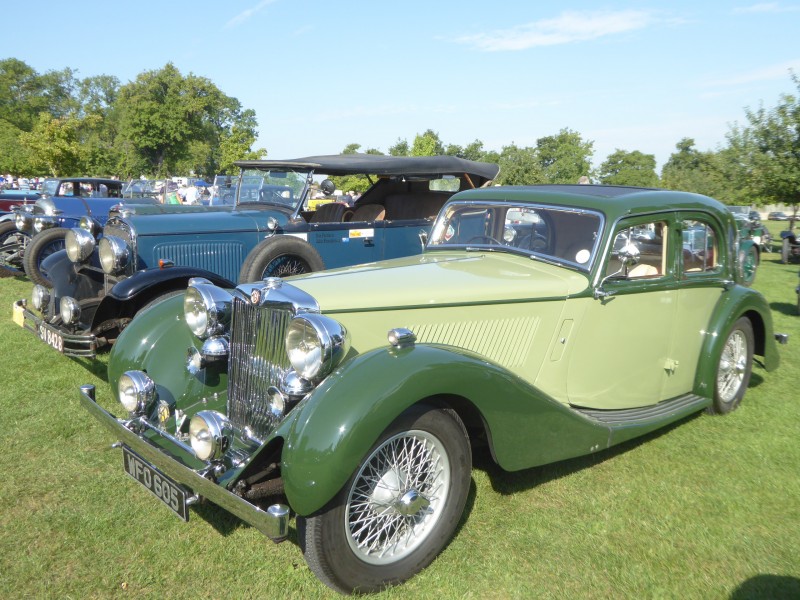
.jpg?width=180&height=120&fit=bounds)
.jpg?width=180&height=120&fit=bounds)
.jpg?width=180&height=120&fit=bounds)
.jpg?width=180&height=120&fit=bounds)
.jpg?width=180&height=160&fit=bounds)
.jpg?width=180&height=120&fit=bounds)
.jpg?width=180&height=120&fit=bounds)
.jpg?width=180&height=120&fit=bounds)
.jpg?width=180&height=120&fit=bounds)
.jpg?width=180&height=120&fit=bounds)
.jpg?width=180&height=120&fit=bounds)
.jpg?width=180&height=160&fit=bounds)
.jpg?width=180&height=120&fit=bounds)
.jpg?width=180&height=120&fit=bounds)
.jpg?width=180&height=120&fit=bounds)
.jpg?width=180&height=120&fit=bounds)
.jpg?width=180&height=120&fit=bounds)
.jpg?width=180&height=120&fit=bounds)
.jpg?width=180&height=120&fit=bounds)
.jpg?width=180&height=120&fit=bounds)
.jpg?width=180&height=120&fit=bounds)
.jpg?width=180&height=120&fit=bounds)
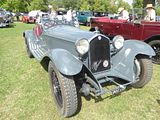
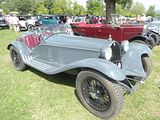
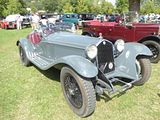
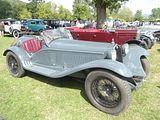
.jpg?width=180&height=160&fit=bounds)
.jpg?width=180&height=160&fit=bounds)
.jpg?width=180&height=120&fit=bounds)
.jpg?width=180&height=120&fit=bounds)
.jpg?width=180&height=120&fit=bounds)
.jpg?width=180&height=120&fit=bounds)
.jpg?width=180&height=120&fit=bounds)
.jpg?width=180&height=120&fit=bounds)
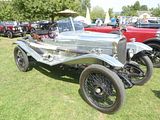
.jpg?width=180&height=120&fit=bounds)
.jpg?width=180&height=120&fit=bounds)
.jpg?width=180&height=160&fit=bounds)
.jpg?width=180&height=160&fit=bounds)
.jpg?width=180&height=120&fit=bounds)
.jpg?width=180&height=120&fit=bounds)
.jpg?width=180&height=120&fit=bounds)
.jpg?width=180&height=120&fit=bounds)
.jpg?width=180&height=160&fit=bounds)
.jpg?width=180&height=120&fit=bounds)
.jpg?width=180&height=120&fit=bounds)
.jpg?width=180&height=120&fit=bounds)
.jpg?width=180&height=120&fit=bounds)
.jpg?width=180&height=120&fit=bounds)
.jpg?width=180&height=120&fit=bounds)
.jpg?width=180&height=160&fit=bounds)
.jpg?width=180&height=160&fit=bounds)
.jpg?width=180&height=160&fit=bounds)
.jpg?width=180&height=120&fit=bounds)
.jpg?width=180&height=120&fit=bounds)
.jpg?width=180&height=120&fit=bounds)
.jpg?width=180&height=120&fit=bounds)
.jpg?width=180&height=120&fit=bounds)
.jpg?width=180&height=120&fit=bounds)
.jpg?width=180&height=120&fit=bounds)
.jpg?width=180&height=120&fit=bounds)
.jpg?width=180&height=120&fit=bounds)
.jpg?width=180&height=160&fit=bounds)
.jpg?width=180&height=160&fit=bounds)
.jpg?width=180&height=160&fit=bounds)
.jpg?width=180&height=120&fit=bounds)
.jpg?width=180&height=120&fit=bounds)
.jpg?width=180&height=120&fit=bounds)
.jpg?width=180&height=160&fit=bounds)
.jpg?width=180&height=160&fit=bounds)
.jpg?width=180&height=160&fit=bounds)
.jpg?width=180&height=160&fit=bounds)
.jpg?width=180&height=160&fit=bounds)
.jpg?width=180&height=120&fit=bounds)
.jpg?width=180&height=120&fit=bounds)
.jpg?width=180&height=120&fit=bounds)
.jpg?width=180&height=120&fit=bounds)
.jpg?width=180&height=120&fit=bounds)
.jpg?width=180&height=120&fit=bounds)
.jpg?width=180&height=120&fit=bounds)
.jpg?width=180&height=120&fit=bounds)
.jpg?width=180&height=120&fit=bounds)
.jpg?width=180&height=120&fit=bounds)
.jpg?width=180&height=120&fit=bounds)
.jpg?width=180&height=120&fit=bounds)
.jpg?width=180&height=120&fit=bounds)
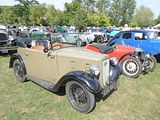
.jpg?width=180&height=120&fit=bounds)
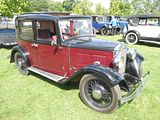
.jpg?width=180&height=160&fit=bounds)
.jpg?width=180&height=120&fit=bounds)
.jpg?width=180&height=120&fit=bounds)
.jpg?width=180&height=160&fit=bounds)
.jpg?width=180&height=160&fit=bounds)
.jpg?width=180&height=160&fit=bounds)
.jpg?width=180&height=160&fit=bounds)
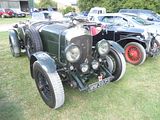
.jpg?width=180&height=120&fit=bounds)
.jpg?width=180&height=120&fit=bounds)
.jpg?width=180&height=120&fit=bounds)
.jpg?width=180&height=120&fit=bounds)
.jpg?width=180&height=120&fit=bounds)
.jpg?width=180&height=120&fit=bounds)
.jpg?width=180&height=160&fit=bounds)
.jpg?width=180&height=120&fit=bounds)
.jpg?width=180&height=120&fit=bounds)
.jpg?width=180&height=120&fit=bounds)
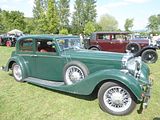
.jpg?width=180&height=120&fit=bounds)
.jpg?width=180&height=120&fit=bounds)
.jpg?width=180&height=120&fit=bounds)
.jpg?width=180&height=120&fit=bounds)
.jpg?width=180&height=120&fit=bounds)
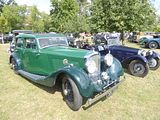
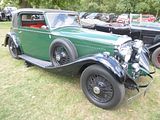
.jpg?width=180&height=120&fit=bounds)
.jpg?width=180&height=120&fit=bounds)
.jpg?width=180&height=120&fit=bounds)
.jpg?width=180&height=120&fit=bounds)
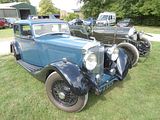
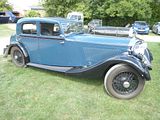
.jpg?width=180&height=120&fit=bounds)

.jpg?width=180&height=120&fit=bounds)
.jpg?width=180&height=120&fit=bounds)
.jpg?width=180&height=120&fit=bounds)
.jpg?width=180&height=160&fit=bounds)
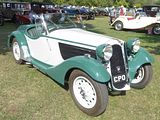
.jpg?width=180&height=120&fit=bounds)
.jpg?width=180&height=120&fit=bounds)
.jpg?width=180&height=120&fit=bounds)
.jpg?width=180&height=120&fit=bounds)
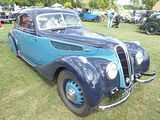
.jpg?width=180&height=160&fit=bounds)
.jpg?width=180&height=120&fit=bounds)
.jpg?width=180&height=120&fit=bounds)
.jpg?width=180&height=120&fit=bounds)
.jpg?width=180&height=120&fit=bounds)
.jpg?width=180&height=120&fit=bounds)
.jpg?width=180&height=160&fit=bounds)
.jpg?width=180&height=160&fit=bounds)
.jpg?width=180&height=120&fit=bounds)
.jpg?width=180&height=120&fit=bounds)
.jpg?width=180&height=160&fit=bounds)
.jpg?width=180&height=120&fit=bounds)
.jpg?width=180&height=120&fit=bounds)
.jpg?width=180&height=120&fit=bounds)
.jpg?width=180&height=120&fit=bounds)
.jpg?width=180&height=120&fit=bounds)
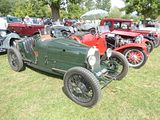
.jpg?width=180&height=120&fit=bounds)
.jpg?width=180&height=120&fit=bounds)
.jpg?width=180&height=160&fit=bounds)
.jpg?width=180&height=120&fit=bounds)
.jpg?width=180&height=160&fit=bounds)
.jpg?width=180&height=120&fit=bounds)
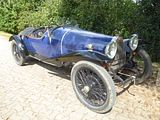
.jpg?width=180&height=120&fit=bounds)
.jpg?width=180&height=120&fit=bounds)
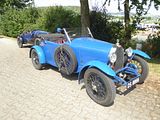
.jpg?width=180&height=160&fit=bounds)
.jpg?width=180&height=120&fit=bounds)
.jpg?width=180&height=120&fit=bounds)
.jpg?width=180&height=120&fit=bounds)
.jpg?width=180&height=120&fit=bounds)
.jpg?width=180&height=120&fit=bounds)
.jpg?width=180&height=120&fit=bounds)
.jpg?width=180&height=120&fit=bounds)
.jpg?width=180&height=120&fit=bounds)
.jpg?width=180&height=120&fit=bounds)
.jpg?width=180&height=120&fit=bounds)
.jpg?width=180&height=160&fit=bounds)
.jpg?width=180&height=160&fit=bounds)
.jpg?width=180&height=120&fit=bounds)
.jpg?width=180&height=120&fit=bounds)
.jpg?width=180&height=120&fit=bounds)
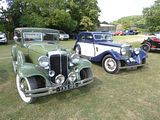

.jpg?width=180&height=160&fit=bounds)
.jpg?width=180&height=160&fit=bounds)
.jpg?width=180&height=120&fit=bounds)
.jpg?width=180&height=120&fit=bounds)
.jpg?width=180&height=120&fit=bounds)
.jpg?width=180&height=120&fit=bounds)
.jpg?width=180&height=120&fit=bounds)
.jpg?width=180&height=120&fit=bounds)
.jpg?width=180&height=120&fit=bounds)
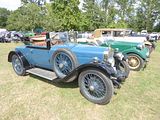
.jpg?width=180&height=120&fit=bounds)
.jpg?width=180&height=120&fit=bounds)
.jpg?width=180&height=120&fit=bounds)
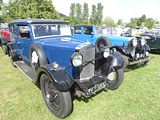
.jpg?width=180&height=120&fit=bounds)
.jpg?width=180&height=120&fit=bounds)
.jpg?width=180&height=120&fit=bounds)
.jpg?width=180&height=160&fit=bounds)
.jpg?width=180&height=160&fit=bounds)
.jpg?width=180&height=120&fit=bounds)
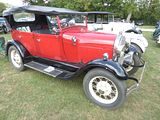
.jpg?width=180&height=120&fit=bounds)
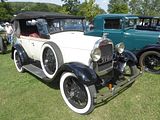
.jpg?width=180&height=120&fit=bounds)
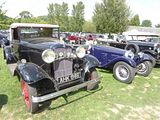
.jpg?width=180&height=160&fit=bounds)
.jpg?width=180&height=120&fit=bounds)
.jpg?width=180&height=120&fit=bounds)
.jpg?width=180&height=120&fit=bounds)

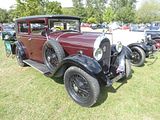
.jpg?width=180&height=120&fit=bounds)
.jpg?width=180&height=120&fit=bounds)
.jpg?width=180&height=120&fit=bounds)
.jpg?width=180&height=120&fit=bounds)
.jpg?width=180&height=120&fit=bounds)
.jpg?width=180&height=120&fit=bounds)
.jpg?width=180&height=120&fit=bounds)
.jpg?width=180&height=120&fit=bounds)
.jpg?width=180&height=160&fit=bounds)
.jpg?width=180&height=120&fit=bounds)
.jpg?width=180&height=120&fit=bounds)
.jpg?width=180&height=120&fit=bounds)
.jpg?width=180&height=120&fit=bounds)
.jpg?width=180&height=120&fit=bounds)
.jpg?width=180&height=120&fit=bounds)
.jpg?width=180&height=120&fit=bounds)
.jpg?width=180&height=120&fit=bounds)
.jpg?width=180&height=120&fit=bounds)
.jpg?width=180&height=120&fit=bounds)
.jpg?width=180&height=120&fit=bounds)
.jpg?width=180&height=120&fit=bounds)
.jpg?width=180&height=120&fit=bounds)
.jpg?width=180&height=120&fit=bounds)
.jpg?width=180&height=120&fit=bounds)
.jpg?width=180&height=120&fit=bounds)
.jpg?width=180&height=120&fit=bounds)
.jpg?width=180&height=120&fit=bounds)
.jpg?width=180&height=120&fit=bounds)
.jpg?width=180&height=120&fit=bounds)
.jpg?width=180&height=120&fit=bounds)
.jpg?width=180&height=120&fit=bounds)
.jpg?width=180&height=160&fit=bounds)
.jpg?width=180&height=160&fit=bounds)
.jpg?width=180&height=160&fit=bounds)
.jpg?width=180&height=120&fit=bounds)
.jpg?width=180&height=120&fit=bounds)
.jpg?width=180&height=120&fit=bounds)
.jpg?width=180&height=120&fit=bounds)
.jpg?width=180&height=120&fit=bounds)
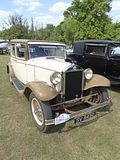
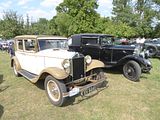
.jpg?width=180&height=120&fit=bounds)
.jpg?width=180&height=120&fit=bounds)
.jpg?width=180&height=160&fit=bounds)
.jpg?width=180&height=120&fit=bounds)
.jpg?width=180&height=120&fit=bounds)
.jpg?width=180&height=120&fit=bounds)
.jpg?width=180&height=120&fit=bounds)
.jpg?width=180&height=120&fit=bounds)
.jpg?width=180&height=120&fit=bounds)
.jpg?width=180&height=120&fit=bounds)
.jpg?width=180&height=120&fit=bounds)
.jpg?width=180&height=160&fit=bounds)
.jpg?width=180&height=120&fit=bounds)
.jpg?width=180&height=120&fit=bounds)
.jpg?width=180&height=120&fit=bounds)
.jpg?width=180&height=120&fit=bounds)
.jpg?width=180&height=120&fit=bounds)
.jpg?width=180&height=120&fit=bounds)
.jpg?width=180&height=120&fit=bounds)
.jpg?width=180&height=120&fit=bounds)
.jpg?width=180&height=120&fit=bounds)
.jpg?width=180&height=160&fit=bounds)
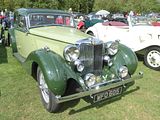
.jpg?width=180&height=120&fit=bounds)
.jpg?width=180&height=120&fit=bounds)
.jpg?width=180&height=120&fit=bounds)
.jpg?width=180&height=160&fit=bounds)
.jpg?width=180&height=160&fit=bounds)
.jpg?width=180&height=120&fit=bounds)
.jpg?width=180&height=160&fit=bounds)
.jpg?width=180&height=120&fit=bounds)
.jpg?width=180&height=120&fit=bounds)
.jpg?width=180&height=160&fit=bounds)
.jpg?width=180&height=120&fit=bounds)
.jpg?width=180&height=120&fit=bounds)
.jpg?width=180&height=120&fit=bounds)
.jpg?width=180&height=120&fit=bounds)
.jpg?width=180&height=160&fit=bounds)
.jpg?width=180&height=160&fit=bounds)
.jpg?width=180&height=160&fit=bounds)
.jpg?width=180&height=120&fit=bounds)
.jpg?width=180&height=120&fit=bounds)
.jpg?width=180&height=160&fit=bounds)
.jpg?width=180&height=160&fit=bounds)
.jpg?width=180&height=160&fit=bounds)
.jpg?width=180&height=160&fit=bounds)
.jpg?width=180&height=120&fit=bounds)
.jpg?width=180&height=120&fit=bounds)
.jpg?width=180&height=120&fit=bounds)
.jpg?width=180&height=160&fit=bounds)
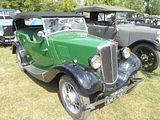
.jpg?width=180&height=120&fit=bounds)
.jpg?width=180&height=160&fit=bounds)
.jpg?width=180&height=120&fit=bounds)
.jpg?width=180&height=160&fit=bounds)
.jpg?width=180&height=120&fit=bounds)
.jpg?width=180&height=160&fit=bounds)
.jpg?width=180&height=160&fit=bounds)
.jpg?width=180&height=160&fit=bounds)
.jpg?width=180&height=120&fit=bounds)
.jpg?width=180&height=120&fit=bounds)
.jpg?width=180&height=120&fit=bounds)
.jpg?width=180&height=120&fit=bounds)
.jpg?width=180&height=120&fit=bounds)
.jpg?width=180&height=120&fit=bounds)
.jpg?width=180&height=120&fit=bounds)
.jpg?width=180&height=120&fit=bounds)
.jpg?width=180&height=120&fit=bounds)
.jpg?width=180&height=120&fit=bounds)
.jpg?width=180&height=120&fit=bounds)
.jpg?width=180&height=120&fit=bounds)
.jpg?width=180&height=160&fit=bounds)
.jpg?width=180&height=160&fit=bounds)
.jpg?width=180&height=160&fit=bounds)
.jpg?width=180&height=160&fit=bounds)
.jpg?width=180&height=160&fit=bounds)
.jpg?width=180&height=160&fit=bounds)
.jpg?width=180&height=160&fit=bounds)
.jpg?width=180&height=160&fit=bounds)
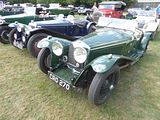
.jpg?width=180&height=120&fit=bounds)
.jpg?width=180&height=120&fit=bounds)
.jpg?width=180&height=120&fit=bounds)
.jpg?width=180&height=120&fit=bounds)
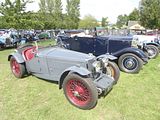
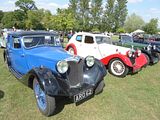
.jpg?width=180&height=120&fit=bounds)
.jpg?width=180&height=120&fit=bounds)
.jpg?width=180&height=120&fit=bounds)
.jpg?width=180&height=120&fit=bounds)
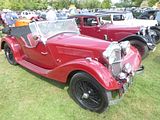
.jpg?width=180&height=120&fit=bounds)
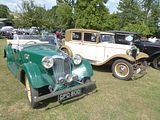
.jpg?width=180&height=120&fit=bounds)
.jpg?width=180&height=120&fit=bounds)
.jpg?width=180&height=120&fit=bounds)
.jpg?width=180&height=120&fit=bounds)
.jpg?width=180&height=120&fit=bounds)
.jpg?width=180&height=120&fit=bounds)
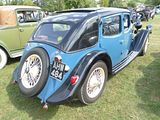
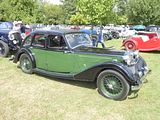
.jpg?width=180&height=120&fit=bounds)
.jpg?width=180&height=120&fit=bounds)
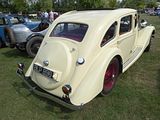
.jpg?width=180&height=120&fit=bounds)
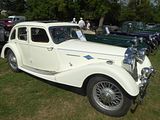
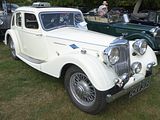
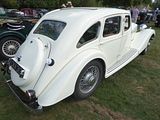
.jpg?width=180&height=120&fit=bounds)
.jpg?width=180&height=120&fit=bounds)
.jpg?width=180&height=120&fit=bounds)
.jpg?width=180&height=120&fit=bounds)
.jpg?width=180&height=160&fit=bounds)
.jpg?width=180&height=160&fit=bounds)
.jpg?width=180&height=160&fit=bounds)
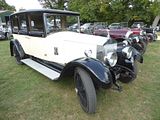
.jpg?width=180&height=120&fit=bounds)
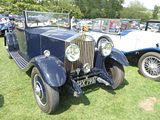
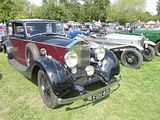
.jpg?width=180&height=160&fit=bounds)
.jpg?width=180&height=120&fit=bounds)
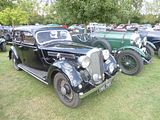
.jpg?width=180&height=120&fit=bounds)
.jpg?width=180&height=120&fit=bounds)
.jpg?width=180&height=120&fit=bounds)
.jpg?width=180&height=160&fit=bounds)
.jpg?width=180&height=120&fit=bounds)
.jpg?width=180&height=160&fit=bounds)
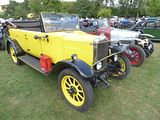
.jpg?width=180&height=160&fit=bounds)
.jpg?width=180&height=160&fit=bounds)
.jpg?width=180&height=120&fit=bounds)
.jpg?width=180&height=120&fit=bounds)
.jpg?width=180&height=120&fit=bounds)
.jpg?width=180&height=120&fit=bounds)
.jpg?width=180&height=120&fit=bounds)
.jpg?width=180&height=120&fit=bounds)
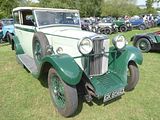
.jpg?width=180&height=160&fit=bounds)
.jpg?width=180&height=160&fit=bounds)
.jpg?width=180&height=120&fit=bounds)
.jpg?width=180&height=120&fit=bounds)
.jpg?width=180&height=120&fit=bounds)
.jpg?width=180&height=120&fit=bounds)
.jpg?width=180&height=160&fit=bounds)
.jpg?width=180&height=160&fit=bounds)
.jpg?width=180&height=120&fit=bounds)
.jpg?width=180&height=120&fit=bounds)
.jpg?width=180&height=120&fit=bounds)
.jpg?width=180&height=120&fit=bounds)
.jpg?width=180&height=120&fit=bounds)
.jpg?width=180&height=120&fit=bounds)
.jpg?width=180&height=120&fit=bounds)
.jpg?width=180&height=120&fit=bounds)
.jpg?width=180&height=120&fit=bounds)
.jpg?width=180&height=120&fit=bounds)
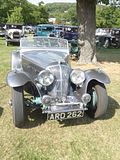
.jpg?width=180&height=160&fit=bounds)
.jpg?width=180&height=160&fit=bounds)
.jpg?width=180&height=120&fit=bounds)
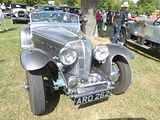
.jpg?width=180&height=160&fit=bounds)
.jpg?width=180&height=160&fit=bounds)
.jpg?width=180&height=120&fit=bounds)
.jpg?width=180&height=120&fit=bounds)
.jpg?width=180&height=120&fit=bounds)
.jpg?width=180&height=120&fit=bounds)
.jpg?width=180&height=120&fit=bounds)
.jpg?width=180&height=120&fit=bounds)
.jpg?width=180&height=120&fit=bounds)
.jpg?width=180&height=120&fit=bounds)
.jpg?width=180&height=120&fit=bounds)
.jpg?width=180&height=120&fit=bounds)
.jpg?width=180&height=120&fit=bounds)
.jpg?width=180&height=120&fit=bounds)
.jpg?width=180&height=120&fit=bounds)
.jpg?width=180&height=120&fit=bounds)
.jpg?width=180&height=120&fit=bounds)
.jpg?width=180&height=120&fit=bounds)
.jpg?width=180&height=120&fit=bounds)
.jpg?width=180&height=120&fit=bounds)
.jpg?width=180&height=120&fit=bounds)
.jpg?width=180&height=120&fit=bounds)
.jpg?width=180&height=120&fit=bounds)
.jpg?width=180&height=120&fit=bounds)
.jpg?width=180&height=120&fit=bounds)
.jpg?width=180&height=120&fit=bounds)
.jpg?width=180&height=120&fit=bounds)
.jpg?width=180&height=160&fit=bounds)
.jpg?width=180&height=160&fit=bounds)
.jpg?width=180&height=160&fit=bounds)
.jpg?width=180&height=160&fit=bounds)
.jpg?width=180&height=120&fit=bounds)
.jpg?width=180&height=120&fit=bounds)
.jpg?width=180&height=120&fit=bounds)
.jpg?width=180&height=120&fit=bounds)
.jpg?width=180&height=120&fit=bounds)
.jpg?width=180&height=120&fit=bounds)
.jpg?width=180&height=120&fit=bounds)
.jpg?width=180&height=120&fit=bounds)
.jpg?width=180&height=120&fit=bounds)
.jpg?width=180&height=120&fit=bounds)
.jpg?width=180&height=120&fit=bounds)
.jpg?width=180&height=120&fit=bounds)
.jpg?width=180&height=160&fit=bounds)
.jpg?width=180&height=120&fit=bounds)
.jpg?width=180&height=120&fit=bounds)
.jpg?width=180&height=120&fit=bounds)
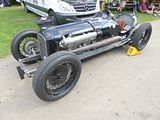
.jpg?width=180&height=160&fit=bounds)
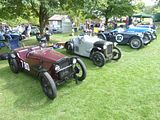
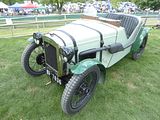
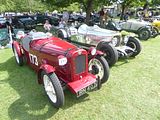
.jpg?width=180&height=120&fit=bounds)
.jpg?width=180&height=120&fit=bounds)
.jpg?width=180&height=120&fit=bounds)
.jpg?width=180&height=120&fit=bounds)
.jpg?width=180&height=120&fit=bounds)
.jpg?width=180&height=120&fit=bounds)
.jpg?width=180&height=120&fit=bounds)
.jpg?width=180&height=120&fit=bounds)
.jpg?width=180&height=120&fit=bounds)
.jpg?width=180&height=120&fit=bounds)
.jpg?width=180&height=120&fit=bounds)
.jpg?width=180&height=120&fit=bounds)
.jpg?width=180&height=120&fit=bounds)
.jpg?width=180&height=120&fit=bounds)
.jpg?width=180&height=120&fit=bounds)
.jpg?width=180&height=120&fit=bounds)
.jpg?width=180&height=120&fit=bounds)
.jpg?width=180&height=120&fit=bounds)
.jpg?width=180&height=120&fit=bounds)
.jpg?width=180&height=120&fit=bounds)
.jpg?width=180&height=120&fit=bounds)
.jpg?width=180&height=120&fit=bounds)
.jpg?width=180&height=120&fit=bounds)
.jpg?width=180&height=120&fit=bounds)
.jpg?width=180&height=120&fit=bounds)
.jpg?width=180&height=120&fit=bounds)
.jpg?width=180&height=120&fit=bounds)
.jpg?width=180&height=160&fit=bounds)
.jpg?width=180&height=120&fit=bounds)
.jpg?width=180&height=120&fit=bounds)
.jpg?width=180&height=120&fit=bounds)
.jpg?width=180&height=120&fit=bounds)
.jpg?width=180&height=120&fit=bounds)
.jpg?width=180&height=120&fit=bounds)
.jpg?width=180&height=120&fit=bounds)
.jpg?width=180&height=160&fit=bounds)
.jpg?width=180&height=160&fit=bounds)
.jpg?width=180&height=120&fit=bounds)
.jpg?width=180&height=120&fit=bounds)
.jpg?width=180&height=120&fit=bounds)
.jpg?width=180&height=120&fit=bounds)
.jpg?width=180&height=120&fit=bounds)
.jpg?width=180&height=120&fit=bounds)
.jpg?width=180&height=120&fit=bounds)
.jpg?width=180&height=120&fit=bounds)
.jpg?width=180&height=120&fit=bounds)
.jpg?width=180&height=120&fit=bounds)
.jpg?width=180&height=120&fit=bounds)
.jpg?width=180&height=120&fit=bounds)
.jpg?width=180&height=160&fit=bounds)
.jpg?width=180&height=120&fit=bounds)
.jpg?width=180&height=120&fit=bounds)
.jpg?width=180&height=120&fit=bounds)
.jpg?width=180&height=120&fit=bounds)
.jpg?width=180&height=120&fit=bounds)
.jpg?width=180&height=120&fit=bounds)
.jpg?width=180&height=120&fit=bounds)
.jpg?width=180&height=120&fit=bounds)
.jpg?width=180&height=120&fit=bounds)
.jpg?width=180&height=120&fit=bounds)
.jpg?width=180&height=120&fit=bounds)
.jpg?width=180&height=120&fit=bounds)
.jpg?width=180&height=120&fit=bounds)
.jpg?width=180&height=120&fit=bounds)
.jpg?width=180&height=120&fit=bounds)
.jpg?width=180&height=120&fit=bounds)
.jpg?width=180&height=120&fit=bounds)
.jpg?width=180&height=120&fit=bounds)
.jpg?width=180&height=120&fit=bounds)
.jpg?width=180&height=120&fit=bounds)
.jpg?width=180&height=120&fit=bounds)
.jpg?width=180&height=120&fit=bounds)
.jpg?width=180&height=120&fit=bounds)
.jpg?width=180&height=120&fit=bounds)
.jpg?width=180&height=120&fit=bounds)
.jpg?width=180&height=120&fit=bounds)
.jpg?width=180&height=120&fit=bounds)
.jpg?width=180&height=120&fit=bounds)
.jpg?width=180&height=120&fit=bounds)
.jpg?width=180&height=120&fit=bounds)
.jpg?width=180&height=120&fit=bounds)
.jpg?width=180&height=120&fit=bounds)
.jpg?width=180&height=120&fit=bounds)
.jpg?width=180&height=120&fit=bounds)
.jpg?width=180&height=120&fit=bounds)
.jpg?width=180&height=120&fit=bounds)
.jpg?width=180&height=120&fit=bounds)
.jpg?width=180&height=120&fit=bounds)
.jpg?width=180&height=120&fit=bounds)
.jpg?width=180&height=120&fit=bounds)
.jpg?width=180&height=120&fit=bounds)
.jpg?width=180&height=160&fit=bounds)
.jpg?width=180&height=120&fit=bounds)

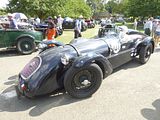
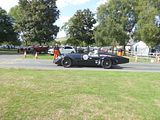
.jpg?width=180&height=120&fit=bounds)
.jpg?width=180&height=120&fit=bounds)
.jpg?width=180&height=120&fit=bounds)
.jpg?width=180&height=120&fit=bounds)
.jpg?width=180&height=120&fit=bounds)
.jpg?width=180&height=120&fit=bounds)
.jpg?width=180&height=120&fit=bounds)
.jpg?width=180&height=160&fit=bounds)
.jpg?width=180&height=120&fit=bounds)
.jpg?width=180&height=120&fit=bounds)
.jpg?width=180&height=120&fit=bounds)
.jpg?width=180&height=120&fit=bounds)
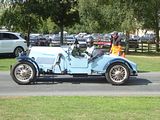
.jpg?width=180&height=160&fit=bounds)
.jpg?width=180&height=160&fit=bounds)
.jpg?width=180&height=120&fit=bounds)
.jpg?width=180&height=120&fit=bounds)
.jpg?width=180&height=120&fit=bounds)
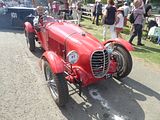
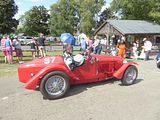
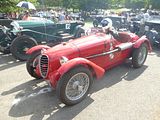
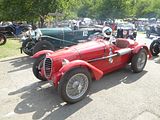
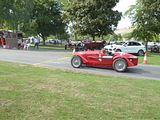
.jpg?width=180&height=120&fit=bounds)
.jpg?width=180&height=120&fit=bounds)
.jpg?width=180&height=120&fit=bounds)
.jpg?width=180&height=120&fit=bounds)
.jpg?width=180&height=120&fit=bounds)
.jpg?width=180&height=120&fit=bounds)
.jpg?width=180&height=120&fit=bounds)
.jpg?width=180&height=120&fit=bounds)
.jpg?width=180&height=120&fit=bounds)
.jpg?width=180&height=120&fit=bounds)
.jpg?width=180&height=120&fit=bounds)
.jpg?width=180&height=120&fit=bounds)
.jpg?width=180&height=120&fit=bounds)
.jpg?width=180&height=120&fit=bounds)
.jpg?width=180&height=120&fit=bounds)
.jpg?width=180&height=120&fit=bounds)
.jpg?width=180&height=120&fit=bounds)
.jpg?width=180&height=120&fit=bounds)
.jpg?width=180&height=120&fit=bounds)
.jpg?width=180&height=120&fit=bounds)
.jpg?width=180&height=120&fit=bounds)
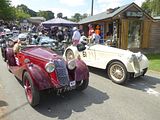
.jpg?width=180&height=160&fit=bounds)
.jpg?width=180&height=160&fit=bounds)
.jpg?width=180&height=120&fit=bounds)
.jpg?width=180&height=120&fit=bounds)
.jpg?width=180&height=120&fit=bounds)
.jpg?width=180&height=120&fit=bounds)
.jpg?width=180&height=120&fit=bounds)
.jpg?width=180&height=160&fit=bounds)
.jpg?width=180&height=120&fit=bounds)
.jpg?width=180&height=120&fit=bounds)
.jpg?width=180&height=120&fit=bounds)
.jpg?width=180&height=120&fit=bounds)
.jpg?width=180&height=120&fit=bounds)
.jpg?width=180&height=120&fit=bounds)
.jpg?width=180&height=120&fit=bounds)
.jpg?width=180&height=120&fit=bounds)
.jpg?width=180&height=160&fit=bounds)
.jpg?width=180&height=120&fit=bounds)
.jpg?width=180&height=120&fit=bounds)
.jpg?width=180&height=160&fit=bounds)
.jpg?width=180&height=120&fit=bounds)
.jpg?width=180&height=120&fit=bounds)
.jpg?width=180&height=120&fit=bounds)
.jpg?width=180&height=120&fit=bounds)
.jpg?width=180&height=120&fit=bounds)
.jpg?width=180&height=120&fit=bounds)
.jpg?width=180&height=120&fit=bounds)
.jpg?width=180&height=120&fit=bounds)
.jpg?width=180&height=120&fit=bounds)
.jpg?width=180&height=120&fit=bounds)
.jpg?width=180&height=120&fit=bounds)
.jpg?width=180&height=120&fit=bounds)
.jpg?width=180&height=120&fit=bounds)
.jpg?width=180&height=120&fit=bounds)
.jpg?width=180&height=160&fit=bounds)
.jpg?width=180&height=120&fit=bounds)
.jpg?width=180&height=120&fit=bounds)
.jpg?width=180&height=120&fit=bounds)
.jpg?width=180&height=120&fit=bounds)
.jpg?width=180&height=120&fit=bounds)
.jpg?width=180&height=120&fit=bounds)
.jpg?width=180&height=120&fit=bounds)
.jpg?width=180&height=120&fit=bounds)
.jpg?width=180&height=120&fit=bounds)
.jpg?width=180&height=120&fit=bounds)
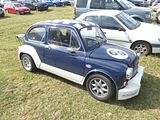
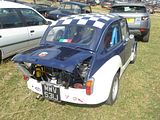
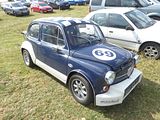
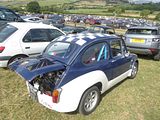
.jpg?width=180&height=120&fit=bounds)
.jpg?width=180&height=120&fit=bounds)
.jpg?width=180&height=120&fit=bounds)
.jpg?width=180&height=160&fit=bounds)
.jpg?width=180&height=120&fit=bounds)
.jpg?width=180&height=120&fit=bounds)
.jpg?width=180&height=120&fit=bounds)
.jpg?width=180&height=120&fit=bounds)
.jpg?width=180&height=120&fit=bounds)
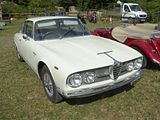
.jpg?width=180&height=160&fit=bounds)
.jpg?width=180&height=160&fit=bounds)
.jpg?width=180&height=120&fit=bounds)
.jpg?width=180&height=120&fit=bounds)
.jpg?width=180&height=120&fit=bounds)
.jpg?width=180&height=120&fit=bounds)
.jpg?width=180&height=120&fit=bounds)
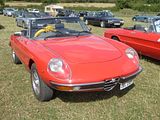
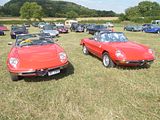
.jpg?width=180&height=120&fit=bounds)
.jpg?width=180&height=120&fit=bounds)
.jpg?width=180&height=120&fit=bounds)
.jpg?width=180&height=120&fit=bounds)
.jpg?width=180&height=120&fit=bounds)
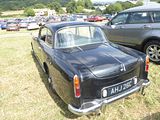
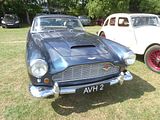
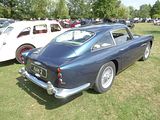
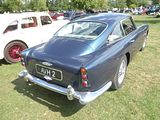
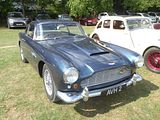
.jpg?width=180&height=120&fit=bounds)
.jpg?width=180&height=120&fit=bounds)
.jpg?width=180&height=120&fit=bounds)
.jpg?width=180&height=120&fit=bounds)
.jpg?width=180&height=120&fit=bounds)
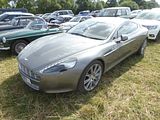
.jpg?width=180&height=120&fit=bounds)
.jpg?width=180&height=120&fit=bounds)
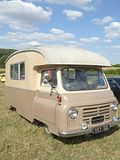
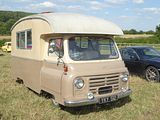
.jpg?width=180&height=120&fit=bounds)
.jpg?width=180&height=120&fit=bounds)
.jpg?width=180&height=120&fit=bounds)
.jpg?width=180&height=120&fit=bounds)
.jpg?width=180&height=120&fit=bounds)
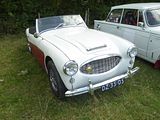
.jpg?width=180&height=120&fit=bounds)
.jpg?width=180&height=120&fit=bounds)
.jpg?width=180&height=120&fit=bounds)
.jpg?width=180&height=120&fit=bounds)
.jpg?width=180&height=120&fit=bounds)
.jpg?width=180&height=120&fit=bounds)
.jpg?width=180&height=120&fit=bounds)
.jpg?width=180&height=120&fit=bounds)
.jpg?width=180&height=120&fit=bounds)
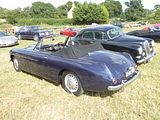
.jpg?width=180&height=120&fit=bounds)
.jpg?width=180&height=120&fit=bounds)
.jpg?width=180&height=120&fit=bounds)
.jpg?width=180&height=120&fit=bounds)
.jpg?width=180&height=120&fit=bounds)
.jpg?width=180&height=120&fit=bounds)
.jpg?width=180&height=120&fit=bounds)
.jpg?width=180&height=120&fit=bounds)
.jpg?width=180&height=120&fit=bounds)
.jpg?width=180&height=120&fit=bounds)
.jpg?width=180&height=120&fit=bounds)
.jpg?width=180&height=120&fit=bounds)
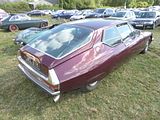
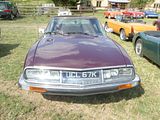
.jpg?width=180&height=120&fit=bounds)
.jpg?width=180&height=120&fit=bounds)
.jpg?width=180&height=160&fit=bounds)
.jpg?width=180&height=120&fit=bounds)
.jpg?width=180&height=120&fit=bounds)
.jpg?width=180&height=120&fit=bounds)
.jpg?width=180&height=120&fit=bounds)
.jpg?width=180&height=120&fit=bounds)
.jpg?width=180&height=120&fit=bounds)
.jpg?width=180&height=120&fit=bounds)
.jpg?width=180&height=120&fit=bounds)
.jpg?width=180&height=120&fit=bounds)
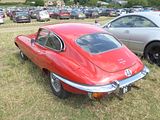
.jpg?width=180&height=120&fit=bounds)
.jpg?width=180&height=120&fit=bounds)
.jpg?width=180&height=120&fit=bounds)
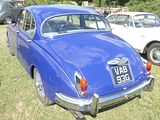
.jpg?width=180&height=120&fit=bounds)
.jpg?width=180&height=120&fit=bounds)
.jpg?width=180&height=120&fit=bounds)
.jpg?width=180&height=120&fit=bounds)
.jpg?width=180&height=120&fit=bounds)
.jpg?width=180&height=120&fit=bounds)
.jpg?width=180&height=120&fit=bounds)
.jpg?width=180&height=120&fit=bounds)
.jpg?width=180&height=120&fit=bounds)
.jpg?width=180&height=120&fit=bounds)
.jpg?width=180&height=120&fit=bounds)
.jpg?width=180&height=120&fit=bounds)
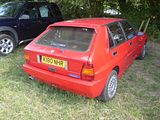
.jpg?width=180&height=120&fit=bounds)
.jpg?width=180&height=120&fit=bounds)
.jpg?width=180&height=120&fit=bounds)
.jpg?width=180&height=120&fit=bounds)
.jpg?width=180&height=120&fit=bounds)
.jpg?width=180&height=120&fit=bounds)
.jpg?width=180&height=120&fit=bounds)
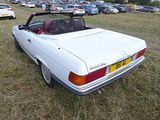
.jpg?width=180&height=160&fit=bounds)
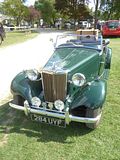
.jpg?width=180&height=120&fit=bounds)
.jpg?width=180&height=120&fit=bounds)
.jpg?width=180&height=120&fit=bounds)
.jpg?width=180&height=120&fit=bounds)
.jpg?width=180&height=120&fit=bounds)
.jpg?width=180&height=160&fit=bounds)
.jpg?width=180&height=120&fit=bounds)
.jpg?width=180&height=120&fit=bounds)
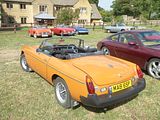
.jpg?width=180&height=120&fit=bounds)
.jpg?width=180&height=120&fit=bounds)
.jpg?width=180&height=120&fit=bounds)
.jpg?width=180&height=120&fit=bounds)
.jpg?width=180&height=120&fit=bounds)
.jpg?width=180&height=120&fit=bounds)
.jpg?width=180&height=120&fit=bounds)
.jpg?width=180&height=120&fit=bounds)
.jpg?width=180&height=120&fit=bounds)
.jpg?width=180&height=120&fit=bounds)
.jpg?width=180&height=120&fit=bounds)
.jpg?width=180&height=120&fit=bounds)
.jpg?width=180&height=120&fit=bounds)
.jpg?width=180&height=120&fit=bounds)
.jpg?width=180&height=120&fit=bounds)
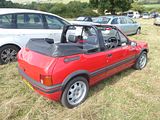
.jpg?width=180&height=120&fit=bounds)
.jpg?width=180&height=120&fit=bounds)
.jpg?width=180&height=120&fit=bounds)
.jpg?width=180&height=120&fit=bounds)
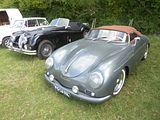
.jpg?width=180&height=120&fit=bounds)
.jpg?width=180&height=120&fit=bounds)
.jpg?width=180&height=120&fit=bounds)
.jpg?width=180&height=120&fit=bounds)
.jpg?width=180&height=120&fit=bounds)
.jpg?width=180&height=120&fit=bounds)
.jpg?width=180&height=120&fit=bounds)
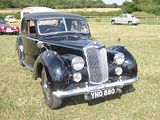
.jpg?width=180&height=120&fit=bounds)
.jpg?width=180&height=120&fit=bounds)
.jpg?width=180&height=120&fit=bounds)
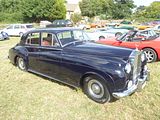
.jpg?width=180&height=120&fit=bounds)
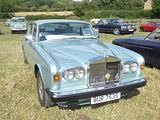
.jpg?width=180&height=120&fit=bounds)
.jpg?width=180&height=120&fit=bounds)
.jpg?width=180&height=120&fit=bounds)
.jpg?width=180&height=120&fit=bounds)
.jpg?width=180&height=120&fit=bounds)
.jpg?width=180&height=120&fit=bounds)
.jpg?width=180&height=120&fit=bounds)
.jpg?width=180&height=120&fit=bounds)
.jpg?width=180&height=120&fit=bounds)
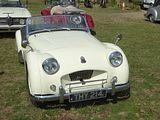
.jpg?width=180&height=120&fit=bounds)
.jpg?width=180&height=120&fit=bounds)
.jpg?width=180&height=120&fit=bounds)
.jpg?width=180&height=120&fit=bounds)
.jpg?width=180&height=120&fit=bounds)
.jpg?width=180&height=120&fit=bounds)
.jpg?width=180&height=120&fit=bounds)
.jpg?width=180&height=120&fit=bounds)
.jpg?width=180&height=120&fit=bounds)
.jpg?width=180&height=120&fit=bounds)
.jpg?width=180&height=120&fit=bounds)
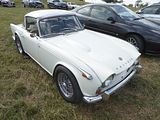
.jpg?width=180&height=160&fit=bounds)
.jpg?width=180&height=120&fit=bounds)
.jpg?width=180&height=120&fit=bounds)
.jpg?width=180&height=120&fit=bounds)
.jpg?width=180&height=120&fit=bounds)
.jpg?width=180&height=120&fit=bounds)
.jpg?width=180&height=120&fit=bounds)
.jpg?width=180&height=120&fit=bounds)
.jpg?width=180&height=120&fit=bounds)
